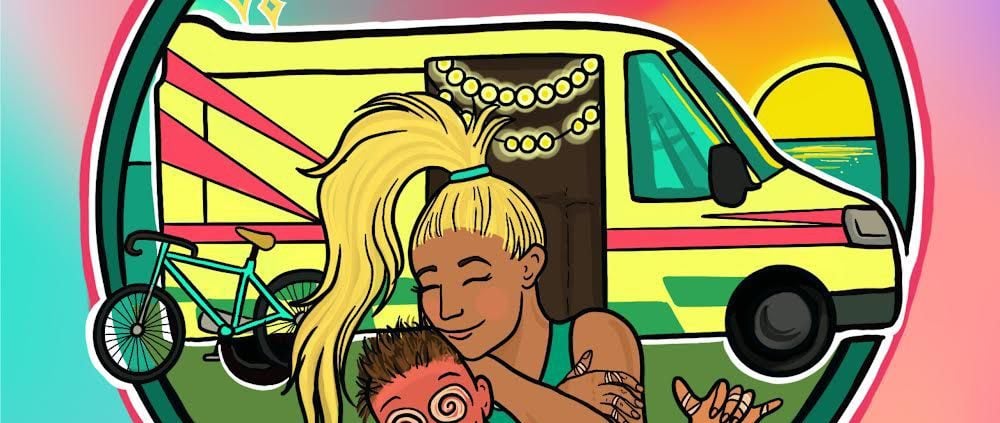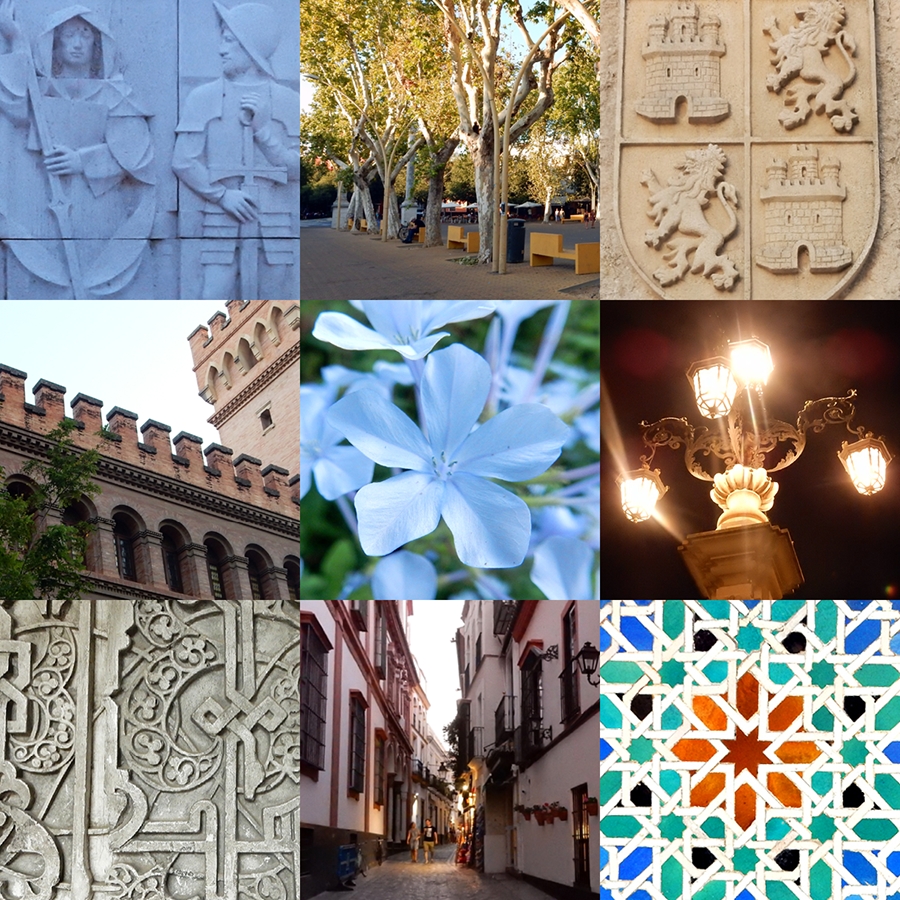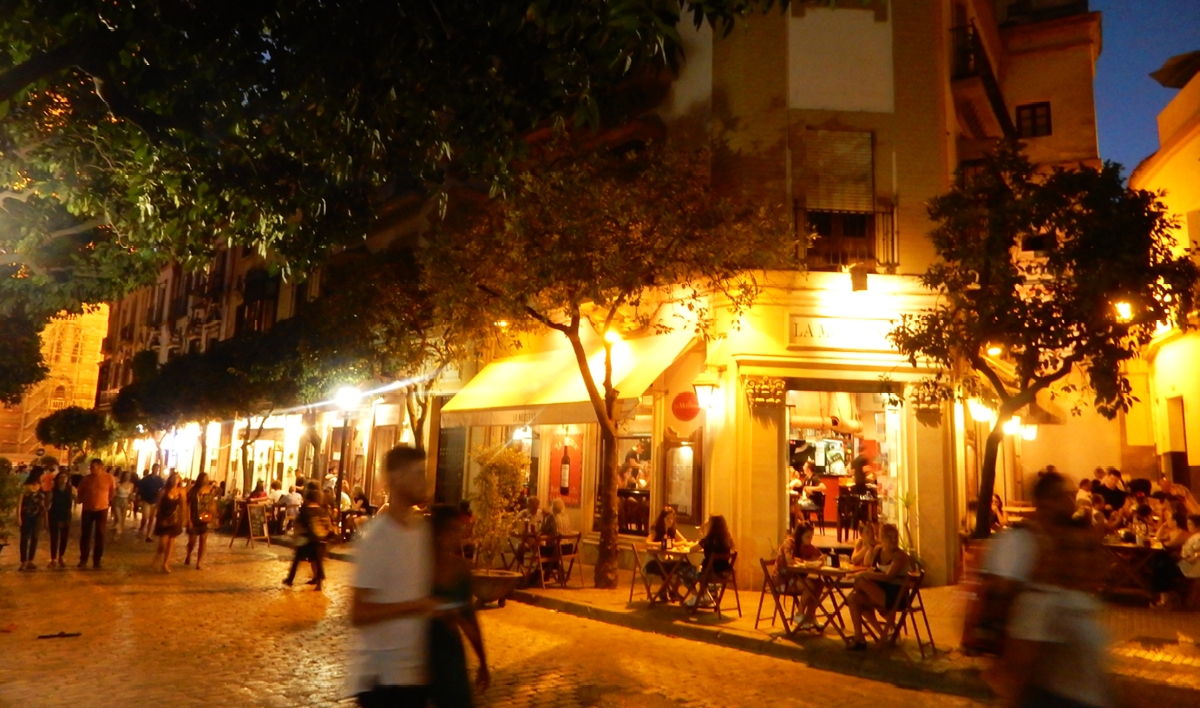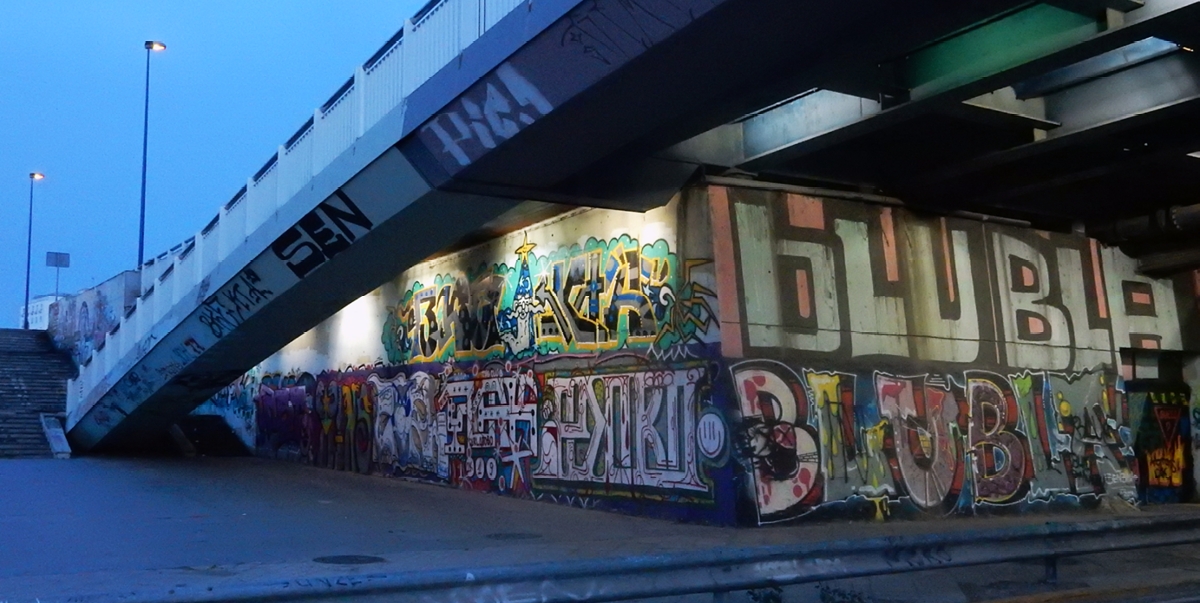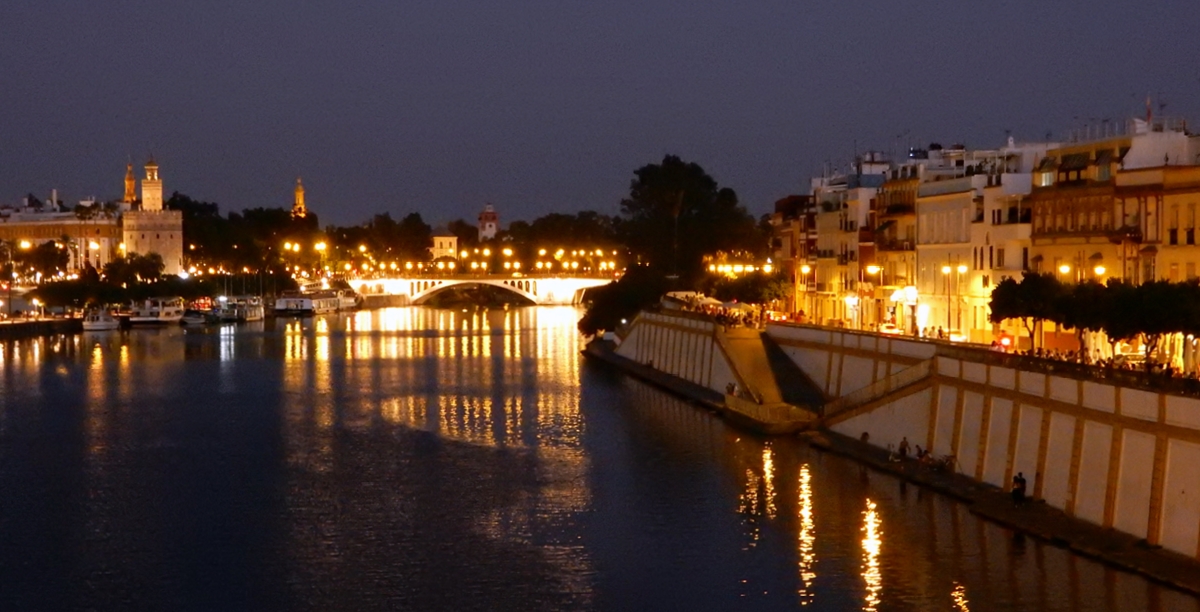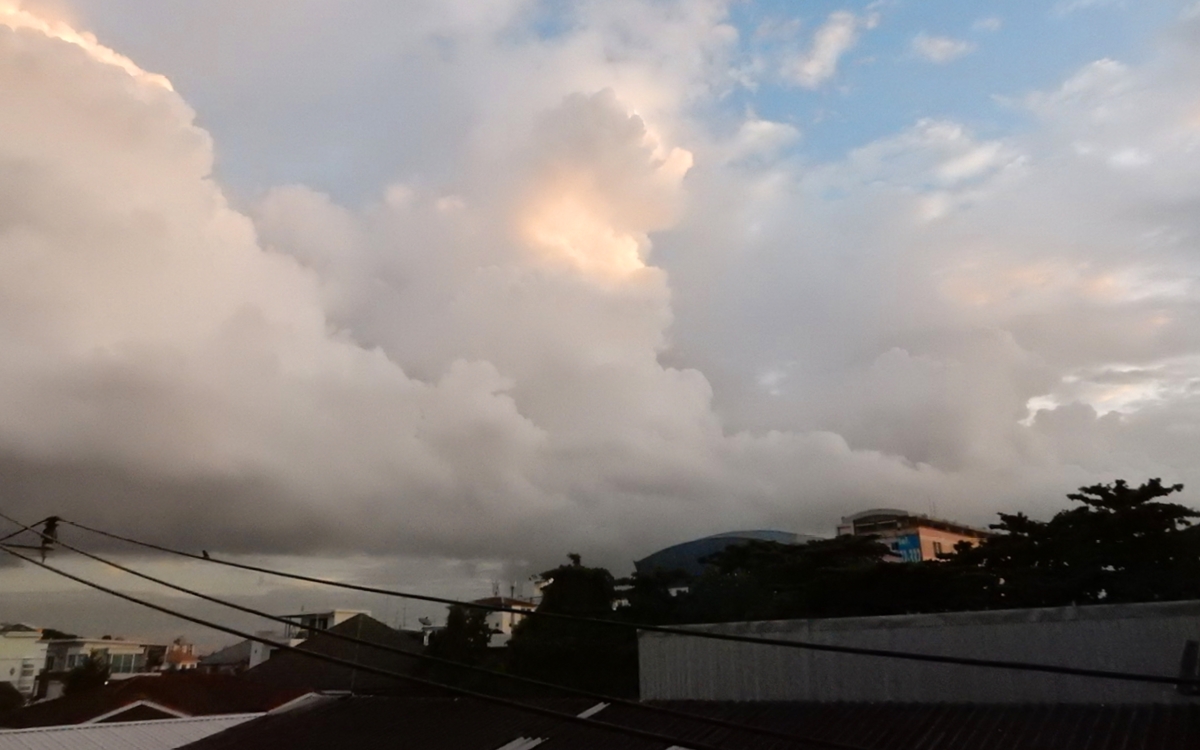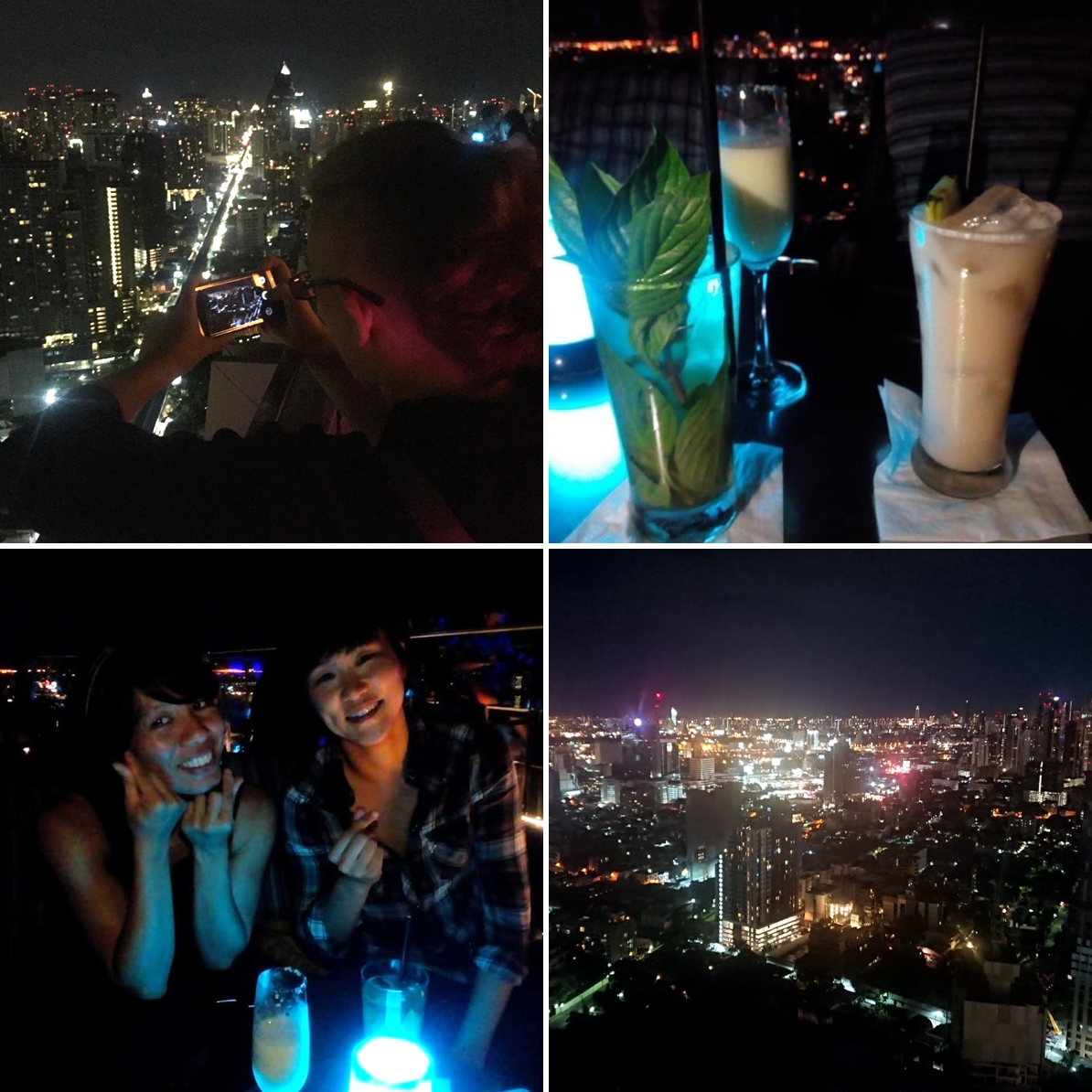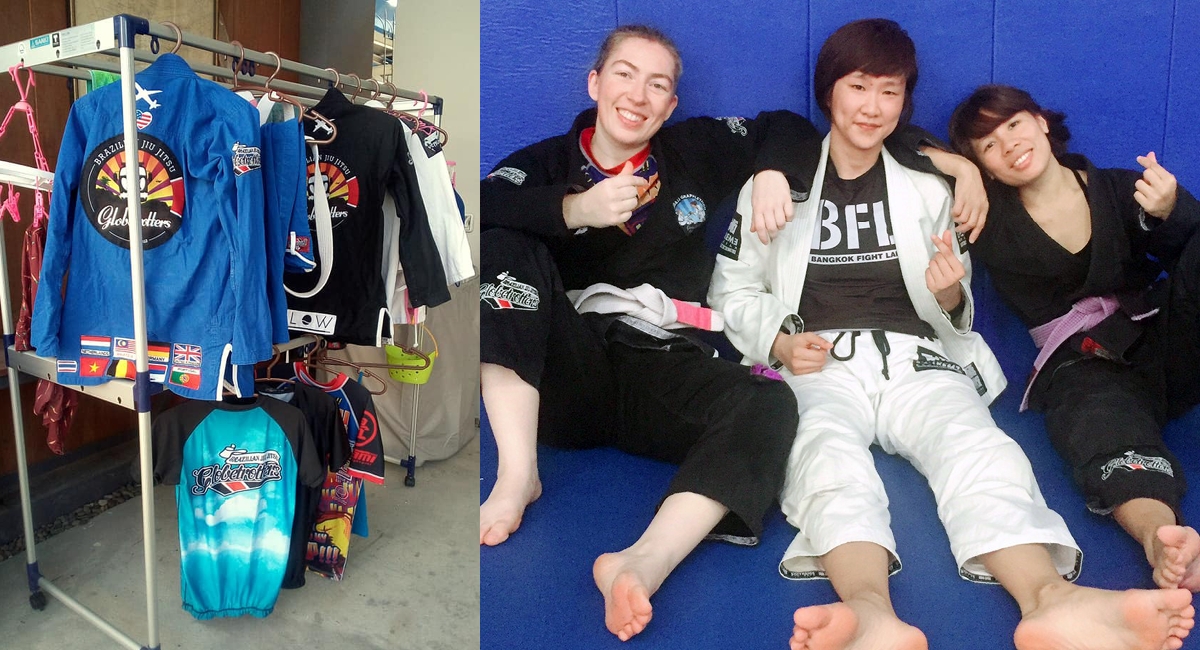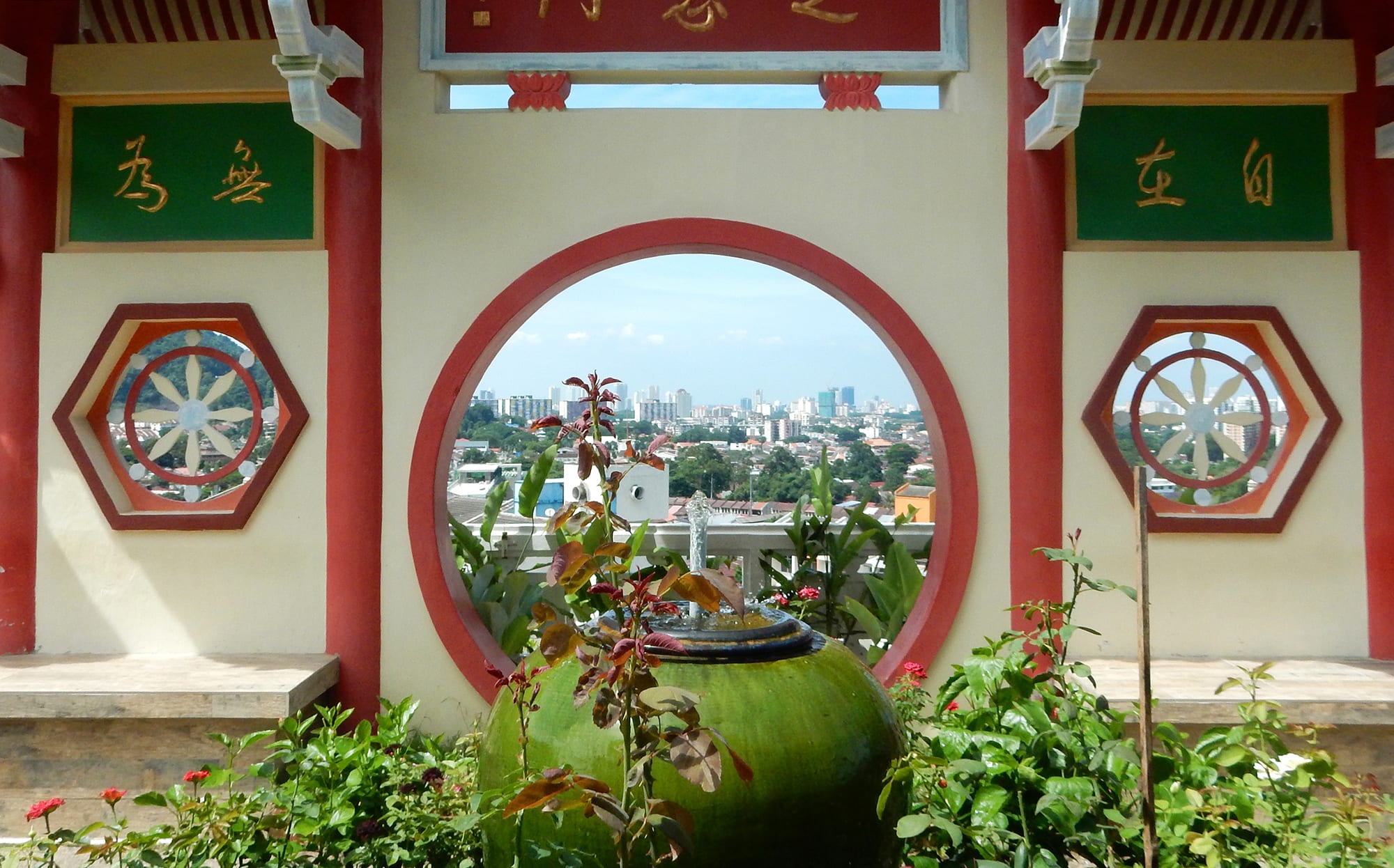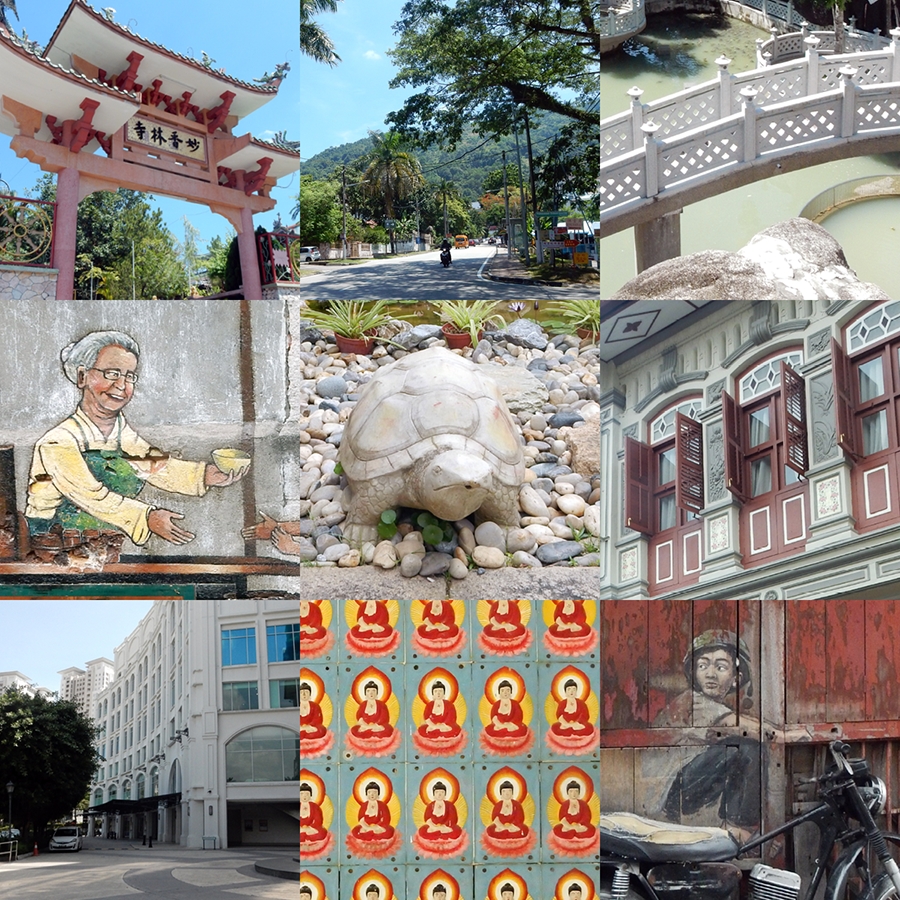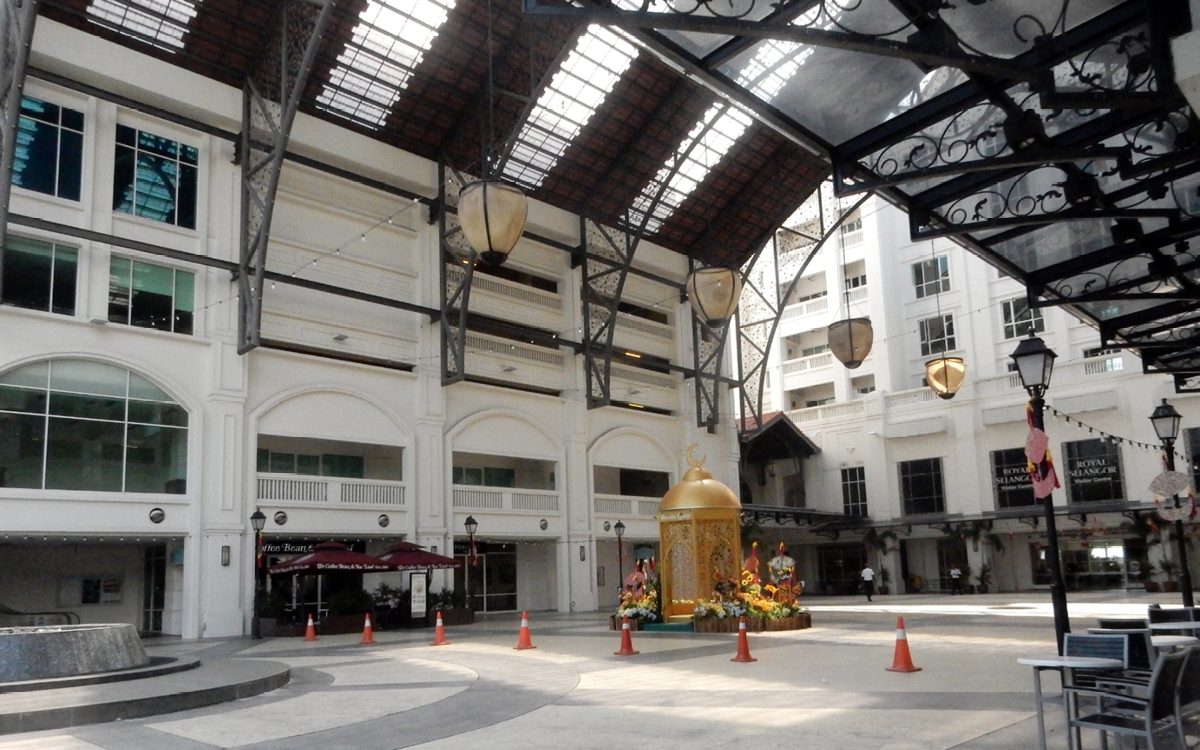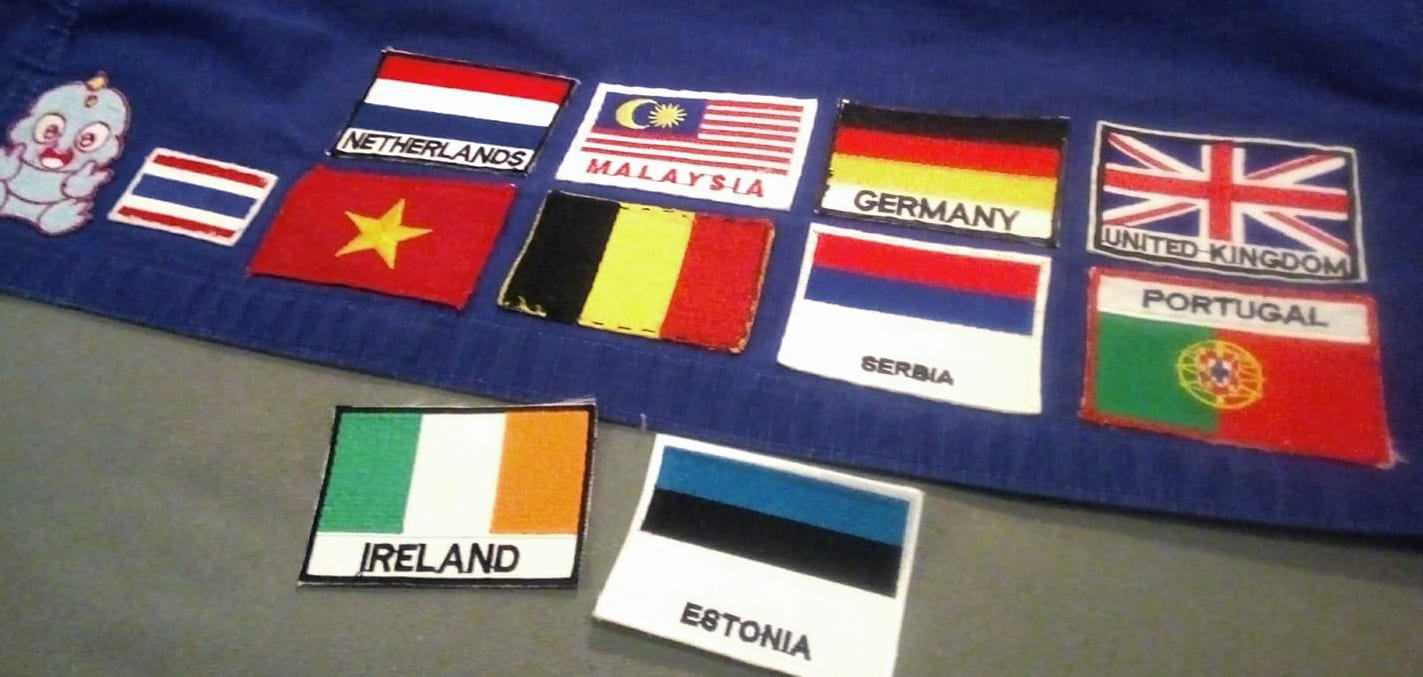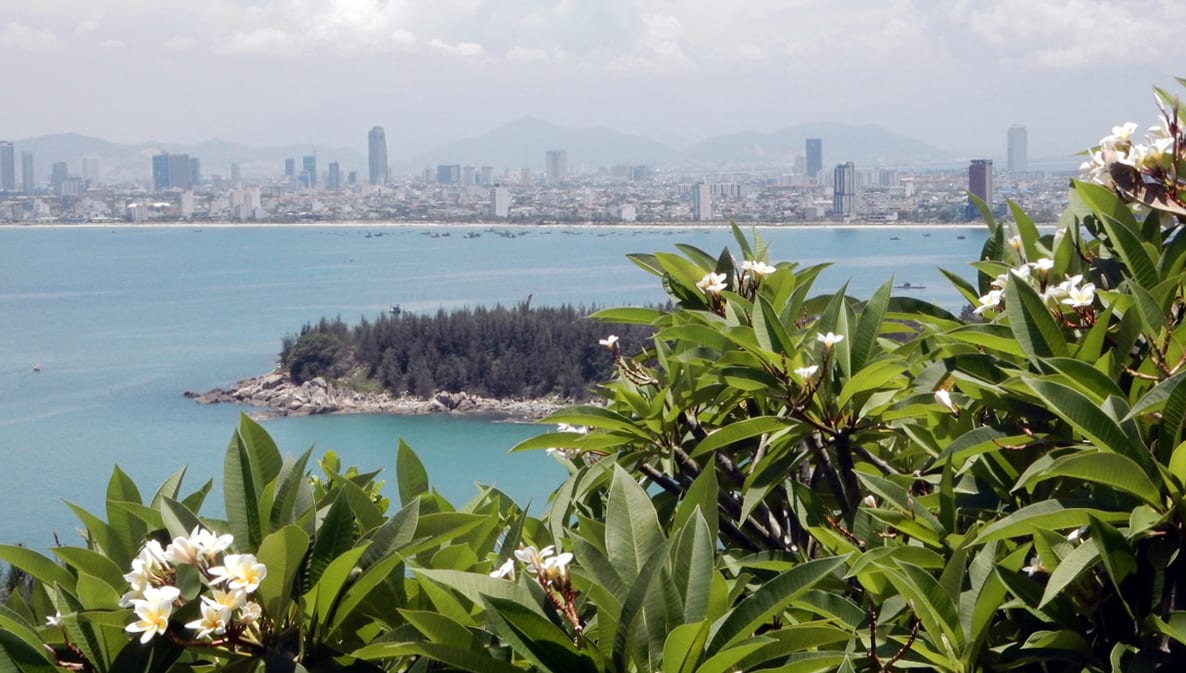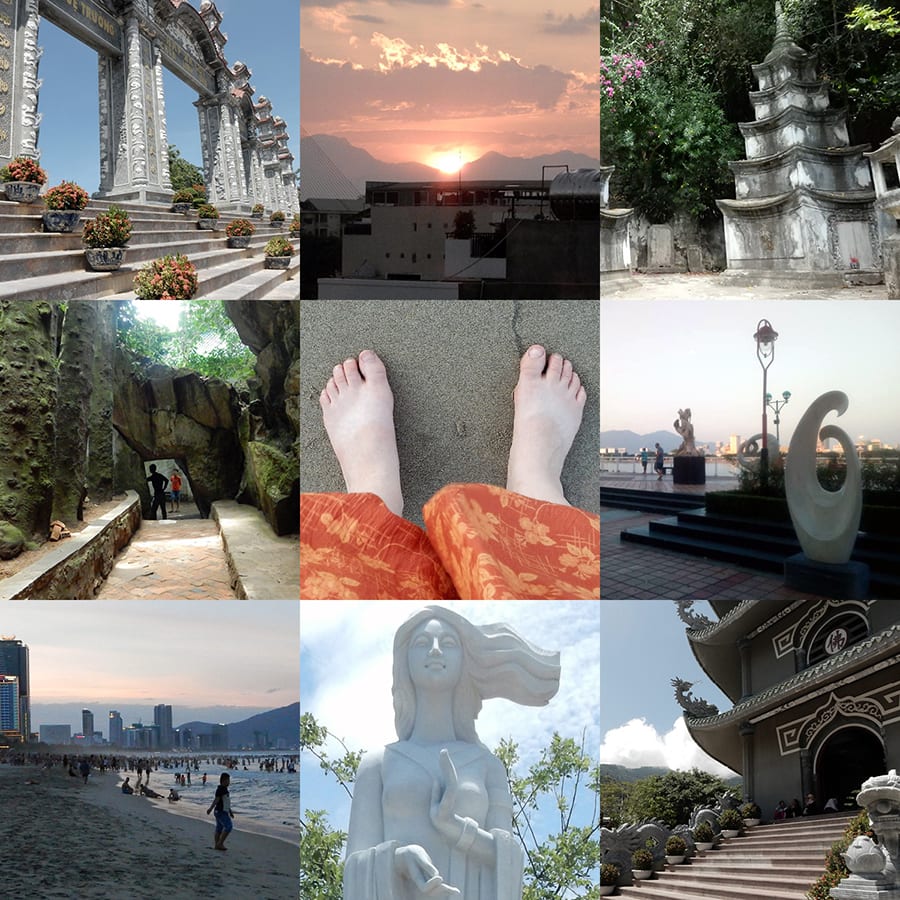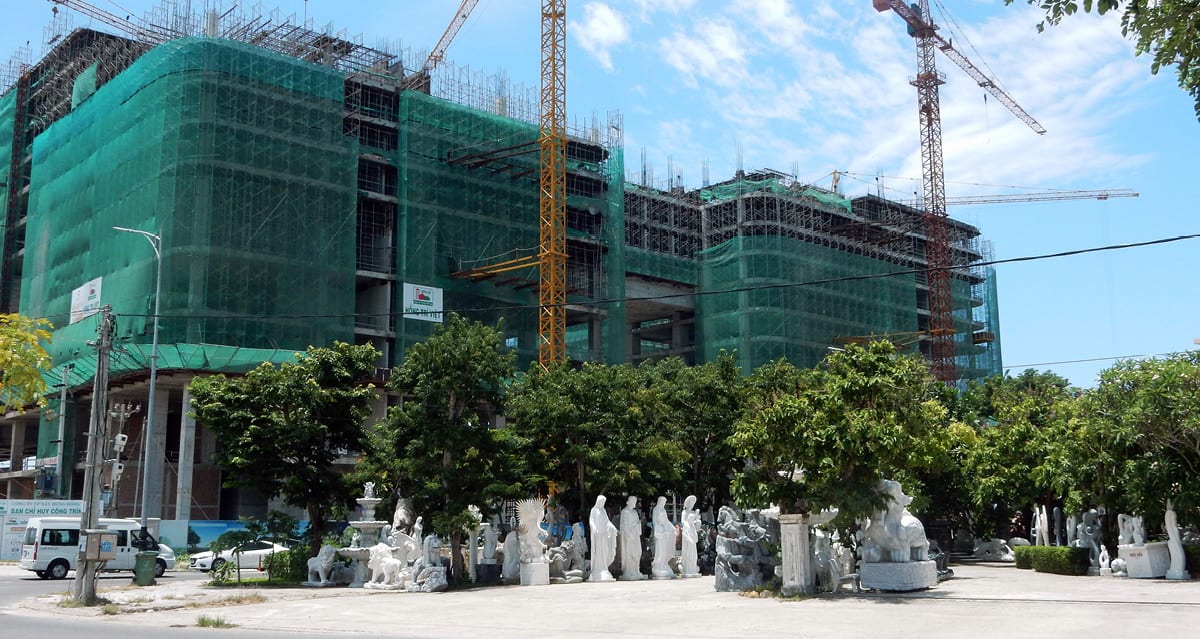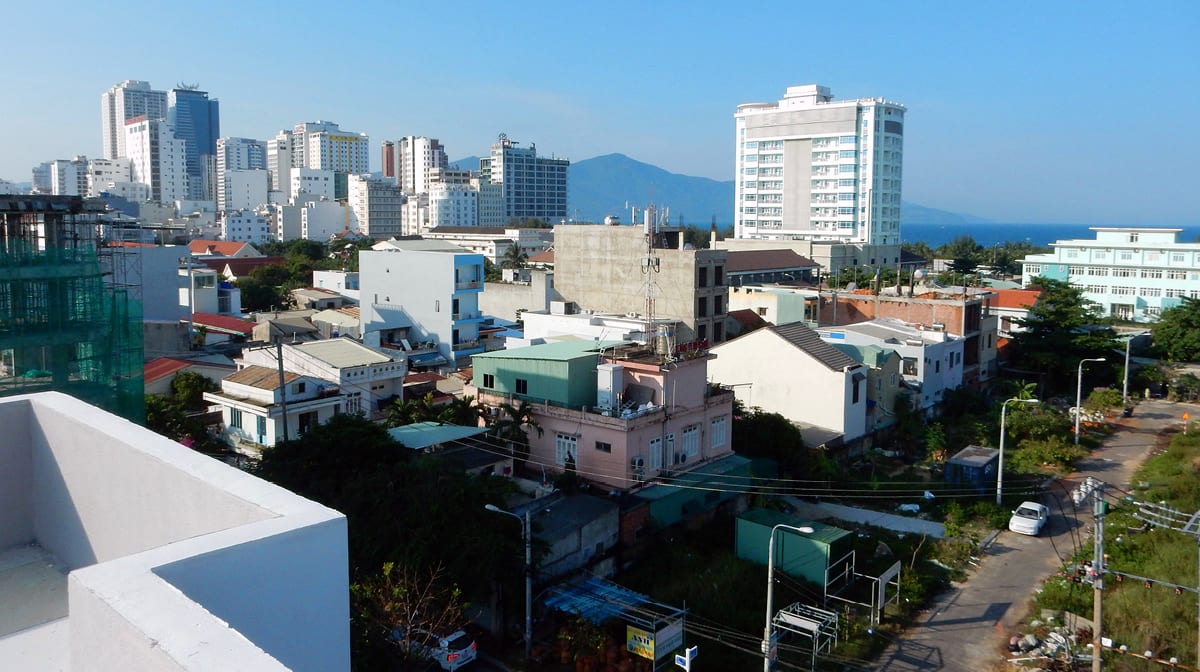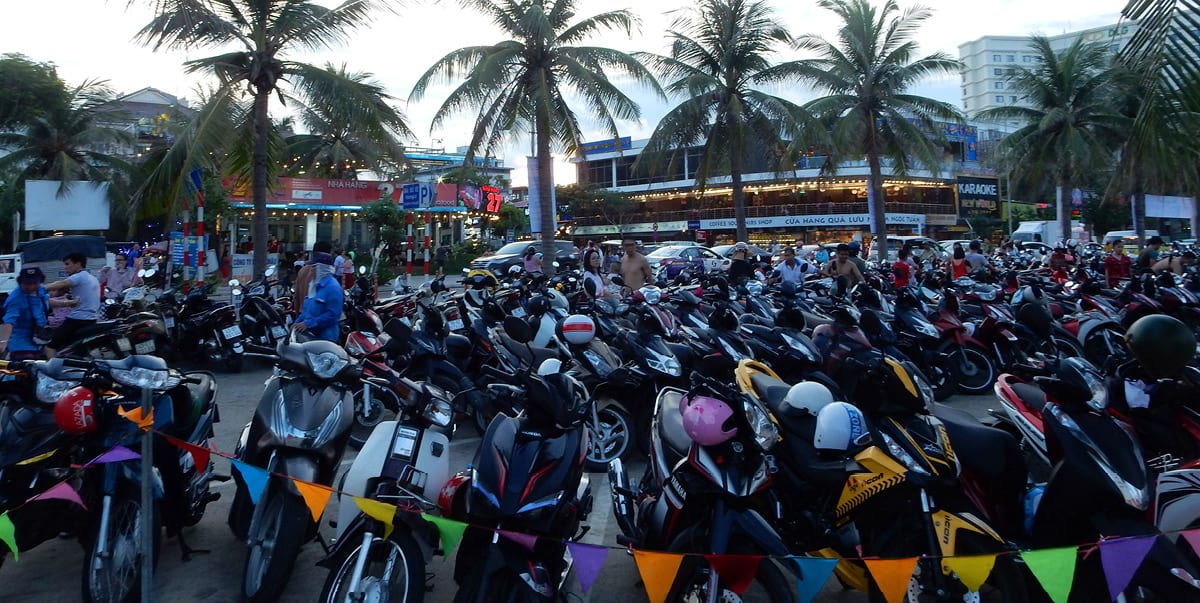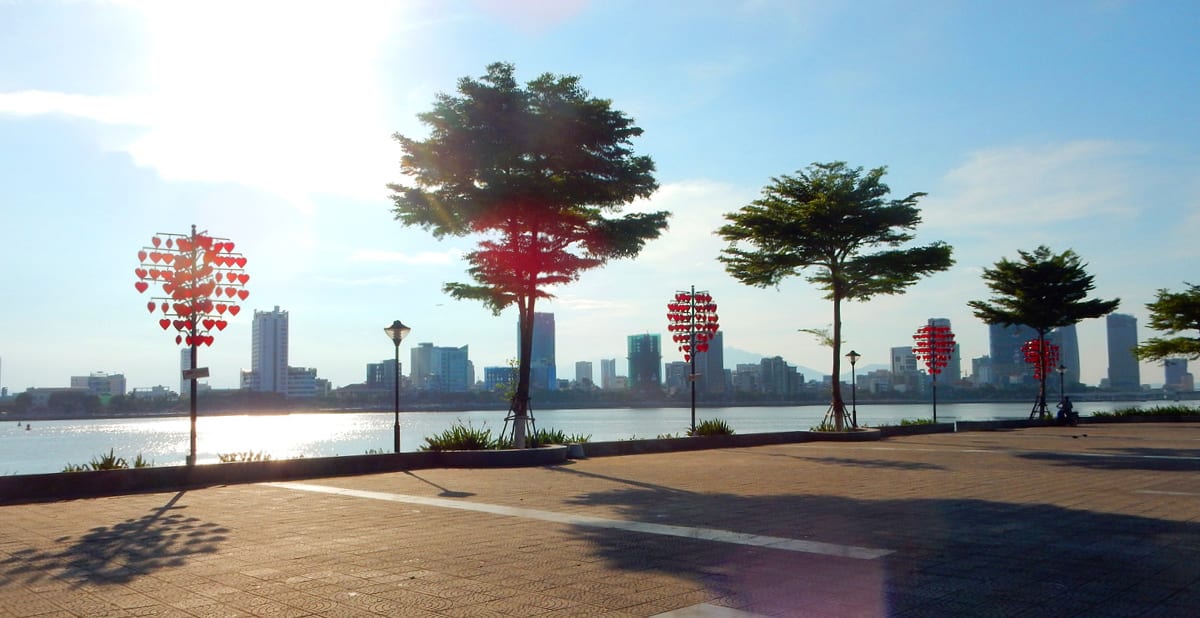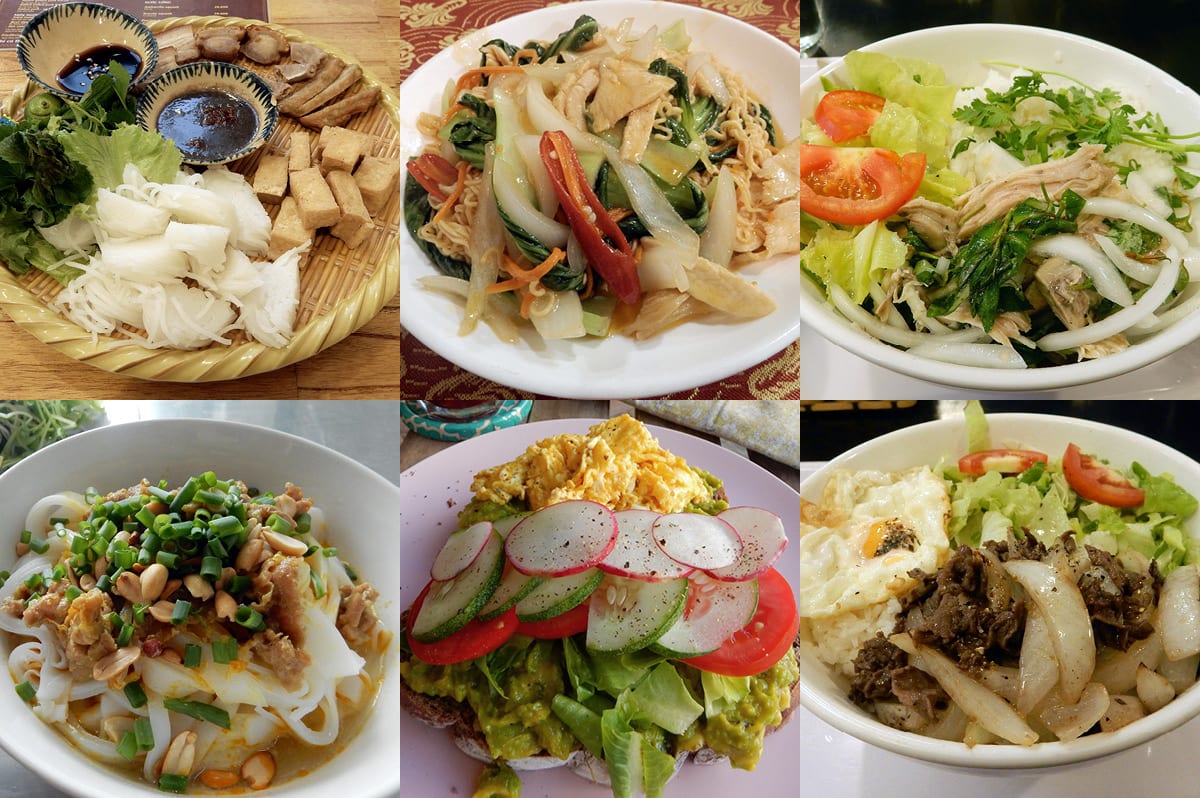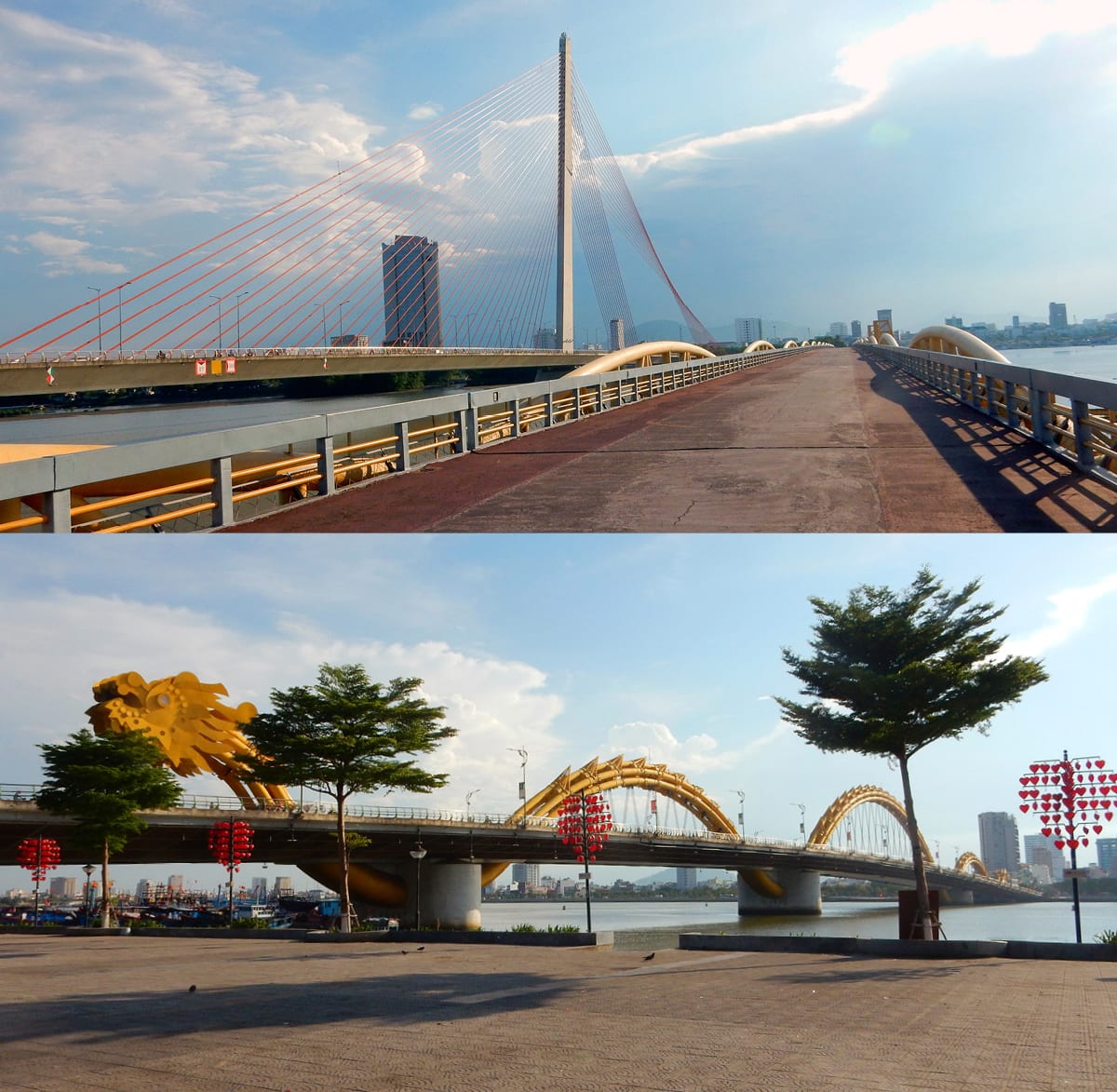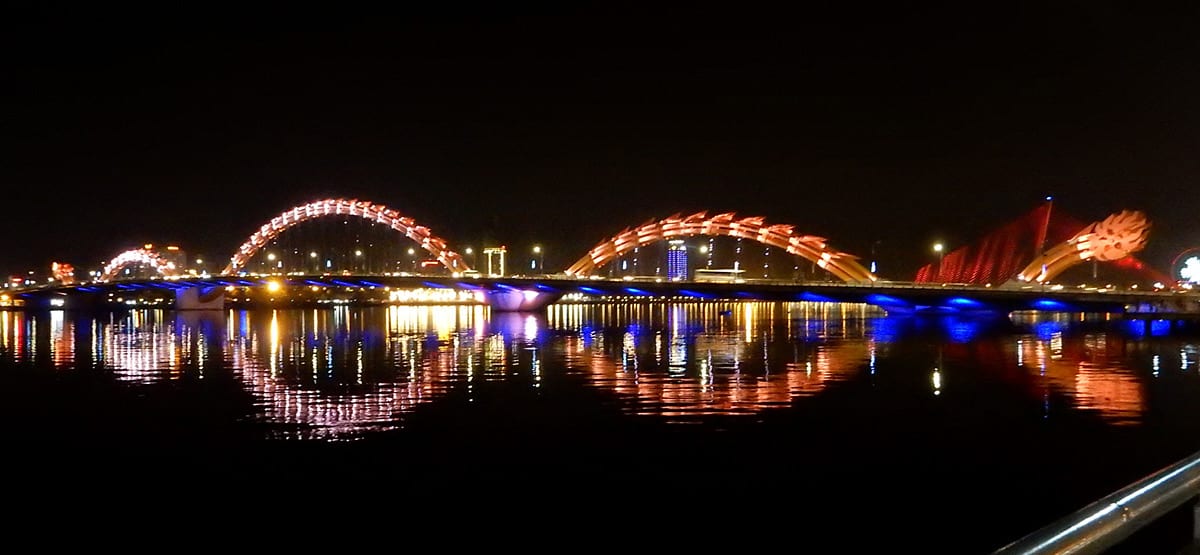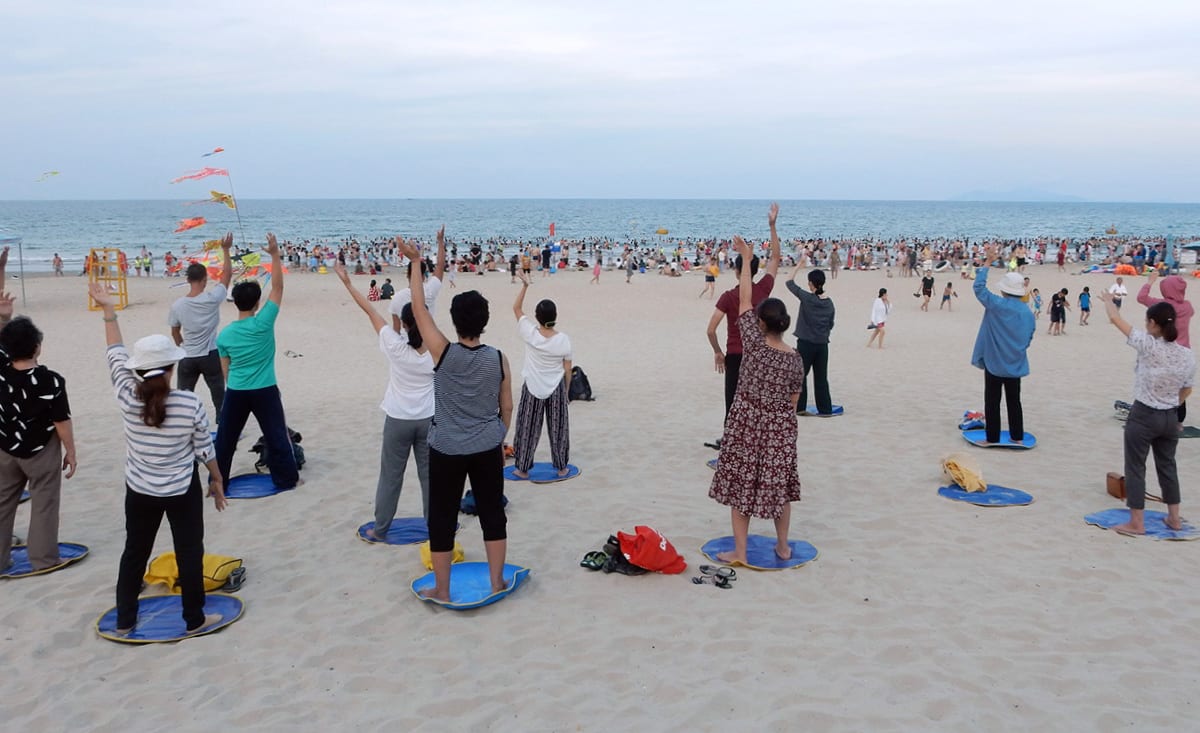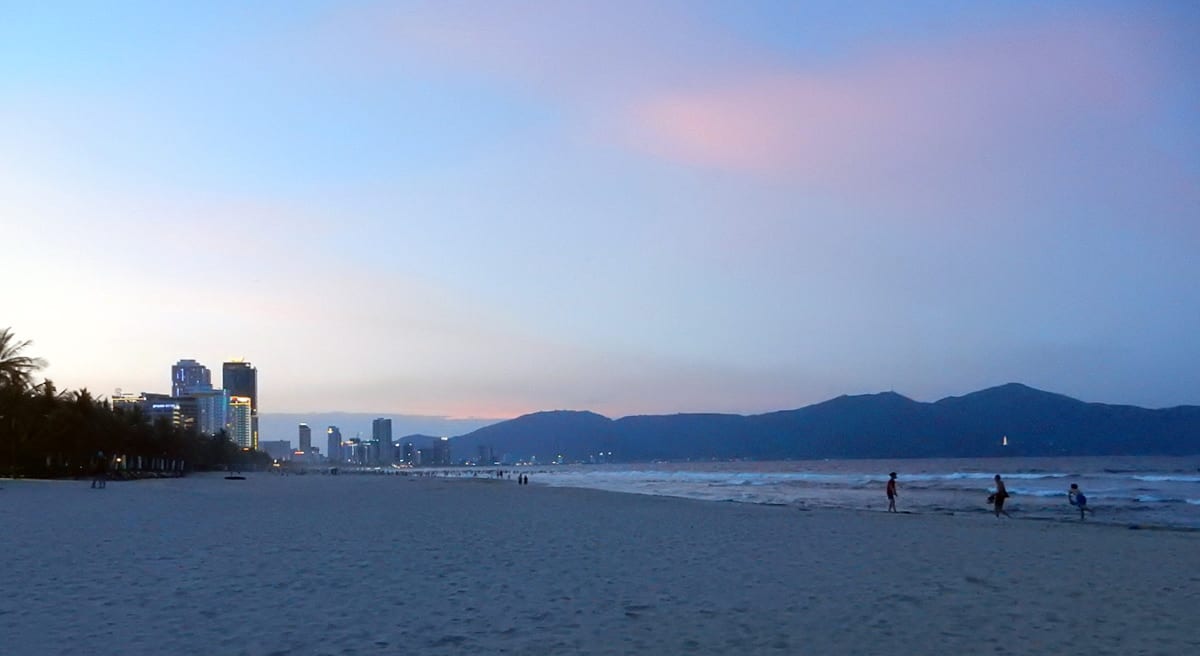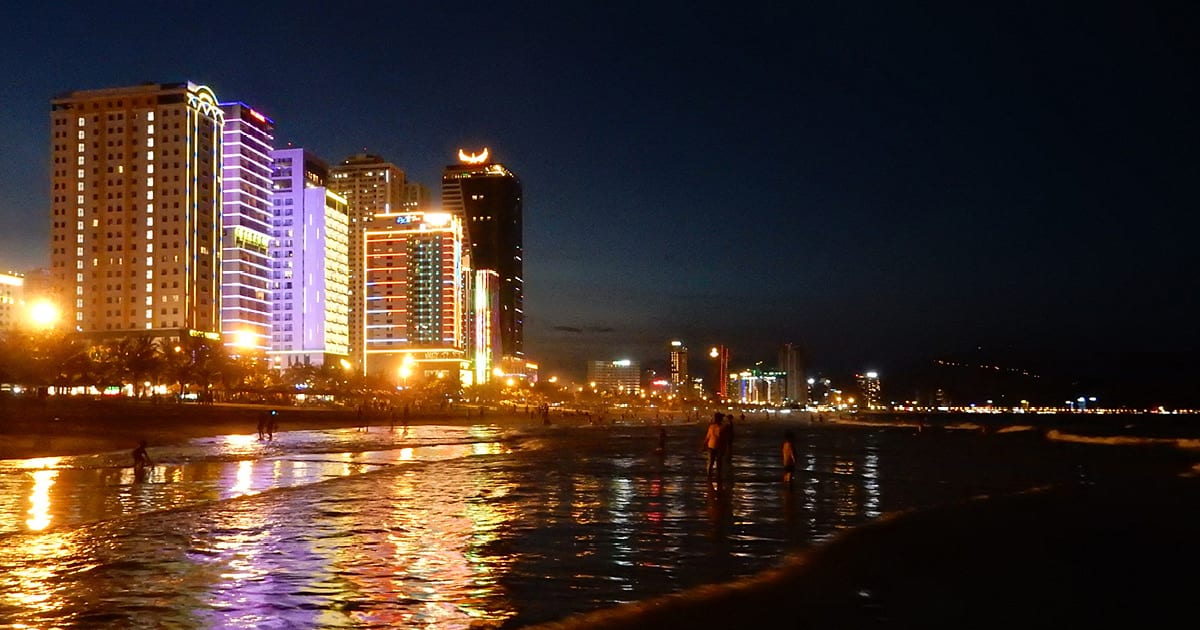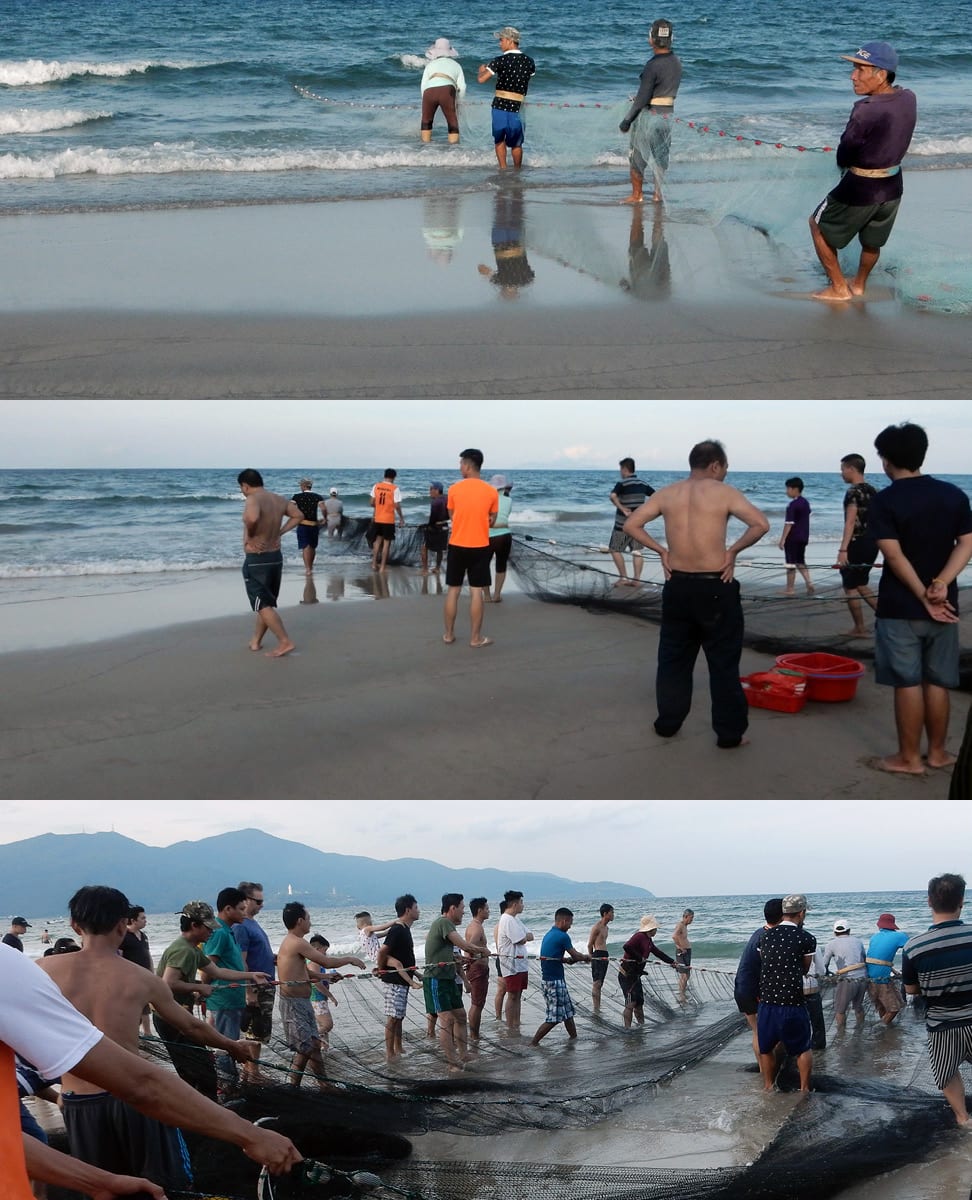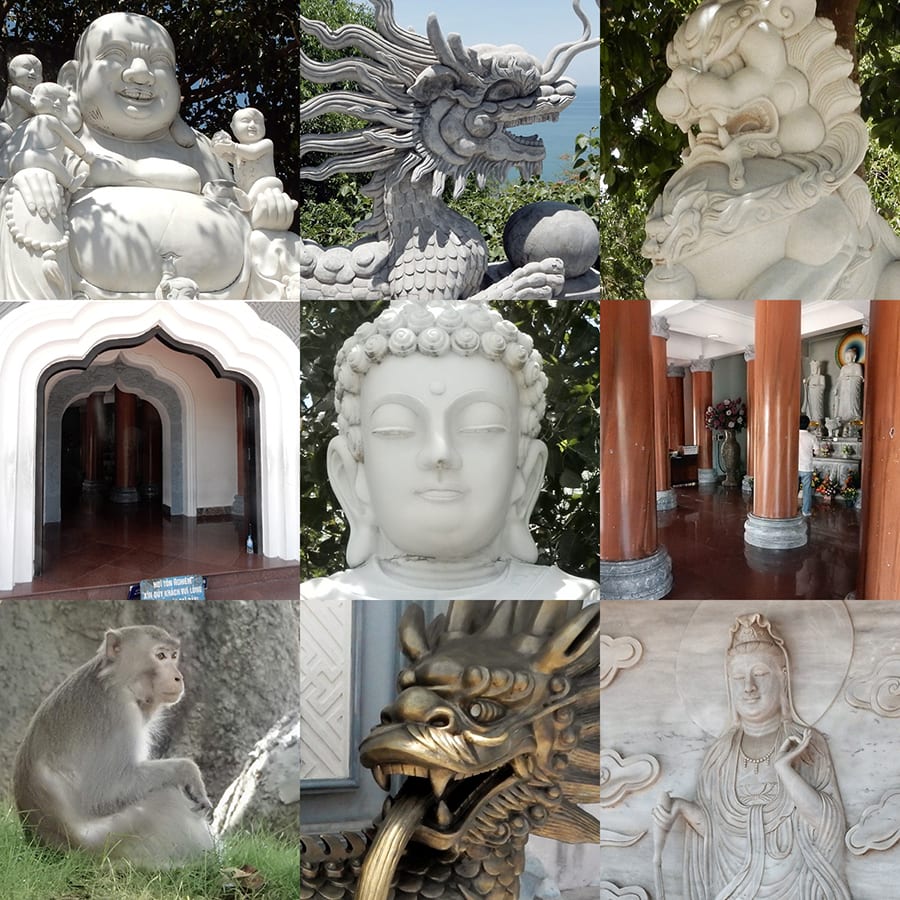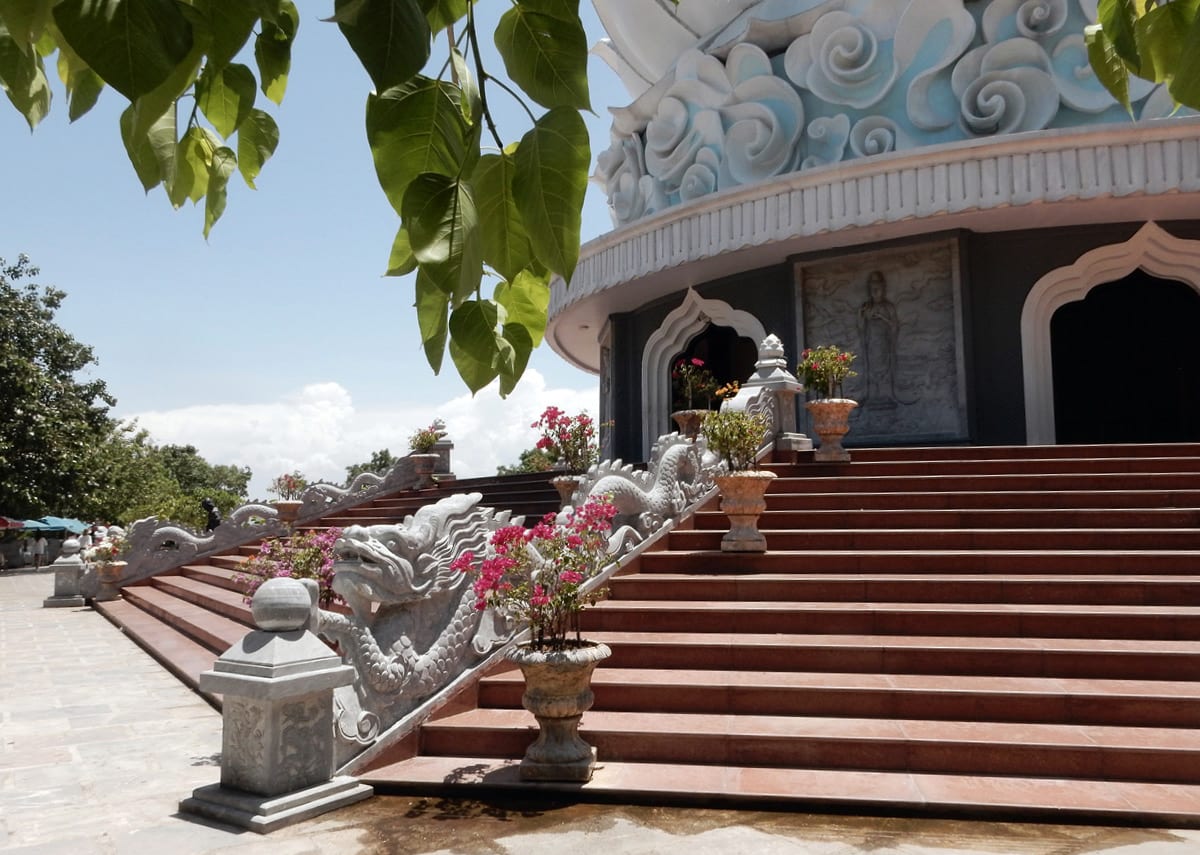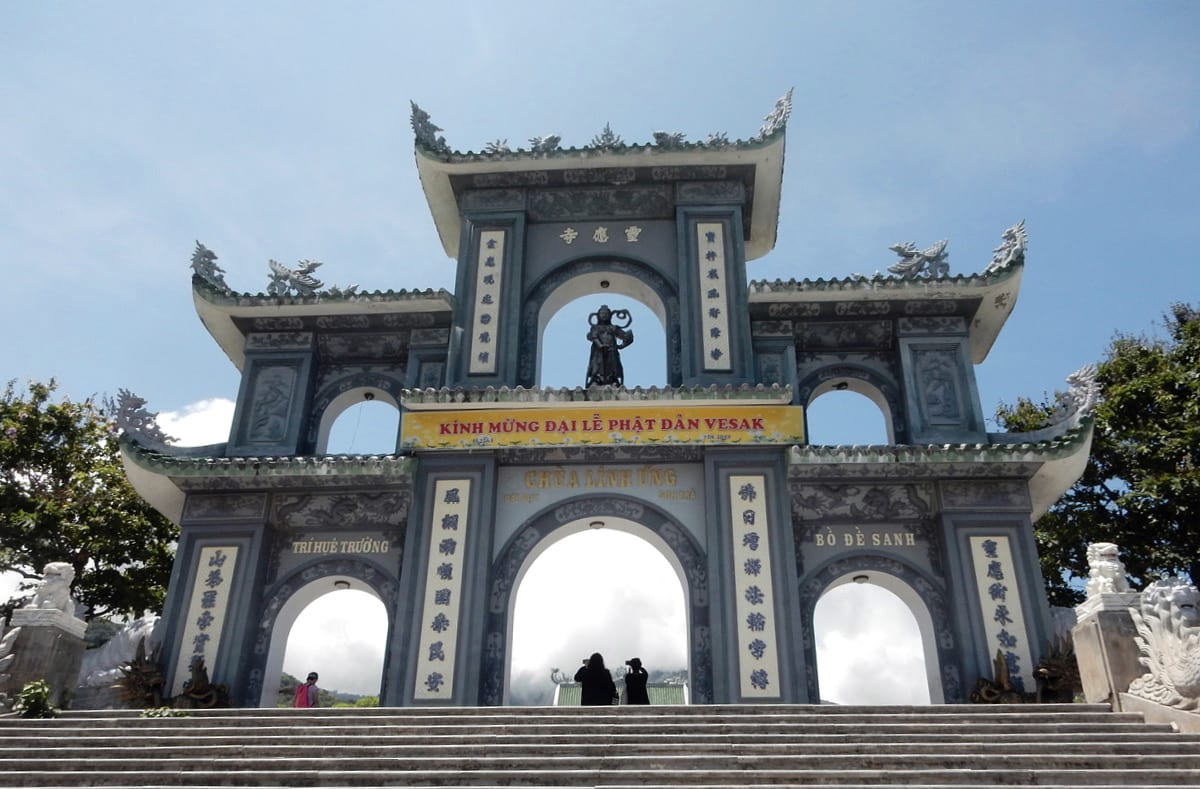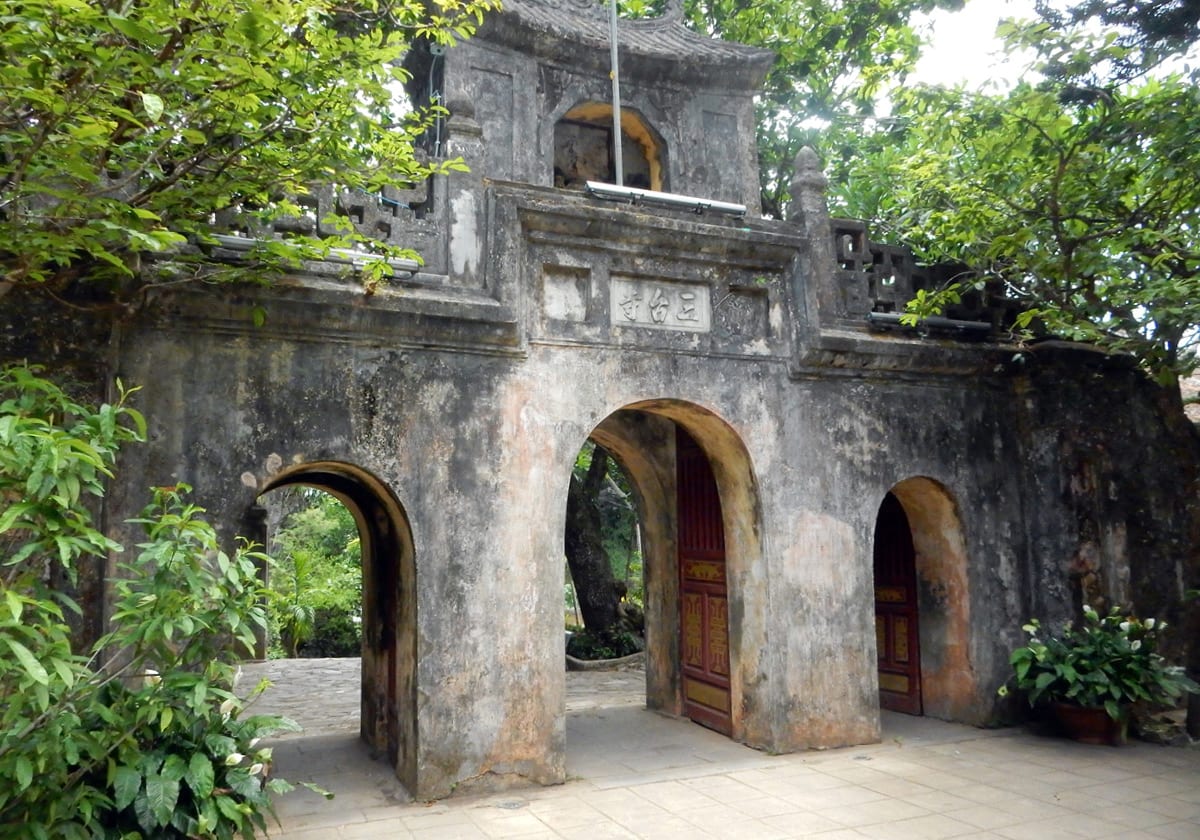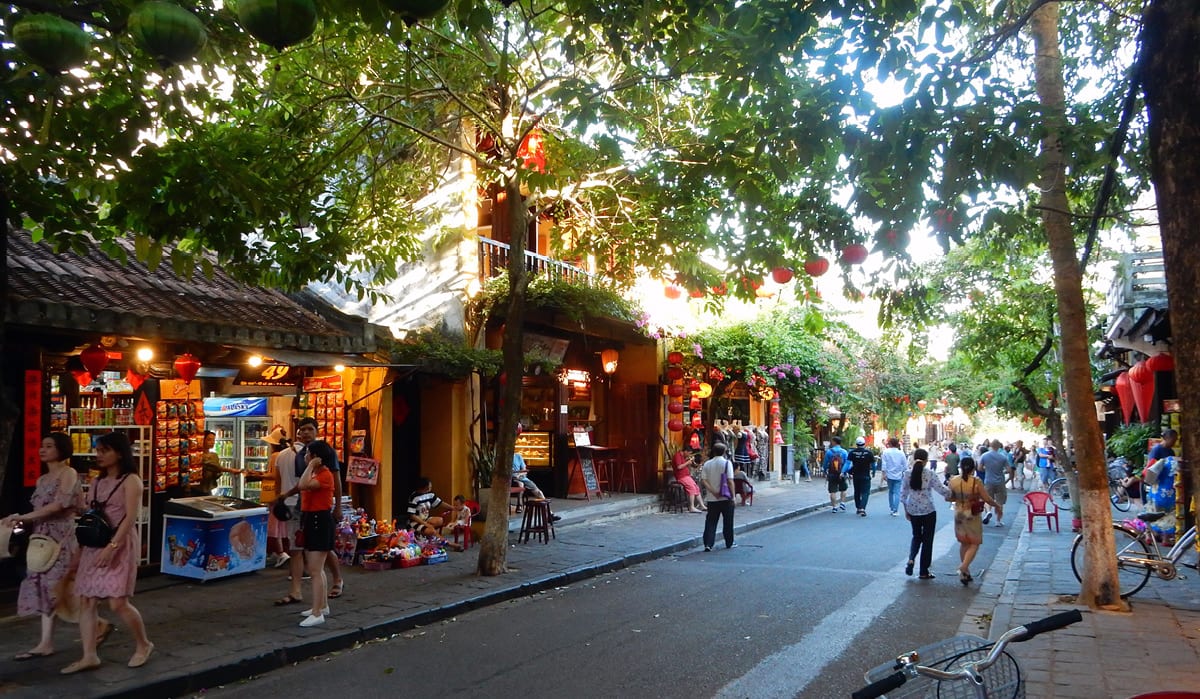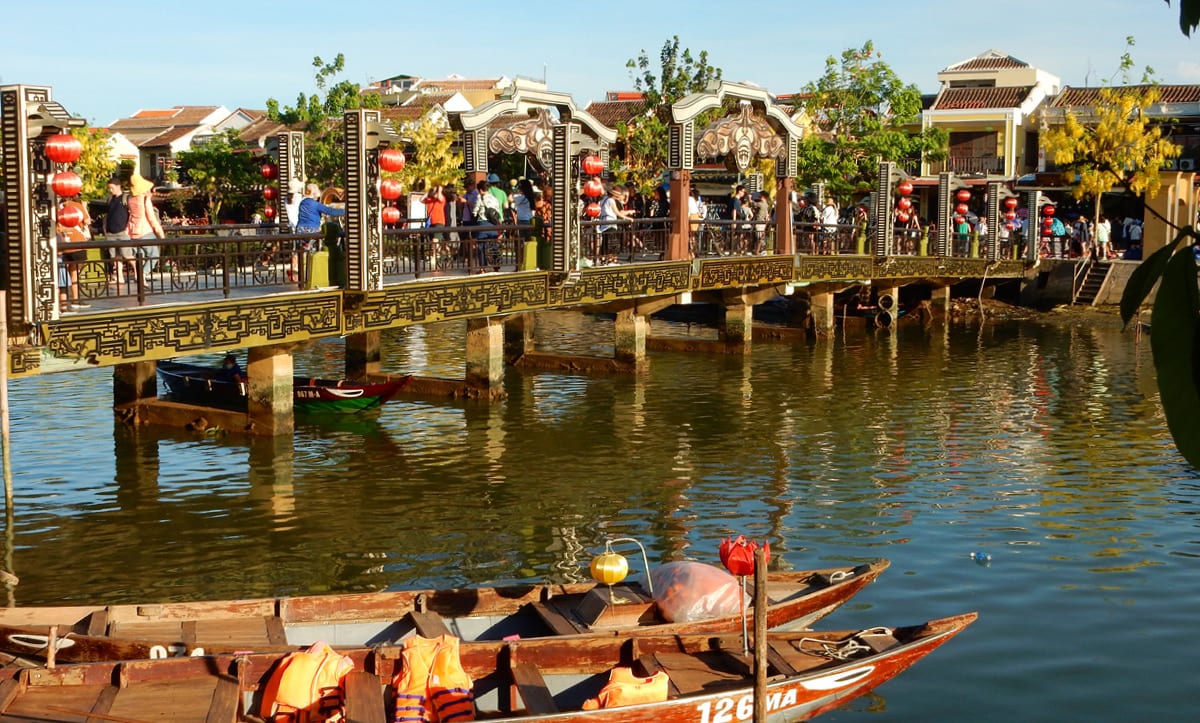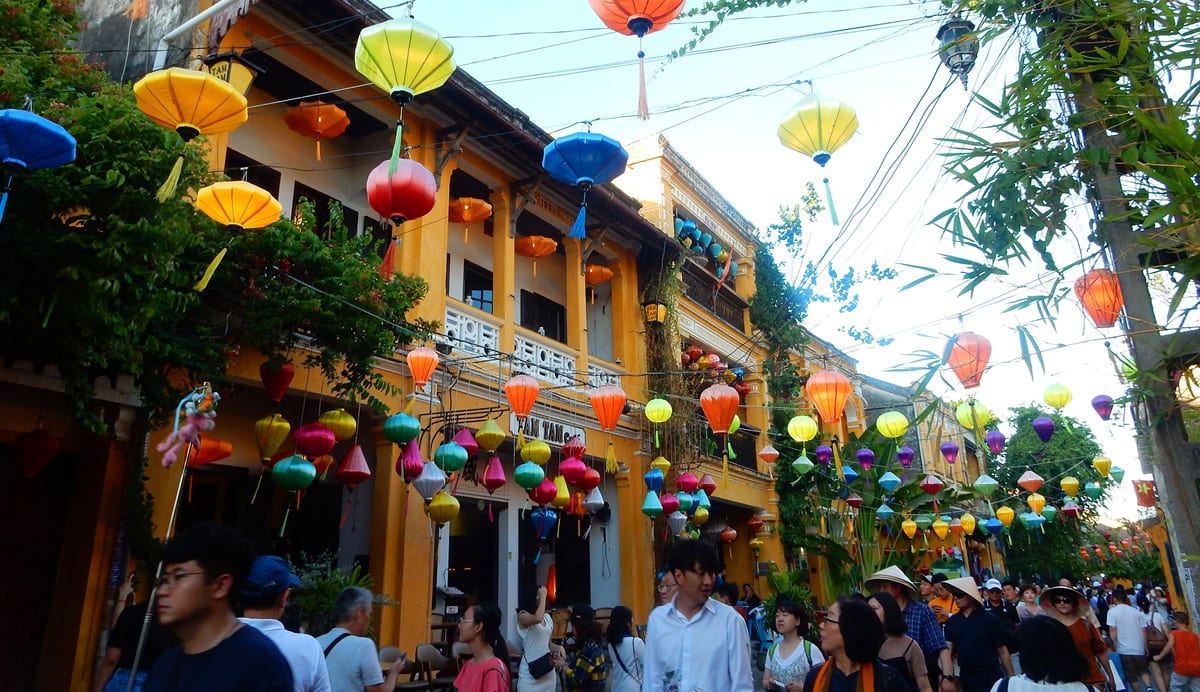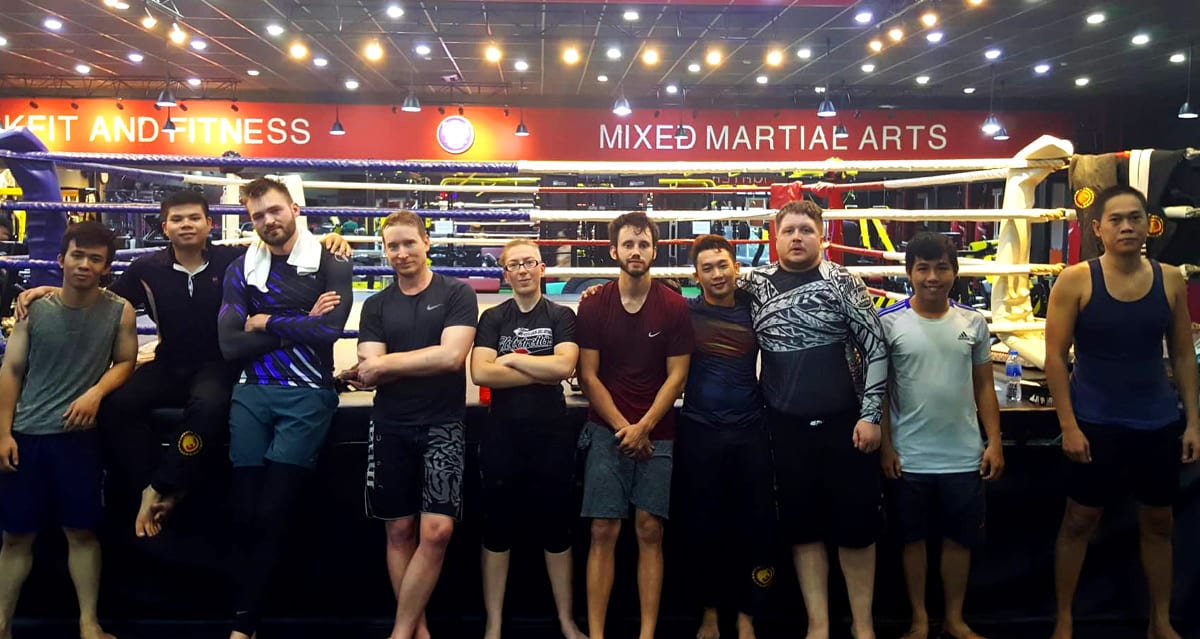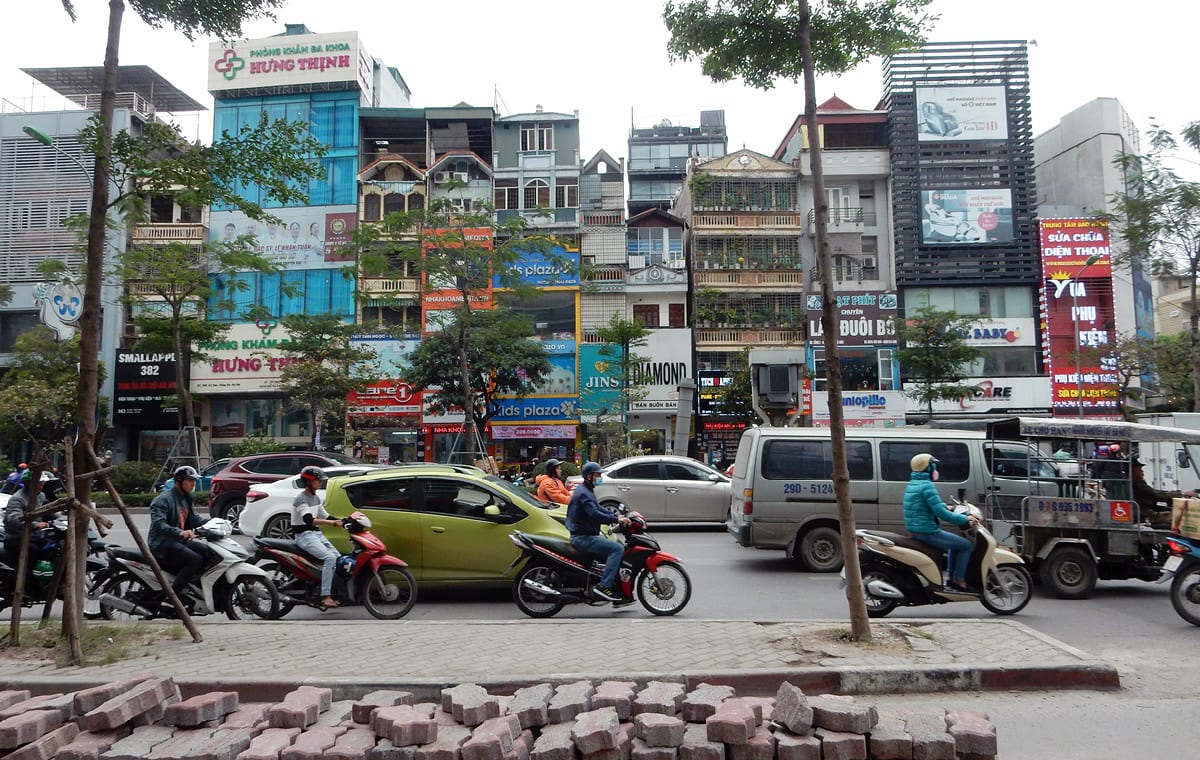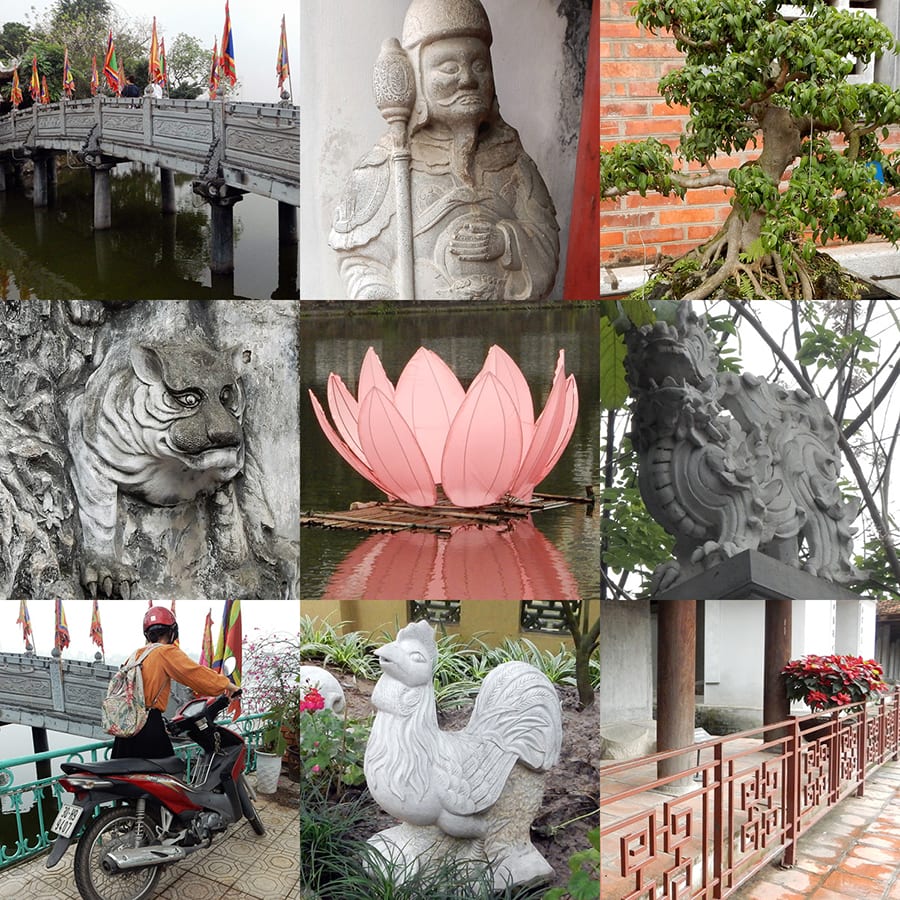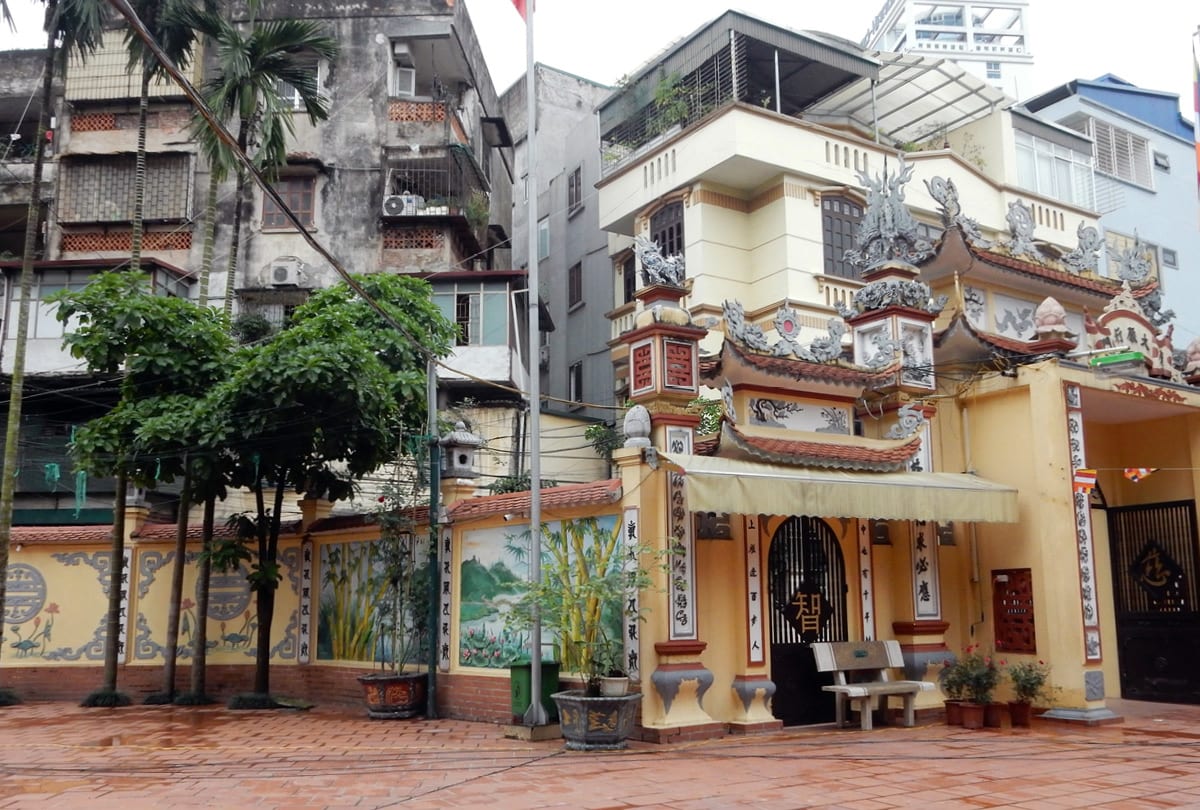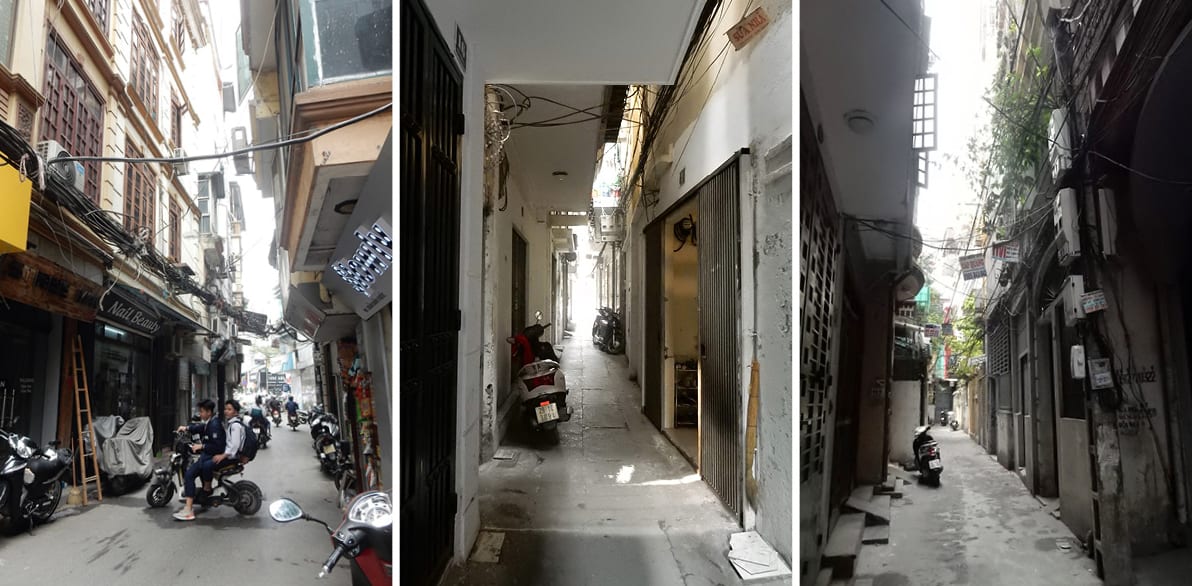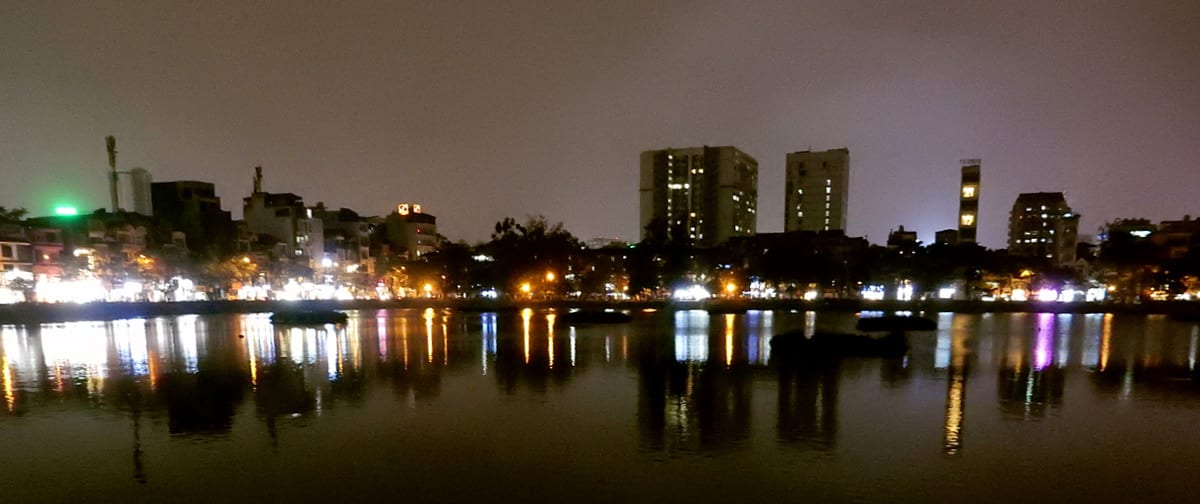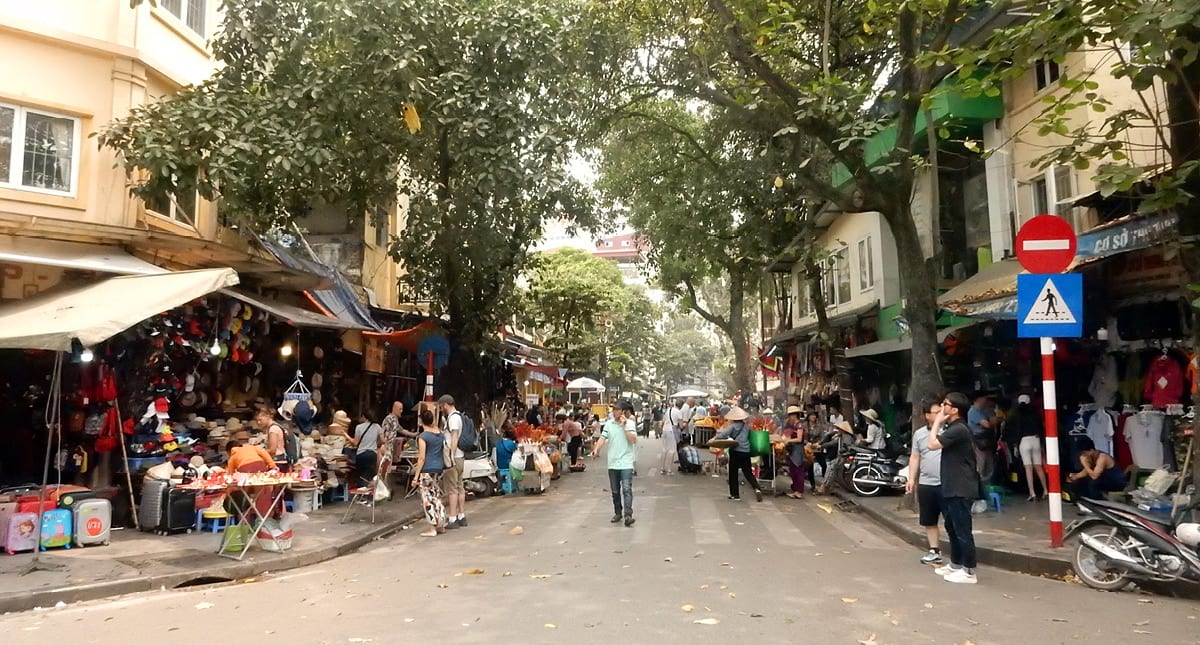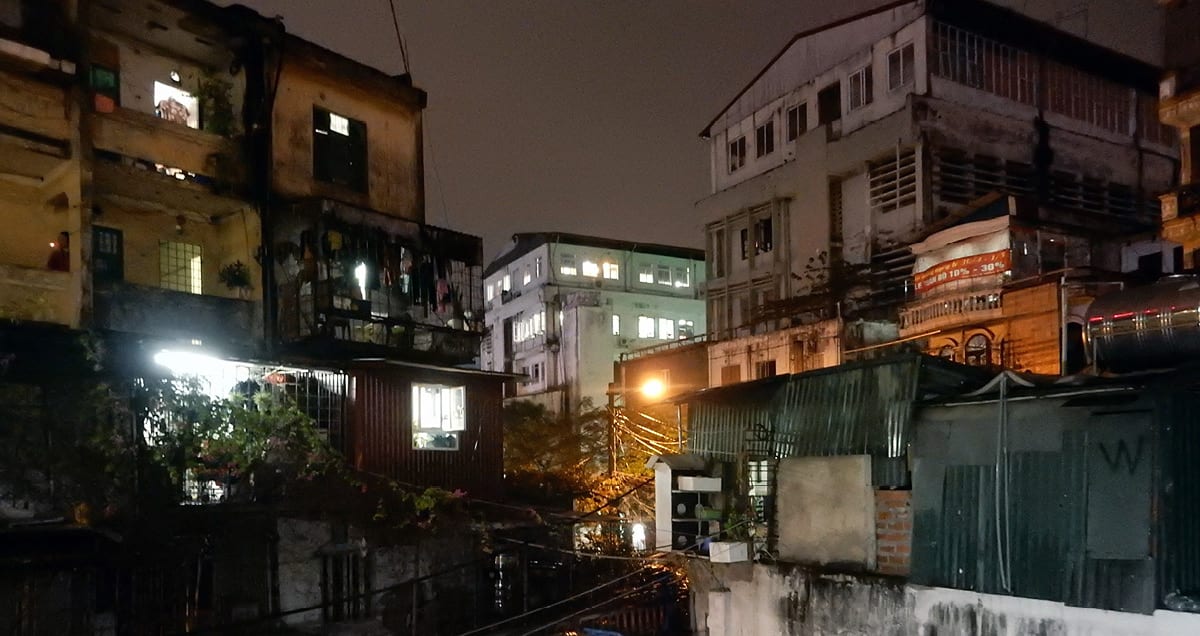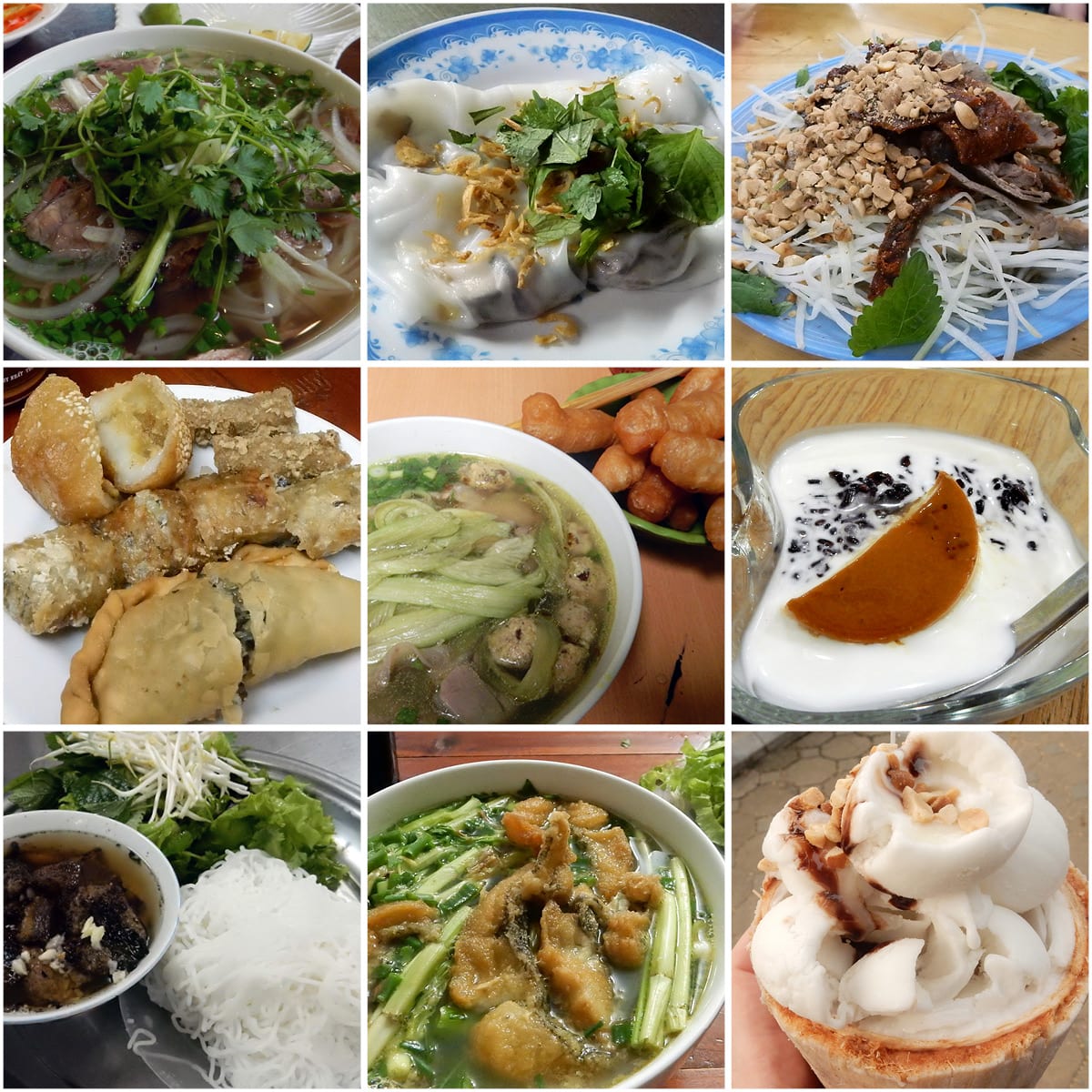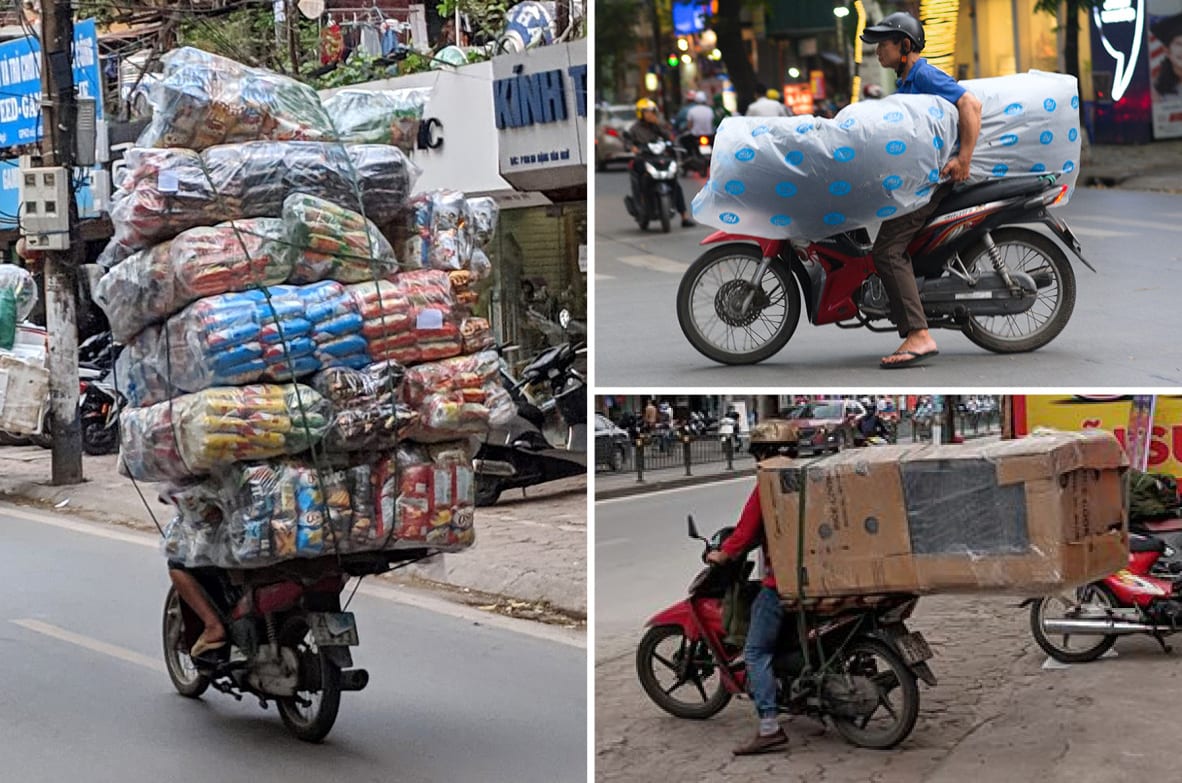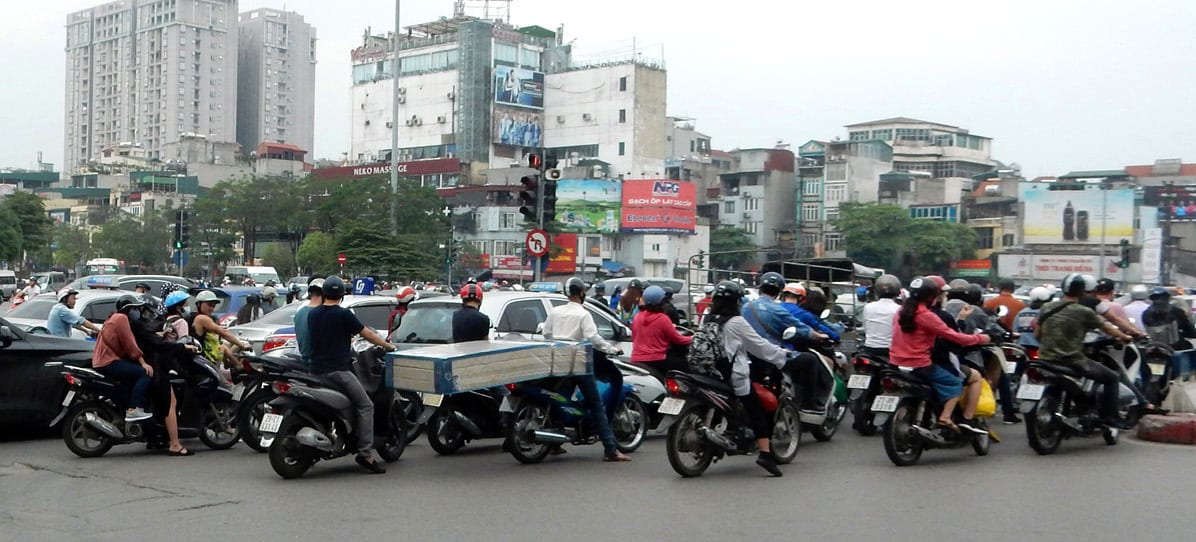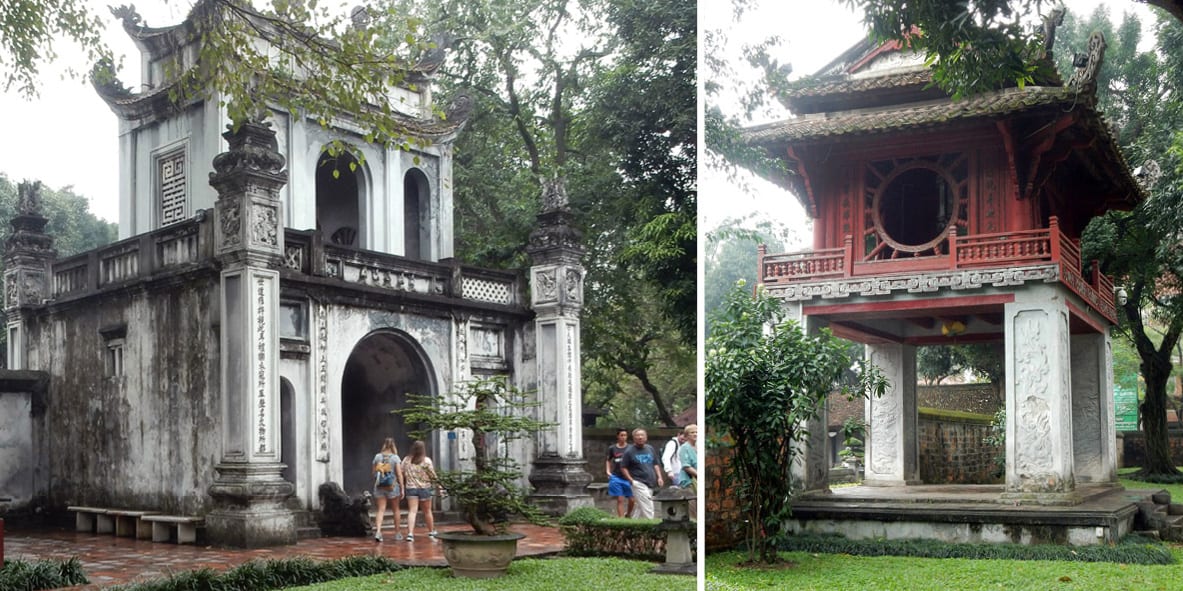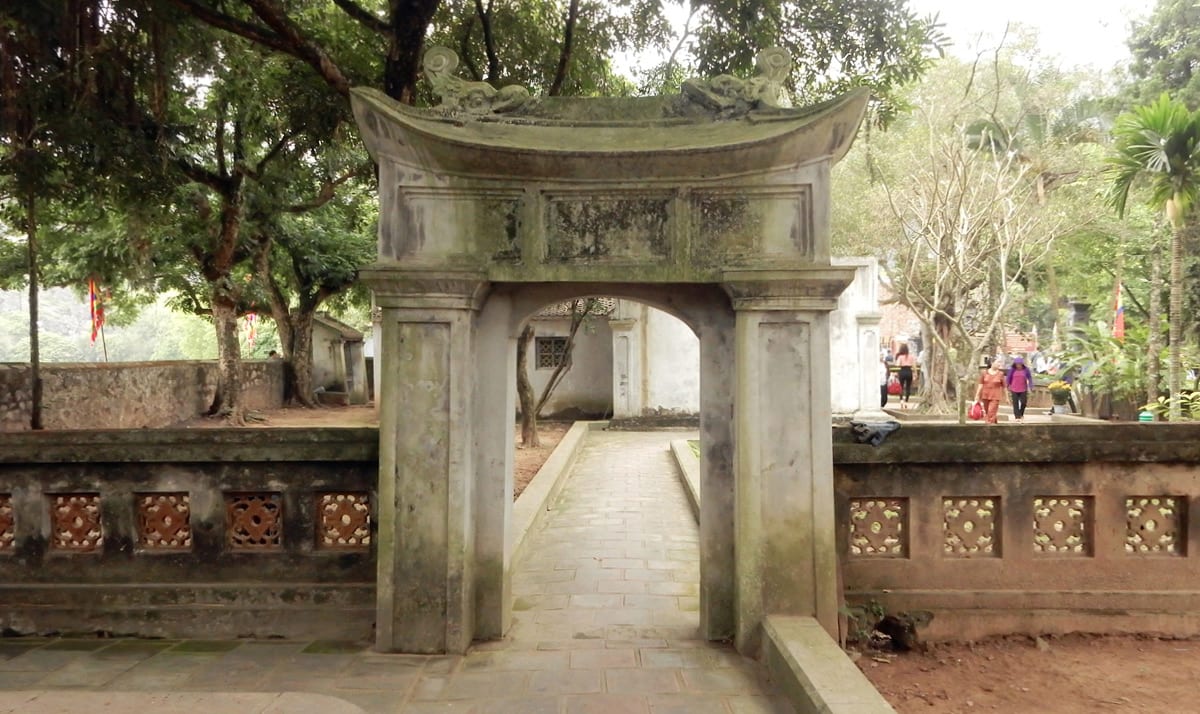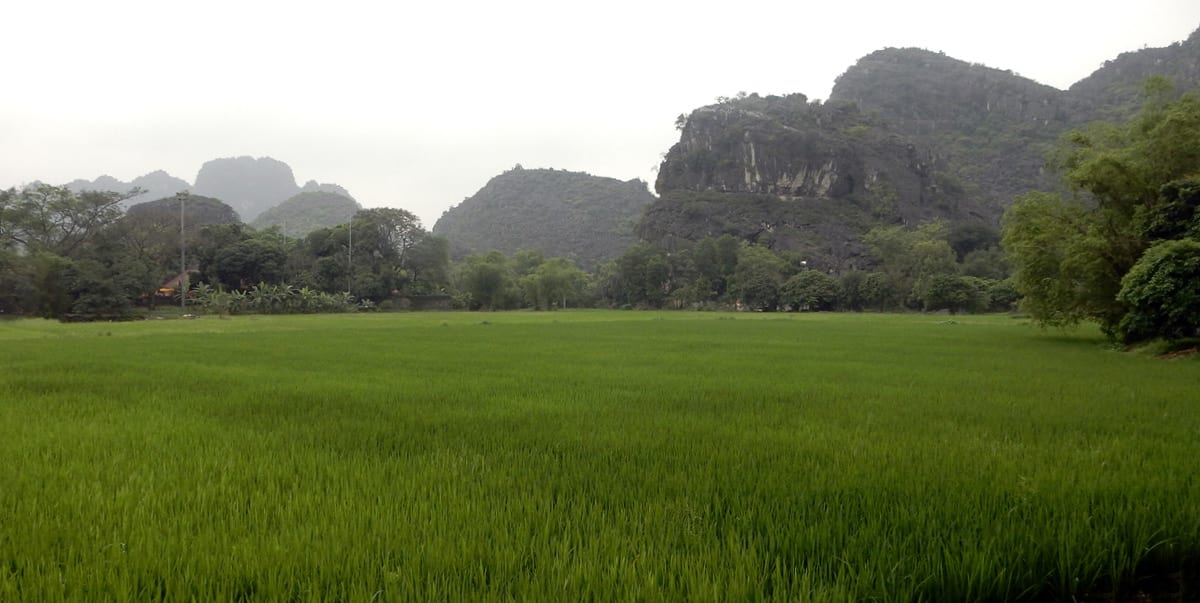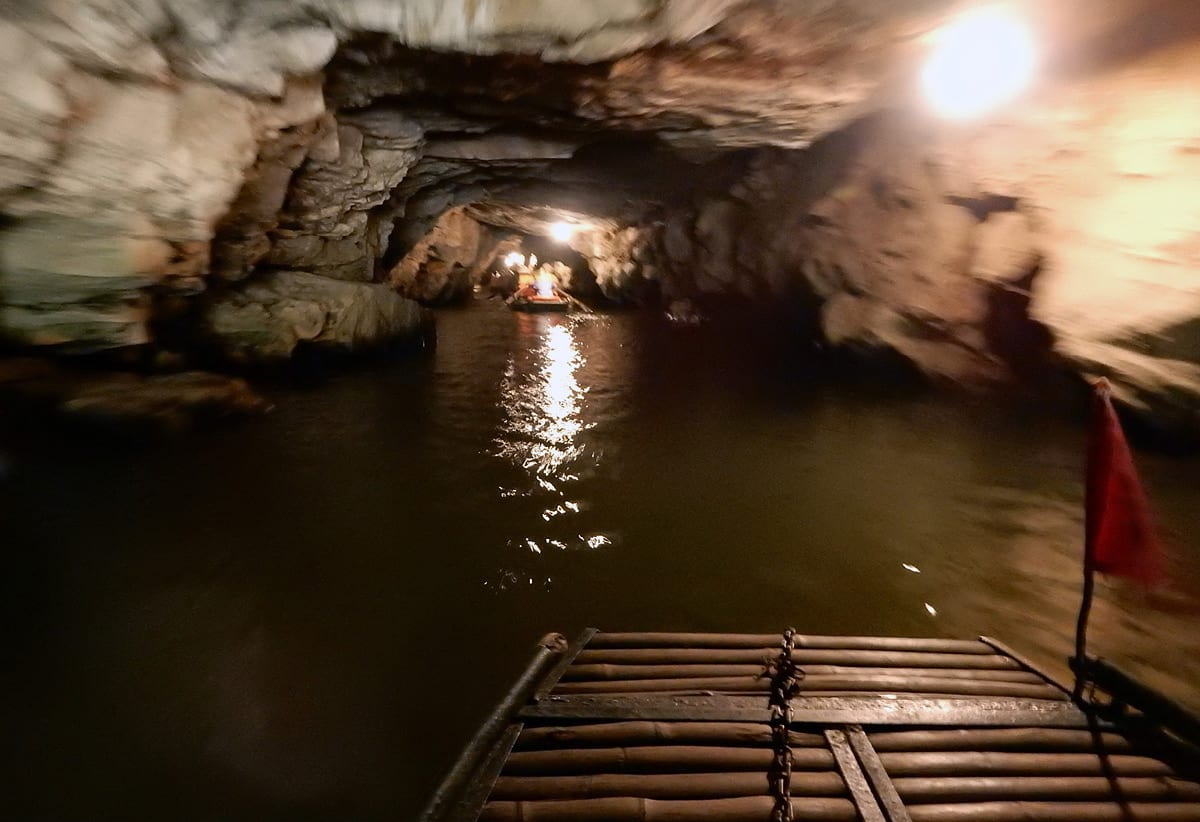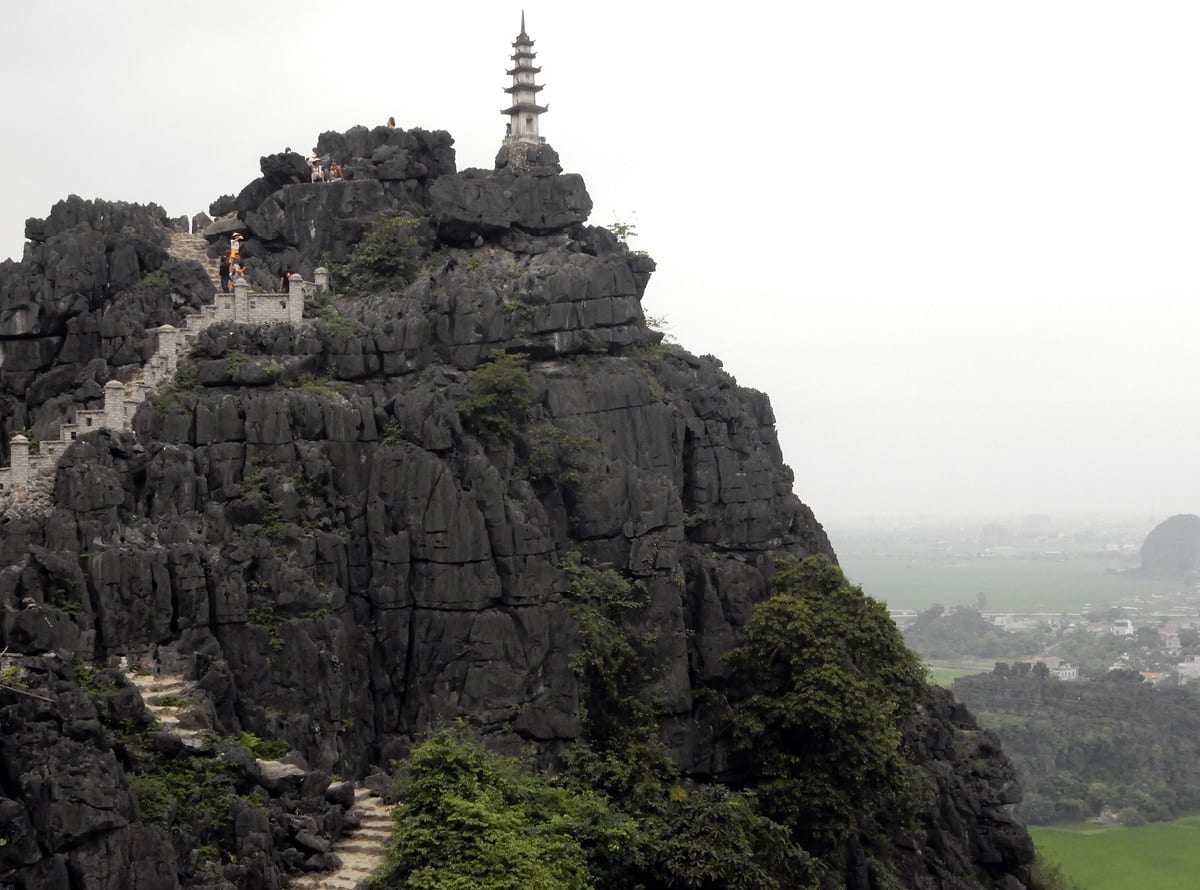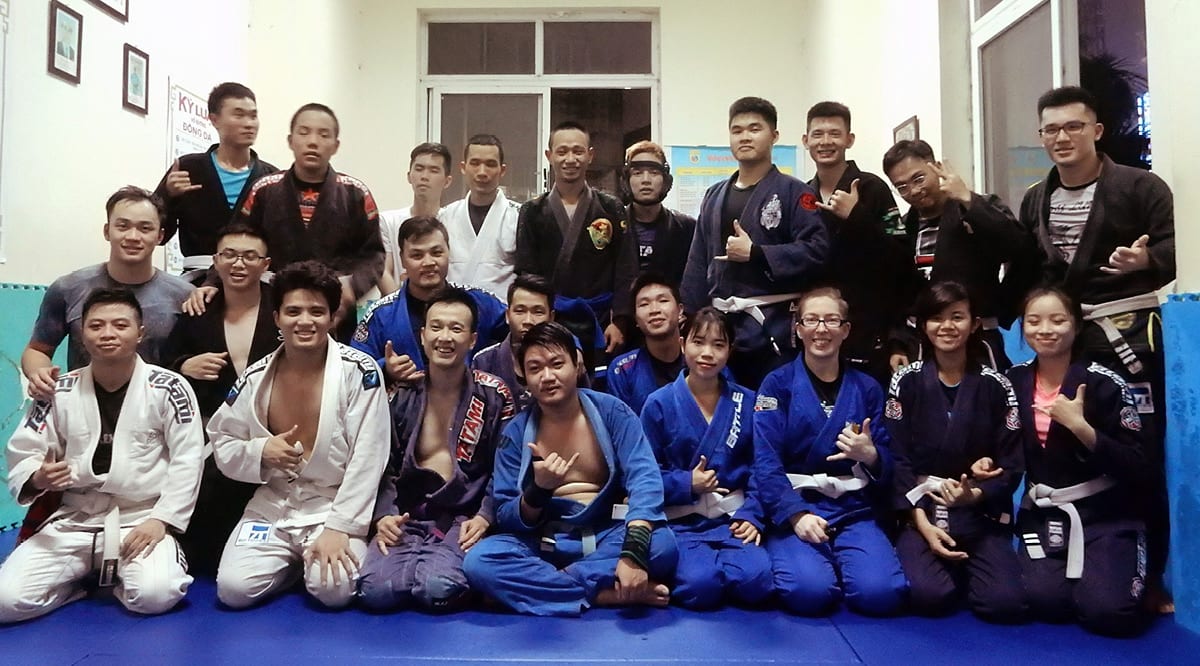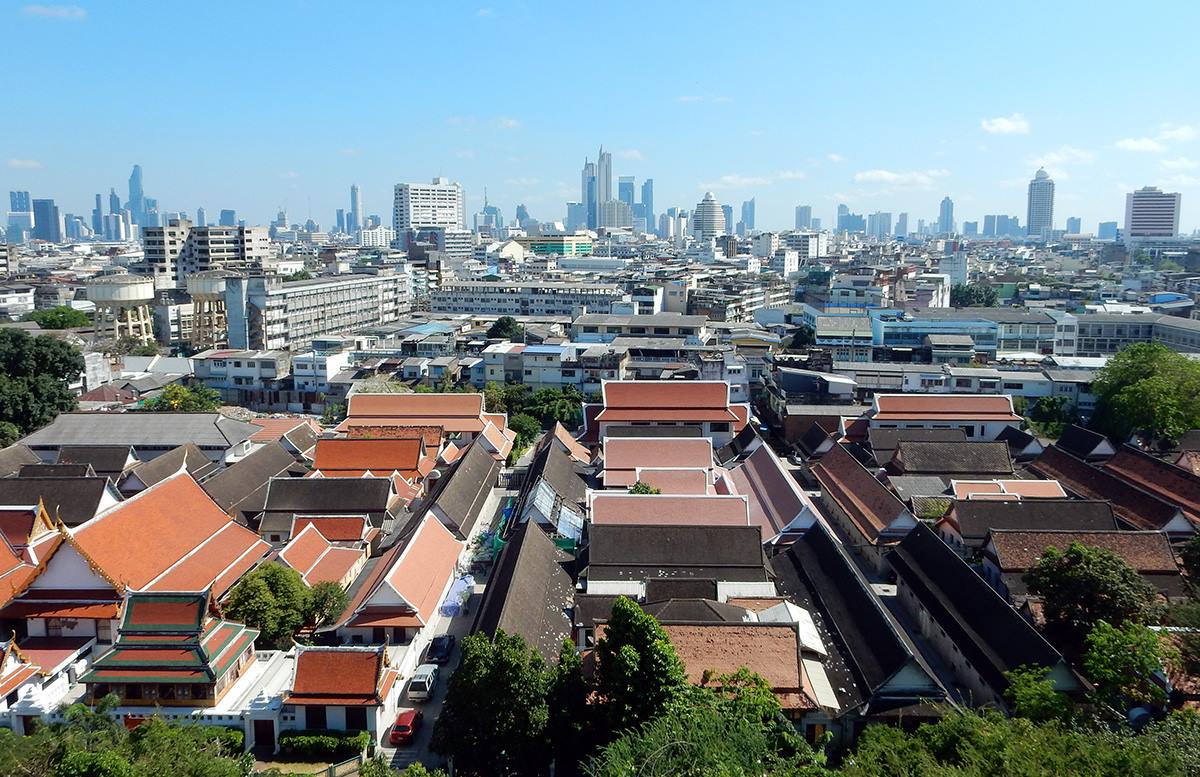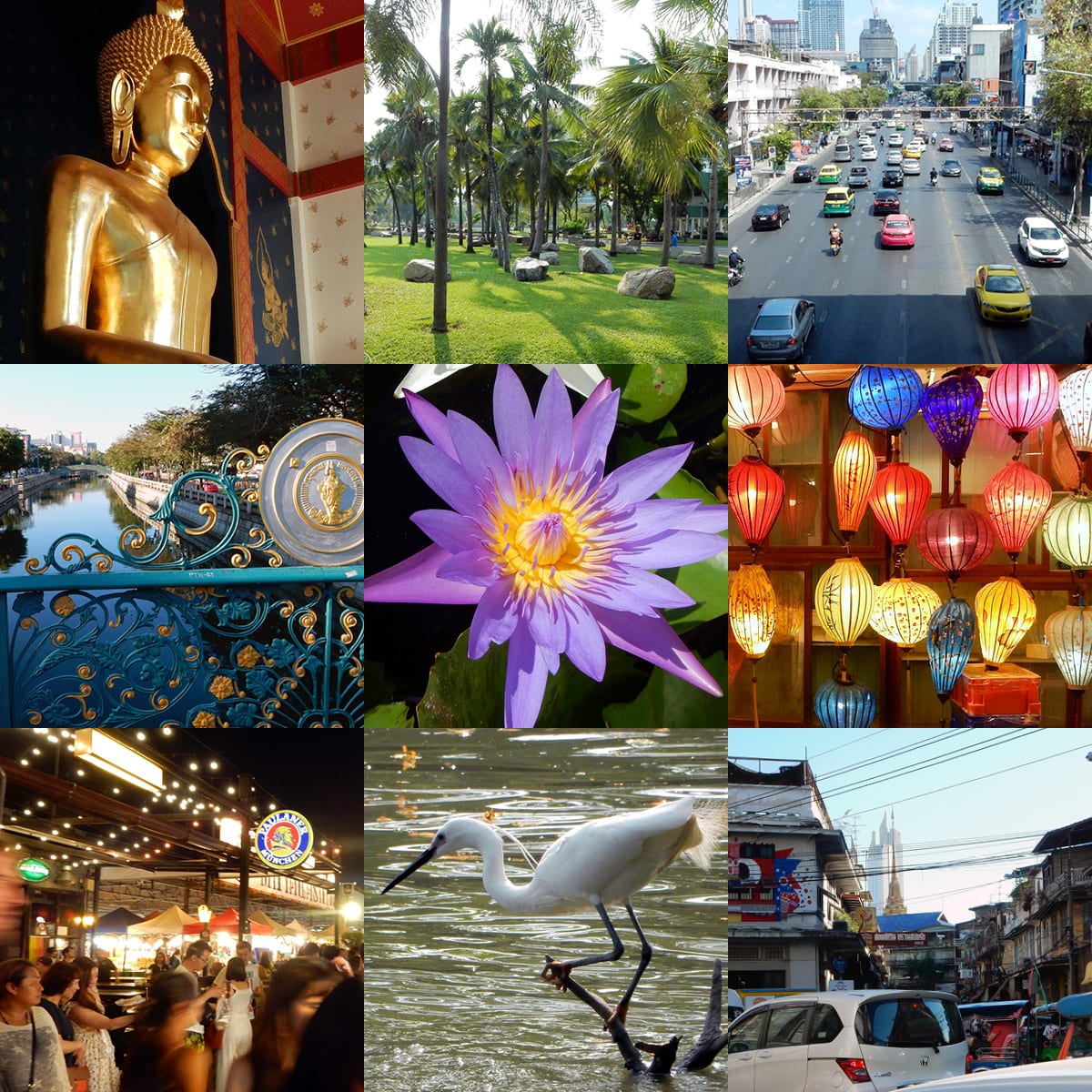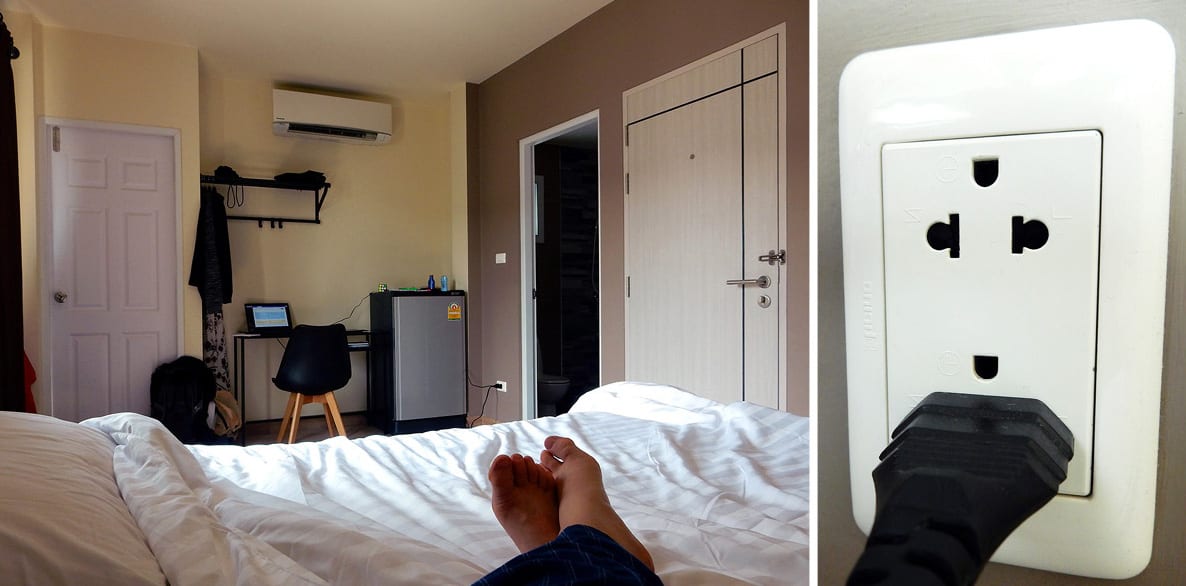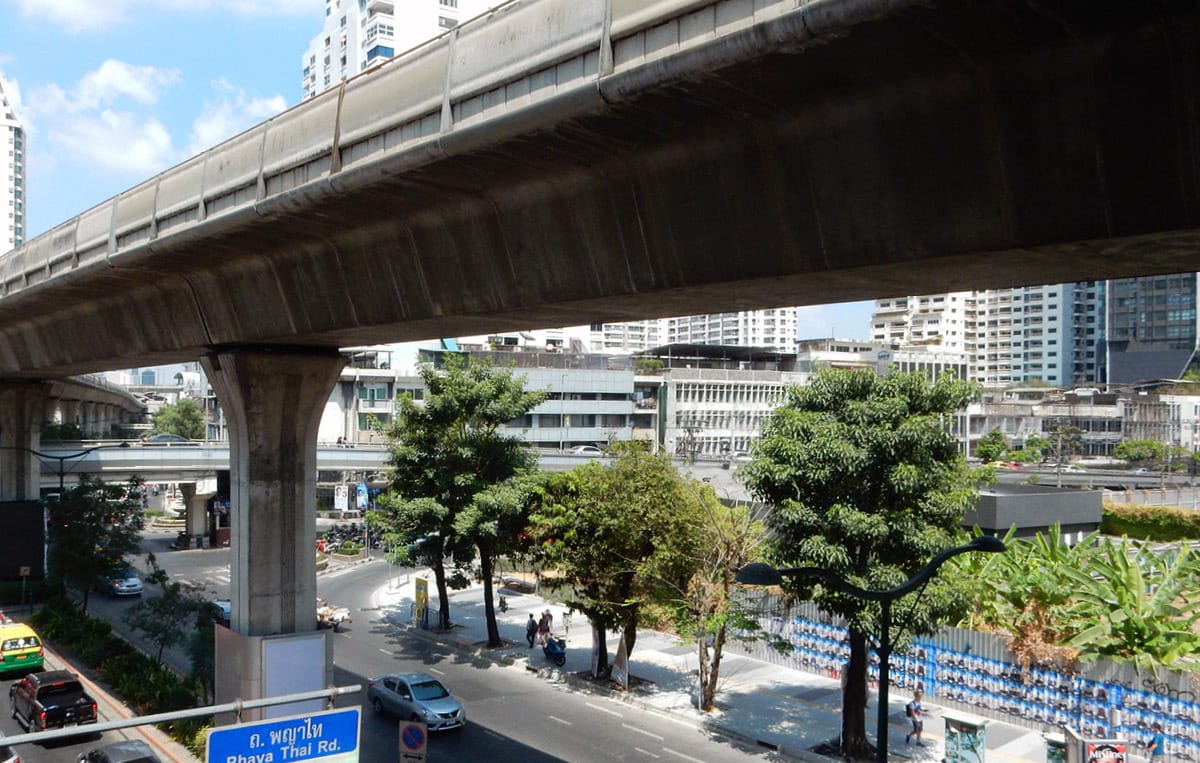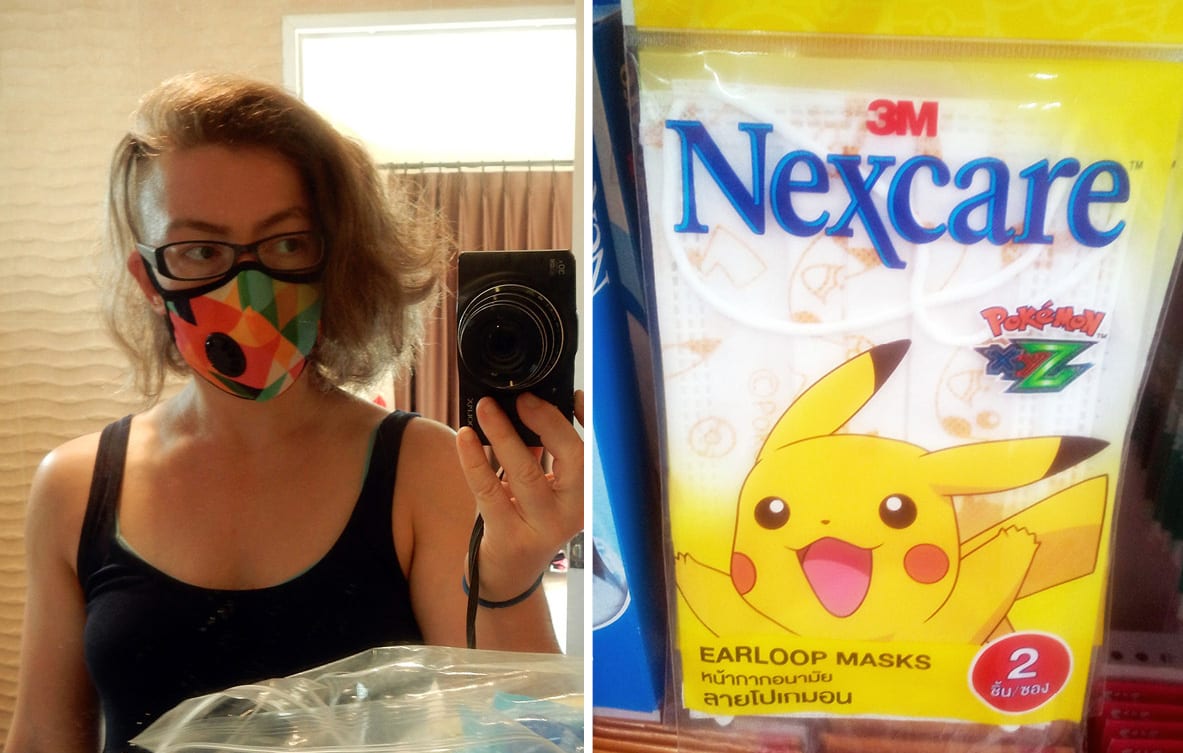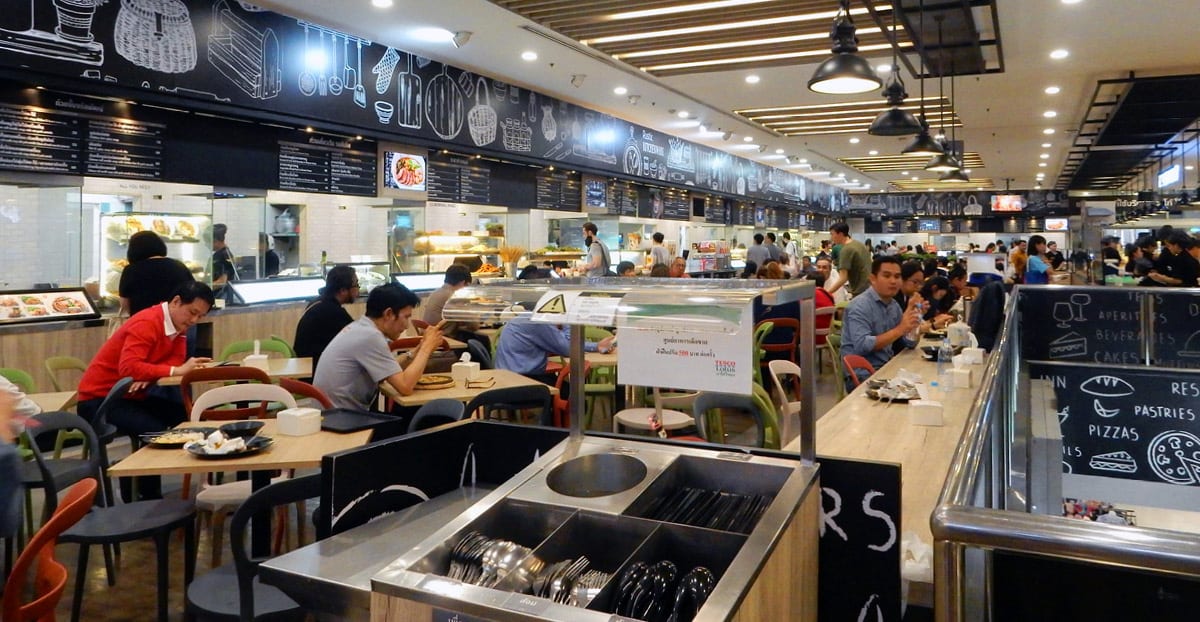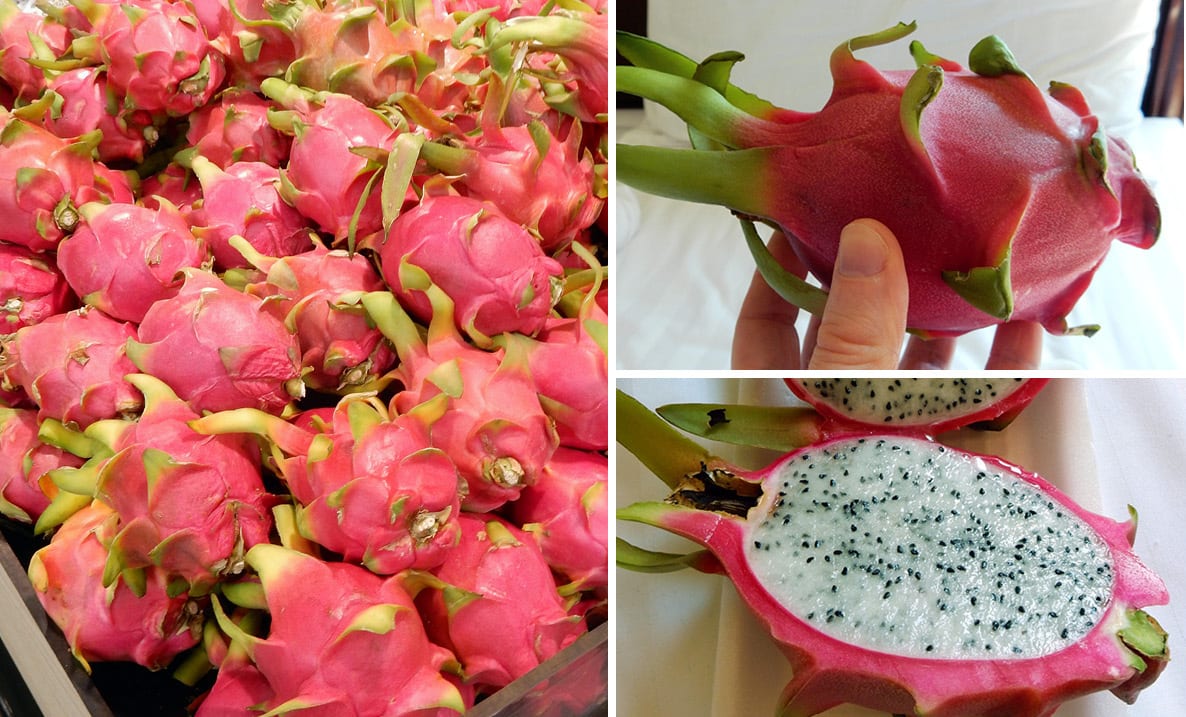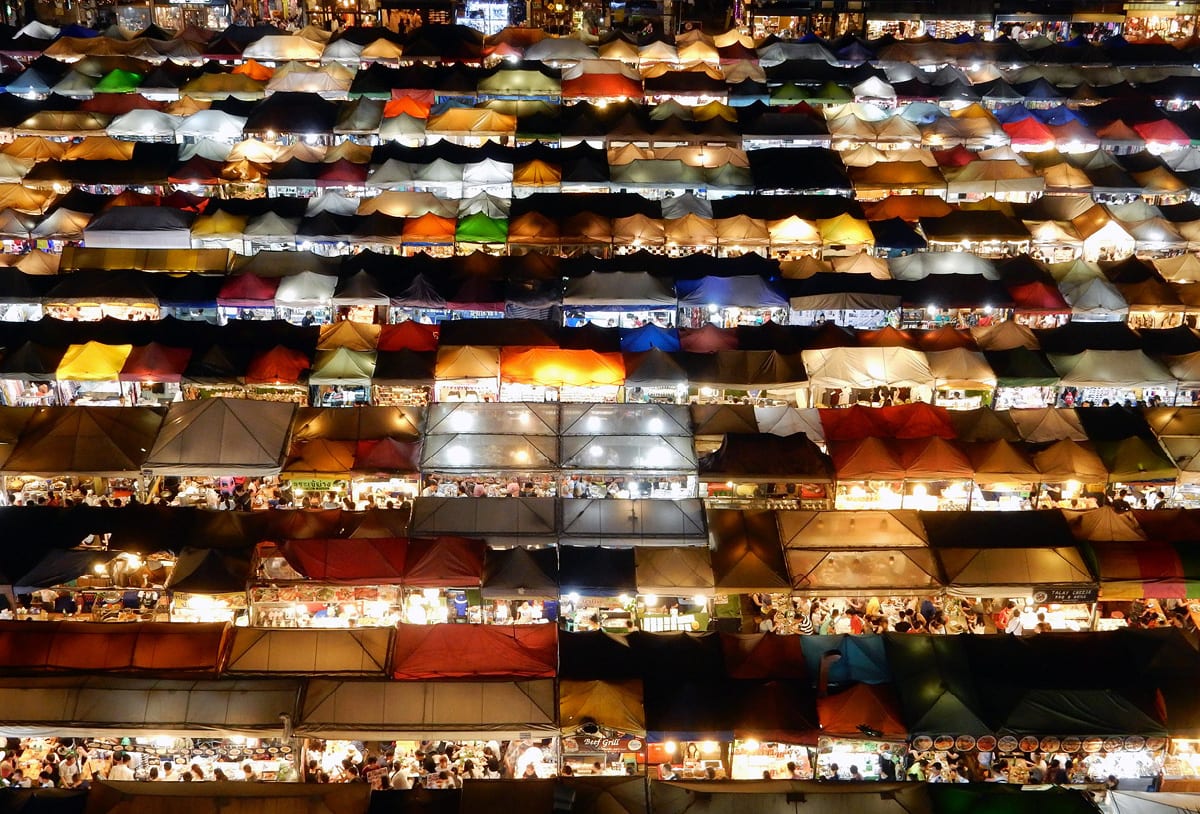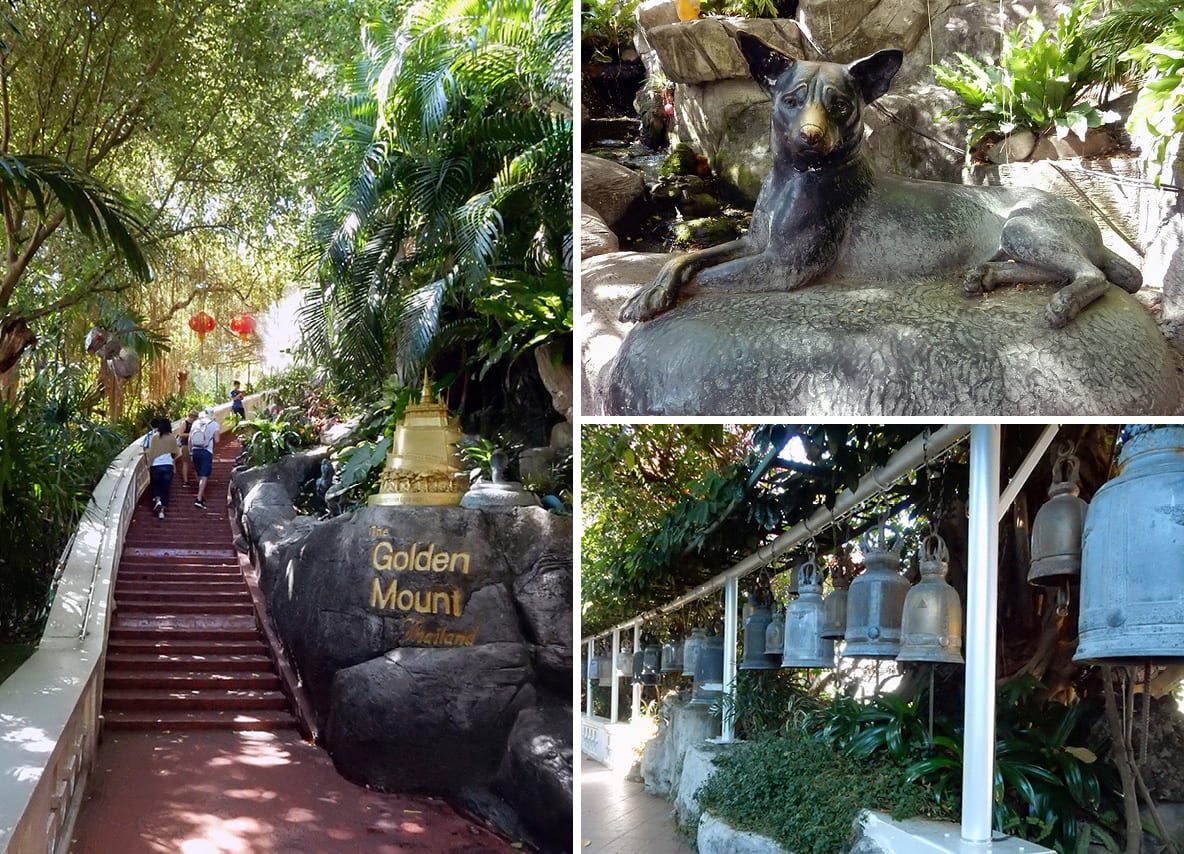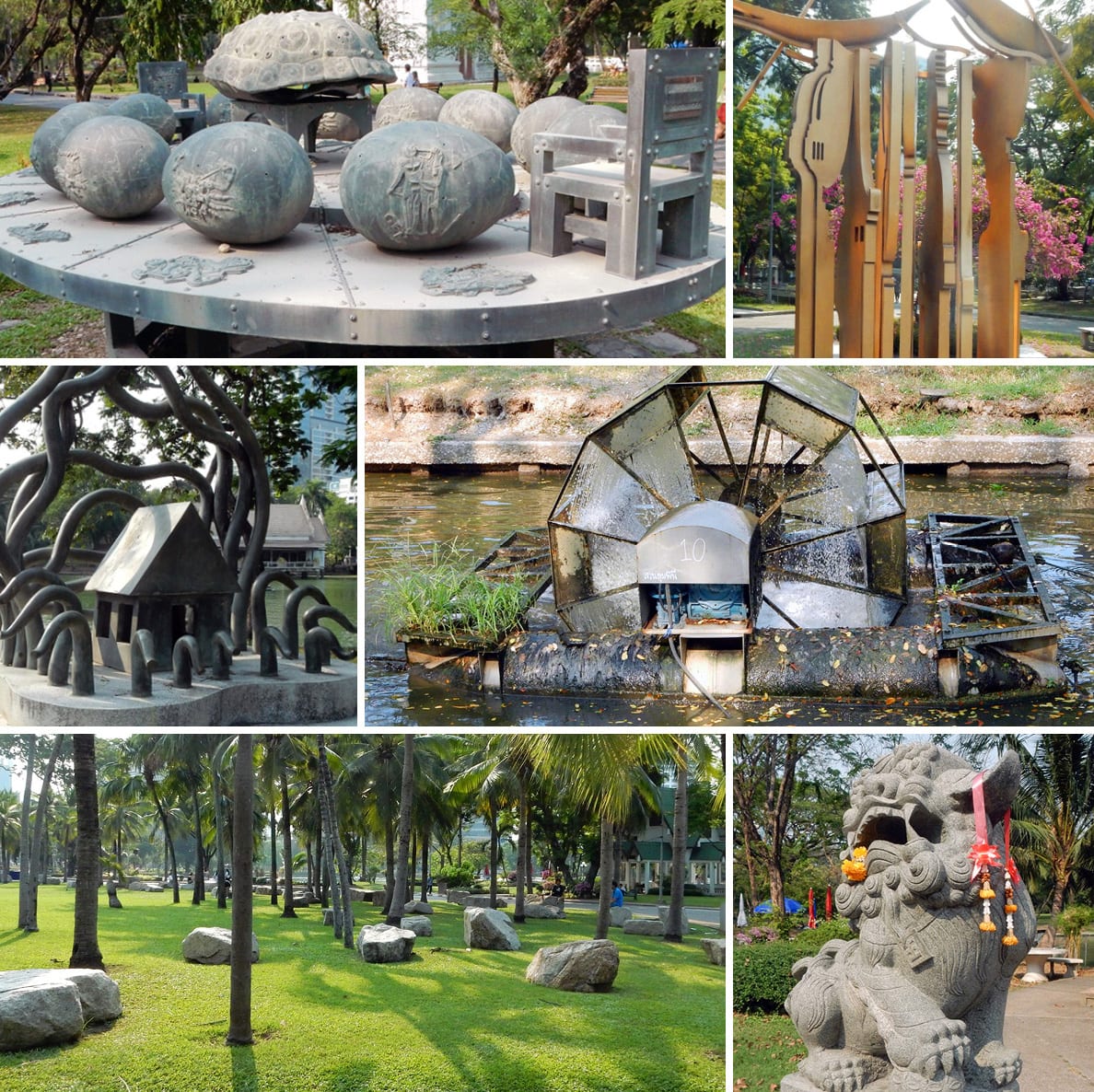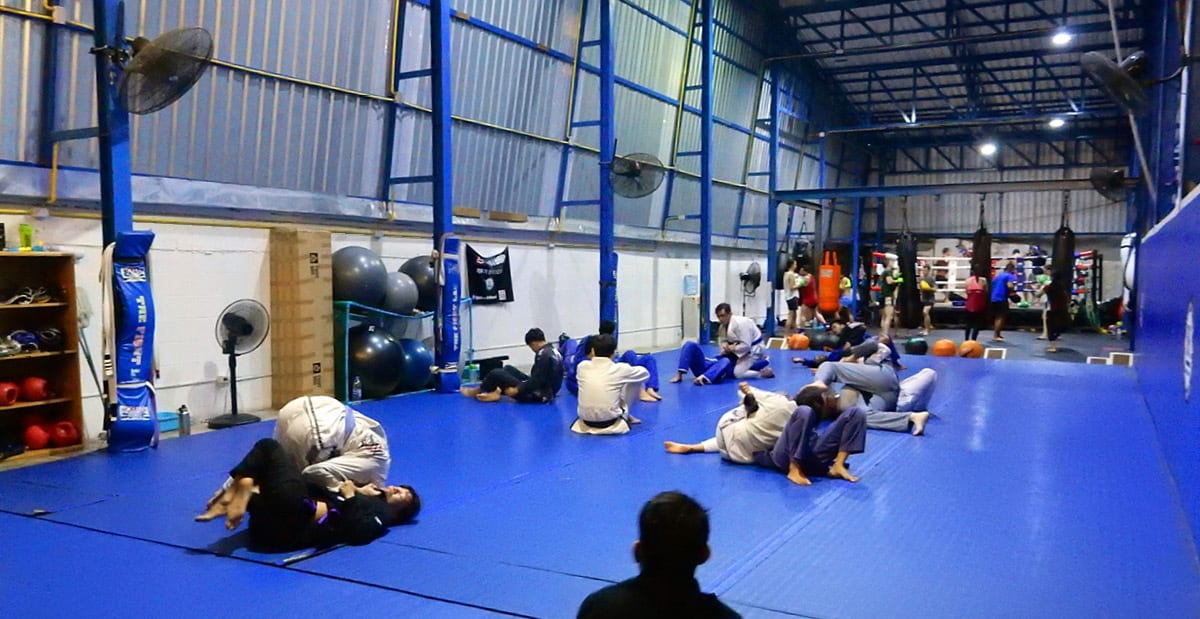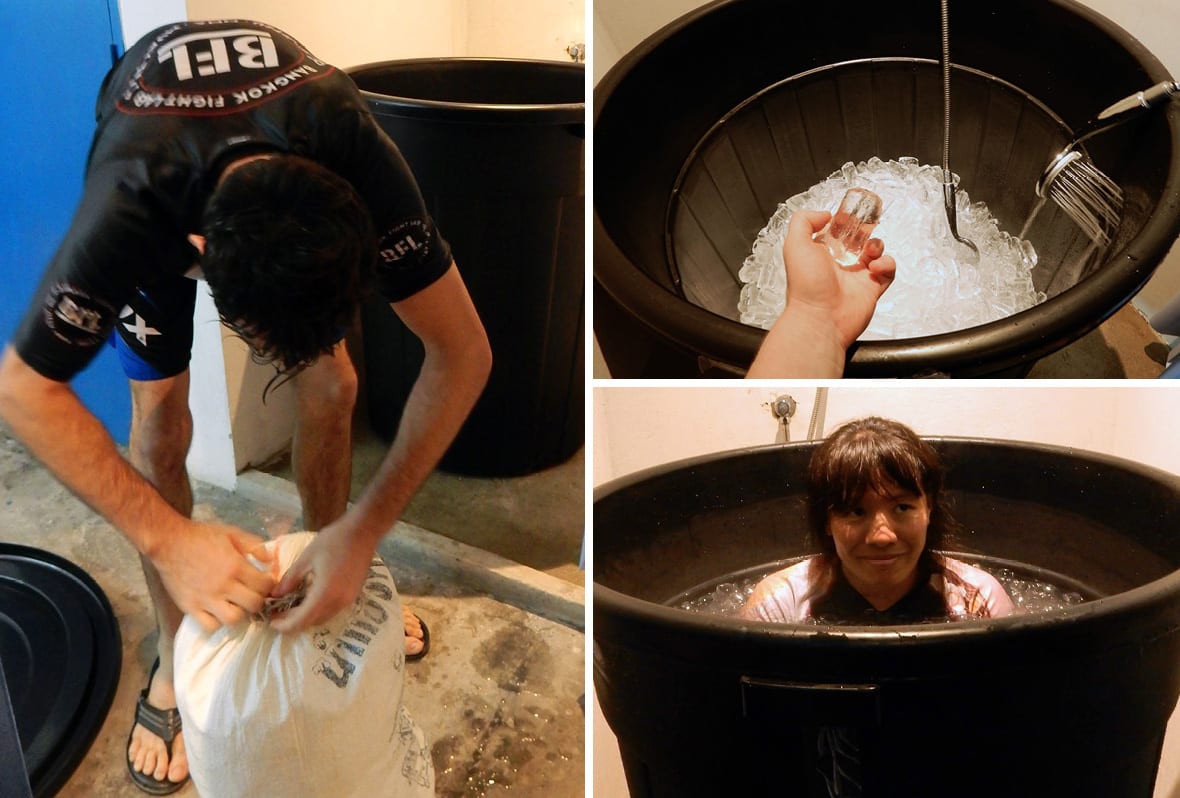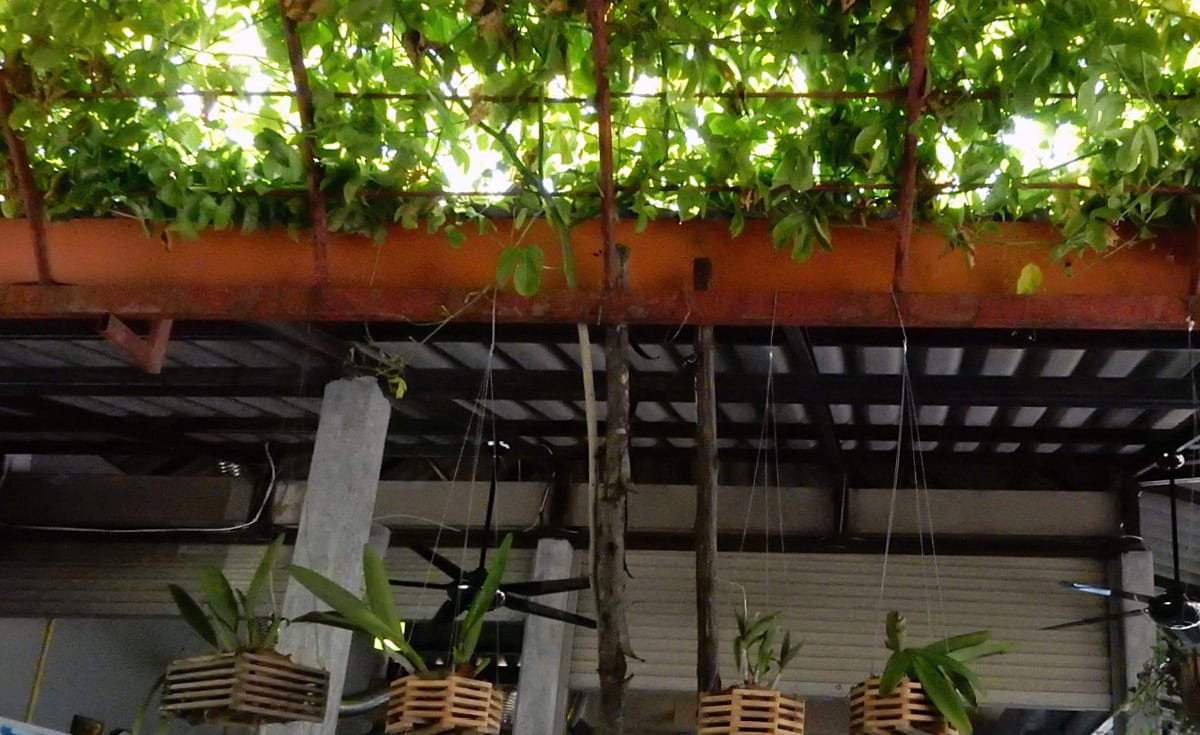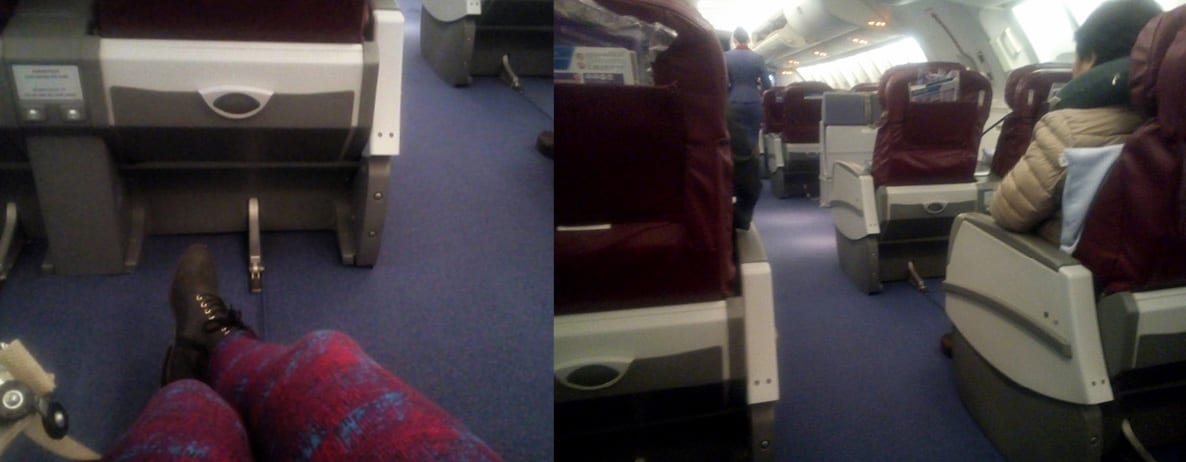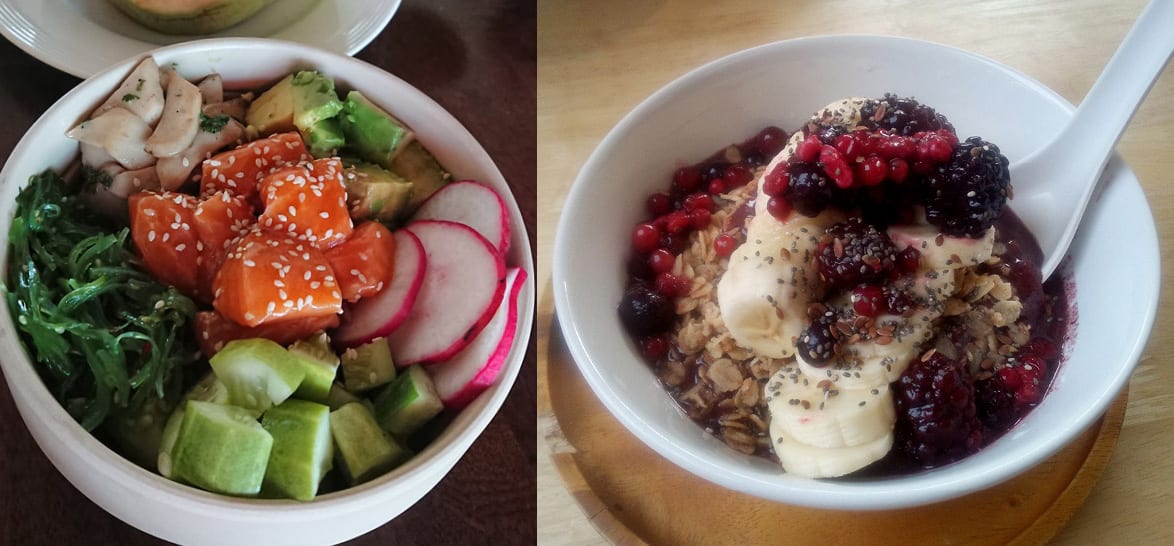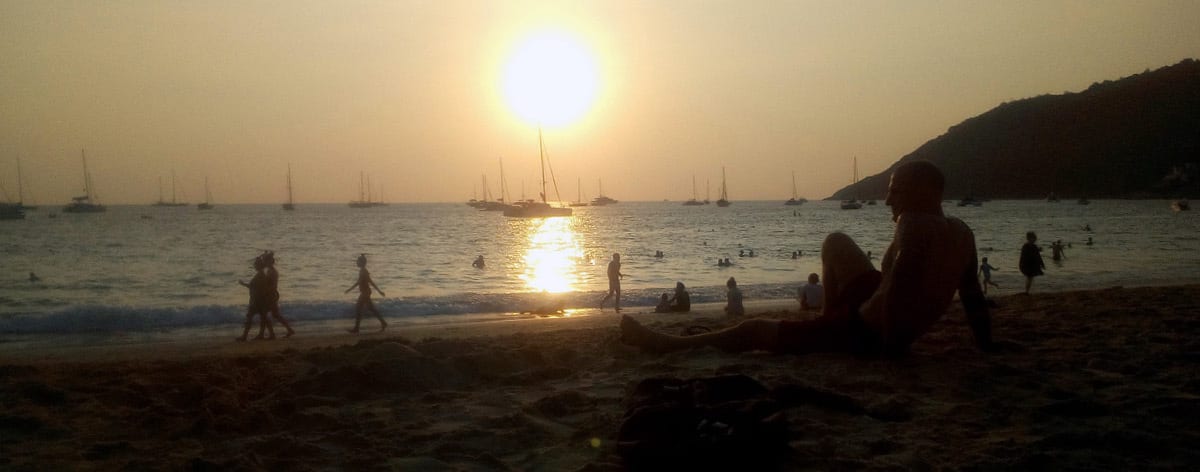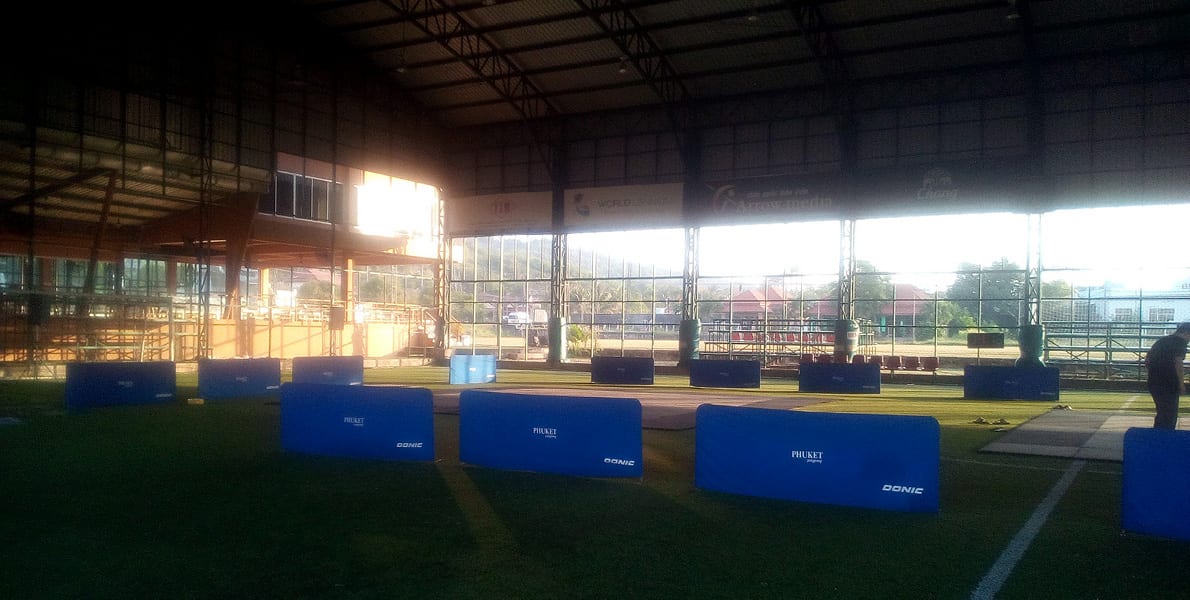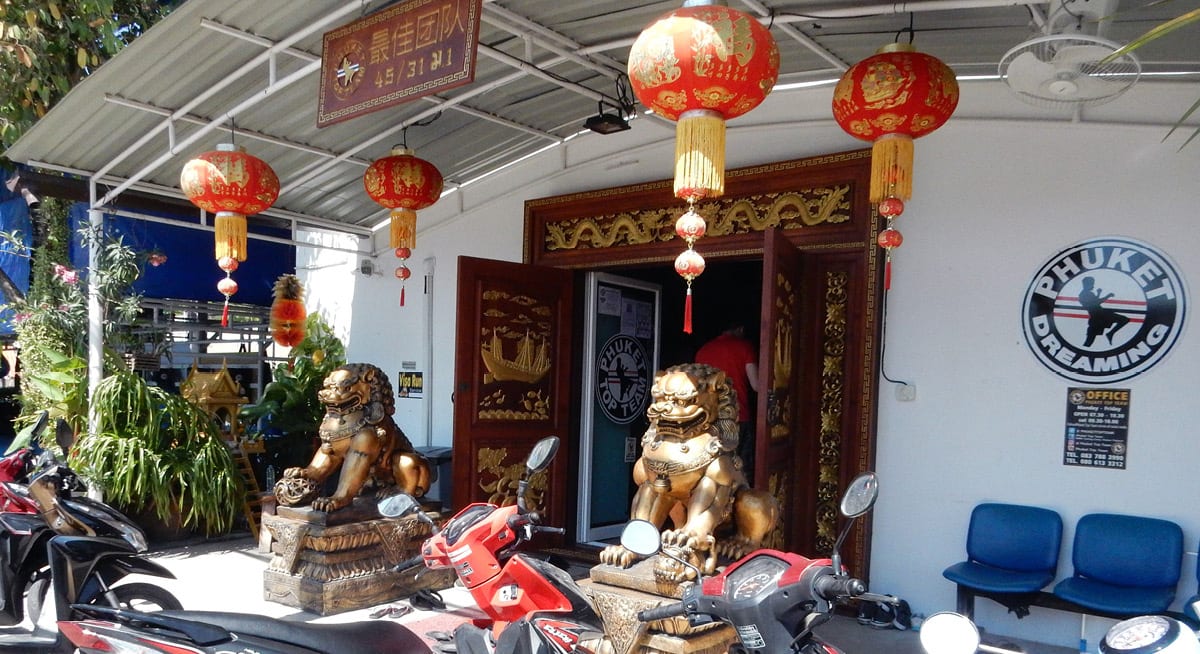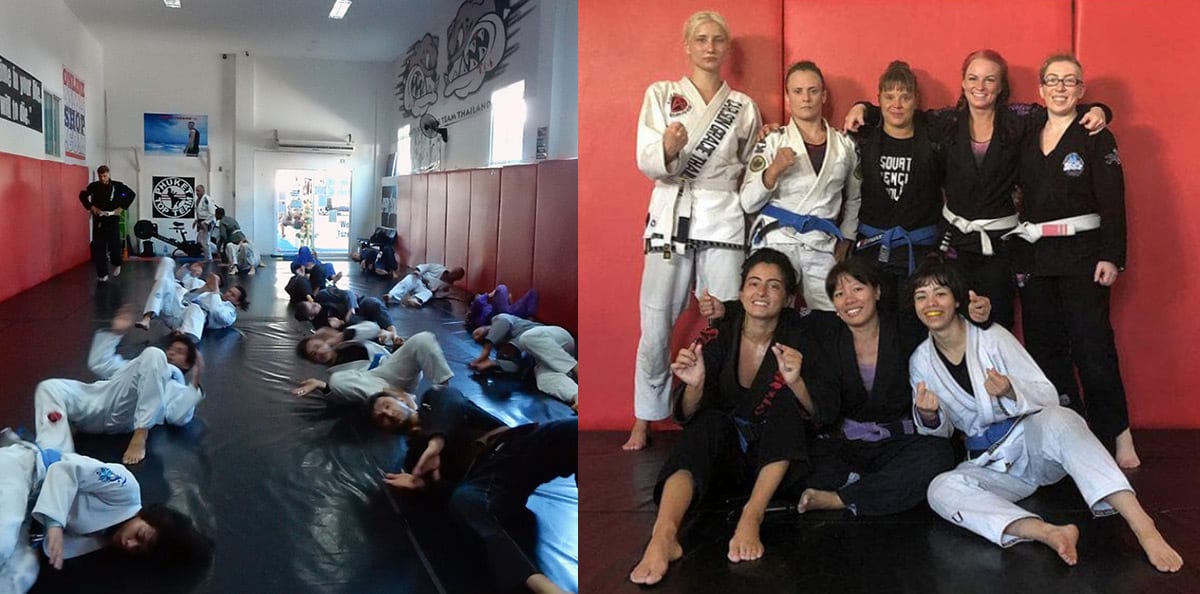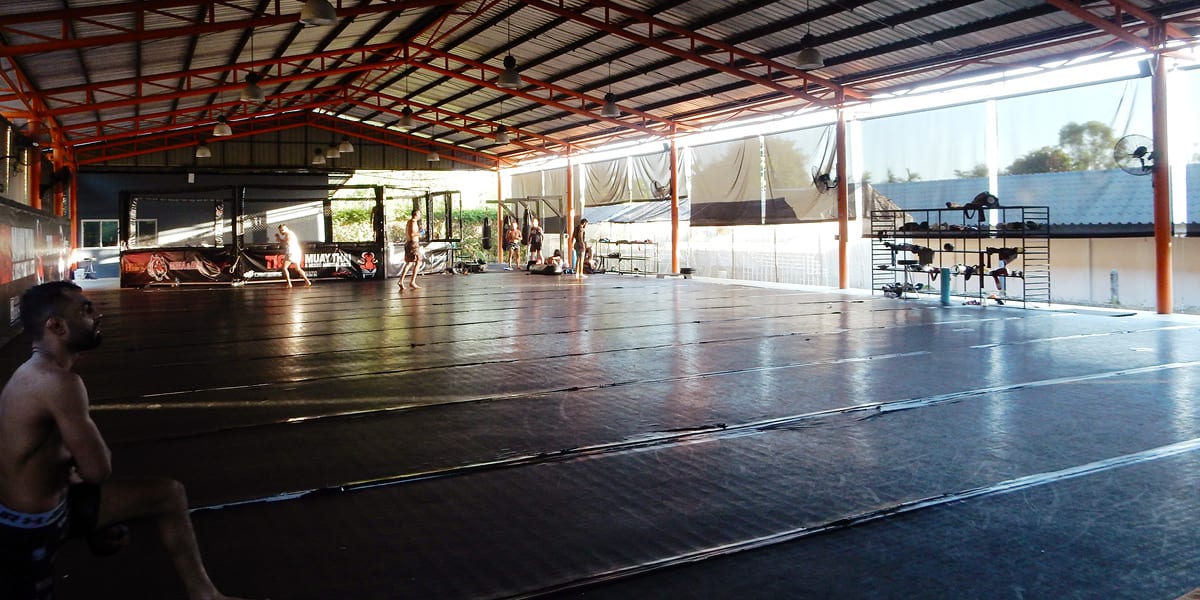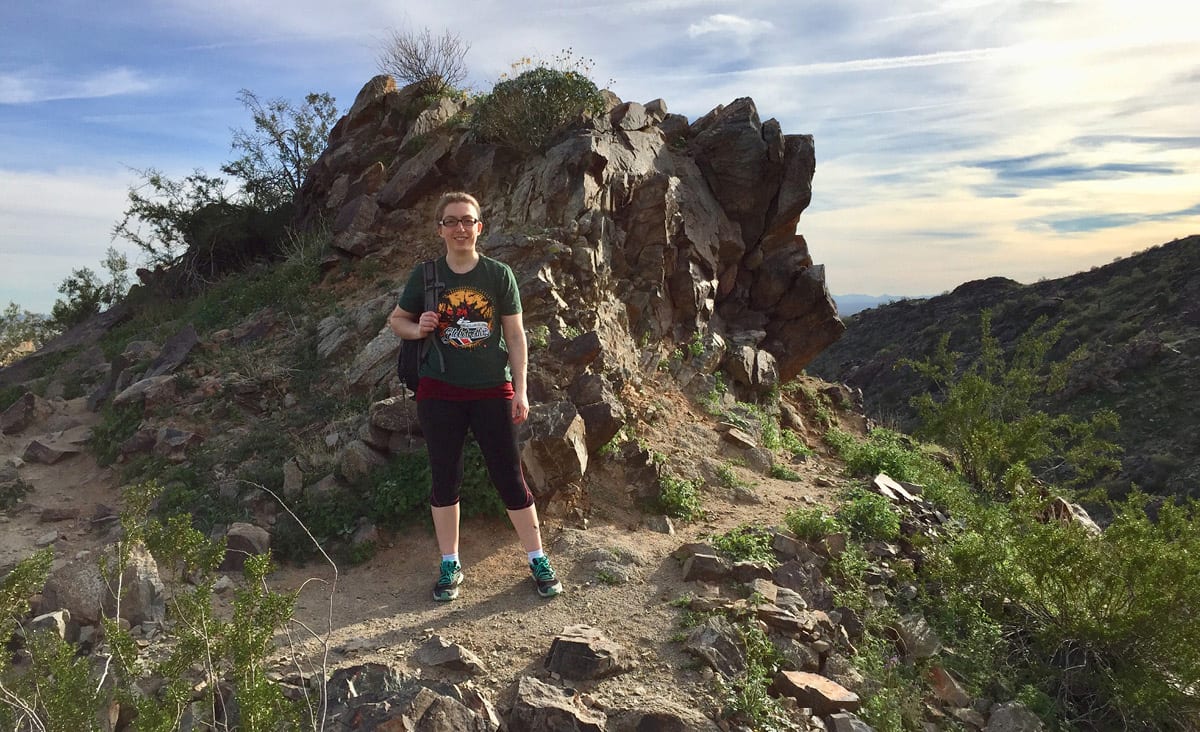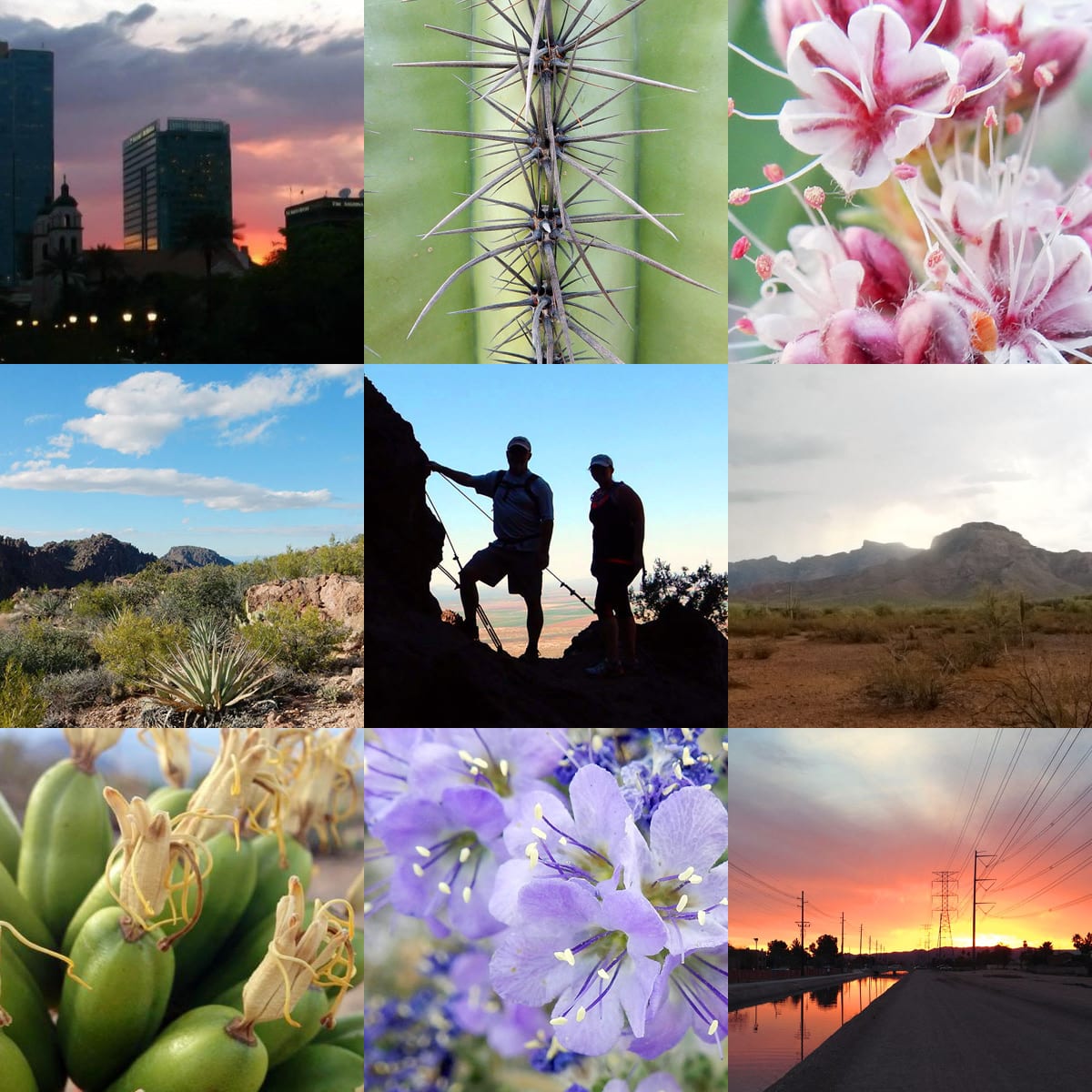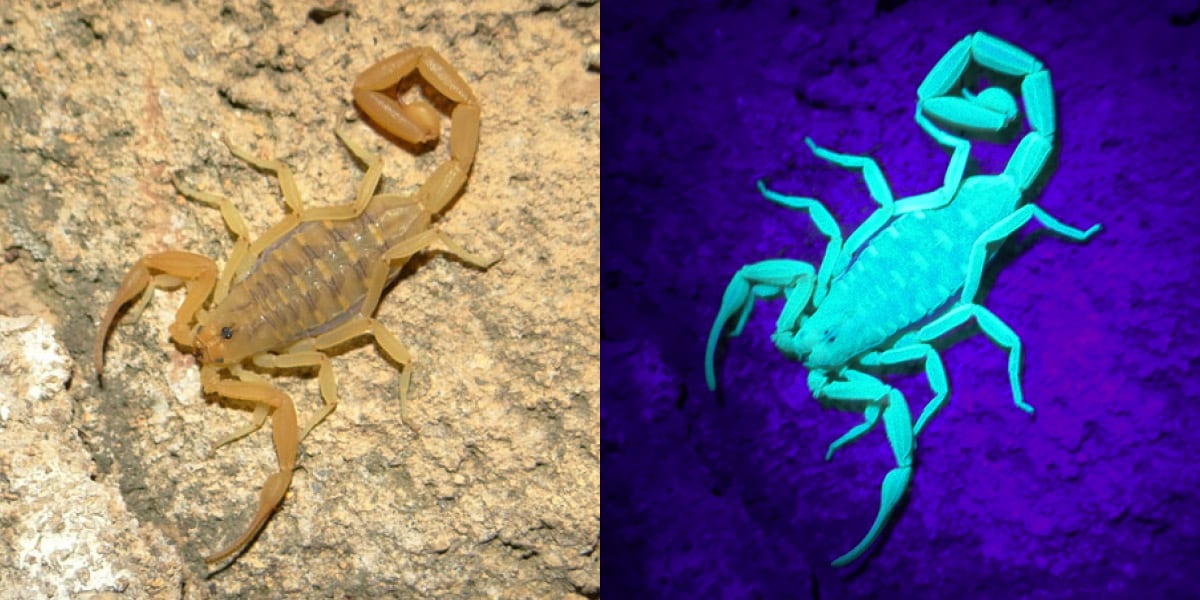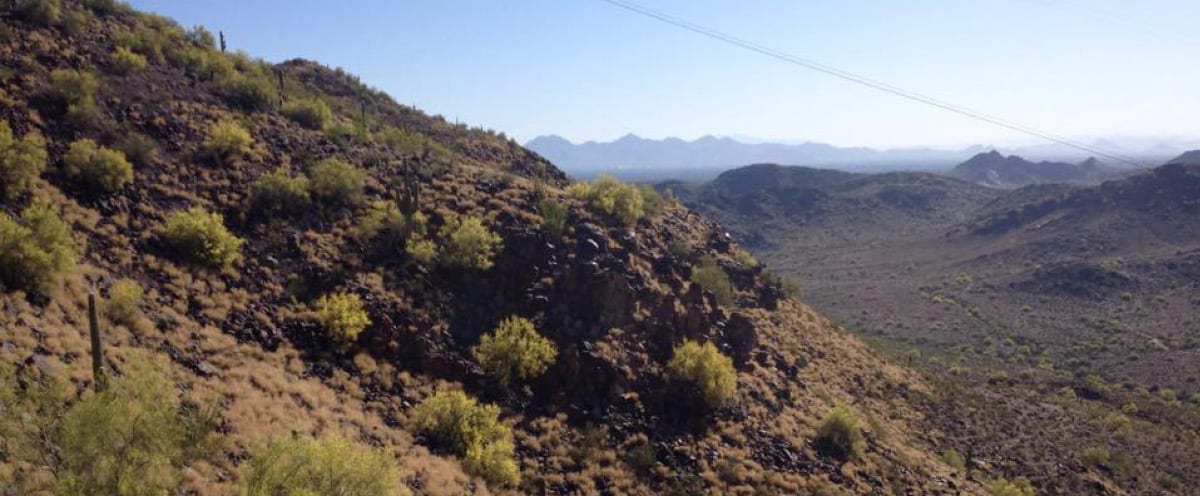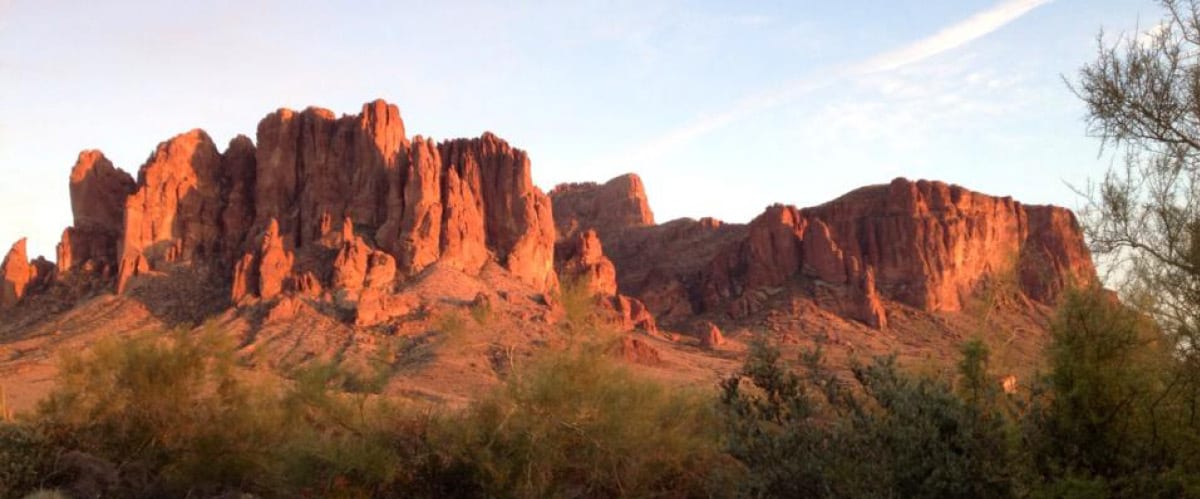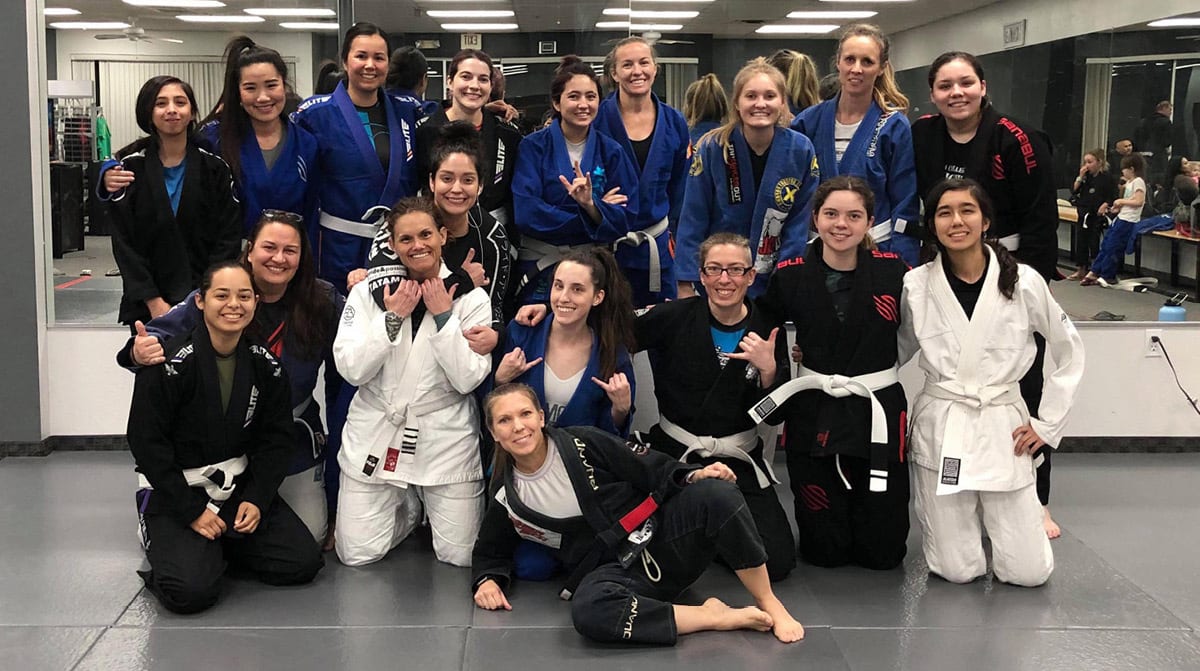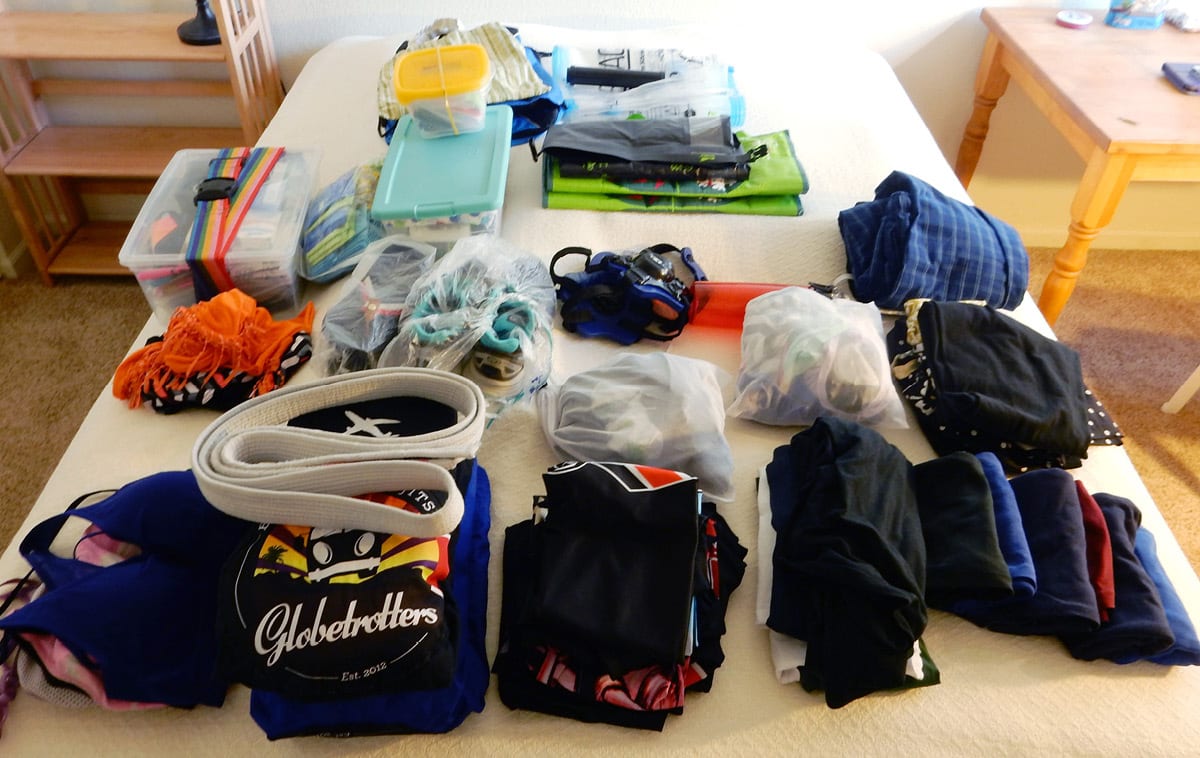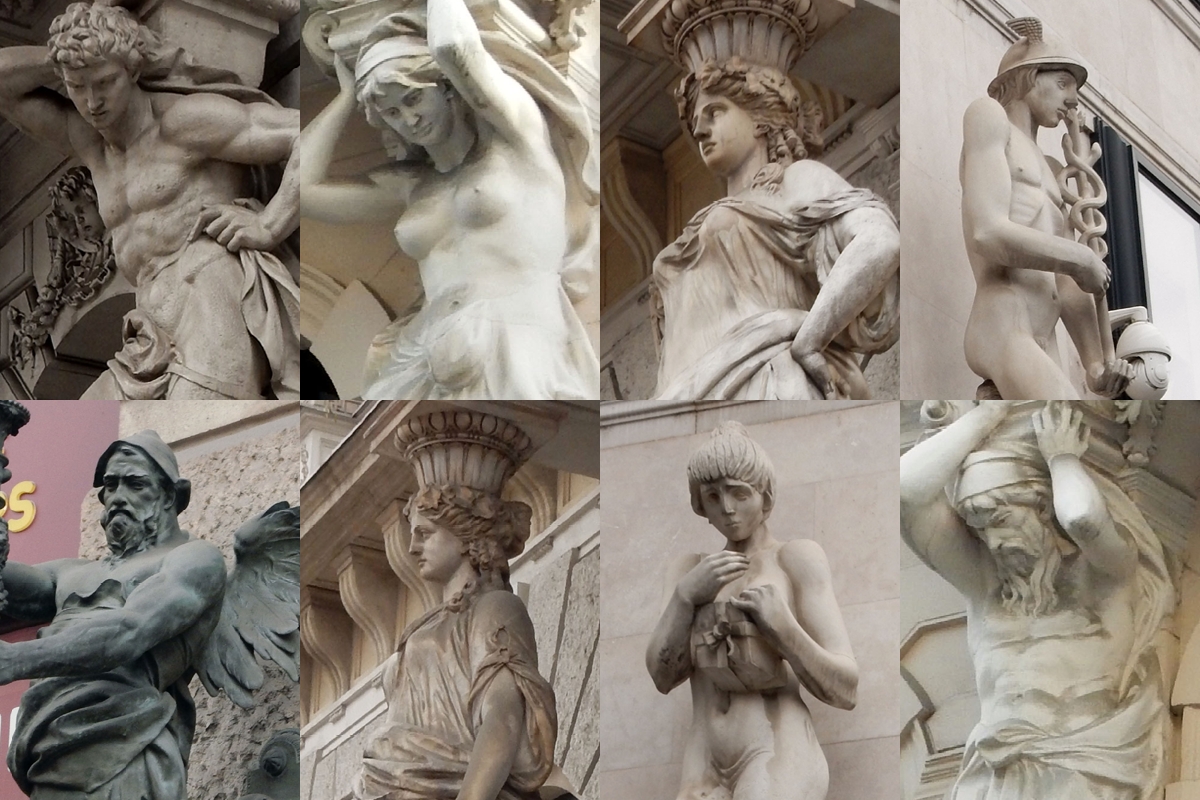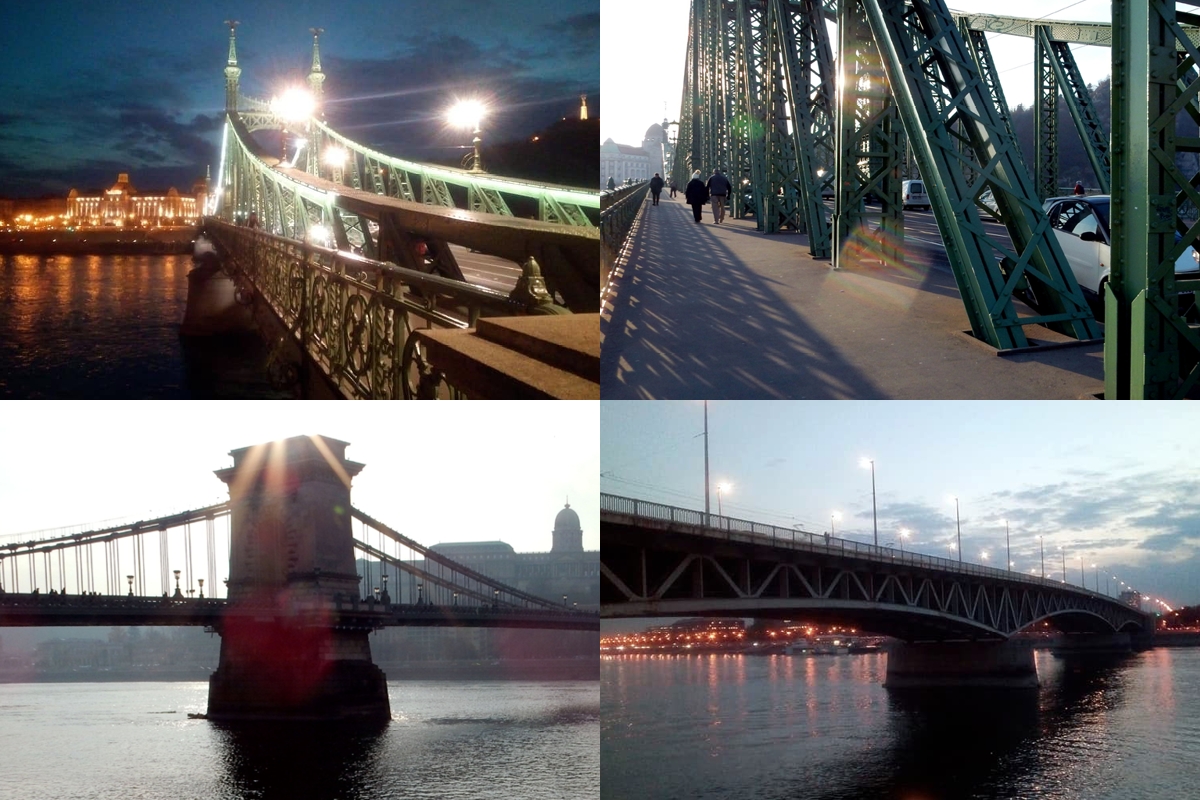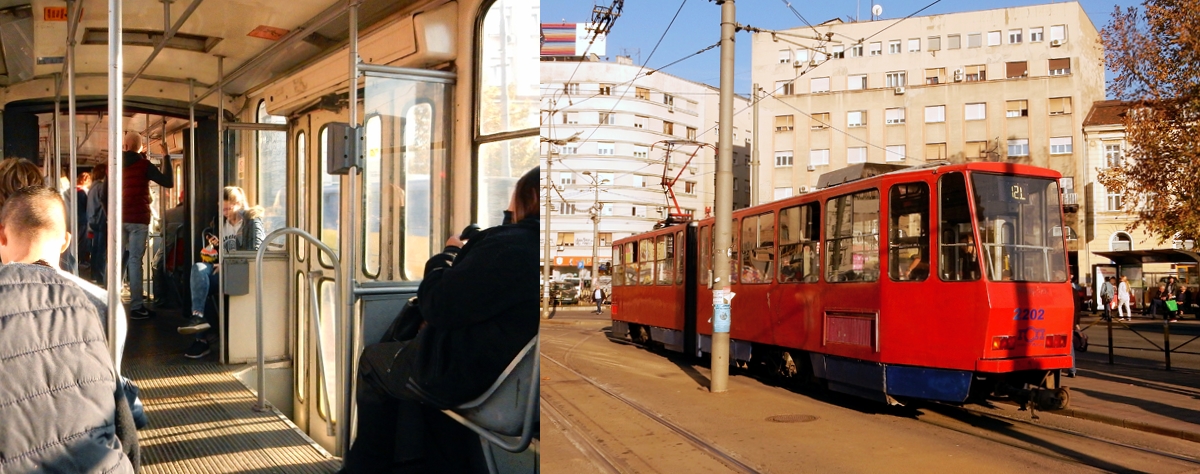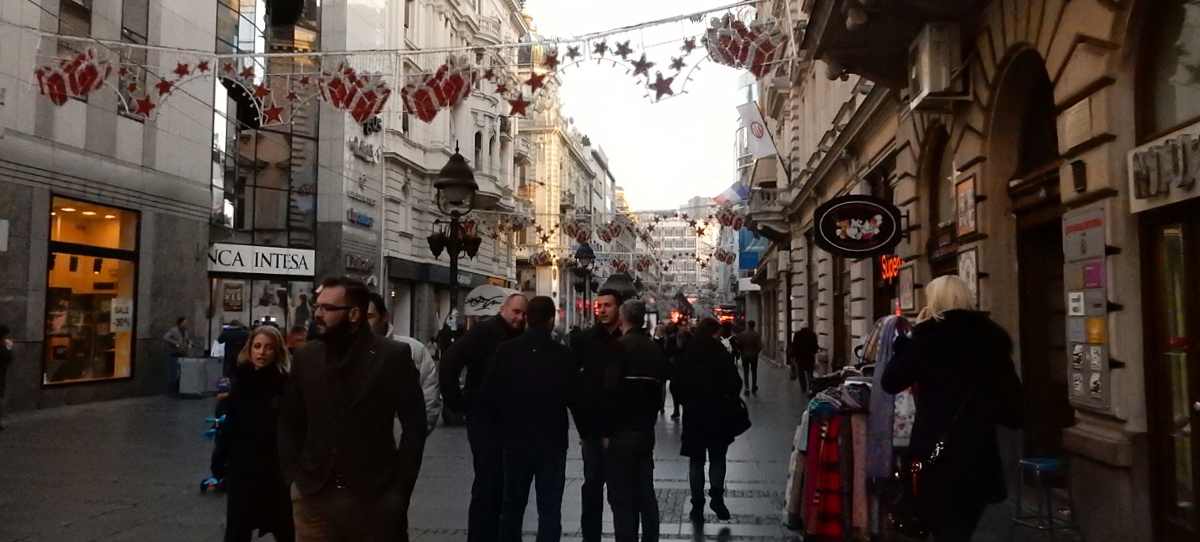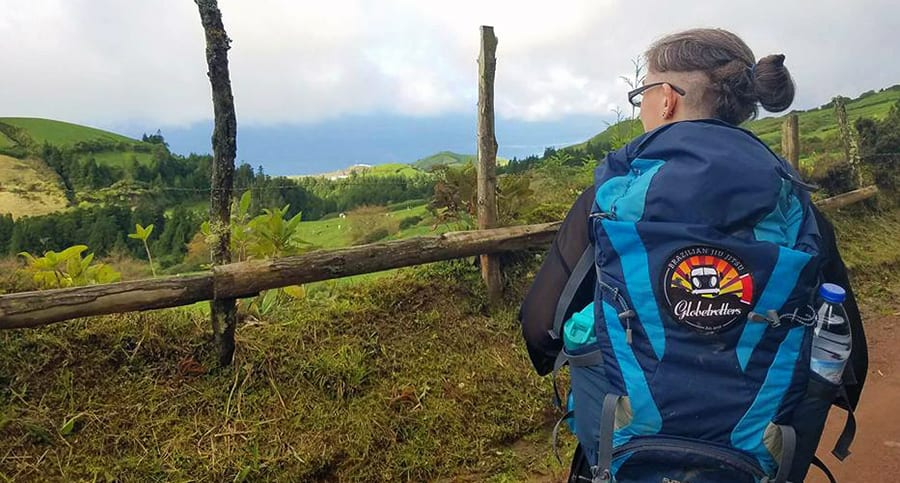Posts
Travel & Training in Seville, Spain
Reasons to go: Great weather, beautiful ancient architecture, friendly people, extremely safe for solo female travelers, great food, great nightlife, pedestrian friendly.
Seville was my final European destination before heading back to USA. I spent six weeks here between August-September. It was my first time in mainland Spain, a country that had been on my “places to visit” list for quite some time which I previously just never seemed to get around to visiting. I’d debated between Valencia, Barcelona, Madrid and Seville, but ultimately chose Seville for a combination of cheap flights and city size. After recently spending many months in SE Asian mega cities such as Bangkok and Hanoi, I now wanted something smaller so quickly ruled out Madrid and Barcelona. Following the recommendation of my aunt who had been to both Seville and Valencia in the past, Seville seemed like the better choice.
Seville
Seville is a beautiful and very clean city. A river runs through the middle, crossed at intervals by bridges of different styles of architecture. A wide path runs along both sides of the river, cobblestoned in some areas with smooth asphalt in other places, with beautiful graffiti along the walls on the East side between the Passarela del la Cartuja (a pedestrian bridge) and Barqueta bridge. This became my regular jogging path on nights when BJJ class wasn’t an option.
City center is full of narrow little streets, tall buildings, cozy cafes, tourist shops, elegant sculptures of metal and stone, ornate ancient churches, and grand monuments. It’s a super charming ambiance for strolling through the city, especially at night. Going further away from the city center, the buildings become progressively more modern.
Logistics
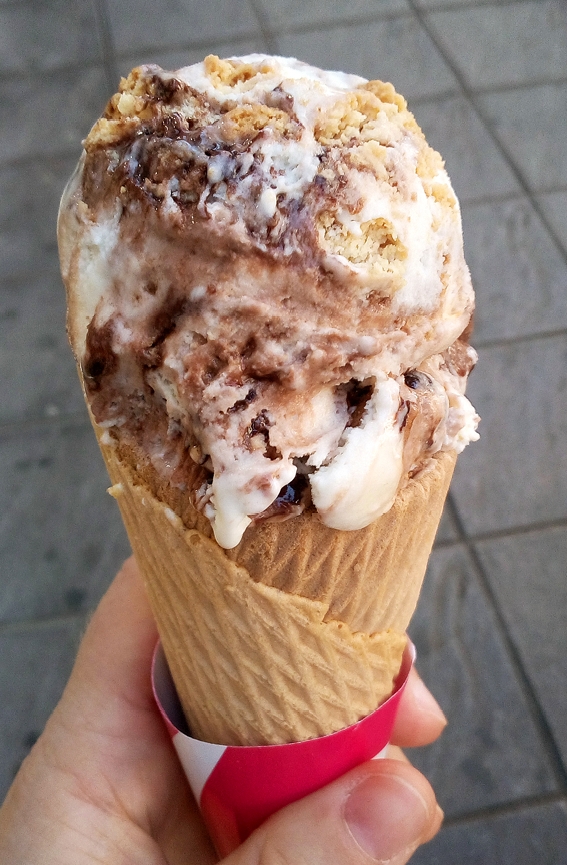 Sevilla is large enough to have an airport (a small one), located about an hour by bus from the city center. Buses go there very frequently and cost 4€ one way, which you pay in cash as you board the bus.
Sevilla is large enough to have an airport (a small one), located about an hour by bus from the city center. Buses go there very frequently and cost 4€ one way, which you pay in cash as you board the bus.
One of the places to purchase SIM cards is Vodafone, which has many locations throughout town. Like most places in Europe, it’s quick, cheap, and easy to purchase a SIM card. You can also purchase SIMs from some of the tourist information booths, though I found these to be a little more expensive. I had a European SIM with some data left when I first arrived in Seville, so didn’t check if any of the stores at the airport actually sold SIM cards.
Many grocery stores do open pretty late (9-10ish), but some close during the midday hours (1pm – 5pm), and are frequently close Sundays (so remember to plan ahead).
The city is extremely pedestrian friendly and easy to traverse without a car. There are bus routes throughout, one above ground tram line, a metro, bike share and electric scooters for rent. I stayed close to the city center so actually just walked everywhere.
Seville is very much a tourist city. It wasn’t uncommon to catch bits of French, English and other languages being spoken when walking through crowds. Seville is also the city of ice cream! You can find ice cream stores on just about every corner in city center, with great selections of flavors.
Language
The main language is of course Spanish, though most people speak English as well (ranging from just a few words to being close to fluent). I had been learning Spanish myself using the Duolingo app on my phone for the last two months, so knew a handful of phrases and words and was happy to practice and try to speak Spanish whenever I could. The Spanish here (I’m told) is spoken much faster than in other parts of Spain, and people tend to cut off the ends of words. Nevertheless, I was often able to pick out some words and have a little idea of what was being said.
I’m continuing to learn Spanish (a little every day on my phone app) and hope to end up in other Spanish speaking countries in the future to have the chance to practice conversing more in person.
Hot Summer Days
The climate in Seville actually reminded me a lot of my home town of Phoenix (Arizona). It was hot and dry with cloudless blue skies most days.
During August, Seville became a ghost town during the middle of the afternoon when the sun was at its peak, streets empty except for maybe a few brave (or foolish) tourists. Stores would close around 1pm and re-open later in the evening. At night, once the sun began to set and the worst of the daytime heat was over, the city came to life again with streets full with people walking around and having food/drink at the many cozy cafes.
My first apartment didn’t have AC. I was a little worried about this reading the listing in advance, but it didn’t end up being a problem. Located on the ground floor and in the shade of other buildings, it stayed comfortably cool throughout most of the day and night.
Catholicism & Capirote
 Seville has a huge Catholic population and many (fully functional, well maintained) churches throughout the city. You’ll see in some stores little stone figures or images of people wearing tall pointy hats and robes, called capirotes. To an American, this is initially a little shocking and instantly brings to mind the KKK. But, these costumes predates that and has no association with the KKK in Seville. Capirotes were worn by people arrested during the inquisition, with different colors representing the different punishments they were given. In modern times, it’s a symbol that represents Catholic penance worn by members during certain processions.
Seville has a huge Catholic population and many (fully functional, well maintained) churches throughout the city. You’ll see in some stores little stone figures or images of people wearing tall pointy hats and robes, called capirotes. To an American, this is initially a little shocking and instantly brings to mind the KKK. But, these costumes predates that and has no association with the KKK in Seville. Capirotes were worn by people arrested during the inquisition, with different colors representing the different punishments they were given. In modern times, it’s a symbol that represents Catholic penance worn by members during certain processions.
Processions
Seville has a lot of processions/parades celebrating various catholic holidays, and celebrating the movement of holy relics from one church to another. One such parade passed through the tiny streets of my neighborhood one evening. It included people playing trumpets and drums, people in fancy suits carrying standards and candles, loud firecrackers, people throwing flower petals from the rooftops, and (most important) a large ornate box decorated with a tree and lady (Virgin Mary, probably?) containing a relic being manually carried by a bunch of people. I asked my roommate why the churches need to move the relics around so frequently. He told me that without moving the relics, there would be no excuse to have a parade.
Work Crunch
I spent less time in Seville than I normally would being a tourist and exploring the city and surrounding area. Having taken some time off for BJJ Globetrotters camp in Heidelberg and visiting my Belgian family the previous month, and wanting some time off to visit with my American friends and attend another BJJ Globetrotters camp the next month – this six week period was more heavily focused on getting as far ahead on my projects as possible. Nevertheless, I did get the chance to visit the following locations close to city center.
Las Setas de la Encarnación (Incarnation’s Mushrooms)
This area consists of a giant wooden sculpture that looks like a cross between clouds, a waffle, and a beehive hanging over a plaza. It was designed by a German architect using birch wood imported from Finland, and cost over 100 million euros to build!
Royal Alcázar (Palace)
This is the Royal palace built for Peter of Castile, a Christian king, and is now a UNESCO World Heritage Site. It’s right next to the Seville Cathedral (which is breathtakingly beautiful in ornate exterior architecture and grandeur), so it works well to plan to see those two locations together.
The royal Alcazar consists of a series of rooms and courtyards in a couple different buildings with beautiful architecture of a couple different styles, which is really quite impressive in detail and density of patterns and decoration. The palace visit also includes a very nice tile collection on the second floor of one of the buildings, which is a traditional artistic style of the city.
There’s a separate ticket option to see the gardens (which look quite beautiful and extensive) but due to incoming stormy weather, these were closed on the day I visited. There is also a separate option to purchase an audio guide. One word of warning, the lines to purchase a ticket and enter are extremely long. I went on a Saturday morning and had to wait about an hour to get in, though I’m told it’s not uncommon for there to be very long lines every day of the week. I’d recommend purchasing a ticket online in advance if you plan on going, as that lets you wait in a different, much shorter/faster line to enter.
Plaza de España
This site consists of an immense plaza surrounded in a semi circle by long buildings lined with columns, with a couple fountains, statues, water passages and bridges. It’s truly impressive in size and grandeur. If there’s one thing I recommend you see in Seville while visiting, it would definitely be this! A scene from Star Wars: Episode II was actually filmed here.
Parque de Maria Luisa
The area surrounding the Plaza de España is a large, well maintained park with many plants, walkways, flowers, ponds, and sculptures. It’s a lovely place to go for a walk or jog.
Training
C.D. Crossfight (BJJ Globetrotters affiliated!) was my home gym for the duration of the stay in Seville. In addition to BJJ classes, C.D. Crossfight offers kickboxing classes and includes a regular gym room with machines and weights. I didn’t use the regular gym part, but it seemed well maintained with a good set of basic equipment. The mat room is actually located down the street from the weights room. It’s not a huge space, but is clean and has good quality mats.
The C.D. Crossfight team was very friendly and welcoming to travelers – I felt instantly at home here! Aurelio Castilla (black belt) was the main instructor, with other brown belts occasionally giving class when Aurelio was unavailable. Aurelio himself had traveled and trained in a handful of other places throughout his BJJ career as well, such as Poland, Dublin and California.
BJJ class normally took place in the evenings, 5 days/week. Being a smaller gym, there were no separate fundamentals/advanced or kids classes. Rather, everyone trained together, with more advanced students helping the newer ones when needed. Classes were given in a mixture of Spanish and English. Fortunately, there was always someone who spoke English around who was able and willing to help translate. Or, Aurelio himself would repeat the explanation in English if anything was unclear to me. The beginning of my stay fell during summer break, so classes were much more intermittent for the first couple weeks with many students out of town. I unfortunately wasn’t able to train quite as regularly as I normally would have during that period. Once summer break ended though, the normal classes resumed and become much more regular.
Some days, students and instructors came to visit from gyms of other nearby villages as well, packing the mats of the small C.D. Crossfight gym space! It was not uncommon for the students and instructors to go out for drinks after training, with everyone invited to join – it was a very inclusive, welcoming, and family-friendly atmosphere.
Aruelio’s Birthday
Sometime during the middle of my trip, Aurelio had a birthday party held outside at a country house in a nearby village, with many of the people from the gym attending. There was a small square of puzzle mats set up in the shade for rolls, and a giant public pool – perfect for cooling off after rolls on a hot day! There was also cold drinks and tons of great food (including some Spanish specialties like salmorejo and tortillas). Salmorejo is a thick drink made of tomatoes, oil, bread, garlic and spices, a little like gazpacho but different. Tortillas here are NOT the thin wraps we use to make burritos in the states. Here, tortillas are a savory dish that looks like a very thick omelette made of eggs, potatoes, onions, oil and spices. Very tasty!
Giant thanks Aruelio for making me feel like a part of the team while I was here! I leave Seville with many good memories of the city and the friendliness of the people here.
Back To Bangkok
Just to recap… I’d been exploring SE Asia in February 2019. Since then, I’d stayed (and trained!) in the following cities: Phuket (Thailand), Bangkok (Thailand), Hanoi (Vietnam), Chiang Mai (Thailand), DaNang (Vietnam), and Penang (Malaysia).
Decisions
I now had only one month left in the SE Asian portion of my trip before flying back to Germany for BJJ Globetrotters Summercamp in Heidelberg. I debated for some time whether or not to return to Bangkok, or try somewhere new. Which, I think, is a dilemma that many travelers face. Is it better to explore an unknown city (which may turn out to be a new favorite), or to return to a place you already know and love?
The biggest appeal to Bangkok was budget, convenience, training, and… Vara! For convenience, Bangkok (specifically my little single-room studio close to the gym) really can’t be beaten. My tiny home was budget-friendly and well-equipped, with friendly landlords and close to a Skytrain entrance. There was a coin-operated laundry machine downstairs with plenty of hanging space to dry clothes (very important for daily training!). And (best part!) it was literally next door to Bangkok Fight Lab, which includes an amazing vegan cafe (Nourish) upstairs inside the gym! There was also a massive Tesco grocery store down the street and many restaurants in the area, placing everything I needed within an easy 10 minute walking radius. I was going to be taking some time off the following month to attend BJJ Globetrotters camp and visit my Belgian family, so wanted this month to be focused on training and making as much progress as possible on work projects in advance.
Ultimately, I left the decision of whether or not to stay in Bangkok again up to chance. I specifically wanted to stay in the same studio as before, which was often (unsurprising) fully booked (there’s only 6 rooms for rent, at least one of which was occupied by a year-long tenant). I thought to myself that if a room was available, I’d stay in Bangkok again. Otherwise I’d try a different city. As it turned out, the studio was free for the dates I wanted so – Bangkok it was!
Bangkok, Round 2!
My month is Bangkok flew by! I quickly fell into a comfortable daily routine of training and working all day long, with breaks as needed for food and laundry. Everything that I loved the first time continued to be awesome – good weather (despite the occasional downpour that comes with rain season), good cheap food, hangouts with Vara, and a really great gym atmosphere! In addition, the pollution had significantly decreased since my last visit, making air masks and daily air quality checks unnecessary. I even had the chance to squeeze in a few new cool tourist experiences.
Massage Places
After traveling SE Asia for 6 months, I finally went to a massage place! I was blown away by how extremely affordable these are here. In the US, a typical one-hour massage can cost anywhere from $40-120/hour. Here, it’s $6.50 – $13 per hour! There’s massage places everywhere in Bangkok, so it’s really easy to find one. You can easily spot the legitimate facilities by the uniforms the people working there wear. If it’s a simple outfit that looks a little like medical scrubs, it’s a legitimate massage establishment. If the workers are beautiful ladies in skimpy dresses with lots of makeup on… it’s probably a different kind of establishment.
The Thai massage at the place I visited was actually pretty similar to the Thai Massage places I’ve been to in the US, minus the relaxing natural music for ambiance. The message place consisted of two stories. There was a large downstairs area filled with big comfy chairs with people getting massages and some benches for arriving/leaving guests. And, a smaller area upstairs with a series of smaller private rooms partitioned with curtains. The entire place smelled of spices and tiger balm. You can choose the kind of massage you want from a menu. Some focus more exclusively on certain body parts (back/shoulders, for example), or include extra lotions and oils.
I went for the typical Thai massage, which is a full body massage without oils and lotions, and involved lots of stretching. These are held in the private rooms upstairs. You’re given a loose, light comfortable shirt and very baggy “fisherman’s pants” to wear. FYI – the correct way to wear these is put them on with the string in the back, then fold the left and right baggy waist part over the front, then tie the string over that. Vara came with me the first time I went here and explained how to put on the pants. You can leave or remove underwear and bra beneath these, and if you’re a woman the staff will specifically ask if you’re comfortable with a male massage person. It’s customary and polite to tip.
Rooftop Bar
On my last day in Bangkok, Vara and Bohyun (who I’d met at Bangkok Fight Lab) had the brilliant idea of taking me to one of Bangkok’s rooftop bars! This is basically exactly what it sounds like – an open air bar on the top of one of Bangkok’s many supertall buildings. This one was on the 49th floor, was very impressive but was still by far not Bangkok’s tallest building. I expected it to be pretty cool, but the stunning 390 panoramic views of the city at night stretching off to the horizon in every direction still managed to exceed my expectations!
Hotpot
Another really neat thing that Vara and Bohyun introduced me to (on a different evening) was Thai Hotpot dinner. This consists of a pot of boiling broth on a hotplate in the center of the table. Guests order plates of various raw foods (meats, seafoods, noodles, tofu or veggies etc.) to add to the pot, making a sort of soup which cooks at the table with sauces to taste on the side. Very tasty!
Training at Bangkok Fight Lab
Training at Bangkok Fight Lab continued to be as excellent as before! Its was nice to be able to return to a gym and see familiar faces, and to catch up with everyone I met during my first stay here. The schedule continued to focus on one concept for a couple weeks at a time, progressively adding more details, related variations, and counters before moving onto the next technique. Which for me is the best way to learn, as I tend to forget things quickly if I don’t repeat them many days in a row.
Living so close to the gym, I was able to train twice a day on most days. The noon class was all-levels or fundamentals in gi, and I usually stayed for an hour of rolls. Evening class was all-levels gi or nogi. Classes most days were taught by black belt Morgan Perkins, with Friday evenings and Sunday mornings taught by black belt Colin Slider. I ended up renting a gi, since my two travel gis weren’t enough to train 2x/day and have clothing completely dry again in time for the next class (things dry more slowly in the very humid rain season). Having three gis to cycle through worked out really nicely.
Vara (purple belt) trained in the evening class as well, and continued to be my most regular training partner. A class with Vara always felt like I was getting 3x the experience as from a regular class, thanks to her insight and suggestions on how to improve my movements, and also for the number of reps we were normally able to get in. Giant thanks again, Vara, for a very awesome month of training!
Traveling & Training in Penang, Malaysia
Reasons to go: Great food, very affordable (except for accommodations), modern big city convenience, much English spoken, great street art, temples of many different religions
I’d been bouncing back and forth between Vietnam and Thailand for the last couple months, changing countries every time my 30-day visa expired, which was working out pretty well. One month, I found, was a good minimum amount of time to spend in a city, to give me enough time to get to know a place and to get an authentic sense of the flow of daily life. Also, despite having a very minimalist life (all of my things fit into one suitcase and one carry-on bag) – packing and moving ends up taking most of a day, plus transportation is an extra expense. So relocating wasn’t something I wanted to be doing too frequently.
But, after connecting the dots between cities to end up certain places on certain dates and to take advantage of especially cheap fly dates, I found myself with a 2 week period between DaNang (Vietnam) and Bangkok (Thailand). As it very conveniently turned out, an old friend of mine from Phoenix was also traveling South East Asia at the moment and was interested in seeing Penang around that same time, so we decided to meet up for this part of the trip!
Travel Buddies!
I’d met Mike many years ago in Phoenix, before I’d began training BJJ, before I’d ever began seriously thinking about traveling the world. Mike had been one of my scuba diving instructors when I was completing a basic diving certification course there. In the time that had elapsed, he too had abandoned a fixed location life in favor of being a nomad and traveling abroad.
Penang
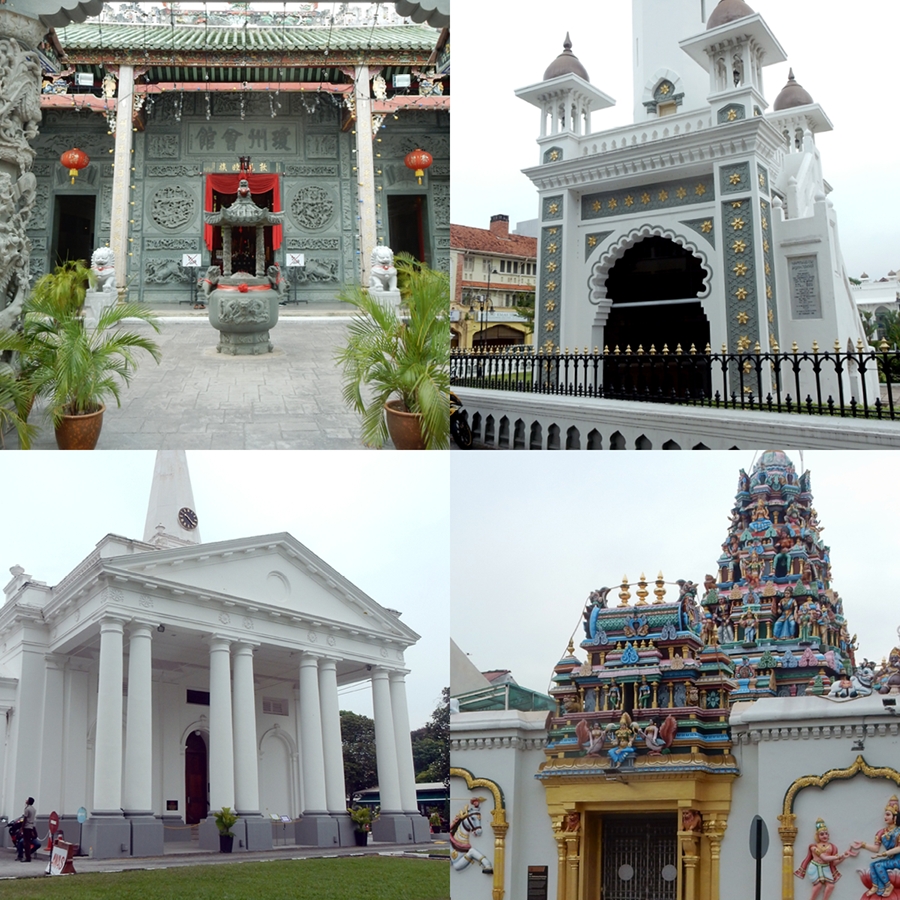 Penang is one of the Malaysian states, consisting of a big island off the western coast of Malaysia and plus an area on the mainland (connected by a handful of massive bridges). I stayed on the northern part of the island in Tanjung Tokong, which is a suburb of the capital Georgetown on the Island part of Penang. The cities and suburbs of Penang don’t have clear separations, but rather transition to one another with no clear boundary distinctions.
Penang is one of the Malaysian states, consisting of a big island off the western coast of Malaysia and plus an area on the mainland (connected by a handful of massive bridges). I stayed on the northern part of the island in Tanjung Tokong, which is a suburb of the capital Georgetown on the Island part of Penang. The cities and suburbs of Penang don’t have clear separations, but rather transition to one another with no clear boundary distinctions.
Penang was different than my previous handful of cities in that it had a much more culturally diverse population. This influences the languages, religion, cuisine, architecture, and traditions of the city. The population is mostly a mix of Malays, Chinese, and Indians but also includes other ethnicities and a large community of expats. The official language is Malay, though many other languages are spoken as well. Most people speak English, ranging from basic communication skills to fully fluent (a leftover of British colonial rule). It’s not unusual to see writing in Malay, Chinese and English. The main religions are Islam, Buddhism, and Hinduism, and a much smaller amount of Christianity.
Penang is a very bright, lively and colorful city. It’s an interesting mix of ultra modern combined with more ancient elements. Giant skyscrapers dominate most of the skyline and you can easily find all the convenience items you’d expect from a big city. These aspects (plus all the English spoken) made it feel somewhat familiar to me, in the way that all larger modern cities do. Some parts of the city are very old, however, with residents still living and preserving a slower-paced, more traditional way of life. Penang would be yet another great beginner’s SE Asian destination, for its mix of authentic traditional elements plus modern city convenience and good infrastructure.
AirBnB, A Cautionary Tale
AirBnB is one of the companies I use most when looking for accommodations. Private rentals are often much cheaper and nicer than hotels, and I’ve had an overwhelmingly positive experience in the past. Out of perhaps 30 places which I’ve rented in the last 3 years, I’ve only ever asked for a refund on one (in Leuven, Belgium of all places, on account of being messy and dirty rather than unsafe).
So, in finding a place to stay in Penang, I did all my usual research and found some rentals that fit my criteria. Mike and I compared notes and booked an apartment through AirBnB which we both agreed looked nice. It should be said at this point that I rely strongly on ratings and past reviews choosing a place. Being a cautious traveler, I always look for a place which has a large number of reviews, and do spend some time carefully reading through them. The place we rented seemed fine – happy guests, no red flags.
It was not ok. Mike arrived in Penang 3 days before I did, so checked into the place solo. On the Grab ride over from the airport, his driver warned him that the area was very bad, to be careful walking around solo and not to go out at night. Upon arrival, the place was indeed in a pretty sketchy part of town. Getting to the apartment, Mike noticed three separate deadbolt locks on the door. Of all the rooms, only one of the power outlets actually functioned. The bedrooms did have AC but the rooms were poorly insulated and the rest of the apartment had no window panes – just open air holes where there should be glass or plastic or… something! The curtains were paper thin, doing almost nothing to block out the light. One of the beds had no frame but was simply a mattress on the floor. The apartment is also close to a mosque, so prayer starts pretty early and extremely loud without any way to actually close off the window holes. Also (most minor of the problems), the apartment listed having a microwave in amenities, which it did not.
Mike sends me pictures and explained the situation – our decision to find a different place is unanimous within minutes. Mike also messaged the property owner – who responds defensively and insists on meeting the next morning in person to discuss the situation before he cancels the booking. He agrees just to appease her but in the meantime, we’re both researching new places to stay, looking into the refund policy, and ascertaining the new budget situation. Fortunately, I always keep a small “emergency” fund for situations just like this – safety is always more important than money! To our good fortune (because neither one of us paid any attention to this while completing the booking), this terrible apartment has a “Flexible” AirBnB refund policy, which means we’ll receive about 70% of the cost of the initial booking, excluding the one night Mike stayed and the non-refundable AirBnB fees.
Mike meets with the property owner the next day, a lady who brought both of her parents along for some reason. Instead of apologizing or being sympathetic to the issues in any way, she (and her mother) continue to argue and try to persuade Mike not to cancel the reservation (though the father did seem somewhat sympathetic). On Mike’s way out, he’s harassed by some people who throw fireworks at him, then is threatened by a guy when trying to enter the elevator. As if more reasons to leave were needed!
Hearing all of this from Mike via text as he’s in the taxi leaving, I felt immense relief that Mike was safe, and that we weren’t going to be staying there. This also made me really appreciate how incredibly lucky I’ve been with accommodations up to this point, that all the rentals I’ve chosen were clean and safe in locations where I’ve felt completely at ease wandering around solo even in poorly lit areas late at night.
I truly baffled with how this terrible apartment received so many positive reviews. Perhaps it’s that people are reluctant to leave negative reviews for fear the owner will retaliate and leave a poor score of them as a guest as well, which unfortunately leaves no warning for future travelers like myself who are heavily relying on honest peer reviews. While I’d like to say there was a lesson to be learned here, I don’t feel like there’s anything I could really have done differently.
In conclusion:
- Photos posted on AirBnB can be misleading
- You cannot entirely rely on the accuracy of AirBnB reviews (even when there are many)
- Always check the refund policy before booking
- Most important: Always maintain an emergency fund, with sufficient money to entirely cover the cost new lodging if needed.
New Accommodations
 Despite this terrible experience with an AirBnB rental, we ended up booking a new place through AirBnB as well. The new place was on the north eastern part of the island, an extra modern and pretty wealthy part of town.
Despite this terrible experience with an AirBnB rental, we ended up booking a new place through AirBnB as well. The new place was on the north eastern part of the island, an extra modern and pretty wealthy part of town.
The new place was located in a massive luxury condo resort building. It included a beautiful pool with a great view, plus a small fitness room with some very basic equipment. The building was right on the ocean, with a yacht club out back and a handful of security guards in red barretts and tidy uniforms constantly strolling the premise. The immediate vicinity included an upscale mall with many nice restaurants and coffee shops on the ground floor, plus a huge Tesco mall just down the street (I ate at the food court here at least once most days). All in all, these were much better accommodations than the first, and much fancier than the places I’d typically stay in. Oddly, it cost about the same price as the original terrible rental.
One interesting thing: the number 4 is superstitiously unlucky here. This comes from the Chinese culture and superstition from the similarity that the number 4 has to the Chinese character for “death”. In light of that, there is no 4th floor or 14th floor – instead there’s floor 3a and 13a.
Food
One of the things Penang is best known for is food. In fact, it’s often described as a “foodie’s paradise”. I didn’t participate in any high end dining experiences (because I’m living the budget travel life) but overall did find a lot of the food to be quite good here, and very affordable! There was a big variety of food choices including many flavor combinations, veggies and spices that were unfamiliar to me. It was easy to get food from non Malaysian cultures such as American, Greek and Italian as well, and I had no trouble finding vegetarian meal options.
Transportation
Penang has far less scooters than Thailand or Vietnam. Grab is still very popular here and is an easy/cheap way to get places. It doesn’t include the option to call a scooter taxi instead of a car taxi, however. There does seem to be a bus system with a couple main lines running throughout the island, though I didn’t try using it myself. The roadways are very spacious and well maintained, and while there is some rush hour traffic congestion throughout parts of the city during peak hours, it’s really not all that bad.
Penang Hill
This area, located on the outskirts of the Malaysian rainforest high up on a hill, consists of some educational rainforest experiences (the Habitat), tourist shops and food, a couple temples, some historical buildings and walking paths. It also offers some truly spectacular sweeping views of the surrounding hills and the city below. From Penang Hill, you can even see the Penang mainland in the distance crossed by two immense bridges. I hadn’t realized previously just how close the mainland actually was!
There are a couple different ways to get to the top of Penang Hill. One is by funicular (a car which uses cables for leverage) from Lower Hill Station. This costs 30 ringgits ($7.25) both ways and is a pretty neat ride up, though it only takes about 5 minutes to get to the top. Make sure to keep the ticket card when you reach the top, as it’s your ticket for the way down as well. There was a pretty long line when I arrived at 10:30 am, though the tram cars hold a lot of people so the line moved pretty quickly – I didn’t end up waiting more than 15 minutes.
Another option to get to Penang Hill is to hike up from the Moon Gate, which starts from a different location in the city. I didn’t hike this trail so can’t offer any advice on it except what I was told, which is this: it’s quite likely you’ll encounter monkeys. They love food, so will smell and try to take any food that you have (sometimes quite aggressively). So, don’t eat snacks on the trail, and keep an eye on small valuable items like cell phones and cameras as well.
In addition to these first two options, there also seems to be a (very steep) trail starting at Lower Hill Station ending at Penang Hill which loosely follows the funicular tracks up. There are funicular stops at increments along the tracks, so it might be possible to walk part way then take the funicular up the rest of the way (assuming you purchased a ticket in advance). But, I’m not sure how frequently the funicular stops, if at all. When I rode it to the top, it did not stop and pick up any passengers along the way, though I did see people walking up that trail.
At the summit, The Habitat also offers a handful of educational tours and experiences (for a price) such as a canopy walk and zip-line, which I didn’t try.
I did walk The Habitat’s Nature Trail, which is free and meanders through the forest for about 1.6 miles. There’s a well maintained asphalt path the entire way and it’s not too steep, so is very accessible to everyone. I did see some nice giant caterpillars, butterflies, and ants along the trail but unfortunately did not see any monkeys or other wildlife there.
Kek Lok Si Temple
This is a fairly new giant temple complex on a hill consisting of numerous temple buildings, many sculptures, a few pagodas, a pond filled with turtles, and many tourist shops. Most of it is free, though for 2 ringgits ($0.50) you can purchase a bundle of vegetable sticks to feed the turtles and there’s an additional entrance fee of 2 ringgits ($0.50) partway up.
One interesting/unusual thing… from the base you can see what at first glance appears to be the abandoned site of a parking building, filled with dust-covered stacks of construction supplies and some rubble. I wandered in here for some entry level urban exploration, but to my surprise saw that there was actually a well used path leading up to a vegetarian restaurant and some gift shops before proceeding up to another level of the temple complex.
At the summit of the biggest hill stands a giant 120 foot tall bronze statue Kuan Yin, Goddess of Mercy, which is really truly impressive in scale. You can take a short cable car ride up there for 6 ringgits ($1.45) both ways, or just take the stairs up. The area near the base of the Kuan Yin statue has a few walkways and statues, more temples, more tourist shops and a small lake.
Clan Jetties
 This area consists of a bunch of small wooden houses on stilts along jetties going out over the water, and is part of the Penang Heritage Trail. These settlements were built in the 19th century by Chinese immigrants who came to Penang for construction work, and are still functional homes. There are 6 jetties remaining today, each of which bears the clan name of the families who live there, each with its own temple on the jetty. Some residents have embraced tourism, setting up souvenirs and food shops along the jetties. I visited the Chew Jetty. It was pretty touristy but still totally worth a visit. There is no entrance fee to walk along the jetties.
This area consists of a bunch of small wooden houses on stilts along jetties going out over the water, and is part of the Penang Heritage Trail. These settlements were built in the 19th century by Chinese immigrants who came to Penang for construction work, and are still functional homes. There are 6 jetties remaining today, each of which bears the clan name of the families who live there, each with its own temple on the jetty. Some residents have embraced tourism, setting up souvenirs and food shops along the jetties. I visited the Chew Jetty. It was pretty touristy but still totally worth a visit. There is no entrance fee to walk along the jetties.
Street Art
One of the things that Penang is especially well known for is street art. Most of the art pieces are clustered around the old city center, and are actually quite recently made. In 2008, Georgetown was declared a World Heritage by UNESCO. To celebrate and commemorate, they commissioned a bunch of artists to create outdoor artwork throughout the city in a project called “Mirrors of Georgetown”, focusing depicting lives and people of the city.
The pieces fall into a couple main categories. The first is a series of 52 cartoons made of steel wire, created by 4 different artists. These tell the story of events, depict people at significant locations, and show scenes from everyday life in Georgetown. They include a short caption explaining the significance of the scene. The second type of art pieces are paintings, sometimes quite massive in scale, and sometimes incorporating physical objects close to the wall they’re painted on. They often include a composition that lets the viewer put themselves in the scene as if they’re interacting with the painted figures. These were created by artist Ernest Zacharevic. Many of these depict funny situations and really quite charming. Later, as part of the 2013 George Town Festival, “Lost Kittens Project 101” added another series of paintings by many different artists featuring cats, to bring awareness of and compassion for stray animals. In addition to these official pieces, there seems to be quite a few other pieces painted on the buildings around the old city center as well.
You can easily find maps online showing the location of all the major art pieces and suggesting walking routes to take to see the most. Unfortunately, many of the painted murals have already been weathered and damaged – the paint is fading and parts of the building beneath them are crumbling. In some ways, it adds more beauty and character to the pieces. But, it’s also unfortunate to see such beautiful artwork slowly being destroyed.
Snake Temple
 This site consists of a Buddhist temple in the Bayan Lepas area filled with pit vipers, which are fairly large, venomous snakes. The temple is filled with incense whoes sacred smoke supposedly keeps the snakes calm and prevents them from biting people. I didn’t actually visit here myself because, despite my immense curiosity and desire to see a bunch of snakes, it honestly sounded like too much of an accident waiting to happen. I later read online that the snakes have actually been de-venomed, and that the monks just tell people otherwise (more thrilling, I suppose), but can’t actually solidly confirm this with reputable sources. If they actually were de-venomed, I greatly regret not going!
This site consists of a Buddhist temple in the Bayan Lepas area filled with pit vipers, which are fairly large, venomous snakes. The temple is filled with incense whoes sacred smoke supposedly keeps the snakes calm and prevents them from biting people. I didn’t actually visit here myself because, despite my immense curiosity and desire to see a bunch of snakes, it honestly sounded like too much of an accident waiting to happen. I later read online that the snakes have actually been de-venomed, and that the monks just tell people otherwise (more thrilling, I suppose), but can’t actually solidly confirm this with reputable sources. If they actually were de-venomed, I greatly regret not going!
Anyhow, Mike did go, and it sounded like such an interesting and unique experience that I thought I had to include it here!
Below is Mike’s description of the visit:
“The temple is in an industrial and heavily developed area of Penang and is very easy to get to by Grab taxi. When you first walk into the temple, you notice right away the bamboo sculptures around an altar have several snakes on them. You can touch the snakes, but there are warning signs everywhere not to because of how poisonous the Wagler’s Pit Vipers are. As you walk through the temple, which includes a walled-in snake breeding area, you begin to notice the snakes everywhere. In plants, in trees, on signs, on top of picture frames on the wall… everywhere! I began to get a little paranoid and started looking for snakes at every step. The snakes don’t move much, and at first I was skeptical if they were even real so I spoke to one of the monks about it. He reached out and tickled one, causing it to slither away. Now I was even more paranoid knowing they really were all alive! In a room next to the main temple, there were snakes in glass cages, cobras and pythons – neither of which are native to Malaysia. You can get your picture taken with a python draped around your shoulders for about $10.”
Training
I had the opportunity to train at three gyms in Penang, and had a great experience at all of them!
Flow BJJ (BJJ Globetrotters affiliated) was my “home gym” for these two weeks in Penang. The gym was small with no AC, but very clean and with elegant decoration, padded walls, a water cooler for refills, and good quality mats which were washed daily. Class was taught by brown belt Fitri Rosmin most days, which I greatly enjoyed. There was a well-balanced mix of drills, technique, and rolling, with techniques building upon what was learned the previous days in a logical progression. Fitri did an excellent job of answering questions and explaining key points more in-depth when I asked for clarification on anything. This was a really fun place to train with relaxed and easygoing vibe, with a lot of casual laughing and good natured jokes between members. Flow BJJ is very welcoming of travelers and seem to get visitors pretty regularly, as a couple others dropped in during the short time I was here.
I also took a detour to visit Budo Academy (also BJJ Globetrotters affiliated!) for a single time drop in. The class was taught by purple belt Nashriq and included lots of drilling towards the beginning, which really worked my cardio levels and which is something I could certainly use more of! My partner made it to the end of all the 1 minute rounds, but I have to admit I was slowing towards the end and struggling to finish the entire minute on a few of those drills! This gym also had no AC, but does have a pretty spacious mat space and water cooler for refills. One thing to note: the gym is located in what appears to be a residential neighborhood with no obvious signage, which was a little confusing to me at first. But, if you just look for the correct address number, it’s easy to find.
I also stopped in twice to train with Team Armada. The gym was small but very nice and well maintained. It did have AC and included two separate training spaces, one of which included a handful of heavy bags to practice the striking sports as well. I was impressed with the instructor here, FS Cheng. Though technically still a blue belt, he had a way of simplifying and explaining BJJ which I found very intuitive, providing a basic framework for thinking into which all techniques could be placed. The way FS Cheng rolls, leveraging a deep understanding of the underlying mechanics of movement and implementing technique with precision and minimal force, is the kind of BJJ game I aspire to have myself. I asked him about his background and he did mention that he’d worked as an engineer in the past. Perhaps the highly structured and logical thinking needed there partially explains and carries over to his approach to BJJ. Being a programmer myself, maybe that’s part of the reason this kind of instruction seems so intuitive to me.
I also learned that Penang Top Team has a giant open mat every Saturday, which includes a large attendance of students from other gyms in Penang. I didn’t end up making it out here myself (since it was located on the opposite side of the island from where I was staying, and I honestly wasn’t up for the long Grab ride there and back late at night), but it sounded really cool!
50 Gyms!
Flow BJJ marked the 50th gym I’ve trained at (check out the locations on Google Maps) on my very slow quest to train at 200 gyms around the world! Upon reflection, I’ve certainly learned a lot, met a lot of really great people, and had a really fun time along the way! I thought at some point that I might get burned out or that my enthusiasm to train would taper out, but the opposite is actually happening – the more I learn, the more motivated I am to go train and to continue improving my skills. Techniques are becoming easier, and I feel like I’ve made significant progress in understanding the underlying mechanics instead of just going through the motions. Giant thanks to everyone who welcomed me to come visit and train at their gym, to all the instructors and training partners who have shared their knowledge with me – it’s been an incredible last 6 months!
Beach Town DaNang
Reasons to go: VERY affordable, great infrastructure for tourists, small-town charm, amazing food, numerous cute cafes, extremely safe for solo female travelers, great “beginner” Asian city destination, beautiful temples, limestone caves, soft sand beaches with kilometers of coastline, bicycle and pedestrian friendly.
DaNang was a wonderful city – peaceful and calm, a beautiful little laid back beach-town with temples, lush hills in the distance, and amazing food. And, it’s really quite magical at night walking along the beach with the tall buildings brightly lit up in the distance. DaNang combined very local vibe with excellent tourist infrastructure – I spent an exceptionally comfortable and relaxed month here!
This city would be an excellent choice of intro or beginner destination to SE Asia. Here, you’ll see very modern massive hotels and apartment complexes next to much smaller local homes and family owned restaurants. It has enough typical Vietnamese elements with local people going about their everyday business to make it feel like an authentic location, but enough tourism to make it convenient and easy to navigate.
People and Language
People in DaNang were friendly and welcoming – quick to smile despite language barriers, and generally happy to have the business of tourists. As in Hanoi, the level of English spoken was generally lower than in Thailand with many of the older generations speaking little/no English. But, with the help of Google Translate when needed, it’s really no problem at all.
Clean Air
Unlike the previous 3 cities I’d stayed in – DaNang had wonderfully clean air! No air masks or daily pollution checks needed this month! People did commonly wear air masks while riding scooters, but that was more to avoid directly breathing exhaust from the vehicles than because the overall air was bad.
Tourism in DaNang
Throughout DaNang you’ll see many new buildings under construction, many of them massive apartment complexes and hotels. It’s as if the DaNang just started realizing how extremely profitable and beneficial tourism can be to their economy, and is now in a rush to develop as much as possible to support it. Oddly, most of the restaurants and cafes in even the most touristic parts of town aren’t anywhere close to full capacity most of the time, which was actually really nice. DaNang seems like it could easily accommodate 20x more tourist that are currently present! While it’s not uncommon to see tourists (we’re pretty conspicuous) out and about, most of the people in the neighborhoods (even in the more touristic parts of town) are still local residents. This might be because I was visiting towards the end of the tourist season, when the summer heat was just starting to become extreme. Or, perhaps the rest of the world just simply hasn’t realized what an amazing little vacation spot this town is yet!
SIM Cards and Phone Service
 I purchased a local SIM card upon arrival for about $8 at the airport. It included 15GB of high speed data plus a local phone number (not something I needed, but included in the package anyhow) for 25 days. I needed a couple extra days of phone service beyond that so, here’s what I learned about topping up cards.
I purchased a local SIM card upon arrival for about $8 at the airport. It included 15GB of high speed data plus a local phone number (not something I needed, but included in the package anyhow) for 25 days. I needed a couple extra days of phone service beyond that so, here’s what I learned about topping up cards.
I was using Mobifone, one of the larger companies in Vietnam. To get more service on your phone after the initial plan expires (this system applies to all the companies), you need to first add money to your account, then purchase a new data plan. You can add money to your account using a handful of online websites and apps, but most of these require a Vietnamese bank account. Fortunately, you can also add money to your Mobifone account at many of the small grocery stores throughout the city (such a Viet Mart). To do this, simply tell the cashier how much money you’d like to add and which service provider you’re using, they’ll ring it up and help you add it to your plan using a code on the receipt and the keypad on your phone.
Once you have money in your account, simply purchase a new data plan through the main provider website or through an app. I used the Mobifone NEXT app, which was in English and very easy to naviage. Mobile service in Vietnam is EXTREMELY affordable – offering such excellent rates as 8.8GB of high speed data for 30 days for $5.15, with no contracts! I still don’t understand why phone service costs so much in the US when the rest of the world can offer its citizens such cheap, no contract service.
Accommodations
My apartment in DaNang was the nicest and best-value accommodations I’ve had on the trip so far! It was a 1 bedroom apartment which I’d found through AirBnb, costing $385 (including tax and fees) for the month. The location was excellent – just a 10 minute walk from the beach, surrounded by tons of great restaurants and a handful of grocery stores, on the outskirts of the tourist area. The building was practically new, having opened just a few short months before. It included about 20 other units, most of which were rented to longer-term expat tenants.
Besides all the normal furnishing you’d expect in an apartment, it included fast wifi, free aircon, free laundry machines (with soap provided), free toiletries (normal sized bottles of shampoo, body wash, and soap), house cleaning 2x/week (and on demand), free towels (washed and replaced by cleaning staff regularly), and 24 hour security guard in the lobby downstairs. Which apparently is a pretty normal package for rentals here.
The security guard was completely unnecessary – DaNang is extremely safe. Security guards are just an added feature which most shops and apartment/hotel buildings like to include to make their establishment look fancier. The security guards here were young adults who spend most of their time on their phones and occasionally sleeping on the couch. One guard even had a fluffy pink pillow with bright cartoons for his naps, which I found absolutely adorable!
This apartment could easily have rented for $1500/month in US for location, quality and features.
Transportation and Scooter Taxis
Grab (Asian Uber) is extremely popular here. You can get rides to almost anywhere in the city for under $2.50 on a scooter taxi, and roughly 3x more with a car taxi instead (if you’re not comfortable being a passenger on a scooter). There are regular (non-Grab) taxis as well, easily found throughout all the more touristic areas, some of which are metered. There is no tram/metro. There does appear to be some kind of bus system throughout at least part of the city, and a shuttle system that goes to Hoi An (small port city to the South), though I didn’t end up trying to use either of those.
Whereas in Hanoi I avoided scooter taxis unless absolutely necessary (traffic was terrifying there!), here in DaNang they were actually quite fun and my first choice for going anywhere not easily accessible by walking or bicycle. The Grab scooter taxis in Vietnam provide their passengers with a helmet, sometimes (but rarely) a paper dust mask, are generally a little faster than cars, and cost only ⅓ the fare of a car taxi!
Coming from a motorcyclist background and being a strong proponent of protective gear, it still felt quite odd to be riding on a scooter in flip-flops, without any protective gear besides a helmet. But, I was a little reassured by the fact that in all the countries with scooters I’d stayed in during the last 4 months, I’d not seen a single road accident, which is a considerably better traffic record than your average week in Phoenix.
As in Hanoi, you’ll see as many or more scooters on the roads than cars, and all the same road rules apply… it seems fine for vehicles to go the wrong way down a road or drive on the sidewalks for short distances as shortcuts, there’s constant honking as a “heads up” to other drivers, and crossing a street involves boldly walking into oncoming traffic. Fortunately, the traffic here is much less dense than in Hanoi and streets have more crosswalks, so overall the roads are much easier to deal with in DaNang than in Hanoi.
Biking in DaNang
 I rented a bike on my first day in DaNang, which cost about $30 for the month. It didn’t have gears or a basket, but was in good condition and did include a small locking cable. I couldn’t find a bicycle rental shop close to my area but many of the scooter rental shops do have some bikes to rent as well, so if you check a couple of those (there are many), you’ll probably eventually find a bicycle to rent without too much trouble. People say it’s safe enough to leave your bike unlocked anywhere, but coming from Phoenix where if you leave your bike unattended for 5 minutes it will probably get stolen – I was pretty diligent about using the lock.
I rented a bike on my first day in DaNang, which cost about $30 for the month. It didn’t have gears or a basket, but was in good condition and did include a small locking cable. I couldn’t find a bicycle rental shop close to my area but many of the scooter rental shops do have some bikes to rent as well, so if you check a couple of those (there are many), you’ll probably eventually find a bicycle to rent without too much trouble. People say it’s safe enough to leave your bike unlocked anywhere, but coming from Phoenix where if you leave your bike unattended for 5 minutes it will probably get stolen – I was pretty diligent about using the lock.
Biking in the city took a little time to get accustomed to initially. When riding a bike in DaNang, as daunting as it might initially sound, the best thing to do is just ride with the other vehicles (cars and scooters) on the roads. Many of the larger streets have intersections that are basically giant round-a-points, some with up to 5-6 lanes in each direction, some with traffic lights controlling which sides of the round-a-point are permitted to enter. The trick to crossing round-a-points is to position yourself in the correct lane before you enter the intersection. So, if you’re going straight through the round-a-point, you want to be in one of the middle lanes.
As a general rule, the left couple lanes are for larger vehicles such as cars and buses while the right couple lanes are for bikes. Except for when making a turn. Scooters are everywhere, with the faster vehicles weaving through traffic to get around the slower ones. Lane divisions are a loose suggestion though – drivers cross them frequently without warning. So, just be aware of your surroundings, use common sense, expect anything and you’ll be fine!
Uniforms of Security
You’ll see security in Vietnam wearing uniforms of many different colors, indicating their role. The three most common are tan, blue and green. Tan is for the traffic police, blue is for building security, and green is the general police.
Heat and Sun
I arrived at the beginning of summer, with highs easily reaching 40°C (105°F) and harsh sunny blue skies most days. It was a little unbearable to be outside from 11am until the sun went down, but so perfect at night once the worst of the daytime heat diminished!
Most local people (especially when riding scooters) very smartly cover up from head to toe in light long sleeve shirts and pants, sometimes with their faces wrapped in scarves. Women also have wide pieces of cloth which they’ll wrap around their legs like skirts when riding a scooter. One of the big ways you can easily distinguish the tourists apart from the locals is by the amount of skin we leave exposed to the sun while outside. It seemed very out of place at first to see so many people wearing what looks like light autumn jackets when it’s so hot out but is actually quite practical to avoid sunburn living in a place like this.
Food
I found a much broader range of food here than in the previous couple cities, including bread (mostly light French rolls) as a regular part of some of the local cuisine – a leftover influence of European occupation. There were also a handful of more western food restaurants in the tourist areas that served things such as pizza, burgers, spaghetti, German and Indian food (none of which I tried, because I wanted to take advantage of being here to eat as much Asian food as possible!). I was also able to find cheese, oatmeal, and Kellogg muesli cereal in the small grocery store down the street. Restaurant dining here is extremely affordable, ranging for $1.25 for a simple (but tasty!) bowl of noodle soup, to $5.50 for higher end restaurant meals. Food was generally made fresh, served quickly, and had a very attentive staff in all the places I visited.
I had no digestive issues with anything I ate from either street vendors or restaurants. One of my expat friends did have some food poisoning problems (and missed a handful of days of training on account of it) from eating a specialty called “balut”, which is basically a partially developed duck embryo served inside the shell of the boiled egg. But, I think we can all agree that’s a fairly questionable food choice to begin with. I realize that trying all the food specialties is part of the cultural experience of visiting a new country, but that one was just way beyond the scope of the new things I was willing to try!
River and Bridges
Through the center of DaNang runs a river, crossed by a handful of bridges, illuminated at night. The most unique and memorable is of course the golden dragon bridge, though there’s a very nice cable bridge to the south as well. The ends of both bridges connect to a large sidewalk that runs along the river in either direction, with tons of vendors and restaurants in the area. A smaller pedestrian-only bridge runs parallel to the southern cable bridge entirely crossing the river, offering a nice view of the cityscape with the dragon bridge in the distance. All the bridges are illuminated with lights of changing colors at night, which is really quite beautiful, and the area just east of the dragon bridge actually becomes a giant night market in the evenings.
Supposedly, the dragon blows fire and water for about 15 minutes starting at 9pm punctually every Saturday and Sunday. Toward the end of my stay, I biked down there to try to see it in person. That Saturday night, it was exceptionally packed with people, making for a very lively (if slightly chaotic) atmosphere. Turns out, instead of the usual dragon fire water show, there was a fireworks over the river that evening! Which was still pretty spectacular, though I didn’t get to see the dragon blowing fire.
The Beach!
My studio was located just a 10 minute walk to the beach, which was the first time I’d ever lived close to the ocean! I spent many nice evenings walking barefoot along the waterline at sunset. The entire eastern side of DaNang is made up of kilometer after kilometer of beautiful sandy coastline. Certain areas are more specifically designated for swimming, with lifeguards keeping an eye on things. These areas get a little busy on weekends. Other areas have “no swimming” signs. I’m not sure why, as the beach there seems as good a place to swim as any other, except for perhaps the lack of lifeguard supervision. The ocean is bathwater warm, with very soft fine sand and the occasional shell or tiny transparent white crab.
One thing to note – Vietnamese swimwear for women is much more modest than the European/American version, and usually consists of tank top or t-shirt over shorts. I did see a handful of women wearing single and two piece swimsuits (usually obviously tourists) so I don’t think anyone would specifically care or be offended you went ahead and wore those on the beach – you might just stand out a bit more. Following my general “do as the locals” policy and disliking extra attention, I went ahead and wore shorts and t-shirt myself.
Fishing on the Beach
One evening, while walking along the beach, I came across a group of 8 people on the shore pulling in a giant fishing net shaped like a “U”, with the ends on the beach and the middle far out in the ocean. The people wore thick belts, similar to what weightlifters sometimes wear not to strain their lower backs, which they’d hook into the thick rope of the net. Every time a person got far up enough on the beach, they’d unhook their belt, wade out into the water at the front of the line, hook onto the net rope again and keep pulling. This went on for about ½ hour, with more and more random people jumping in to help pull, until there was a big crowd helping the original 8 people! The center of the net was filled with fish.
Chùa Linh Ứng – Pagoda and Lady Buddha on the Hill
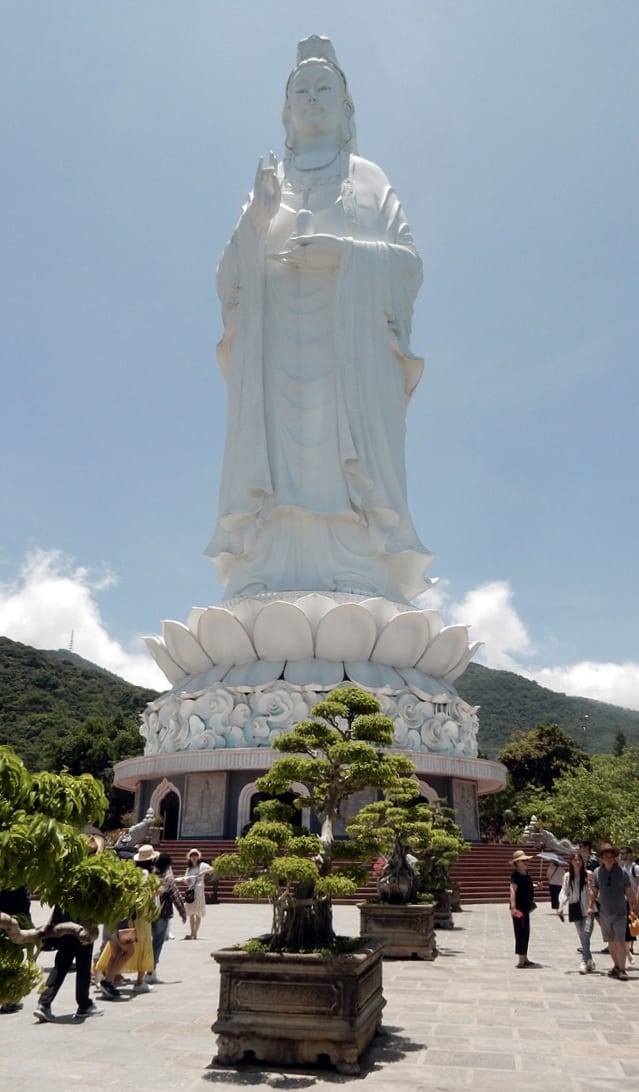 This area, located on a hill to the North of the city, consists of a GIANT lady Buddha statue, a very tall pagoda, and a handful of Buddhist temples surrounded by open spaces for walking filled with tiny trees in pots and sculptures, with really nice views of the ocean and the city in the distance.
This area, located on a hill to the North of the city, consists of a GIANT lady Buddha statue, a very tall pagoda, and a handful of Buddhist temples surrounded by open spaces for walking filled with tiny trees in pots and sculptures, with really nice views of the ocean and the city in the distance.
Getting here takes about 15 minutes from the city center. It’s in the hills away from the main city. I took a Grab scooter taxi here, which cost about $2.00. The road is wide and in great condition – it would be an easy drive up for anyone with a scooter, even with very little riding experience. One word of warning if you take a Grab taxis here – depending on how long you plan to stay, you might consider paying for the driver’s time to wait while you visit then take you back down to the city. I didn’t do this, and wasn’t able to call a Grab taxi for the return trip since there simply weren’t any drivers in the nearby vicinity. Fortunately, there are plenty of (non Grab) car taxis for the return trip, those just cost a bit more than scooter taxis (though are still very cheap).
Being the middle of the summer and the middle of the day, it was extremely hot and sunny out, which I’d smartly planned for with plenty of sunscreen and bottled water. There’s a handful of vendors at the top selling water, coconuts and snacks as well, in case you run out.
To my great surprise and delight, while wandering through one of the more empty paths in the area, I had the opportunity to see a handful of monkeys! There were about 5 sitting about and climbing statues and trees for about 10 minutes before casually strolling off into the jungle on the other side of the path.
I visited on a Thursday. While there were other tourists around, the space was big enough with few enough visitors that it wasn’t uncomfortably packed. A couple hours would be plenty of time to see this area, more or less depending on your speed and how frequently you like stop to take photos or just sit and enjoy the view. Do keep in mind that the temples are a holy site, so remember to dress appropriately (pants/skirts extending past knees, no bare shoulders).
Marble Mountains
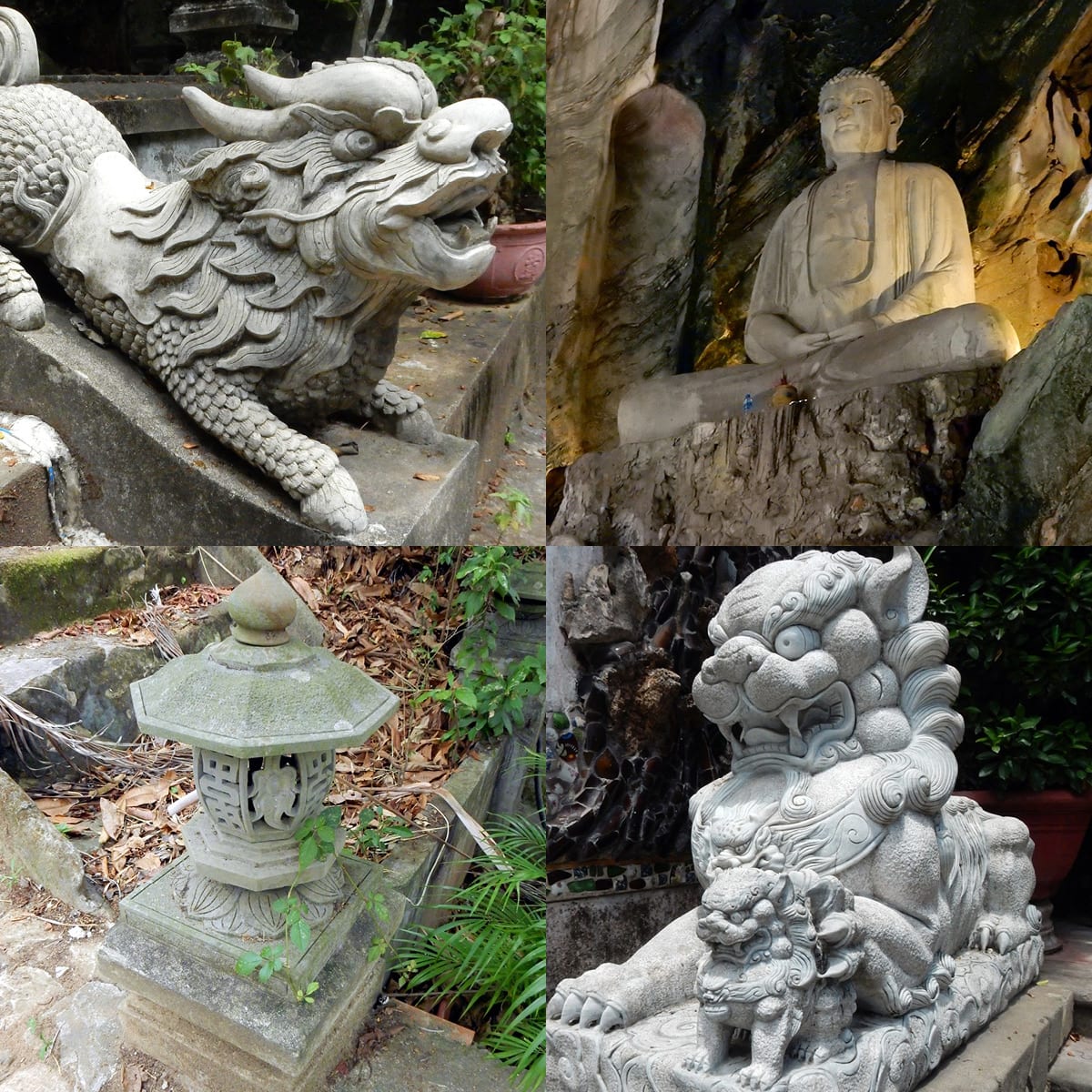 This area consists of a series of limestone hills with little maze-like paths meandering throughout and leading to shallow caves filled with statues, and surrounded by temples, pagodas, and more sculptures. It’s all quite beautiful! One word of caution – there’s a lot of steps and many of them are slippery from stones made smooth from wear, so flip-flops (which I wore) might not be the best choice of footwear. There is an elevator from the base to the top for a fee, for accessibility or just for anyone who doesn’t feel like taking the stairs.
This area consists of a series of limestone hills with little maze-like paths meandering throughout and leading to shallow caves filled with statues, and surrounded by temples, pagodas, and more sculptures. It’s all quite beautiful! One word of caution – there’s a lot of steps and many of them are slippery from stones made smooth from wear, so flip-flops (which I wore) might not be the best choice of footwear. There is an elevator from the base to the top for a fee, for accessibility or just for anyone who doesn’t feel like taking the stairs.
There is an entrance fee of 40,000 VND (about $1.70) to enter the main area, with an additional fee of 30,000 VND to see Am Phu (Heaven and Hell) cave. You can also purchase a map (which includes a handful of postcards!) for an additional 15,000 VND. I did get the map, though the area isn’t all that big and there’s large signs with maps everywhere, so you really don’t need one. Marble Mountains is an easy half day trip. It’s actually located within the city, about 15 minutes away from the city center by scooter.
The area at the base is surrounded by many vendors selling larger sculptures as well as little carved stone figures and animals made of various types of rocks in shapes of Buddhas, elephants, pigs, lotus flowers, and other creatures, if you’re looking for a souvenir. Bargaining seems expected, so feel free to try to negotiate price. There are tons of food vendors around too, if you need a drink or snack. There are also vendors selling traditional Vietnamese conical hats, which I absolutely love – they’re comfortable, lightweight, and cast a very large shadow covering neck, ears and face, offering significantly more sun protection than a baseball cap. Which is very important in this sunny city for people who are sensitive to sunburns. Further away from the base of the mountains are many shops that make/sell larger white marble sculptures. These are presumably for use in other temples as they’re much too big for anyone to bring home as souvenirs.
Marble Mountains: Am Phu (Heaven and Hell) Cave
 Am Phu is one of the largest of the Marble Mountains’ caves and, as its name implies, symbolizes Buddhist heaven and hell. To enter, you first cross a little bridge with water on both sides containing some sculptures of hands reaching up out of the water like those of drowning people. Inside the cave are a handful of really impressive high-ceiling limestone chambers. It’s dimly lit, filled with intricate sculptures illuminated with colorful light, with the scent of sweet incense in the air and some low Vietnamese music in the background.
Am Phu is one of the largest of the Marble Mountains’ caves and, as its name implies, symbolizes Buddhist heaven and hell. To enter, you first cross a little bridge with water on both sides containing some sculptures of hands reaching up out of the water like those of drowning people. Inside the cave are a handful of really impressive high-ceiling limestone chambers. It’s dimly lit, filled with intricate sculptures illuminated with colorful light, with the scent of sweet incense in the air and some low Vietnamese music in the background.
From the main chamber there are two possible paths to take – one a steep stairway that eventually leads to a little outdoor balcony, symbolizing the challenging climb to heaven. The other leading down to more caverns symbolizing hell, with statue of Ksitigarbha Bodhisattva (often associated with Buddhist hell) at the center. According to the internet, there’s supposed to be a bunch of creepy/disturbing statues of figures being tortured but I didn’t actually see any of these around so, it’s possible they were removed on account of being too disturbing for the tourists. There were a couple demon sculptures, and a scale (to metaphorically weight the good and bad actions of your life) though.
Hoi An
On one of the last days of my stay, I took a half day trip down to Hoi An, a small ancient harbor town to the South of DaNang about 30 minutes away by taxi. I took a Grab scooter taxi here, which cost about 95,000 VND (about $4) one way. I was also told that there is some kind of bus/shuttle that runs between the two regularly that’s a good cheap way to get between the cities, but I didn’t look into this myself.
Upon arrival, I first took a detour to eat at Rosie’s Cafe, recommended by a friend. It was located a bit North of the ancient city so in a less touristy part of town. Rosie’s Cafe was a pleasant little restaurant that could easily have been found anywhere in downtown Phoenix for the menu and granola-chill ambiance. I had the avocado toast which was delicious and came in a very generous portion for a very reasonable price. After having eating primarily Asian food for the previous couple months, it was refreshing to eat something so typically found back home. The menu is vegetarian/vegan friendly, and also environmentally conscious with things like reusable bamboo straws instead of disposable plastic ones.
I then headed towards the “Japanese covered bridge” and wandered around the old city center for awhile, which was EXTREMELY crowded with tourists. There were vendors selling food, clothes, souvenirs and tours everywhere. There seemed to be an entrance fee to go inside the Japanese bridge, but it was so packed full with people that I decided against it. It would be hypocritical to complain, being a tourist myself, but Hoi An (at least the city center) certainly lacks the peace, calm, and authenticity of DaNang. Hordes of tourists make walking around some areas (like crossing the bridges) difficult due to the sheer number of people walking across or simply stopped in the middle of the bridge taking photos. That being said, the old city center was quite beautiful, with strings of colorful lanterns hanging over tiny, pedestrian-only streets lined with pastel colored buildings of a more European style. I couldn’t really tell which of the buildings are genuinely old, and which are just crafted to look like ancient buildings.
Hoi An does have a really great selection of restaurants and street vendor selling foods/snacks, and many cute cafes. Many of the restaurants offer cooking classes teaching tourists how to prepare traditional meals which I didn’t participate in due to time, but which sounded like a fun idea.
Hoi An is also known for its silk trade and tailors. There are multiple shops selling clothes pre-made, ranging in style from baggy elephant print pants and light sundresses to business suits and more formal attire. If you have the time and money (I have no idea what something like that would cost or how long it might take to make), you can also have your measurements taken at a shop so that they can make a piece of clothing exact to your specifications and style requirements!
More Veggies Now
One word of warning if wandering off the tourist path, which I suppose holds true in any country… you might see some things which are somewhat disturbing to American sensibilities, or animal-compassionate people. While walking through a market away from the tourist area one day, I came across a vendor selling (living) white duck. There were about 12 of the animals not in cages, but rather with their legs and wings bound tightly behind them with ropes so they weren’t able to move, many of them quacking in obvious pain and distress.
Without going into the vegetarian/vegan diet debate, I’ll just say that this sight actually renewed my commitment to a vegetarian diet, which I’d gotten fairly lazy about lately in the excitement of trying new foods in foreign countries. But, I cannot in good conscience continue to consume a food whose production so clearly causes pain and distress to another living creature. I certainly don’t believe Vietnam in any worse in this regard than any other country – it’s simply that here you’re occasionally confronted with the reality of meat production in plain sight, rather than having it hidden away where you can more easily and conveniently ignore it. I debated whether or not to even write about this, but feel it’s important to present a realistic and complete picture of a place as I experience it, rather than glossing over the more unpleasant aspects.
Fortunately, it’s extremely easy to eat vegetarian/vegan in DaNang – a quick Google search revealed 6 specifically vegetarian/vegan restaurants within a 20 minute walk from my studio. One of which I’d already been visiting regularly in the previous month, simply because they had great food. These do tend to be higher end restaurants, meaning you can expect to pay $3-5 instead of $1-3 for a meal.
Training
My home gym for the month was MMA Fighter Club, located on the 3rd floor of a building near the dragon bridge. Training regularly was a little more difficult this month as this was the only gym that offers BJJ classes in DaNang and it turned out to be much further away from my apartment than I realized, eating up a significant amount of bicycle commuting time getting there and back.
BJJ classes are held a couple times a day all days except Sunday, both gi and nogi. The class sizes were relatively small, ranging from just a couple students to maybe 10-12, with a larger percentage of lower belts, and travelers passing through DaNang dropping in periodically. Evening and morning classes are taught by black belt Reynold Garcia, and mid-day nogi classes are taught by blue belt Jeff Corra. It was Jeff’s mid-day nogi classes which I attended 3x per week.
Jeff and the other students were easy going and welcoming – I felt instantly at home training with this group. Jeff is an expat himself but had already been living in DaNang for a couple years, so was a great source of information for any questions I had about DaNang. Classes were straightforward and clear, with technique building off of previous techniques learned, branching off to show related variations, counters and defenses in a logical progression.
In addition to BJJ classes, the gym offered MMA classes throughout the day. The gym includes a good set of weightlifting equipment and with a boxing ring with punching bags along two of the walls.
Weightlifting at Bina Gym
Training BJJ only 3x a week instead of the usual 5-6, I needed to find another physical activity to fill some days, and ended up weight lifting at Bina gym near my studio some days. It didn’t have AC but did include a nice set of basic equipment and weights, so that was great. It also only cost 30,000 VND ($1.25) for a single time drop in! One interesting thing about weightlifting gyms here – they’re carpeted, and all the local people work out barefoot. You could easily tell who the tourists and expats are were just by looking at their feet! I wore shoes and socks the couple times, before just going barefoot myself as well.
Traveling & Training in Hanoi, Vietnam
Reasons to go: extremely affordable, unique city, amazing food, very safe for solo female travelers, lively ambiance, beautiful temples.
Of all the countries I’ve traveled to (over 20 in the last 3 years!), Vietnam is the first that has felt like a truly foreign experience. I stayed in Hanoi almost a full month and my first couple days in Hanoi were, in all honesty, a little overwhelming. The city is huge, very crowded with people and dense narrow buildings, constantly noisy, with the most insane traffic I’ve ever seen and much less English spoken than any country I’d previously been to. By the end of the stay, however, I’d grown quite acclimated and comfortable with all of this, and had grown to love a lot of the city’s unique charm.
A Growing City
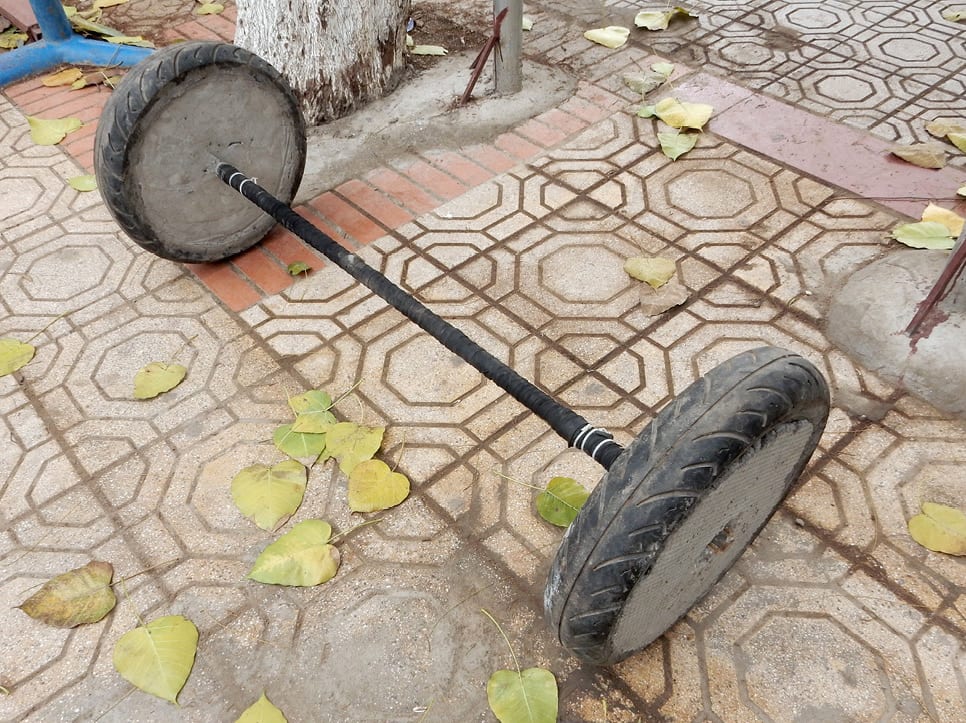 Hanoi is still a developing city but very rapidly becoming more modern with a better economy and larger middle class. It seems to have embraced a lot of new technologies, while still retaining many traditional elements, resulting in a very interesting mix of the old and the new.
Hanoi is still a developing city but very rapidly becoming more modern with a better economy and larger middle class. It seems to have embraced a lot of new technologies, while still retaining many traditional elements, resulting in a very interesting mix of the old and the new.
Everyone has smart phones, gaming lounges lined with high definition monitors are popular, many buildings and scooters seem very new, and drivers use apps like Grab to coordinate rides. A couple larger freeways are currently under construction and there’s no problem getting fast wifi throughout the city. At the same time, you’ll find ancient temples and many much older buildings still in use, and see many traditional activities such as men smoking tobacco from long bamboo pipes in the streets, vendors carrying goods in baskets hanging off poles balanced over their shoulders, and women washing dishes in large basins outside.
Many aspects of Hanoi have a certain makeshift improvised quality. Whatever people can’t afford to purchase or acquire as commercial equipment, they’ll simply create with resourcefulness and ingenuity from the materials they have.
People who have left then returned to Hanoi a couple years later say that they’re surprised by how much the city has changed and developed in their short time away. I feel like if I returned in 3, 5 or 10 years, the version of Hanoi I saw today would already have changed significantly.
Hanoi
 Hanoi doesn’t have regular larger grocery stores. Instead, they have many tiny shops which specialize in different things, and street vendors for fruits/veggies/meats. Some vendors ride bicycles with large baskets strapped to the back and sides carrying goods, which makes them a little hard to find when you’re looking for a specific thing.
Hanoi doesn’t have regular larger grocery stores. Instead, they have many tiny shops which specialize in different things, and street vendors for fruits/veggies/meats. Some vendors ride bicycles with large baskets strapped to the back and sides carrying goods, which makes them a little hard to find when you’re looking for a specific thing.
Most shops are family owned, with the ground floor being the shop/restaurant and the family living upstairs. It’s not uncommon for extended family and a couple different generations to live together in one building/home. Many restaurants are very small, so set up with tiny plastic tables and stools on the sidewalk out front to accommodate additional customers. These makes you feel like a giant when eating!
Property costs (at least in ancient times) for homes/shops were based on the square footage of the front facade, rather than overall size of the house. For this reason many older buildings have a very narrow front faces which extends far back and many stories high. The overall architecture of the city feels very organic, as if buildings and additional stories were added as needed rather than planned out in advance, with very little space is wasted between buildings.
Once again, there were crazy wires everywhere – to a more dense and disorganized extreme than I’d previously seen elsewhere. I get the feeling there aren’t really any general safety standards here, or at least not any strongly enforced.
My Neighborhood
My studio (an AirBnB rental) was located in a very local part of town outside of the touristic area, about 20 minutes south of the main city center by taxi. I lived in the middle of a large, dense block of narrow residential buildings many stories high. The area around my place was a labyrinth of tiny alleys just large enough for pedestrians, bikes and scooters to pass through, but not large enough for cars. The closely sandwiched buildings didn’t offer much of a view from my 3rd story window or let in much natural light, giving the space inside the ambiance of perpetual dusk at all times of day. Most morning around sunrise, you could hear a rooster crowing outside. Some evenings, you could hear the soft melody of a flute being played from one of the neighboring buildings.
The area which I was staying in was not at all a tourist part of town. I was almost the only Westerner/foreigner staying here, which got me more than a few curious looks from the local people in the neighborhood. Which I can understand completely. Sometime towards the end of my stay, I did cross another Westerner in the neighborhood. I’d become accustomed to seeing only local people at that point and was so surprised to see him that even I caught myself staring, wondering what he was possibly doing in the neighborhood!
There was diamond shaped lake close to my block surrounded by many cafes and restaurants, with a park/walkway along three sides including benches, an assortment of outdoor fitness equipment, and a playground for the kids. It was a popular place to hang out for people in the community, especially in the evenings. Here, vendors would set up small food stalls with tiny plastic tables and chairs for their customers, groups of friends would sit around drinking tea and eating sunflowers seeds, families would bring their children to play, men would sit around fishing, groups would play music and practice classical dances in pairs, fitness enthusiasts work out on the outdoor equipment, and all the cafes along the waterfront would be filled with customers. It was a very comfortable and family friendly ambiance!
Not for Everyone
Hanoi is not for everyone. If you want to vacation in a place with more Western standards, with English spoken everywhere, pristine streets, large all-in-one grocery stores, orderly traffic regulation, good public transportation, and spacious uncluttered sidewalks – in all honesty, you’d probably be better off going elsewhere. While there are certainly very beautiful areas and many higher end hotel rentals available in Hanoi (for amazing rates!) – most of the city isn’t like that. While it’s not always beautiful, it certainly is lively and interesting, with tons of history/culture, and no shortage of things to see and do!
Safety
I’ve heard it said before by people who travel that they often feel much safer in South East Asia than in US, and I’d completely agree with that sentiment. At no point did I feel even remotely unsafe, even when in much lower-income areas, even living in a neighborhood made up of tiny dark alleys and sometimes returning home solo late at night.
Needless Apprehensions
Vietnam was one of the places I was most excited to see in person, but also one of the ones that I felt the most apprehensive about. Reviews online seemed rather polarized – people either loved it or hate it, with nothing in between. I wondered which would be the case for me.
My concerns fell into three main categories. First, that I would have a really hard time getting around due to language barrier and lack of infrastructure such as public transportation. Second, that I would have something important stolen. According to the online reviews, petty theft such as purse snatching was rampant. Third, that something I would eat would make me terribly sick.
None of these turned out to be valid concerns. It is true that there was certainly much less English spoken, and at much lower level of fluency than many other countries I’d previously been to. But with the help of Google Translate, body language, little bits of English – I had no problem communicating. I used general caution and was aware of surroundings/belongings in tourist areas, so had no issues with theft. Lastly, despite eating a huge variety of foods from many different places and street vendors including ice cream and ice cubes – nothing I ate gave me any digestive problems.
I think perhaps the internet has a tendency to vastly exaggerate the dangers of things.
Visas
Entering Vietnam was a pretty straightforward and simple process. I applied for an e-visa online in advance through the National Web Portal on Immigration, paid a small processing fee (about $26), and after a couple days received a letter of approval to print to present upon arrival. The online application asks for fairly standard information such as passport info, photo, birthday, home address, entry/exit dates and port of entry.
I’d read online that a passport sized photo was needed as well upon arrival at the airport so had these ready to present, but no one actually asked for this. With all my documents in order and ready to present, passing through immigration didn’t take more than a couple minutes. I was not asked for proof of an outbound ticket, or for any details as to where I’d be staying for the month.
Money
 The exchange in Vietnam is quite extreme: $1 United States dollar (USD) = ₫23,000 Vietnamese dongs (VND). It’s a little confusing at first, but not too bad if you just memorize a few benchmark values to have some general idea of what things cost when out and about. Vietnam operates largely on a cash economy, so it’s best to withdraw some cash in advance and not rely on vendors having credit or debit card machines for most transactions. Vietnamese currency has no coins but rather is made up entirely of paper bills. American dollars are widely accepted here too, though you might not always get the best exchange rate and will often receive the change in dongs.
The exchange in Vietnam is quite extreme: $1 United States dollar (USD) = ₫23,000 Vietnamese dongs (VND). It’s a little confusing at first, but not too bad if you just memorize a few benchmark values to have some general idea of what things cost when out and about. Vietnam operates largely on a cash economy, so it’s best to withdraw some cash in advance and not rely on vendors having credit or debit card machines for most transactions. Vietnamese currency has no coins but rather is made up entirely of paper bills. American dollars are widely accepted here too, though you might not always get the best exchange rate and will often receive the change in dongs.
Everything in Vietnam is VERY affordable compared to US standards! Lodging and tours are very reasonably priced, a full plate of food (often including tea and soup) typically costs $1.25-$2, and Grab taxi rides (the Asian version of Uber) throughout most of the city are under $5 (even less if you’re brave enough to ride a scooter taxi!).
Language
The modern Vietnamese writing system (called Quoc-ngu) uses a Roman alphabet with some additional digraphs and accents. It was created by a Portuguese missionary then further developed and made mandatory by French colonists during a time of cultural imperialism. Prior that, an alphabet of modified Chinese characters was used for writing.
In this written system, the are no multi-syllable words. Every word is equal to only one syllable. Words can be written one after the other to act like what would be multi-syllable words in English. Some words have no meaning on their own, and need to be strung together with other words to acquire meaning.
Food
The food in Vietnam was AMAZING – consistently delicious, healthy, and made with local, fresh ingredients. Many really great restaurants here have very underwhelming facades. You’d never suspect such amazing food could be found down these tiny allies and inside hole-in-wall shops!
Meals in Vietnam are often served in a way that lets the customer personalize them to taste. Dishes of noodle soup often come with a plate of mixed herbs, greens, and soy bean sprouts on the side which you can add, along with many optional sauces. Meals are eaten with chopsticks and a shallow soup spoon.
A small glass of cold tea is often complimentary with the meal. Fruits are eaten after meals to refresh your mouth and clear the taste of the meal. What we would consider desserts are actually eaten between meals as snacks.
Two of my favorite snack were popped grains and sweet soup. Popped grains were sold by street vendors on bikes in the streets, and consisted of blocks of popped grains coated with sugar, a bit like caramel popcorn. Sweet soup is a milky dessert with custard, jello blocks (but of a different consistency than the American kind) and other flavors (like berries or syrups) mixed into thick milk, served with crushed ice on the side. You can add however much ice you’d like to your bowl to dilute the sweetness and flavor intensity to taste.
Vietnam also has a huge selection of delicious milk teas and plant-based milk drinks such as corn milk, soy milk, coconut milk, sesame milk, and walnut milk… just to name a few. These are usually pretty sweet. I tried as many different kinds as I could and loved them all!
Having now eaten actual pho, I can say that many of the Vietnamese restaurants in USA actually do a pretty accurate job of reproducing this meal… for about 6x the cost of what you can purchase it for here!
Great (Vegetarian!) Food
Tinh Tam’s (near my home) quickly became my favorite local restaurant in the area. I ate here almost every day – sometimes even twice a day! The ambiance was cozy and calm, with friendly staff, quick service, and amazing food. Most meals were either noodle soup, a ball of rice surrounded by different assortment of raw and cooked veggies, or a plate of noodles and veggies. I didn’t realize until the last day of my stay that it was actually a completely vegetarian restaurant.
Coffee
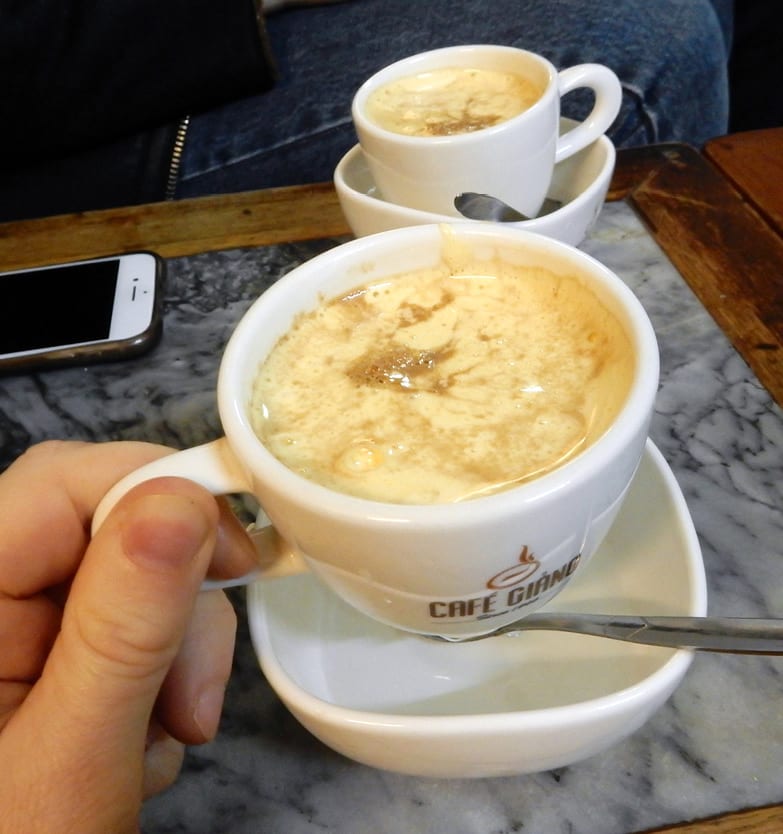 Egg coffee is a specialty of Hanoi. It’s made of egg yolk mixed with condensed milk and sugar, beaten and boiled into a very thick cream which is then poured over a shot of super strong black coffee. Very delicious! Not all cafes serve this though. Regular coffee in Hanoi consists of a small, super strong, super dark shot of coffee served with sweet condensed milk and liquid sugar on the side.
Egg coffee is a specialty of Hanoi. It’s made of egg yolk mixed with condensed milk and sugar, beaten and boiled into a very thick cream which is then poured over a shot of super strong black coffee. Very delicious! Not all cafes serve this though. Regular coffee in Hanoi consists of a small, super strong, super dark shot of coffee served with sweet condensed milk and liquid sugar on the side.
Pollution
The pollution in Hanoi for the month that I was here ranged from “moderately bad” to “unhealthy”. I downloaded an app on my phone which I’d check throughout the day, and wore a cloth air mask anytime the air quality dipped into the “unhealthy” range. On the worst days, the pollution could be seen as a brown haze over the city, obscuring the buildings on the far side of the little lake in my neighborhood, and the air felt thick to breath.
Public Transportation
For all practical purposes – there is none. Ride sharing services such as Grab (the Asian equivalent of Uber) are immensely popular here and very cheap. You can use Grab to arrange for either a scooter or car taxi. The scooter taxis always provide an extra helmet for their passengers.
Scooters
Hanoi takes all aspects of scooter driving to a new level. Compared to other South East Asian cities I’ve traveled to there’s denser traffic, faster driving, more weaving amongst other vehicles, less strongly enforced traffic laws, and less clearly marked intersections and lane divisions. The direction of roundabouts seems to be somewhat optional – while about 80% of people go the uniform, correct direction – it’s also totally fine to just drive the other way if it’s shorter, apparently!
In the center of the city, there’s many more scooters than cars on the roadways. And, for good reason – it really is the perfect vehicle for commuting around Hanoi! For starters, scooters are much more affordable than cars. This is partly because scooters are made in Vietnam, whereas cars are imported and heavily taxed. It cost about $1000 USD to purchase scooter, which is 3 months salary for average person here. It’s also much cheaper to purchase fuel for a scooter than a car. In addition, driving Hanoi is much easier on a scooter because of the small streets and dense traffic. There are many tiny alleys a scooter can pass through which a car would not fit into.
You might think that it would be inconvenient at times to have a scooter when needing to transport people or larger items. Not so! I’ve seen a truly amazing amount of large items strapped to a scooter, proving that you really don’t need a car for this. Scooters can easily comfortably accommodate 1-2 passengers, and sometimes up to 4 if stacked together well!
There’s constant honking in Hanoi. It isn’t rude, but rather more of a “watch out” notification used whenever drivers are coming around a corner, getting close to another person/driver, about to merge, about to do something unexpected etc… basically any situation where another person might not be aware of them.
I once took a scooter taxi in Hanoi morning rush hour traffic. It was the most insane driving experience I’ve ever been through! It included weaving through dense sea of scooters (and few larger vehicles), the equivalent of 5 lanes of traffic (one way) with no lane divisions, lots of honking (of course), driving onto the sidewalks, and going the WRONG way into oncoming traffic on few one way streets! The most amazing part was how normal this seemed for my driver and everyone around us.
Despite all of this, amazingly I didn’t see a single traffic accident in the entire month I was here! I think Vietnamese people might be best drivers in the world.
Crossing the Street
Crossing the streets was a little daunting at first. The majority of the time there are no crosswalks or traffic lights – you basically just have to take the initiative and literally walk into traffic. The proper way to cross a street in Vietnam is simply to walk calmly and with purpose into the street. Do not stop, speed up, or slow down. The oncoming traffic is a constant flow and doesn’t actually stop when pedestrians are crossing – vehicles just speed up, slow down or swerve to the side accordingly to avoid obstacles. Changing your pace will just make it harder for them to predict where to go. I definitely significantly improved my Vietnamese street crossing skills in the month I was here, but even toward the end was not brave enough to attempt to cross many of the larger, more busy streets this way!
Soccer
Vietnamese people love soccer. In the evenings when games were happening, all the outdoor bars would set up projectors for their customers and will tune in all televisions to watch the game game. Bursts of cheering or disappointed groans of dismay could be heard periodically every time one of the teams scored a point.
Religion
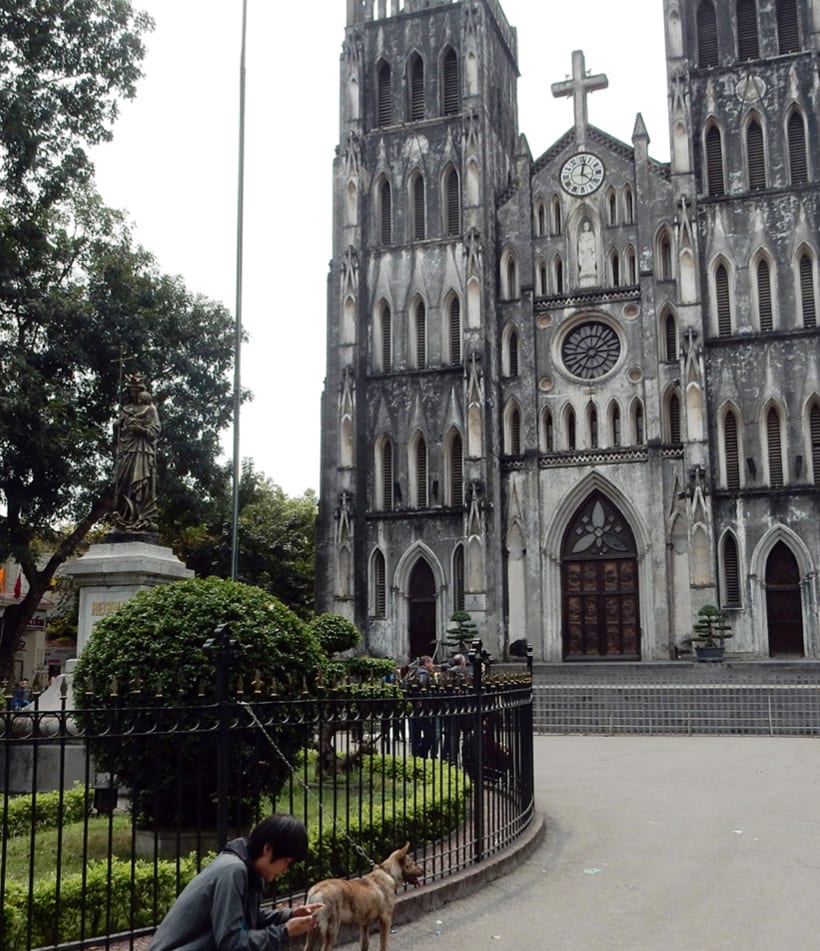 Hanoi has many beautiful and richly decorated temples throughout the city. Although Vietnam has no official religion, it still plays an important role in people’s lives. In Hanoi, the following five religions are common: Buddhism, Confucianism (although that’s more of a philosophy and social structure rather than religion), worshiping the mother goddess, worshiping ancestors, and Catholicism.
Hanoi has many beautiful and richly decorated temples throughout the city. Although Vietnam has no official religion, it still plays an important role in people’s lives. In Hanoi, the following five religions are common: Buddhism, Confucianism (although that’s more of a philosophy and social structure rather than religion), worshiping the mother goddess, worshiping ancestors, and Catholicism.
Confucianism was brought to Vietnam during Chinese occupation. It puts a strong emphasis on living virtuously, good behavior, obedience, loyalty, and education, but diminishes the role of women in society. In response and to balance this, a religion of worshiping the mother goddess was developed, paying tribute to the importance of women in society.
 Temples will often include a table for offerings in front of statues of important figures (Buddha, the mother goddess, past kings and important scholars, for example). Offerings almost always including fruit but also often including donations of money and other food items, sometimes even including beer!
Temples will often include a table for offerings in front of statues of important figures (Buddha, the mother goddess, past kings and important scholars, for example). Offerings almost always including fruit but also often including donations of money and other food items, sometimes even including beer!
Buddhism, Confucianism, worshiping the mother goddess and ancestor worship blend harmoniously together. It’s not uncommon to see a temple with elements of all of these together. A person can without conflict practice all, and can pay respects to different aspects of different religions. Catholicism, however, excludes all other religions.
Văn Miếu (Temple of Literature)
This site consists of a series of courtyards divided by beautiful gates, with a very ornate temple dedicated to Confucian sages and scholars at one end. In the past, students enrolled in the Imperial Academy lived and studied here. The fourth courtyard includes row upon row of turtle steles (big stone slabs on the back of giant stone turtles) engraved with the names of doctors who passed the royal exams. During the war, these were covered in sand as protection from aerial bombardment. This visit was a nice break from the hustle and bustle of the rest of the city.
Tours
I usually spend most of my travels exploring on my own, but since everything in Hanoi was so extremely affordable, I went ahead and treated myself to a few organized tours on a couple separate days.
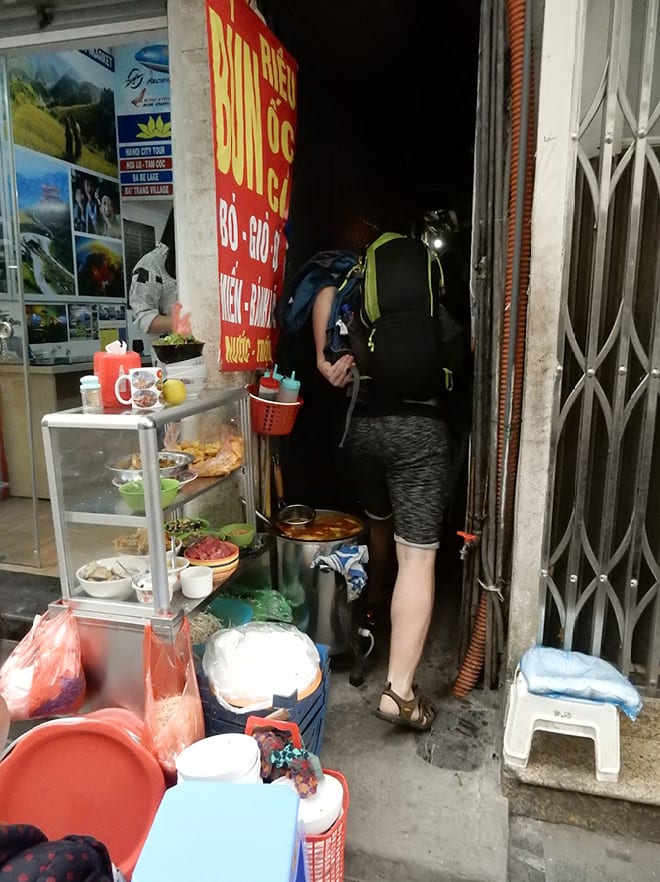 The first was a walking street food tour in Old Quarter, which included a big variety of tiny meals and drinks in a bunch of different restaurants. The guide was informative and charismatic, all the food was incredible! The biggest thing I learned here is that there are a ton of really amazing little restaurants hidden behind very unassuming facades, sometimes down tiny little alleys behind buildings which you wouldn’t even notice while passing by!
The first was a walking street food tour in Old Quarter, which included a big variety of tiny meals and drinks in a bunch of different restaurants. The guide was informative and charismatic, all the food was incredible! The biggest thing I learned here is that there are a ton of really amazing little restaurants hidden behind very unassuming facades, sometimes down tiny little alleys behind buildings which you wouldn’t even notice while passing by!
The second tour was an all day biking, boating, walking tour with Hanoi Explore Travel that covered a couple different areas to the south of the city.
First stop was Hoa Lu, ancient capital, to walk around in the temples area.
Next was biking through the nearby Ninh Binh province, an area with giant limestone hills covered with lush vegetation and surrounded by flat rice patties and slow small rivers and lakes.
Following that was small boat rowing tour along the lakes near Trang An wharf with more giant limestone cliffs on all sides. The boats went through many cave tunnels so low I could touch the ceiling, lit with little lamps along the way to avoid total darkness.
The tour’s last stop was Mua cave, which wasn’t actually a cave but a giant hill 500 steps high with breathtaking panoramic view from the top!
Training in Hanoi
BJJ is still a pretty new sport in Vietnam, with very few black belts in the country, but is gaining popularity and developing quickly. Hanoi has three gyms: BJJ Hanoi, Agoge and Ronin BJJ Hanoi.
I did have the opportunity to visit and train at all three during the time I was there, and enjoyed some great rolls at each! BJJ Hanoi was a short 10 minute walk from my studio, so became my “home gym” for the month in Hanoi. Both Agoge and Ronin are Globetrotter associated gyms but were located a bit further from my place, requiring a 30 min Grab taxi ride to get to, which unfortunately didn’t make them practical options for training on a regular basis.
BJJ Hanoi
BJJ Hanoi was actually the first BJJ club in Hanoi, founded in 2011. The gym was located on the second story of a large sporting facility building. There were often people practicing other martial arts in groups outside, playing table tennis, or lifting weights in other rooms of the building. The BJJ room was rather small for the number of students training regularly (about 20 per class) but had good quality mats and padded walls. There was no air conditioning but that wasn’t really a problem for the time of year I was there, with exception of a few hotter days.
Class most days was taught by purple belt coach Trần Tuấn Anh. The students consisted primarily of white belts, so many of the techniques we saw focused on the important fundamentals. The instruction was clear and detail-oriented, usually not given in English but my training partners were always happy to step in and translate. The students at the gym were very friendly, enjoyed having visiting travelers, and very passionate about BJJ – it was a pleasure to train here!
During the last week, two black belts traveling happen to be in town for vacation and stopped in to give class! The first was John Bernard Will from Australia with brown belt wife Melissa Will. The second was Louis Levy from US. Super nice instructors, greatly enjoyed their classes and learned some valuable details from both!
Megacity Bangkok
Reasons to go: Amazing food, very affordable, night markets, modern big city convenience, tropical warm weather, beautiful Buddhist temples
Bangkok
Bangkok is immense – probably the biggest and most densely populated city I’ve ever been to! It has busy traffic with as many scooters as cars on the roads, constant background noise, and chaotic electrical wiring. It has buildings on a scale I’ve never before seen towering far above, a futuristic skytrain running stories above between the skyscrapers, and massive very modern shopping centers. It has tropical blue skies most days (at least in the dry season), constant heat, and high humidity. It has beautiful temples with ornate pointed roofs housing giant golden buddha statues, intricately patterned floors, and orange robed monks. It has exotic unknown fruits in the grocery stores, vendors selling drinks or cooking up fresh meals along the side of the street, and colorful bustling markets packed with people – I loved it all!
I was here for about 3 weeks in March.
The Visa Situation
Thailand grants free 30 day visas to Americans (and people of many other nationalities) upon arrival. Many people who visit Thailand fall in love with the country and end up wanting to stay longer. So, how to resolve this?
One option for this is applying in person at the embassy after you’ve arrived to Thailand on the 30 day visa asking for an extension. There’s a fee for this, and a limit on how many additional days you’re able to get.
Another option is to enroll in a Thai school, which grants you a longer student visa. Many people do this, then legitimately attend a Thai school to study Thai or a different topic from one of the English speaking schools. Some not-so-legitimate schools exist as well to help foreigners acquire student status permitting them to stay in Thailand longer.
Another option is teaching English or being employed by a Thai company. Yet another option (requiring a much greater investment) is to actually open a business in Thailand. There are numerous regulations applying to this, and the added requirement of employing a certain number of Thai people full-time.
One of the most common (though somewhat tedious) solutions is to simply leave the country then re-enter with a new 30 day visa, which is known as a visa-run. Obviously, it’s not ideal to have to repeat this process every month if staying long-term, especially if you live far from the border.
I’m sure many other options exist, these are just some of the more typical ways that foreigners are able to stay in Thailand for longer periods of times.
SIM Cards
You can purchase a SIM card upon arrival at the airport, there are many kiosks selling these with various plans depending on the length of stay and amount of data/minutes you’re looking for. I paid something like $25 for unlimited data for a month for mine, including a phone number and some talking minutes (which I didn’t need but were included anyways). Your passport is necessary for registration of the SIM card regardless of where you purchase it. The process of getting a SIM card was extremely quick and easy, taking less than 5 minutes to complete. I still don’t understand why America hasn’t gotten on board with pre-paid SIM cards, when literally the rest of the world uses these to get significantly cheaper cell service and data with no contracts!
Language
 The main language written and spoken in Thailand is Thai. The alphabet is non-Latinic and the language is tonal, meaning that the pitch of the word matters. The Thai language has 5 tones (middle, low, high, falling and rising) for different syllables of a word, which can change the meaning considerably. Fortunately, most signs in Bangkok have a smaller English translations underneath, and a many people speak at least a handful of words in English.
The main language written and spoken in Thailand is Thai. The alphabet is non-Latinic and the language is tonal, meaning that the pitch of the word matters. The Thai language has 5 tones (middle, low, high, falling and rising) for different syllables of a word, which can change the meaning considerably. Fortunately, most signs in Bangkok have a smaller English translations underneath, and a many people speak at least a handful of words in English.
People
People in Bangkok are so nice! In Thai culture, losing your temper and becoming visibly annoyed, impatient, angry or yelling is looked down on, and definitely won’t help you resolve a situation. This was explained to me as having something to do with pride and “losing face” – it’s an embarrassment and a disgrace for a person not to be able to maintain their composure, especially in public. If there’s a problem, Thai people address will the situation calmly and quietly.
Additionally, Thai people seem genuinely much more patient with everything. Things which would make American people anxious and irritated (like things moving slowly or rush hour traffic) just don’t seem to bother people here, they take it all in stride with a “well, that’s just how it is” attitude. Which is very refreshing and pleasant to be around!
Accommodations
Finding a place to stay in Bangkok was a little different than in previous cities, where I’d largely relied on AirBnB rentals. In Bangkok, however, AirBnB rentals are technically illegal, as is renting any part of a private home out for less than a month. Which isn’t to say you can’t find AirBnB rentals online (the laws regarding these don’t seem to be strongly enforced) – there are just less of them available.
Hoping to rent a tiny studio as opposed to a hotel room, I signed up to a couple expat and Bangkok city forums, but those wasn’t terribly helpful. The problem I ran into was length of contracts. Most were looking for tenants willing to sign a 6-12 month lease, whereas I was only looking for a 1 month.
Here again, Vara’s advice and knowledge of the city was immensely valuable! It was actually Vara who ended up finding the perfect home for me to rent – a tiny, very modern and clean studio with laundry machine on the ground floor, close access to the skytrain, with many restaurants and grocery stores within a 10 minute walk. It was part of a small house 3 stories high that seemed to have 3 apartments on each floor, though I think some of them were bigger models than mine. Best of all – it was literally right next to Bangkok Fight Lab!
The only downside was the noise, which I think is just a constant part of Bangkok wherever you go. Even with all the windows closed, the noise from vehicles driving by in the street was pretty constant and not quiet. In addition, I could feel the whole building tremble when larger vehicles passed by on the street outside a couple times a day. Oddly enough, this didn’t really bother or prevent me from sleeping at all. I enjoyed my stay here so much that I went ahead and made reservations to stay there for another month in July!
Outlets are both US and European style in one. Since I had various devices from my time spent in Belgium and Arizona with both US and European style plugs, this was really convenient!
Bum Gun
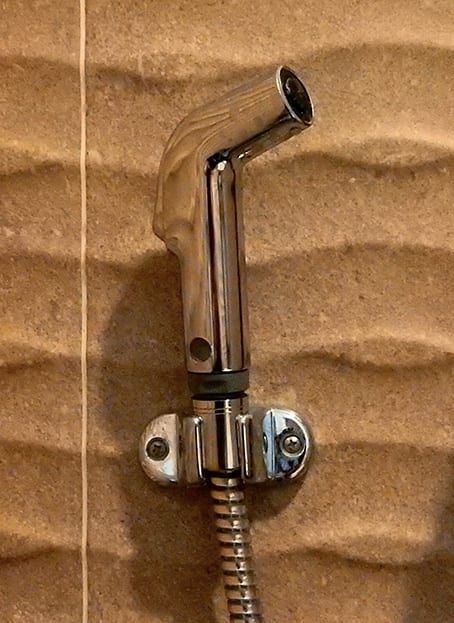 Toilets here are still the western-style (seated), but you cannot flush toilet paper. Instead, you dispose of it in a trash can off to the side. There’s also the addition of the “bum gun” which is a little spray hose off to the side for, well… exactly what it sounds like. As a westerner, this seems a little odd at first, but is actually really refreshing and seems much more clean when you get used to it! America and Europe should consider getting on board with these!
Toilets here are still the western-style (seated), but you cannot flush toilet paper. Instead, you dispose of it in a trash can off to the side. There’s also the addition of the “bum gun” which is a little spray hose off to the side for, well… exactly what it sounds like. As a westerner, this seems a little odd at first, but is actually really refreshing and seems much more clean when you get used to it! America and Europe should consider getting on board with these!
Wires
You’ll see some pretty crazy electrical wiring all throughout Bangkok! The story I heard is that the electric companies can’t keep track of the wires. Every time new electrical work is needed, rather than sort through the wires and figuring out how to tap into the existing connection – they just add more new wires.
Transportation
There are two main public transportation systems here which have a handful of lines throughout the city: the metro (MRT) which is underground, and the skytrain (BTS) which is a couple stories up, offering really great views of the buildings both below and towering above.
Most of the time, these won’t get you exactly where you need to go (because, Bangkok is HUGE!) but they will take you to the general area, and from there you can walk or take a taxi. Both metro and skytrain are very easy to use, very well organized, and very affordable. You can get a ticket from either a ticket machine (which has an English translation option) or a ticket counter. For the skytrain, you can either get a rechargeable card or just pay by trip (which cost about 0.75-$1.50 per trip, depending on the distance). The only slightly tricky part is that the trains get very full during rush hour traffic. I’m told you might sometimes actually have to wait a train or two for there to be room to board the train if the queues are long. I was always able to get a place, though they were packed pretty tightly with people on a couple rides. Fortunately, both metro and skytrain come very frequently, about every 10 minutes.
Besides the metro and skytrain lines, taxis are the main method of transportation for getting around town. They’re easy to find and very affordable. You can recognize a scooter taxis by the bright orange vest of the drivers. For price, drivers will either give you a quote in advance, or turn on the meter when you enter the vehicle. Another popular option is Grab, which is basically the Asian version of Uber. This is technically illegal in Thailand, but widely used regardless.
Overall, the streets in Bangkok are fairly regular, so it’s pretty easy to find your way around. The only slightly challenging part on occasion is finding the entrance to the underground metro.
Pollution
Bangkok was the first city I’ve traveled to where polluted air has been an issue. On the worst days, it wasn’t uncommon to see people wearing surgical-looking air masks, or to hear people coughing. People on scooters more frequently wear air masks as well regardless of how bad the pollution is that day.
Knowing pollution might be a problem in advanced, I’d purchased high-quality cloth air mask online before leaving US from Vlog Mask. Air masks come in a couple different ratings. You need one with N95 or N99 rating to filter out the most particles. It’s possible to purchase air masks in stores around town as well, though perhaps not of the best quality. Besides the rating, another important factor how well the edges fit around your face to prevent bad air from leaking in through the sides. Yet another factor to consider is the type of pollution. Air masks are more effective in filtering pollution caused by things that cause larger particles, like smoke from controlled burns. They’re less effective for things like exhaust fumes.
There’s a handful of different apps on your phone you can download to give you daily reports about the air quality – the one I used is called AirVisual. Some people are more sensitive to the pollution levels than others. General (short term) symptoms of pollution include coughing, burning eyes, sore throat, and difficulty breathing. Most days I wouldn’t have notice it at all, though I did get an itchy phlegmy throat and slightly stinging eyes on the worst days. Unfortunately, the air conditioning units pull air from outside and many places don’t have the best filtration systems, so you’re still breathing polluted air even when indoors.
Food
Food in Thailand is amazingly delicious! My studio didn’t include a stove (most rentals don’t) but with full plates of food costing only a couple dollars, eating out was very affordable here. I had a really fun time trying a huge variety of new meals with flavors I’d never tasted before! Food in Thailand consist largely of rice and noodles with various meats, veggies, and sauces pour over it, and light soup or small salads on the side. A lot of the food is fried, so perhaps isn’t particularly healthy. Despite this, it’s very uncommon to see overweight people in Thailand. Some meals included egg as well, either poached or as a thin omelette draped over a ball of rice. Pork, duck, or chicken is much more common than beef here.
Thai people love spicy food. I learned very quickly to avoid anything that looked like peppers or had an orange sauce, and to double check how spicy it was with the server before I order. Even meals that Thai people consider just “a little spicy” make my eyes water, nose run, and are borderline inedible to me!
I ate brunch most days at the food court in a giant shopping center near my studio. Here, I could get a full plate of food cooked fresh from one of many small restaurants for $1.75 – $2.50. Food courts here often function on a pre-paid card system. You get a card and load money into it, then pay with that for your meal instead of fiddling around with money at every shop, which is just much more efficient overall.
Fruit
Thailand grocery stores and street vendors offer a great variety of fruits I’ve never seen/tasted before – I wanted to try them all! Many of the fruits that are rare exotic imports in US (such as dragon fruit) are common and cheap here. On the other hand, many fruits American/European residents are accustomed to (such as apples and grapes) are imported and therefore much more expensive. New fruits I tried include longkongs (normal and mini), jackfruit, dragonfruit, mangostens, snake fruit and rose apples.
Ratchada Rot Fai Train Night Market
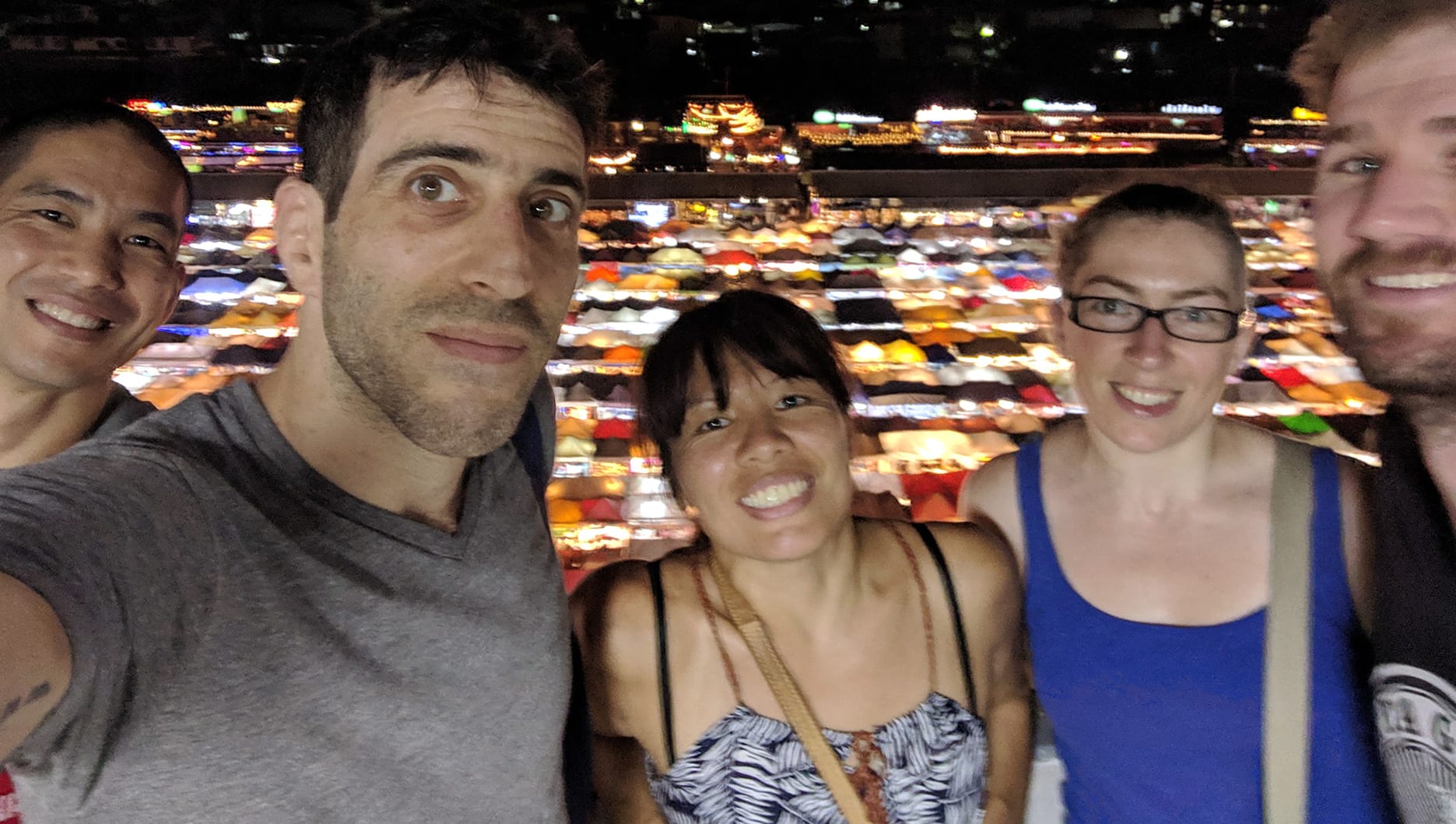 This is one of Bangkok’s many markets full of fresh-cooked vendor food, open every day. Vara led the evening, guiding myself and fellow globetrotters Alika, Scotty, and Josh up and down the very busy market aisles trying various snacks, giving us tips on what to try and explaining things along the way. There are stalls selling various non-food items here as well but again – the main attraction really is the food. All of it was amazingly delicious!
This is one of Bangkok’s many markets full of fresh-cooked vendor food, open every day. Vara led the evening, guiding myself and fellow globetrotters Alika, Scotty, and Josh up and down the very busy market aisles trying various snacks, giving us tips on what to try and explaining things along the way. There are stalls selling various non-food items here as well but again – the main attraction really is the food. All of it was amazingly delicious!
Vara somehow convinced all of us to try eating some grilled bugs that one of the vendors was selling. This is more of a tourist thing and not something regular people habitually eat though. We went with a kind of small grilled cricket, which seemed like a good “beginner” choice among the much larger water beetles and larvae looking things. Not saying I’d go out of my way to eat more but honestly – they really weren’t too bad!
Wat Saket (Golden Mount Temple)
This is one of Bangkok’s oldest temples, featuring a large temple as well as a giant golden chedi (a kind of stupa, or pointed bell-shaped decoration) at the top of a building which sits on top of a low hill that you can access by stairs. The temple at the bottom is free, though there’s a small fee to go up to the golden mount.
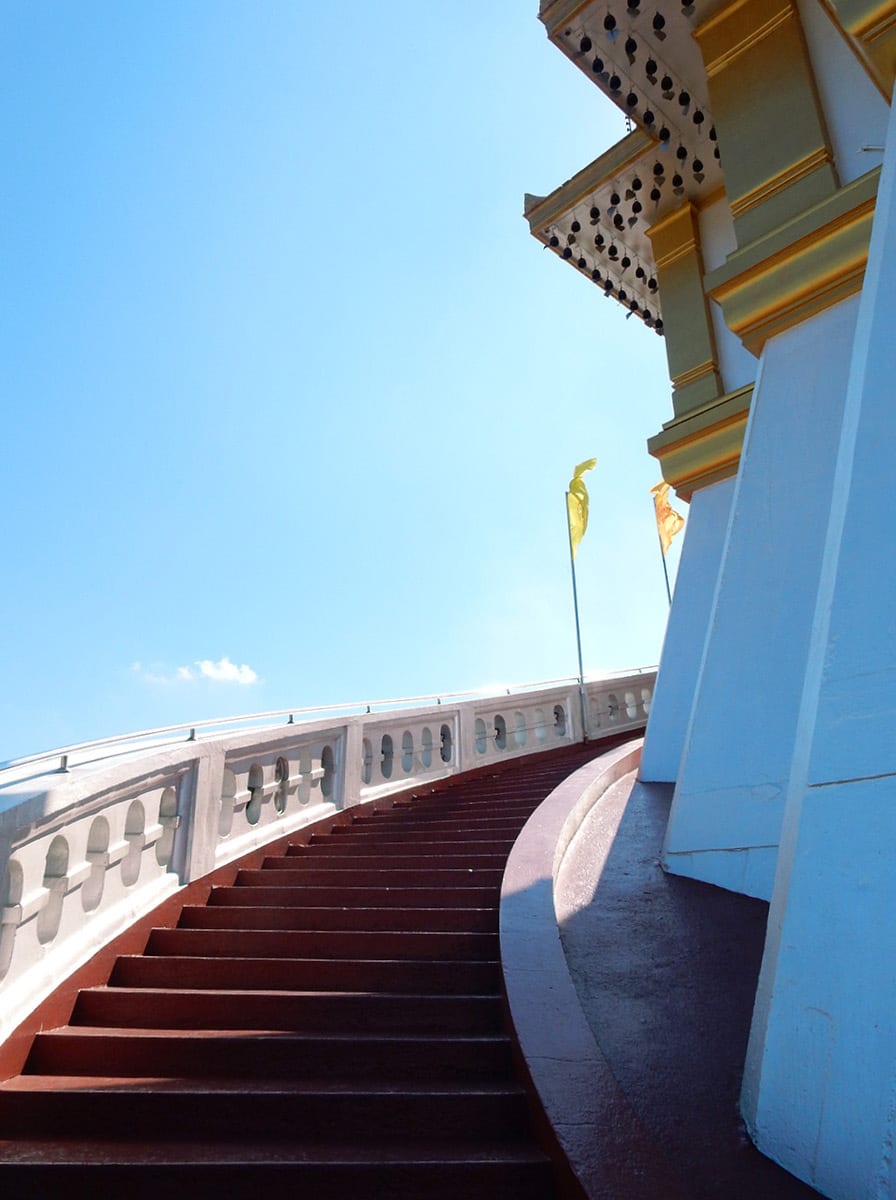 The walk up to the golden mount is 344 stairs long, but is a rather gentle climb with many decorative statues along the way (especially towards the base). There are also flat levels along the way, with lines of large bells (and even a couple giant gongs!) which you can ring for good luck. The path to the golden mount offers great views of the surrounding city all around!
The walk up to the golden mount is 344 stairs long, but is a rather gentle climb with many decorative statues along the way (especially towards the base). There are also flat levels along the way, with lines of large bells (and even a couple giant gongs!) which you can ring for good luck. The path to the golden mount offers great views of the surrounding city all around!
The temple at the base is very lovely as well, and consists of a large hallway lined with golden Buddhas, an open courtyard areas with heavily patterned tiled floor, and a large temple in the middle containing a giant Buddha statue.
A couple things to note: it’s important to dress appropriately when visiting any of the many Buddhist temples. This means shirts with sleeves (no tank tops), and dress/pants/shorts that extend at least below the knees. Some rooms require that you remove your shoes to enter, so keep an eye out for signs near the entrances or (if it’s a smaller temple without signs, or non-English signs) see what the local people are doing and follow suit. Out of respect, you should back away from the Buddha statues instead of turning your back to them. In addition, some statues or objects are meant for circumambulation – walking around them in veneration, meditation or respect. The direction here matters – these special objects should only be walked around in a clockwise direction. Also, avoid pointing the bottom of your feet at any of the religious objects or people (that’s super rude), and if you’re a woman absolutely do not touch the monks.
Lumpini Park
 This is a fairly large park in the middle of the city with many benches and seating areas, some artistic sculptures, a couple large ponds, little rivers crossed by bridges, an outdoor gym, a playground and the special feature of having big monitor lizards! I had the chance to see two of the lizards: a smaller one walking around near a tiny pond, and a much larger one swimming in the biggest pond.
This is a fairly large park in the middle of the city with many benches and seating areas, some artistic sculptures, a couple large ponds, little rivers crossed by bridges, an outdoor gym, a playground and the special feature of having big monitor lizards! I had the chance to see two of the lizards: a smaller one walking around near a tiny pond, and a much larger one swimming in the biggest pond.
I was here on a Sunday, it was pleasantly lively but not overly crowded, with many other people of all ages walking, jogging, and lounging around in the shade enjoying the park. Being in the middle of the city, it’s not isolated enough to drown out the background noise of cars, and you can still see the tops of tall buildings in the distance. But it was still a nice break from being surrounded by the dense buildings and busy streets of the city for a bit. I was very impressed by the large amount of people out jogging here, given that it was an exceptionally hot and humid day.
Bangkok Fight Lab is owned and operated by black belt Morgan Perkins, with a handful of other black belt instructors teaching classes as well, and is part of the Pedro Sauer Brazilian Jiu-Jitsu Association. It’s very conveniently located about 10 minutes away by foot from one of the On Nut skytrain stop, with classes given in English. Besides BJJ and nogi submission grappling, they offer classes in MMA, Muay thai, boxing, judo, general conditioning, and occasionally yoga. Vara teaches kids BJJ classes here a couple times a week as well.
Bangkok Fight Lab was a wonderful place to train – very technique oriented with an exceptionally friendly and welcoming group of people! I instantly felt at home here, it didn’t take long before I could recognize and knew a little about most of the regular students. This gym has a very international group including many expats as well as locals, with new visitors (many of them BJJ Globetrotters!) dropping in regularly. Vara continued to be my most regular training partner during my 3 weeks here, which did wonders for my technique overall but most notably vastly improved my triangles.
Training in the high heat and humidity was a real challenge, especially at first. Oddly, I felt most exhausted 10-15 minutes into the warm up, then somehow forgot about it for the rest of the class. It did become more bearable after a week, though I’m told it’s not something anyone ever truly completely acclimates to.
I meant to check out a few of the other gyms in the city to add to my training list… but have to admit I got a little lazy on this and didn’t end up making it happen. This was in part because I knew I’d be returning to Bangkok for another month later in the summer, so felt like I’d have plenty more time to do it later. It was also just hard to get motivated to take a longer commute to train much further away when I had such an awesome BJJ gym literally next door to my studio!
Bangkok Fight Lab: Nourish Cafe
On the upstairs level of Bangkok Fight Lab is vegan cafe called Nourish, owned by Tammi Willis (purple belt who also trains at Bangkok Fight Lab). Here you’ll find plenty of healthy meals, juices, energy bars, and protein shakes. If you need a break from rice and noodles, it offers some more western-style meal options as well, such as (veggie) burgers. They also have coconuts, which I now believe are the ultimate post-workout drink (natural electrolytes, refreshing, tastes great). As an added bonus, you can sit at the back counter looking down at classes training below!
Bangkok Fight Lab – Ice Bath
Every Saturday, Bangkok Fight Lab had a DIY ice bath session after training! This consisted of filling a giant round plastic bin with 4-5 immense bags of ice, filling it with water, then submerging one person at a time up to the shoulders with the goal of staying in for a full minute. Doing this is supposed to have all sorts of great health benefits that have something to do with capillaries and blood vessels constricting.
I hadn’t tried an ice bath before and the thought of getting into a giant bucket of ice water sounded like just about the worst idea ever, but I wasn’t about to turn down such a unique experience! The guys at the gym assured me that I wouldn’t have a heart attack, (probably) wouldn’t pass out, and that they’d rescue me if I did. Fortunately, Morgan didn’t give me a lot of time to think it over after I agreed to try it, otherwise I probably would have backed out!
The initial plunge felt about as bad as you’d expect from putting your entire body into bucket of ice water. My breathing and heart rate shot up, I found myself gasping uncontrollably for breath until Tammy reminded me to take deep breaths through the nose, which gradually brought it back under control a bit. Before I knew it, Morgan was saying the first 30 seconds was over, and shortly after that, the entire minute was done!
Felt amazing when it was over, so crisp and refreshing! I was actually really proud of myself for having made it through the entire minute. I continued to feel pretty great for the rest of the day, though whether or not that can actually be attributed to the ice bath is difficult to say. Anyhow, I enjoyed the experience so much I did it again the following weekend!
“Fight Street” training report: A paradise of BJJ in Phuket
Reasons to go: Training paradise, tons of healthy food, very affordable, beaches, night market, coconuts, scooters
Getting There
The flight over from Arizona (USA) took about 26 hours, including the layovers. It was good and uneventful – I actually managed to get some decent sleep on the longest chunk of it, which helped pass the time.
On the third section of the flight (from Teipei to Bangkok), I somehow ended up in some kind of first class seat on the second level of what was possibly the biggest plane I’ve ever flown on! The leg space was huge, the seat folded all the way back so I could recline completely, and the blanket was a thick fluffy comforter instead of single layer sheet. I asked the stewardess twice if she was sure there wasn’t some mistake (not wanting to be charged for it later) but she assured me it was correct. I still don’t know why this happened, but it was pretty great!
The (New) Plan
My original plan actually entailed spending the full 4 weeks (the length of my visa) in Bangkok. But Vara (BJJ Globetrotter extraordinaire who currently lives in Bangkok and had been helping to answer my many questions about the city) persuaded me to spend the first week in Phuket with her instead. It didn’t take much persuasion… she had many great reasons why this was a fabulous idea but honestly, she already had me at “BJJ competition on tropical island”.
FYI: Phuket is pronounced “poo-ket”… NOT “fuck-it”.
Entering Thailand
Thailand grants a free 30 day tourist visa to American citizens upon entry. One special requirements – you need proof of an outbound ticket to be permitted to enter the country. Thailand welcomes travelers, but does not want foreigners settling in their country potentially taking jobs from the local residents, unless those foreigners open businesses that are providing jobs for local Thai citizens. Being a native English speaker teaching English in one of the many schools is fine too.
When you arrive at the airport, you’ll need to fill out a form which you’ll give to customs including a bunch of information about your trip, such as passport info and where you’ll be staying. They’ll add a stamp and give it back to you. Someone told me to keep this, as I’d need it upon departure as well, but no one actually ended up asking for it when I left. Still, seems like a good idea not to throw it away, just in case.
I actually entered Thailand through Bangkok before meeting Vara and taking another flight to Phuket, so passed through customs/immigration there. I must say, I was very impressed by the efficiency and great organization of the Bangkok airport – the entire process from de-boarding the plane to picking up my luggage took less than 20 minutes!
Fight Street
Our lodging was on Fight Street, roughly 50 minutes by taxi away from the airport. Fight Street is a total athlete’s paradise! It consists of one long main street which takes about 30 minutes to walk with the two biggest gyms (Phuket Top Team and Tiger Muay Thai) located on opposite ends of the road. There are multiple other smaller gyms offering classes in cross-fit, boxing, and mma along the way as well.
People come from all over the world to be here, for the same reason: serious training. Everything on this street caters to athlete’s needs. Besides the gyms, the rest of Fight Street is lined with restaurants and hotels, with a couple pharmacies, sporting good stores, and massage places mixed in as well.
Meals, smoothies and snacks in the restaurants are made of healthy foods: fresh ingredients, no extra sugar added, and with many high protein options available. The food is amazingly delicious and incredibly affordable for the quality you get, probably about ⅓ what the same would cost in US!
People we met and talked with were staying anywhere from a couple weeks to 6 months. Most had been here before more than once, returning time and time again for the unique atmosphere. Vara herself had been here many times before. This place has a way of getting people hooked when you see and experience it in person – it really is the perfect training environment!
Transportation – Scooters
One down side of training BJJ in Phuket is that there’s no real public transportation system. Taxis from the airport to Fight Street cost about $25. The most practical thing to do for transportation around the island is to rent a scooter near your accommodations, which costs about $8 per day.
There are as many scooters as cars on the roads in Phuket. I thought about renting one myself, but honestly just wasn’t brave enough to attempt it yet. People drive on the opposite side of the road than I’m used to and the rules (such as who has the right of way) aren’t familiar to me. Also, scooters ride between lanes and weave effortlessly through traffic, which I was definitely not feeling confident enough to try! Despite this, it’s not total chaos, there’s definite order to the flow of vehicles and relatively few accidents. I’m told most accidents are actually a result of tourists being drunk or just driving recklessly.
I think helmets are technically legally required on scooters, but many people (tourist and locals alike) just go without. Having ridden motorcycles for a number of years in US and having been very diligent about always wearing full protective gear (helmet, armored vest, boots, gloves) – seeing so many people riding scooters without any protective gear whatsoever (often in shorts and flip flops) was initially quite shocking!
I’ve now also seen people on scooters carrying babies (either balanced on the handlebars, standing between the adult’s feet or strapped to the adult’s back), families on scooters (dad driving with 3 kids kinda hanging on), and scooter side-cars with an insane amount of stuff piled on (I wish I had a photo but I wasn’t sure if it would be rude to take one). I’m so impressed in the latter that people are actually able to make this work without spilling a bunch of stuff! Traffic and vehicle regulations here are a bit looser than in US, it would seem.
Cultural Considerations
There are a couple important cultural differences you should be aware of in Thailand. First, Thai people consider the feet the dirtiest part of the body. It’s rude to point or pick up things with your feet. It’s also rude to point the soles of your feet at another person, so be conscious of how you’re seated or folding your legs. This doesn’t apply within the context of training inside a BJJ gym, of course.
Second, shoes are always removed when you enter a person’s home. Many smaller businesses (like a pharmacy, the gym, or an acai restaurant) expect you to remove your shoes off before entering as well. You can take a hint by looking at the area out front – if you see many other shoes besides the front doorway, you should probably take yours off as well.
Third, it’s a huge offense to step on money (by accident or to stop a rolling coin from getting away, for example). This is because the faces of the king printed on the bills, so in stepping on the bills you’re disrespecting the monarchy. Along those lines, you should be very careful with (or better yet, altogether avoid) any discussions about politics. Unlike America where we routinely mock and harshly criticize our political leaders, much respect is given to the monarchy here and that sort of discussion is not socially acceptable.
Lastly, it’s forbidden for Buddhist monks (which you’ll see periodically out and about with shaved heads and bright orange robes) to touch women. This includes handing items to monks and sitting next to them. So, if you’re a woman, out of caution and respect, it’s best to just keep a wide distance between yourself and the monk if you see one out in public.
Coconuts
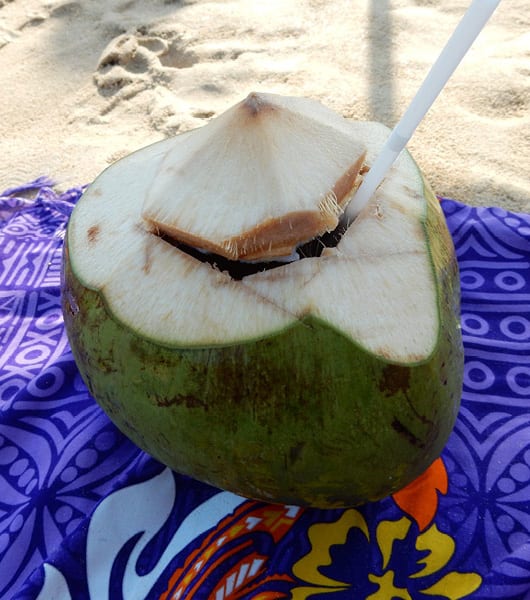 On the second day in Phuket, I discovered coconuts, which became my newest favorite thing for the remainder of the trip. They taste about 100x better fresh than anything you can find in stores in US! In addition to being pretty cheap ($1-2 per coconut) and super refreshing, these are a great source of natural electrolytes. When you’re done drinking the juice, you can scoop out and eat the pulpy white part with a spoon. It takes a couple tries to perfect the technique of doing this well. It’s amazing to watch the vendors fearlessly cut open the tops of the coconuts with a giant knife without chopping off their fingers!
On the second day in Phuket, I discovered coconuts, which became my newest favorite thing for the remainder of the trip. They taste about 100x better fresh than anything you can find in stores in US! In addition to being pretty cheap ($1-2 per coconut) and super refreshing, these are a great source of natural electrolytes. When you’re done drinking the juice, you can scoop out and eat the pulpy white part with a spoon. It takes a couple tries to perfect the technique of doing this well. It’s amazing to watch the vendors fearlessly cut open the tops of the coconuts with a giant knife without chopping off their fingers!
Nai Harn Beach and Phuket Town Night Market
Somewhere in the middle of the trip, we went to Nai Harn beach and the Phuket night market with a group of friends from the gym. Vara and I didn’t have scooters, but most people from the group did, so we rented helmets and rode passenger with some of the guys. I’m still not brave enough to drive one myself, but being passenger and seeing more of the city like this was a very fun experience!
Nai Harn beach (I’m told) is more local and less touristy than some of the other beaches in the area. The beach consisted of super fine pale white sand with lush green hills on both sides sheltering boats in the water in the distance. There were a fair amount of people at the beach that day, but it was not uncomfortably full. I rented a parasol for $1 and lounged around drinking coconuts until the sun went down.
The night market was packed, with a festive lively atmosphere. Most people were locals, though there were handfuls of other tourists there as well. The market consisted of a street blocked off from vehicle traffic lined with vendors down the middle and along both sides. The buildings lining the street were interesting as well, more of a colorful European style architecture from Portuguese influence, with spectacular artwork on a few.
Night markets in Thailand, I’ve now learned, are synonymous for “food festivals”. There are clothing and other small items for sale as well, but the main attraction is the food, most of which comes in small snackable portions cooked up fresh by the vendors. I didn’t know what most of it was but it looked and smelled AMAZING! The next couple hours were spent with the group walking up and down the market tasting all the things.
On my second day in Phuket, Vara and I attended the Siam Sub Series Competition (as spectators). The event was held outdoors in an open air but covered soccer stadium, hosted by Alex Schild of Tiger Muay Thai. We arrived early to help set up the space – arranging the mats, attaching banners to guard rails, moving tables and chairs etc.
The competition featured to big mat spaces, with a smaller warm-up mat off to the side. Later in the day, vendors sold fresh poke bowls as well! As a spectator, this was one of the most fun competition I’ve attended due to the spacious open air venue, very relaxed atmosphere, and layout which made it possible to sit pretty close to the matts to watch the fighters. Most of the people who participated were travelers already staying for BJJ in Phuket, but some had flown in from Bangkok and other neighboring cities to attend. Saw a lot of really great and fierce fights that day which made me eager to get back on the mats and train more myself!
Training
Besides BJJ, both Tiger Muay Thai and Phuket Top Team offer a range of fitness and fighting sport classes such as MMA, crossfit, wrestling, muay thai. Both gyms provide really hardcore, immersive training programs, including the options of on-site lodging. Both include multiple areas (indoor and outdoors) to accommodate classes of multiple disciplines.
People come to these gyms for serious training. As a result, most of the students you’ll find here are exceptionally focused, motivated, dedicated to their sports, and ready to train hard! It’s a very international mix, with students from literally all over the world.
I wanted to experience training at both gyms so purchased a day pass to each, on separate days. Fortunately (for me), English is default common language, and also the language classes are taught in.
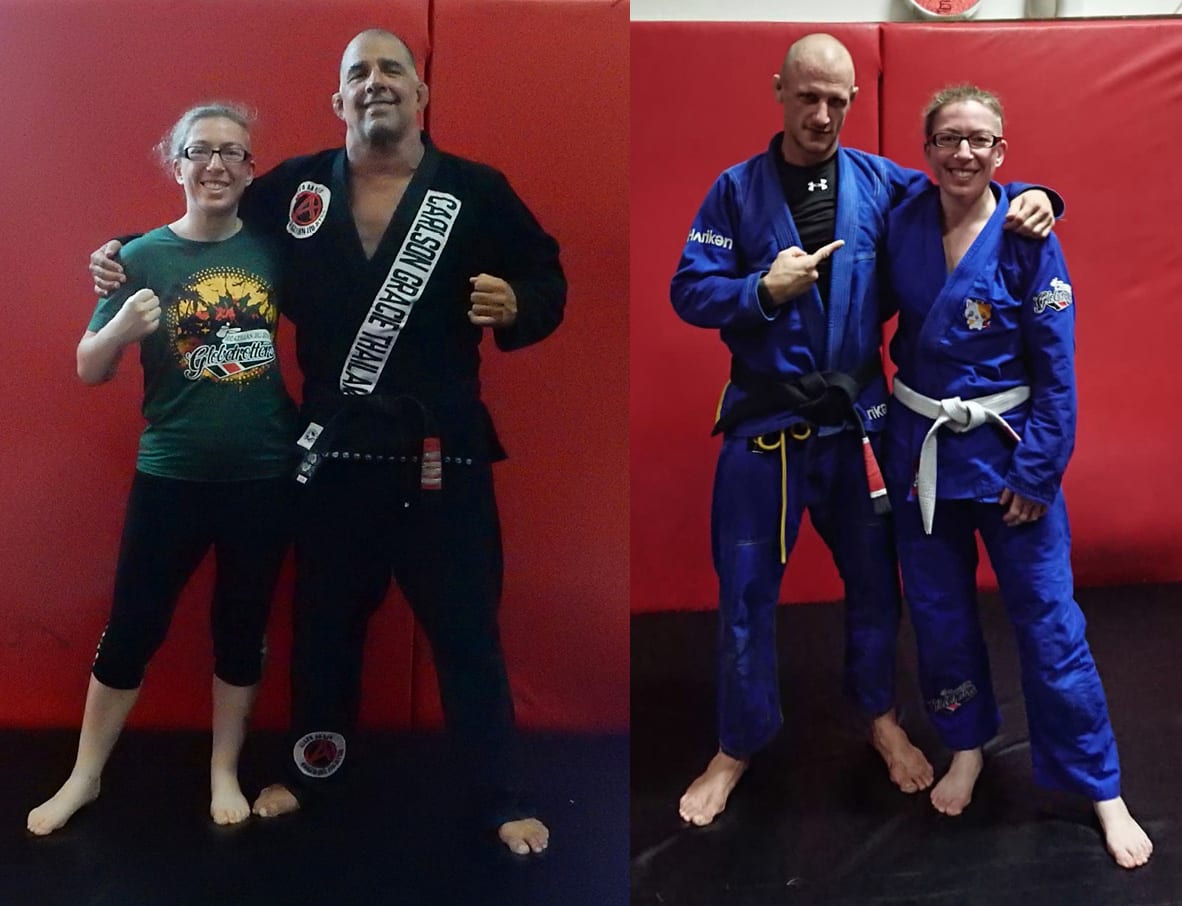 Top Team is actually part of the Carlson Gracie lineage. (4th degree black belt) is the primary BJJ instructor there. I was able to train twice in one day here: Olavo Aberu’s class in the morning and Mateo Bernard’s class in the evening.
Top Team is actually part of the Carlson Gracie lineage. (4th degree black belt) is the primary BJJ instructor there. I was able to train twice in one day here: Olavo Aberu’s class in the morning and Mateo Bernard’s class in the evening.
Mateo (a fellow BJJ Globetrotter!) is actually an instructor from Exit Asia in Freiburg, Germany, but visits to train BJJ in Phuket for a month every year. Both instructors were a pleasure to train with – very charismatic and welcoming.
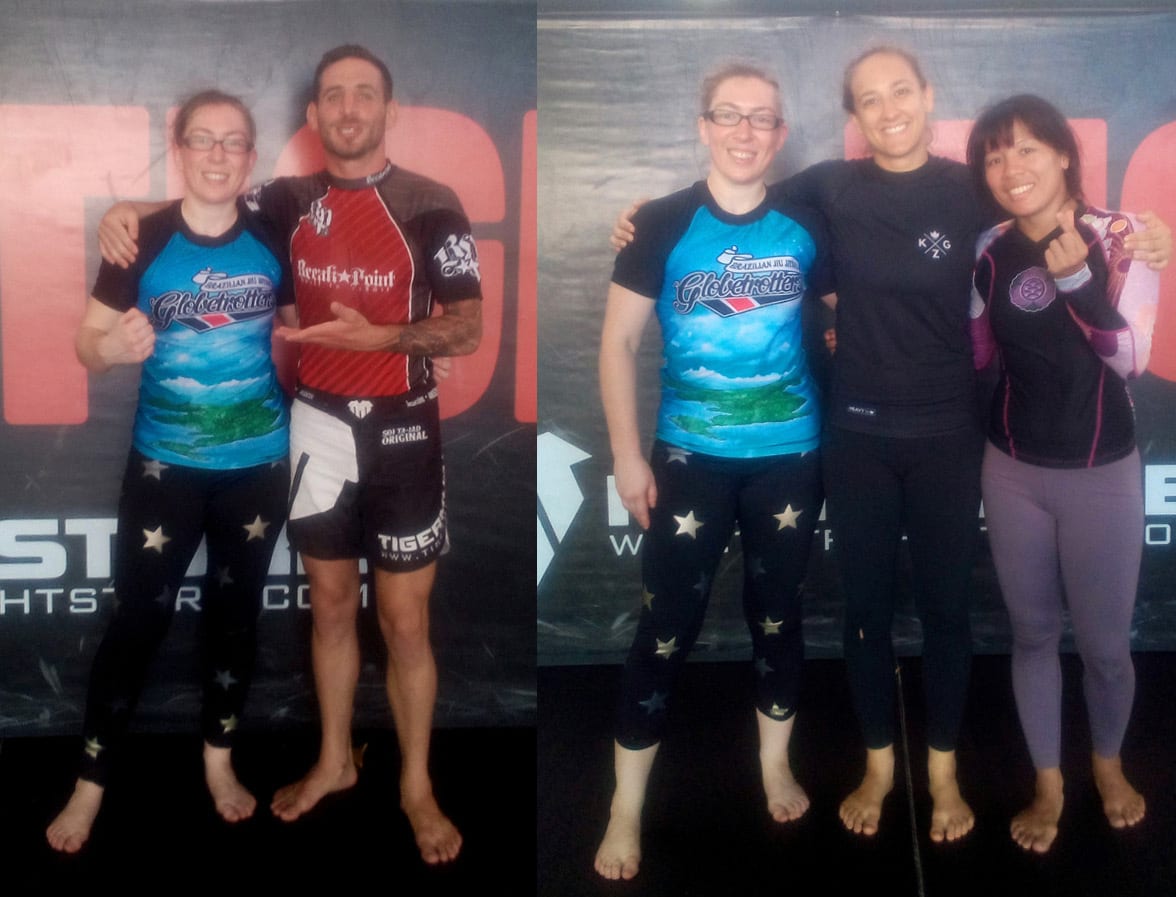 Having nothing else planned for the day and wanting to make the most of the day-pass, we actually attended four classes in one day!
Having nothing else planned for the day and wanting to make the most of the day-pass, we actually attended four classes in one day!
The first class was taught by Maxine Thylin, who is actually in the process of traveling the world with her husband (who also trains BJJ), and is just temporarily teaching BJJ in Phuket. Maxine’s bright and cheerful personality and easy going nature made her a pleasure to train with!
The second class was taught by Alex Schild. The technique was a little newer and more challenging for me, but after some repetitions and adjustments, I was able to get a decent approximation of the main movements.
The last two classes in gi were taught by Stuart Cooper, in gi. I was feeling pretty exhausted by the end of it, but still managed to finish every last roll!
Thank You, Vara!
I first met Vara at BJJ Globetrotters Summer Camp in Leuven in 2017. She was manning the check-in booth welcoming the arriving guests, next to a life-size illustration of herself printed on a banner that said “Ask Vara”. If you had any questions about anything, she was the person to ask with the answers!
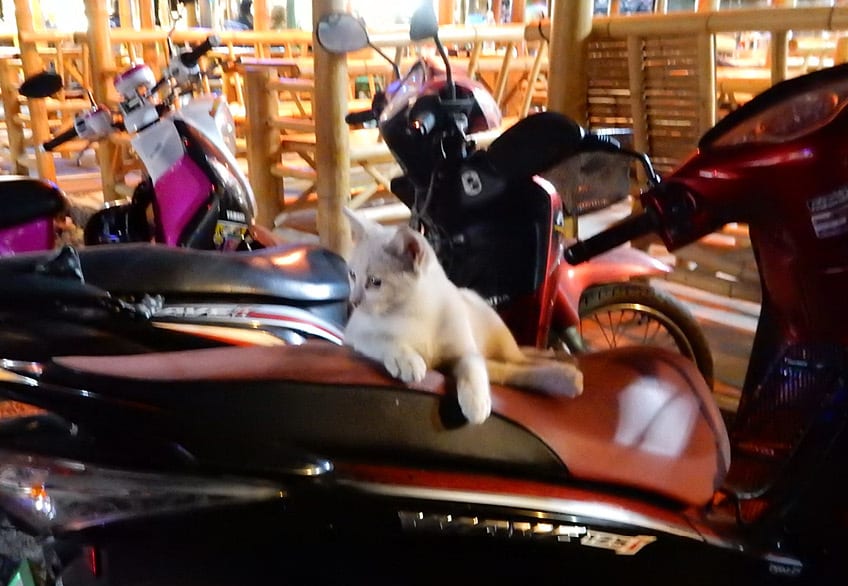 I really cannot thank Vara enough for everything she’s done to help with my trip this last month. Her advice and insight has been immensely valuable in all aspects of this trip. A week on Fight Street was an amazing experience which probably wouldn’t have happened without her, largely because I didn’t know it even existed. Navigating my first Asian country and understanding how certain things work would have been considerably more intimidating and would probably have taken me 30x longer without her help.
I really cannot thank Vara enough for everything she’s done to help with my trip this last month. Her advice and insight has been immensely valuable in all aspects of this trip. A week on Fight Street was an amazing experience which probably wouldn’t have happened without her, largely because I didn’t know it even existed. Navigating my first Asian country and understanding how certain things work would have been considerably more intimidating and would probably have taken me 30x longer without her help.
Vara is also an exceptional training partner – easily pinpointing mistakes in my technique and giving me many valuable tips on how to improve. She’s also just an all-around very kind, considerate and fun person to hang out with!
Giant thanks, Vara for helping me train BJJ in Phuket!
Rolls in the American Desert
Reasons to go to Phoenix: Sunny blue skies all year round, very mild winters, great hiking, unique desert environment, great Mexican food, many BJJ gyms
Intermission!
I took a little break from traveling from mid-Dec to mid-Feb to visit my parents in Phoenix (Arizona, USA) over the holidays. The majority of this break was spent catching up with family and friends, hiking, wrapping up some loose ends, preparing for the next big trip and of course… training!
Having spent about 16 years living in Phoenix, it’s already a very familiar city. Except for the first couple days of very mild reverse-culture-shock, it really didn’t take long to feel like an Arizona/USA local again. I won’t go into huge detail describing Phoenix, as I’ve only ever experienced it as a resident rather than a foreigner. The things that might seem exceptional for someone from a different state/country just seem normal to me. Nevertheless, here’s some general background information and highlights worth knowing.
Phoenix
Phoenix is a MASSIVE metropolitan area, actually now the 5th largest in the USA! It’s a sprawling city, build out rather than up due to abundance of land, and still constantly growing. Its mild winters and relatively low cost of living (compared to California) make it an attractive location to settle for a lot of people from other states.
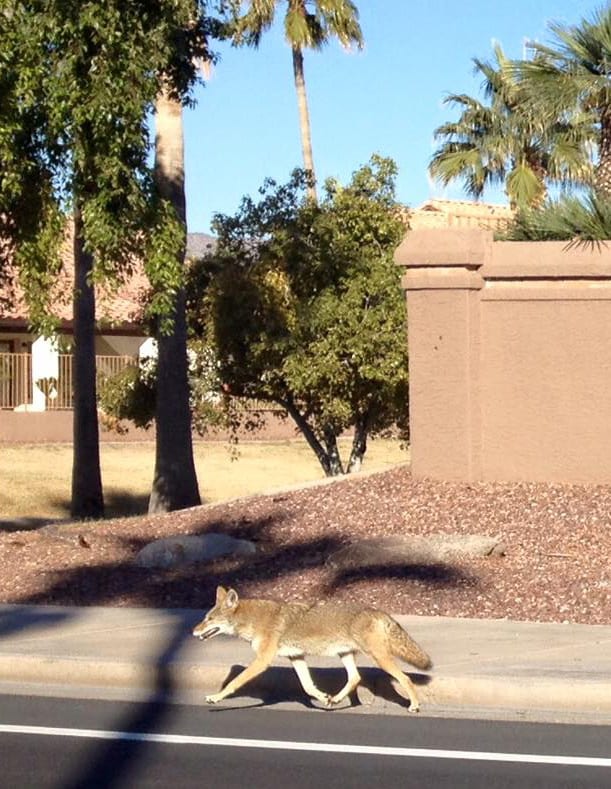 Phoenix is a desert city. It’s extremely dry all year round, with cloudless pure blue skies most days and periodic violent rainstorm in the summer. In the hottest summer months, temperatures easily top 110°F (44°C) many days in a row. Stepping outside literally feels like opening the door to an oven. Even in the shade and even at night, it’s unbearable. Fortunately, many homes and apartment complexes have outdoor pools, though in the summer even these are too hot to truly be refreshing. The “winter” is great though – still warm enough to wear tank tops and shorts most days, with just a week or two that’s truly cold enough to warrant more than a light sweater.
Phoenix is a desert city. It’s extremely dry all year round, with cloudless pure blue skies most days and periodic violent rainstorm in the summer. In the hottest summer months, temperatures easily top 110°F (44°C) many days in a row. Stepping outside literally feels like opening the door to an oven. Even in the shade and even at night, it’s unbearable. Fortunately, many homes and apartment complexes have outdoor pools, though in the summer even these are too hot to truly be refreshing. The “winter” is great though – still warm enough to wear tank tops and shorts most days, with just a week or two that’s truly cold enough to warrant more than a light sweater.
When people say Phoenix, they’re generally loosely referring to the metropolitan area including a bunch of smaller cities/suburbs which surround the actual city of Phoenix. These smaller cities run into one another with no clear boundaries distinguishing where one ends and the other begins. Some parts of town are extremely wealthy and beautiful, with massive multi million dollar homes and super classy restaurants. Other areas I’d be afraid to walk through alone after dark. The majority of Phoenix is made up of fairly unremarkable urban area and suburbs though.
 The two most interesting areas of the Phoenix Metropolis are downtown Phoenix and Tempe. Both have a fairly pedestrian-friendly center with lots of great restaurants and cafes. Tempe has a university town vibe with all the college students that attend Arizona State University in the area. Downtown Phoenix has a hipster vibe, with lots of craft beer places, live music, and bright artwork on some of the buildings.
The two most interesting areas of the Phoenix Metropolis are downtown Phoenix and Tempe. Both have a fairly pedestrian-friendly center with lots of great restaurants and cafes. Tempe has a university town vibe with all the college students that attend Arizona State University in the area. Downtown Phoenix has a hipster vibe, with lots of craft beer places, live music, and bright artwork on some of the buildings.
Public transportation is Phoenix is bad. I have the huge advantage of borrowing my parents’ car every time I come to visit but in all honesty, it would be very difficult to move about the city without your own vehicle, unless you’re able to stay within one of the smaller more pedestrian-friendly areas, such as near the main campus of Arizona State University, or downtown Phoenix.
Phoenix does have a light-rail, but it only really runs along a couple routes between Tempe and city center. Which is great if you happen to be going that way, but otherwise not particularly useful. There is a bus system, but the stops aren’t abundant enough to make it a practical option for everyday transportation for most people.
Navigation in Phoenix is incredibly easy. Due to the grid-like layout of most of the city, it’s almost impossible to get lost. Rush hour traffic is pretty bad though, and easily quadruples the time it should take to get anywhere for a couple hours in the morning and evening when people commute to/from work.
Dust Storms
One interesting natural phenomenon of Phoenix are massive dust storms which happen once in a while in summer. These appear in the distance as a massive churning wall of dust many stories high coming slowly towards you. Once inside, strong winds blow sand so dense it dims the light from the sun. Sand gets in your eyes, hair, and mouth, making your skin feel gritty. Fortunately, these don’t last more than an hour or so. They’re also usually mostly harmless, though the strong winds sometimes break trees and branches. For this reason, it’s best to just go inside and wait it out.
Wildlife
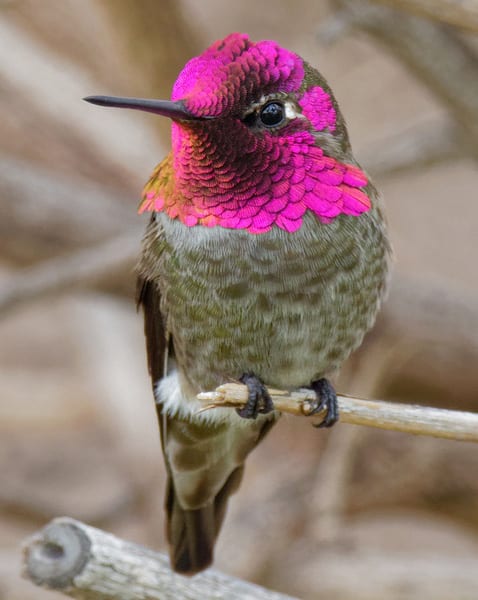 Some of the wildlife you’ll see easily (even in the city) includes geckos, other lizards, hummingbirds, cockroaches, and scorpions. Some of the wildlife you’ll see less regularly includes coyotes, snakes, Gila monsters (google this), and deer (up north). There are also wild javelinas (which look like small boars) which sometimes even venture into the neighborhoods on the outskirts of the city, but I’ve never actually seen one.
Some of the wildlife you’ll see easily (even in the city) includes geckos, other lizards, hummingbirds, cockroaches, and scorpions. Some of the wildlife you’ll see less regularly includes coyotes, snakes, Gila monsters (google this), and deer (up north). There are also wild javelinas (which look like small boars) which sometimes even venture into the neighborhoods on the outskirts of the city, but I’ve never actually seen one.
South Mountain Hiking
Towards the southwest side of Phoenix is South Mountain, one of the biggest urban parks in all the US! It’s basically a 17 mile long oval of hilly desert land crisscrossed by tons of hiking trails, and is one of my favorite places in Phoenix. The desert can be quite beautiful, especially after the rain, and it’s really nice to have such a huge natural area to jog/hike so close to the city! It’s a great place for mountain biking too, if you’re into that.
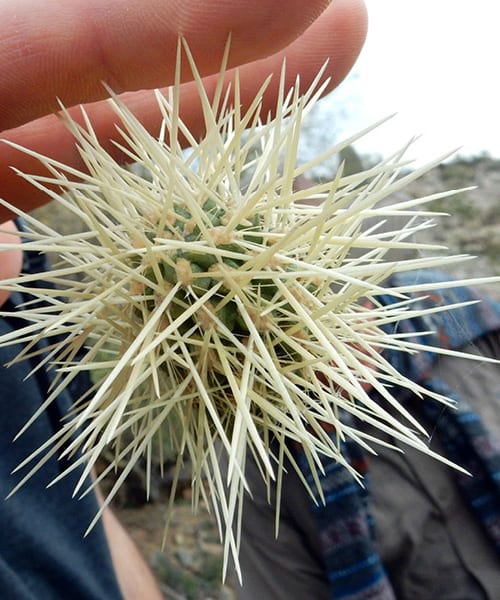 If you’re not accustomed to hiking in the heat, take great care to bring adequate sun protection and water when going out, especially in any season except “winter”. It’s easy to get dehydrated or have heat stroke if you’re not accustomed to this environment. Every year at least a handful of people (mostly unprepared tourists) have to be emergency rescued from the hills for underestimating how intense the heat and dry climate actually is. Don’t become one of them!
If you’re not accustomed to hiking in the heat, take great care to bring adequate sun protection and water when going out, especially in any season except “winter”. It’s easy to get dehydrated or have heat stroke if you’re not accustomed to this environment. Every year at least a handful of people (mostly unprepared tourists) have to be emergency rescued from the hills for underestimating how intense the heat and dry climate actually is. Don’t become one of them!
Also, watch out for the cacti. Most are fairly harmless (well, except for being covered in spikes) but some (like the jumping cholla) have spines with tiny backwards facing hooks on the tips that will dig themselves into your skin and hurt like hell to remove.
Arizona
Arizona overall is hiker’s paradise. There’s a million really nice hiking trails all throughout the state. While the area around Phoenix is mostly flat desert (complete with giant saguaro cacti!), the state actually has a big variety of climates and ecosystems, with actual forests with trees when you get into the mountains to the Northern and Southern parts of the state. Mild winters make many of the trails accessible throughout most of the year. The Grand Canyon is about a 4.5 hour drive North of Phoenix, you can hike there as well.
Vegas
I took a two night mini trip to Vegas early February to visit a friend and of course, to train! By car, Vegas is about 4-5 hours drive from Phoenix. There’s nothing much to see along the way – mostly just wide open desert, with some more interesting rocky hills near the Hoover Dam area.
I won’t talk much about the city of Vegas, since I feel that’s been covered extensively by others already. I will say, most of Vegas is actually just a fairly normal city, not so different from Phoenix. The strip area full of bars, swanky hotels and casinos which the city gets its party reputation from is actually just a fairly small area near the city center.
While in Vegas, I did have the opportunity to train at two gyms, Gracie Humaita West Craig and Odin’s Halls. Both were very friendly and welcoming, I had some really nice rolls with students of each!
Odin’s Halls (Vegas)
 Odin’s Halls (owned by instructor Steve Feeka) opened in October 2018 and became a part of the BJJ Globetrotter community in February 2019! Despite being such a new gym, at the time I attended it already had very solid group of regular students, which I attribute largely to Steve’s very welcoming personality and enthusiasm for the sport. It’s a very family-friendly gym, including many classes for kids of all ages. One unique thing – there’s a midnight class every Wednesday night! I was there on a weekend so unfortunately didn’t get the chance to attend that one. As of this writing, Odin’s Halls is actually Vegas’s first and only Globetrotter Affiliated gym!
Odin’s Halls (owned by instructor Steve Feeka) opened in October 2018 and became a part of the BJJ Globetrotter community in February 2019! Despite being such a new gym, at the time I attended it already had very solid group of regular students, which I attribute largely to Steve’s very welcoming personality and enthusiasm for the sport. It’s a very family-friendly gym, including many classes for kids of all ages. One unique thing – there’s a midnight class every Wednesday night! I was there on a weekend so unfortunately didn’t get the chance to attend that one. As of this writing, Odin’s Halls is actually Vegas’s first and only Globetrotter Affiliated gym!
Jay Pages BJJ (Phoenix)
Jay Pages BJJ is my “home gym” whenever I return to Phoenix, and is also a BJJ Globetrotters affiliated gym! I really cannot say enough good things about my experience training here. Jay Pages’ gym embodies all the things I love most about training and BJJ: high level of technical skill and physical training + passionate instructors committed to their student’s success + a fun and very inclusive environment. Training here one of the things I look forward to most every time I return to Phoenix.
Jay and Lisa (owners and head instructors) are exceptionally welcoming, and go above and beyond as instructors – always approachable and available to answer questions. They’re a very active part of the BJJ community in Phoenix, hosting and participating in competitions regularly. Lisa additionally teaches woman-only classes a couple days a week, Jay participates and teaches at some of the BJJ Globetrotters camps. Weekends are Open Mat, students come from many of the neighboring gyms to participate and everyone is welcome for rolls there regardless of affiliation.
The gym itself is one of the nicest I’ve ever seen: HUGE well-lit mat space in the main room, with weight lifting equipment to the side, and an entire additional smaller mat space in a separate room.
It was a pleasure to train here during my two months in Phoenix. Giant thanks goes out to Lisa and Jay for creating this amazing community, and to everyone at the gym who welcomed me to be a part of it! I’m very grateful to have had the opportunity to train here, had a awesome time, and learned a lot!
Other Phoenix Area Training
Paul Nava Ares BJJ
Stopped by here on one of their Open Mat days, got some nice rolls in!
Spartan Academy (Tempe, Arizona)
This was actually a wrestling class, but I figured that was close enough to count it on my travels/training list.
Verde Valley BJJ
I found this one on the BJJ Globetrotters affiliated academies list, and drove up one morning (about 2 hours north of where I stay in Phoenix) to check out their Open Mat. Honesty, I was more than a little surprised Cottenwood even had a BJJ gym since it’s a super tiny town, and wasn’t really sure what to expect here. But, turned out to be a great Open Mat day with some really chill people!
Black Flag BJJ
Another Globetrotter affiliated gym! I didn’t actually train here on this trip (since it’s quite far from where I stay), but had such a great experience training here the year before that I felt like I needed to mention it. If you’re in their part of town – great instructor, great place to train!
Next Adventure!
I left Phoenix feeling incredibly excited for the upcoming trip… and also more than a little nervous. My next destination was Thailand, and would be the first time I’d been to any Asian country! I’d become pretty comfortable with traveling Europe at this point but booking a flight to Thailand felt like a GIANT step out of my comfort zone into something vastly more different than anything I’d previously experienced.
The Plan
I booked flight and accommodations for the next two months: one week in Phuket (Thailand), three weeks in Bangkok (Thailand), then one month in Hanoi (Vietnam). I also booked tickets for BJJ Globetrotter’s Heidelberg Summer Camp.
My plan is to stay in South East Asia until Camp, staying about a month in every location… but I haven’t decided where I’ll go after Hanoi yet, from mid-April through mid-July.
A year ago, the thought of having no concrete plan and no idea where I was going to live in two months would have probably terrified me, but now – I’m just not too worried about it. So crazy how much things can change in just 1/2 year!
Autumn in Tartu, Estonia
Reasons to go: Peaceful small town charm, bike/pedestrian friendly, extremely safe for solo female travelers, budget friendly, fast wifi, many English speakers
Tartu (Estonia) was actually the destination of my first longer-term stay upon leaving Belgium, from mid-September to mid-October. I debated for some time whether or not to include this post, as many months have now gone past since that first trip. I much prefer to write about a place while actually in the city or very shortly upon departure, so that all the impressions are still fresh in my mind. But I wasn’t yet blogging at that time, so wasn’t in the habit of taking notes or high resolutions photos. Still, it seemed too important a destination to leave out entirely.
Why Tartu?
The first question after having decided to leave Belgium to become a full-time nomad was: where to go? I had a criteria in mind and could already think of a lot of cool places, but wanted more ideas from people who’d actually traveled and lived there, so posted up on the BJJ Globetrotters FB group explaining my situation and asking for recommendations.
One of the many people who replied with suggestions was Jorgen, instructor of Võimla gym in Tartu, who I’d met some weeks previously at the Globetrotters 2018 Summer Camp in Leuven (I had attended his presentation on food/nutrition there).
I’ll go ahead and admit that I’d never actually heard of Estonia at this point, and didn’t really know where it was or anything about it. But, having already been to many bigger, more traditional tourist cities on past vacations, I was interested in trying some smaller, lesser-known destinations. After some Google research, Tartu did indeed meet all my criteria and overall seemed like a pretty good choice.
Jorgen probably doesn’t realize it but was a HUGE help to making this trip possible, from finding lodging and making recommendations on transportation to making me feel very welcome to come train at his gym. Being so new to nomad-life travels and longer stays, it was also just immensely reassuring to know someone who could answer questions, or potentially offer advice if anything with the trip went wrong.
Riga to Tartu
My first challenge was actually getting to Tartu. Unfortunately, none of my usual favorite budget airlines flew to Tartu directly from Belgium, making the best options flying to Tallinn (the capital of Estonia) or flying to Riga (Latvia), then taking a long distance bus over to Tartu. I chose the latter (I don’t remember why, probably just because it was cheaper).
I arrived in Riga around noon and took a couple buses to get to my hostel (I had a private room with a shared kitchen/bathroom that time) to drop off luggage. I then spent most of that afternoon touring city center, which was actually really nice and very pedestrian friendly. Tall pretty buildings (many in the art nouveau style) lined wide brick and cobblestone streets with restaurants on every other block. Here, I had an exceptionally good and incredibly cheap meal of Latvian food which consisted of fresh bread, hearty meat/veggie soup, and salad.
Since Flix Bus (my usual long-distance bus of choice) didn’t have routes in Latvia or Estonia, I used Lux Express instead, which actually turned out great. The 4.5 hour bus ride over was comfortable and uneventful, and included free coffee. I spent most of the time listening to music and watching the scenery, which consisted mostly coniferous forests with a scattering of villages, fields and smaller clusters of houses along the way.
Tartu
Tartu is full of small town charm and is possibly one of the safest cities I’ve ever been to. Here, it’s not uncommon to see even fairly young children walking or biking around solo, which would be entirely unimaginable by American big city safety standards.
The city center is clean and pretty, with medium sized classical buildings, paved stone and brick streets, and many unique sculptures. The size of the city, plus many spacious, well-maintained walking and bike paths make Tartu very easy to transverse without car. I didn’t even bother getting a bus pass while here but simply walked and biked everywhere instead.
Despite its relatively small size, Tartu does include a major University and huge student population. The campus isn’t centralized but rather comprised of a series of buildings scattered throughout town. It’s common to see young people and students going to and from class anytime of the day.
A river runs through the center of Tartu, crossed by a handful of bridges lit up with colors at night. You can sometimes see people fishing off the bridges or from piers along the shore. There’s a lot of graffiti around and under the bridges, but mostly artistically done. Instead of making the city appear shabby or sketchy, it gives the landscape a creative, crafty, almost hipster vibe.
On the outskirts of the city along the river are a couple small beaches with sand, playground equipment, and some outdoor workout equipment. I saw a guy swimming bare-chested in the river once, on a day where I was cold enough to wear my thickest coat and many layers of clothing. Estonians are so hardcore!
My time spent in Estonia was relaxing and calm. I slept exceptionally well at night, possibly either due to the silence (there wasn’t the usual background noise of traffic ever-present in the big cities) or because the air quality was exceptionally good.
My accommodations consisted of a room in a house with a family that included two (adorable!) kids. My hosts were exceptionally kind, and very welcoming – I felt a little like I’d become a normal member of the household by the end of the month.
Besides that, I trained regularly and enjoyed many nice walks, jogs and the occasional longer bike ride through the woods on the outskirts of the city. The people of Tartu don’t consider this to be a true forest, but coming from desert and dense city, it felt like a real enough forest to me. I especially enjoyed the beautiful golden autumn colors towards the end of my stay.
Estonia
Estonia has a long history of basically being conquered and occupied by various other neighboring countries. It wasn’t until fairly recently (1988) that it became independent. There’s still a large Russian population (especially in Tallinn) who are descendants of people who had immigrated over during previous Russian occupation.
The Estonian History Museum in Tartu was especially nice – huge, very modern with many interactive and digitally-augmented exhibits. What’s additionally neat is that visitors are given a “language” card which they can swipe on little panels next to each exhibit to change the language of the text.
Oddly, many of the vegetables commonly found in most European countries came in exceptionally large sizes in Estonia. Someone explained to me that this was because Estonia was very far North so had extra daylight hours in the summer. This, combined with generous rainfall and moderate temperatures, creates ideal conditions for growing giant veggies.
Estonian People
Estonian people are very considerate and kind, but (to someone accustomed to American culture) at first glance might seem extremely stoic and impassive. Estonians do not smile automatically and do not make irrelevant small talk (at least, not to strangers). One of my training partners once explained to me that even eyes are considered “private space”, so it’s rude/invasive to look a stranger or in the eyes too directly.
Also, “how are you” is not used as a casual greeting. That’s considered a personal question you should ask only to someone you know well, to which you can expect a very genuine, thoughtful answer rather than an automatic, offhand “I’m good, you?”. Many Estonians dislike the American “how are you” greeting for what they perceive to be insincerity. As a person who grew up in American culture, it was a surprisingly hard habit to break to stop myself from automatically greeting everyone I met with, “hi, how are you?”.
The Estonian stoicism applies more to previous generations than the younger ones though, since more recent generations have been exposed to far more western culture through television and internet. You also just get used to Estonian mannerism after having been there awhile, and begin to notice and appreciate the subtleties rather than expecting more prominent, overt displays of emotion. So, if someone in Estonia isn’t broadly smiling, isn’t asking how you’re doing, and doesn’t seem especially chatty – do not worry or take offense, they’re probably not angry or being rude. It’s just not their custom.
Training
Võimla, owned by brown belt instructor Jorgen Matsi, was my “home gym” for a month while in Tartu. This gym was very friendly and welcoming, with an international atmosphere including some students from a handful of other different countries who were attending Tartu University. For the month that I was there, training include a strong emphasis on take-downs as well. Classes alternated between gi and nogi, in a mix of English and Estonian. On the days where the class was given in Estonian, there was never a shortage of students willing to help, who very thoughtfully took initiative and began translating for me before I could even ask.
Võimla gym has an exceptionally big group of women as well, probably 10-12 who train and compete regularly (possibly more, since not everyone attends class every day), which is HUGE for a normal BJJ class in Europe!
One very early morning I took the Lux Express up to Tallinn, about 2.5 hours to the North of Tartu to train at Priit Mihkelson’s 3D Treening – future location of the 2019 Globetrotter Spring Camp! Really nice facilities with a HUGE mat space, bean bag chairs and a sauna (which are common in Estonia) in the women’s locker room!
After training, spent the remainder of the day wandering around the adorable city center full of Gothic style buildings, with (again) many cute little paved streets and small cafes/restaurants. I stopped at one for a very good (and very reasonably priced!) meal.
Eventually the cold and pouring rain got the better of me. I spent the last couple hours of the day checking out what turned out to be a really nice (and much bigger than expected) museum, before taking the late evening Lux Express bus back to Tartu.
Traveling & Training in Liege, Belgium
Reasons to go: Finest waffles, chocolate, and craft beer of all the world! Modern city convenience, old European city charm, museums, beautiful churches/castles, unique cultural festivals, open air markets, holiday markets, good public transportation, reasonably safe for solo female travelers (there’s a few sketchier areas to avoid, especially after dark), many English speakers.
This Trip
I was only in town for a handful days passing through from Budapest to America on this trip, so spent the majority of the time hanging out with my very wonderful aunts and uncles, tying up a few loose ends, and of course – training! Having lived in Belgium for 2.5 years previously though, I’m quite familiar with the city, so wanted to take a moment to share with you what Liege and beautiful Belgium has to offer.
Belgium
Belgium is culturally split roughly in half between the Dutch-speaking Flanders region to the North, and French-speaking Wallonian region the the South. There’s a very tiny German chunk to the far East as well, giving the country 3 main national languages. One thing to keep in mind when traveling between the three regions is that the city names change based on the language of the region. Take the French name Liege, for example. This city is also known as Luik (Dutch) and Lüttich (German).
Some of you might already be familiar with Belgium from the (now retired) massive BJJ Globetrotters Summer Camp in the small university town of Leuven. When people visit Belgium, they typically see Brussels, Bruges, Ghent, and Antwerp – all of which are quite beautiful and rich in culture, art and history. Liege (a medium-small city with the river Meuse running through the center) isn’t generally thought of as much of a tourist city but despite that, I think, still has a lot to offer!
Liege
Belgium (Liege especially) has a very special place in my heart. It’s the city where I was born and was my first destination upon leaving the US. Most of the days in the 2.5 years I stayed there were like living in a fairy tale, a feeling which never entirely wore off despite becoming quite familiar the city. It’s a medium sized city with a very elegant old European city vibe mixed with the modern. Walking down the pedestrian cobblestone streets near city center though, it’s easy to look at the buildings and imagine what the city was like a couple hundred years ago. My days in Liege were filled with fun times, great food, beautiful strolls, and a million happy memories. I arrived in Liege a stranger with a handful of distant memories from past childhood trips, and left there with a second home city.
Form the beginning, I felt a much stronger sense of community and connection in Liege than I previously had in any other American city. This was, I think, due to a big combinations of things. Part of it my attitude. Outlook towards a place does so much to change your experience and perception of it, after all. I’d dreamed about living in Liege for a very long time, and very much wanted to be there. Another part was my history, knowing this was the city where I was born and the land of my ancestor. Another part was my family. I’d grown up in America with parents and brother, but without any other extended family. Suddenly living in a place with so very kind and welcoming aunts, uncles and cousins nearby was a very cool new experience.
Stronger sense of community in Liege is also due, I think, to the layout of the city (and most European cities) compared to the American cities. Most American cities have a very poor public transportation system, making it excessively time consuming and impractical not to simply drive there yourself. Also, distances to get anywhere are much larger. This results in an immense amount of time spent alone and isolated inside a car. Liege is a very pedestrian friendly city. There’s a very well developed public transportation system and almost everything you need can be reached within a 20 minute walk from city center. Seeing the faces of people in your community and many small interactions helps foster a sense of community which isn’t developed when constantly driving from place to place. You experience a city much more directly when walking or taking public transportation than when driving everywhere.
Logistics
Language
Most people you meet will speak very good English (though they’ll probably very modestly tell you that they speak terrible English).
Public Transportation
Liege has a very good public transportation system, made up mostly of above-ground buses. There’s one major train station in the city (Gare de Guillemins) which connects to a couple smaller stations within Liege, stations in all the nearby villages, and stations in other major cities all throughout Belgium.
The bus system is called TEC. Bus rides can be paid for in cash when you enter the bus. You can also purchase a 10-trip bus card from the Public Transportation Building near Place de St. Lambert (one of the two main city squares). Make sure you you keep your ticket while on the bus as ticket agents do come through periodically to check passengers.
Train tickets are slightly discounted Saturday and Sunday. If you plan on traveling frequently between cities by train in Belgium, purchasing a 10-trip Rail Pass will save you a lot of money. The Rail Pass is a physical ticket with 10 slots for details of each trip which you fill out yourself. Be very diligent to actually fill out your trip details before or as soon as you board the train, as ticket agents come through very regularly checking tickets and absolutely WILL charge you a much higher price if you didn’t fill it out in advance when they come around. You won’t get off the hook by claiming you forgot or get any leniency for being a tourist. This happened to me once as an honest mistake… lesson learned!
Business Hours
One thing to keep in mind: many shops in Liege are closed on Sundays. Additionally, many shops in Liege close much earlier than an American person would expect them too. Grocery stores often close around 8pm, for example. No late night grocery shopping trips in Liege! Also, there’s much less of a “customer is always right” attitude. Living in Liege taught me to be a much more patient person, overall.
People
People in Liege have a reputation for being exceptionally friendly, so don’t hesitate to ask if you need anything. A kiss on the cheek is the normal greeting between relatives, friends, and even between casual acquaintances, regardless of gender. Coming from America, it might seem a little odd to have people you don’t know well (and sometimes even strangers at training) greet you with a kiss on the cheek but, you get used to it quickly. And, of course, can always decline if this makes you truly uncomfortable.
Tourist Time
Montagne de Beuren (Beuren Staircase)
 This is one of Liege’s biggest tourist attractions and isn’t a mountain but is actually a giant staircase. It’s 374 stairs high arranged in a series of flights in a straight line up. The staircase doubles up as outdoor gym for various fitness enthusiasts – you’ll often see people people jogging or sprinting up, or even doing extra push-ups and squats at every flight of stairs for additional workout, solo or in groups. I once saw a really hardcore looking guy carrying a 25kg plate up!
This is one of Liege’s biggest tourist attractions and isn’t a mountain but is actually a giant staircase. It’s 374 stairs high arranged in a series of flights in a straight line up. The staircase doubles up as outdoor gym for various fitness enthusiasts – you’ll often see people people jogging or sprinting up, or even doing extra push-ups and squats at every flight of stairs for additional workout, solo or in groups. I once saw a really hardcore looking guy carrying a 25kg plate up!
This is the story I heard explaining the staircase…. In the past, soldiers and armies needed to reach the city center from the barracks on the perimeter of the city. Before the Beuren stairs were built, the only way to get to city center was to pass through a labyrinth of smaller streets filled with bars and working ladies, resulting in many soldiers being delayed, arriving drunk, or altogether not reaching their destination. So, someone built the stairs to give the soldiers a more direct access to the city center with fewer distractions. Wikipedia has a different explanation though, so I have no idea if any part of this story is actually true.
Fort de la Chartreuse (Abandoned Barracks)
Tucked away on the North side of Park des Oblats, surrounded by a small park forest in the middle of the city is the Fort de la Chartreuse – a series of giant abandoned army barracks and handful of other buildings. It was built around 1817 by the Dutch (before Belgium was even a country), then used by the Belgians to house troops, then used by the Germans as a prison, then used by the Americans as an army hospital, then at some point abandoned.
This places is HUGE and basically completely opened to the public! It’s a good place for entry-level urban exploration, though make sure to bring good shoes as there’s some broken glass on the floor of some of the rooms. The insides are filled with graffiti, rubble, and nature reclaiming the ruins. Most of the buildings are in amazingly good state, though some of the upper levels are collapsing in a few of the buildings, and I haven’t ventured into any of the basement levels. On the walls in some of the rooms, beneath and among the graffiti, you can still see remnants of some of it’s past lives with much older little paintings of soldiers completing tasks in their everyday life. It feels eerie, beautiful, peaceful and mysterious all at once.
I must have returned here at least a dozen times. Most of my Belgian family and friends don’t understand my fascination with these crumbly, dirty old abandoned buildings. The thing is, this place would NEVER exist in America! First, we simply don’t have much history and older buildings. Second, it would have been fenced off and destroyed a long ago, deemed a safety hazard and eyesore, certainly not left open and accessible to the general public.
The last time I was here (Fall 2018), part of the buildings were fenced off, and I heard a rumor that part of the buildings were going to be rebuilt as housing. Not sure whether or not that’s actually true, or if the plan is to eventually demolish the entire set of buildings. So, there’s a chance this place won’t continue to exist in the future.
Every Sunday: Marché de la Batte (Market)
Through the center of Liege flows the river Meuse. Every Sunday along the waterfront is La Batte Market, where a 3.5km long portion of the street is blocked off and lined with vendors selling wares. It’s one of the oldest continuously running markets in all of Europe! Here you can find fresh fruits, veggies, nuts, spices, fine cheese and meats, an assortment of fresh street food (like giant baguette sausage sandwiches and waffles), cheap household goods and clothing, plants, and small livestock. If you’re there close to closing time (between 2-3pm), you can get some really AMAZING deals on the last of the fruits or veggies! But might end up with impractically large quantities (like many cases of a single type of fruit or veggie). It has a very old-market ambiance, crowded with locals purchasing groceries and vendors loudly advertising their wares.
People say to keep an eye out for pickpockets (like in all crowded places). I grocery shopped here regularly, was mildly cautious, and never had a problem.
Marché de Noel (Christmas Market)
In addition to the regular Sunday Market, in December the city’s two main squares (Place de St. Lambert and Place de la Cathedrale) are filled with vendor stands for the yearly Christmas market. Here you can purchase winter clothes, craft gifts, snacks and candies, and lots of delicious fresh vendor food.
Four special treats found mainly around the holidays are baked marzipan, nougat, and mulled wine, and fancy boudin. Marzipan is a very sweet almond paste, sold in blocks or small candies. Nougat is sortof like hard marshmallow, with various other things (species, fruits, nuts) mixed in. It’s not especially Belgian, but there’s a lot of it sold at winter markets for some reason. Mulled wine is hot red wine spiced with a mix of cinnamon and orange zest (which I LOVE), great for staying warm on a chilly night. Mulled wine isn’t especially Belgian either, most European countries do have some variation of this. Boudin is a kind of blood sausage. It’s sold all year round, but comes in extra varieties around Christmas.
Gaufres (Waffles)
 Little known to Americans, there are actually MANY different kinds of waffles. There’s what Americans called “Belgium Waffles”, which is usually a light dough topped with fruit and whipped cream. There are smaller wafer thin cookie waffles. There are big square fruit-filled waffles. And there are dense doughy Liege waffles, with solid chunks of pearl sugar baked into the dough (my favorite!). Try them all!
Little known to Americans, there are actually MANY different kinds of waffles. There’s what Americans called “Belgium Waffles”, which is usually a light dough topped with fruit and whipped cream. There are smaller wafer thin cookie waffles. There are big square fruit-filled waffles. And there are dense doughy Liege waffles, with solid chunks of pearl sugar baked into the dough (my favorite!). Try them all!
Bier!
 No post about Belgium could be complete without mentioning the beer: Belgians are the undisputed MASTERS of craft beer! There’s a million different varieties to try, and plenty of cozy little cafes all around town where you can relax and have a drink. One word of warning – most beers you will find here are MUCH stronger than those typically found in America. If you like collectible things, every beer has a unique special glass you can purchase. The breweries change the design of their glass every year, and also release special editions. Around the holidays, you can also purchase “advent calendar” cases of beers and try a fancy new holiday brew for every day of the month!
No post about Belgium could be complete without mentioning the beer: Belgians are the undisputed MASTERS of craft beer! There’s a million different varieties to try, and plenty of cozy little cafes all around town where you can relax and have a drink. One word of warning – most beers you will find here are MUCH stronger than those typically found in America. If you like collectible things, every beer has a unique special glass you can purchase. The breweries change the design of their glass every year, and also release special editions. Around the holidays, you can also purchase “advent calendar” cases of beers and try a fancy new holiday brew for every day of the month!
Special Events
The city of Liege has many organized many special events for its citizens throughout the year, some with paid entry requirements but many totally free. This includes music festivals, concerts, expos, special exhibits, jogs, organized walks/hikes, theater performances, firework shows, fairs, sports displays, markets, and picnics/breakfasts. Also, every first Sunday of every month, most museums are free to the public.
Nocturne des Coteaux de la Citadelle (October Candle Festival)
On the night of the first Saturday in October, the Beuren staircase and all the neighborhoods surrounding it are closed off to vehicle traffic and lined with thousands of tiny candles in cups for one immense evening block party. There’s live music, drink and food, performers telling folklore stories or wearing elaborate costumes, and huge crowds of people walking around having a good time. The Beuren stairs are decorated with thousands of little candles in an elaborate pattern. Very festive, crowded, loud and lively!
Montagne de Beuren in Flowers (Beuren Staircase in Flowers)
Every two years in June, the Beuren Staircase is decorated with thousands of potted flowers arranged in an elaborate pattern. It’s up for a week or so. Once the event is over, citizens from Liege are welcome to take the flowers for their homes.
Enterrement de Matî l’Ohé (Burial of the Festival Bone)
This festival spans from August 15-16 and takes place in the Outremeuse neighborhood, which is on a sort of big island where the Meuse river splits then rejoins itself. The first three days of this festival are pretty standard – lots of live music, food and drink, a parades of the statue of the Virgin Mary, bands, and also parades with giant figures of characters from religious and folkloric stories.
The last day is when it gets really special: the burial of the bone. This consists of a large parade of people wearing black (sometimes very elaborate) funeral clothes, waving branches or bunches of celery (yes, the vegetable you eat), following a procession of official people carrying a giant fresh bone in a casket through the neighborhood streets. Anyone is welcome to wear black, get some celery, and join the parade! The mourners alternately cheers/dances or cry/mourn according to music. The idea is that the previous day’s festival is now over, all the food and drinks have been consumed, nothing remains but the bare bone and people are mourning the end of the party. I have no explanation for the celery though!
I sincerely regret that I can’t find photos of this from previous years.
Other Attractions
For more traditional tourist attractions, I recommend the following….
Church of St. Bartholomew: church with very beautiful exterior and interior, including a baptismal font.
St. Paul’s Cathedral: another big pretty church, located in front of one of the city’s two main squares. The decorations of the main square area changes every couple months. Usually it’s patterns made of plants and flowers, but for a couple months in the winter it becomes a covered ice skating rink.
Grand Curtius: a HUGE museum, often with special exhibits.
Museum of Walloon Life: offers a great overview into the history of Belgium and Liege, including large collection of black and white photos in slide-viewer glasses which make them appear 3D. The building it’s located in used to be a monastery.
Courtyard of the Palace of Justice: the small courtyard is actually a parking lot but is lined with decorative stone pillars, each with a unique design.
Science Museum: aquariums in the basement with a HUGE ancient taxonomy collection upstairs, including a really impressive whale skeleton!
Parc Boverie: nice park with a rose garden and art museum at the center. On hot days in the summer, it’s packed with people sunbathing and having picnics.
Training!
I trained at Gracie Barra in Liege for 1.5 years towards the beginning of my BJJ career, and take every opportunity I can to drop in when passing through Belgium/Liege. It’s always a pleasure train here, and see how much the group has progressed in my absence.
There are three main instructors here: Florent Minguet (black belt, gym owner), Jordy Peute (black belt head instructor of Gracie Barra in Maastrict, who also gives class in Liege twice a week) and Valere (brown belt instructor). Valere and Jordy are probably the two individuals who have contributed the most to my BJJ career thus far and helped give me a very solid understanding of the foundations of BJJ. Both compete regularly, with Valere occasionally participating in MMA fights as well. Their classes are very detail oriented, professional yet casual, and fun – I always looked forward to training.
The gym includes both gi and nogi classes, and has evening class 5 days/week with Open Mat on Sunday afternoon. Classes are given in both French and English. Here, you’ll find a huge rage of students from total white belt beginners to very experience, fast, fierce hardcore athletes.
How to get there: A note on finding the place – it’s actually located in a building called “Le Pole Image de Liege” which appears to be some kind of television and recording station. You need to enter a gate to get to the main building, then ring the doorbell labeled “Gracie Barra” to enter. Once inside, go down the main hallway past the bathrooms and the cafeteria until you see some stairs leading upwards on the left. On the second floor, go down a (much smaller) hallway painted with bright, bold graffiti letters to get to the gym.
Budget Flights Overseas
I left Belgium from Brussels, flying to Los Angeles on Wow Air, an icelandic budget airline. I’d already been accustomed to flying on budget airlines within Europe, but this was my first time using one for an international flights. I had more than a few doubts about this after reading terrible reviews for this company online BUT, having found an incredibly great deal on the price of the plane ticket, decided just to go for it anyways.
Honestly – it was totally fine! The airplane was smaller, there were no little TV’s on the back of the seats, no blankets or pillows, and no meals, water, or snacks included, and no checked baggage included (without paying extra) – but those was the only real difference between this and a standard carrier. These differences didn’t make the trip significantly worse and were well worth the money saved, in my opinion. I think a large part of the negative reviews online can probably be attributed to passengers not understanding how a budget airline functions and probably expecting the service and amenities of a standard carrier. Anyhow, I wouldn’t hesitate to fly with Wow or another international budget airline again in the future.
Winter in Budapest, Hungary
Reasons to go: Affordable, great food, many historical sites, buildings/sculptures/monuments of breathtaking grandeur, ruins pubs, thermal baths, caves, markets, great public transport, pedestrian friendly city center, safe for solo female travelers, many BJJ gyms
Budapest is SO grand! Everything about it is on a scale just a little larger than a normal life. The streets are spacious, city center is huge. Concrete buildings span block after block many stories high. The facades of even ordinary buildings are beautifully ornate with carved stone textures and romantic figures. It really seems like you can’t walk 5 minutes in any direction without running into another beautiful monument, statue or city view!
Budapest was originally 2 separate cities (Buda and Pest) which were combined in the 19th century and now function smoothly as one. The Buda side (which has nothing to do with the Buddhist religion/philosophy) is on the left, the Pest side on the right. The Danube river run between the two sides of the city and is crossed by 8 bridges – massive things spanning many lanes of traffic, with spacious sidewalks on both sides and tram lanes down in the middle. You can feel the vibrations of the trams in the soles of your feet as they pass while you’re walking across. Each bridge is built in a different style and has a unique history about how it was built.
The Pest side is mostly flat. Standing on the summit of one of the low hills on the Buda side looking across the river, you see a grid of tall buildings stretching to the horizon in every direction, broken up periodically by the rounded domes churches and pointy castle towers.
Standing on the banks of the Pest side near city center and looking towards the Buda side, you see low hills covered with building. Depending on where you are, you might be able see Buda castle on a summit overlooking the city, or the tree-covered Gellert Hill with giant statue of lady holding a palm leaf above her head (the Liberty Statue) on the summit.
Budapest (at least near city center, which is huge) is very much a tourist city. Art, history, castles, cathedrals, monuments, museums, markets, city parks, caves, dining, spas, nightlife – this city has it all, and could easily entertain a visitor for days. It’s also a very accessible city due to great public transportation. Wide boulevards crisscross the city in a fairly regular grid pattern making it easy to find your way around.
I was in Budapest twice for this portion of trip: for 2 weeks in October on the way to Serbia, and for a bit less than a week returning from Serbia, heading to Belgium. The reason was this was partly logistics – it’s an easy connection from Budapest to anywhere using budget airlines. But it was also due to my desire to see Budapest (again). Despite three visits, still I feel like I’ve only just grazed the surface of what the city has to offer. It’s grandeur beautiful and breathtaking. It never seems to get any less impressive and there’s always new things to discover.
Logistics
Transportation
Transportation consists of buses and trams above ground, an underground metro, and boat (which I didn’t try). The airport is quite far from city center, but very accessible due to buses/metro that run there and back frequently.
Public transportation passes can be purchased from a ticket counter at the airport or from ticket machines at almost any tram/metro stops. The passes are simple small paper receipts, so make sure not to throw them away on accident! Multi-day (unlimited ride) passes work on an honor-system basis – passengers are responsible for having a valid unexpired ticket but don’t swipe or show it to anyone upon entering the tram/bus. You can purchase an unlimited rides pass for 1, 3, 7 days, or a full month which is valid for all means of transportation. There’s also an option single ticket 10-packs of tickets.
Alphabet and Language
The main language spoken in Budapest is Hungarian though many people speak English as well. The Hungarian alphabet is Latinic, so most of the letters look similar to the American/European alphabet, though it does include some additional accented letters, trigraphs (chunk of three letters together with specific significance) and digraphs (two letters together with specific significance). Also, Q, W, X, Y weren’t part of the original alphabet in the past but are now often included to spell foreign words.
Tourist Time!
Food
Hungarian food is SO good, and comes in really generous portions! The meals I tried consisted of hearty stews, pasta/veggie/meat combos covered in thick sauce and served with pasta or rice, and street food of veggies and sausage or other meats served on pita-like breads. Hungarians love paprika, make it well, and use it in just about everything.
Food near the city center is, of course, much more expensive due to tourism. And, have been told everything on the Buda side is about 10% more expensive then on the Pest side, but by chance I didn’t happen to dine there so can’t confirm from personal experience.
For those who like alcohol, two noteworthy drinks are unicum and tokaji. Unicum made of a mixture of herbs and taste bitter, a little like Jagermeister. Tokaji is a special wine from the Tokay region, which is supposedly very sweet (I didn’t get the chance to try it). There’s also mulled wine (hot red wine with spices) in the Christmas markets (which I personally LOVE), but most European countries have some variation of this so I don’t think it’s an especially Hungarian treat.
And then, there’s chimney cake! It’s a doughy holiday pastry with a slightly crispy exterior, coated with topping of your choice, cooked over coals and served hot. I tried the cinnamon sugar variety, which tasted a little like a cinnamon roll. Very delicious! One cake is probably meant to be shared between a group of people (they’re pretty huge), but I ended up eating the entire thing myself. No regrets!
Central Market
Here you’ll find fresh veggies, cheese, meats, drinks, pastries, spices, textiles (lace and pretty embroidered cloths), cookies, many handcrafted goods, and a wide assortment of souvenir items. It’s quite a big space with many rows of shops and two floors, with most of the non-food items upstairs. The atmosphere is colorful, lively, busy yet casual. The customers are a mix of local people purchasing weekly groceries and tourists checking out the ambiance and souvenir items.
Christmas Markets
Christmas markets in Budapest used to be smaller events for primarily local people, but have recently become a huge tourist attraction. It’s a cheerful and lively atmosphere, with many enticing smells of cooking food and pastries as you walk through, holiday lights and music in the evening. Here you can find great street food (warm meals, chimney cake, mulled wine and unicum), an assortment of handcrafted goods, spices, winter clothes (like cozy wool socks), and various holiday stuff (such as small ornaments).
Fisherman’s Bastion
This area consists of Matthias Church, a statue of King Saint Stephen on a horse, and seven towers representing the seven original Hungarian (Magyar) tribes. It’s situated on a hill with one side offering an amazing panoramic view of the city and Danube river below. All the buildings and walls are made of pale tan/grey stone, with brightly colored geometric patterns on pointed church roof – very beautiful.
Be warned, it’s not that big of an area and is a HUGE tourist attraction. Expect the area to be filled with hordes of people taking selfies and guides leading large groups around – you won’t find much peace and quiet here.
Shoes on the Riverbank
Along the banks of the Danube near the Parliament on the Pest side you’ll find a memorial that consists of 60 normal-size shoes made of irons in styles that men, women and children. These are a tribute to the nearly 20,000 Hungarian Jewish people that died during World War 2. Here, Jewish people were lined up along the banks and shot so their bodies fell into the river. Before being killed, however, they were forced to remove their shoes, which the soldiers later resold for profit. People today leave small offerings of flowers, candies and money in the shoes.
Pálvölgyi Cave
Budapest has an extensive system of caves formed over millions of years by hydrothermal water. I took an “adventure cave tour” and thoroughly enjoyed the experienced, which consisted of wearing caving suits and helmets then crawling, squeezing and climbing through a network of tunnels in total darkness (except for the headlamps) for a couple hours. The group was quite small (just two others besides myself and the guide). The guide was a passionate caver herself, and knew much about the history of caves in Budapest. At different points throughout the tour, she gave us a couple different options of which paths to take depending on whether we wanted more climbing, crawling, or squeezing through tiny spaces. Good times, well worth the money!
Thermal Baths
Mineral rich thermal springs underneath Budapest supplies naturally hot water to many baths throughout town. These were first created by Romans (who believed they had miraculous healing properties), further developed by the Turkish and Austrian people who later inhabited the city, and are still quite popular today. Those on the Buda side are Turkish in origin, which doesn’t mean anything significant as far as what you’ll experience there – it just refers to the time period from which they originate.
Things to know: In some smaller, less touristy places, certain sections of the pools or certain days are restricted to either men or women only. Also, the water is often a little murky. This is because of the high mineral content, not because it’s dirty. You should plan to bring your own swimsuit, towel, and sandals (though you can pay to rent one if not).
Széchenyi Baths (on the Pest side) is the biggest and grandest of them all, featuring 15 indoor thermal pools, 3 outdoor pools, and a spa/massage place upstairs. It’s a very impressive space in size, architecture and decorations. One word of warning though – it’s a very popular tourist hotspot and can be quite busy/crowded.
On my most recent trip, I tried a much smaller bath called Veli Bej (on the Buda side), off the tourist path, to see what a more local, authentic experience was like…. and also because my hostel gave me a coupon for 20% off, making it less than half the price of any of the others. Cheers to the budget life! I wasn’t sure what to expect, but it turned out to be a real hidden gem.
Veli Bej bath house consisted of one large hot central pool, 4 smaller cold water pools (which I didn’t touch because I hate the cold), and a handful of very small (3-4 people) sauna rooms. The decor was simple but elegant – rough stone walls and a glass ceiling showing the night sky in the exterior hallway, large arched doorways encircling the central main pool, and dome ceiling high above punctuated with a geometric pattern of holes. Small lights at regular interval give the space a cozy, dimmed atmosphere. It was moderately busy, but not to the point that it was obnoxiously crowded, with a very local vibe.
I think the Romans’ belief that the water has mythical healing properties might actually be true. One of my fingers has the cuticle all roughed up and damaged from training, which had been painful and irritated for the last two weeks. But actually looked and felt MUCH better after my evening in the thermal water!
Around Hero’s Square
This area (on the Pest side) consists of a very large park crisscrossed with walking paths, a small lake, Vajdahunyad castle (small but very pretty, with a handful of nice sculptures), and Hero’s Square. It’s a nice area to go for a walk/jog.
At the center of Hero’s square is a huge pillar with sculpture of archangel Gabriel on top, ringed by the seven chiefs of Magyar on horses at the base, looking SO majestic and fierce! Behind them are a series of columns with more statues of important historical figures, all beautifully rendered with great detail.
Gellert Hill and Liberty Statue
Gellert Hill (located on the Pest side) consists of a large tree covered hill with meandering paths and many splendid lookout points providing great city views (especially at sunset). The summit features the Liberty Statue, a larger-than-life statue of a lady holding a palm leaf symbolizing freedom, liberation and prosperity dedicated to the soldiers who gave their lives in World War 2. Besides it are two smaller (but still huge) statues of figures holding flames in dramatic poses. It’s a really nice place to go for a walk/jog, though be warned – the summit is another huge tourist attraction and often very crowded.
Training
Partly due to the large number of gyms throughout the city and partly to the shorter periods of time I was here, I didn’t have a “home gym” in Budapest but took the opportunity to visit many different locations instead.
Carlson Gracie is the biggest team in Budapest, with an incredible 14 locations throughout the city! Oddly, most of these don’t show up on Google Maps when you search for BJJ, but you can see a nice map of their locations throughout the city here: https://carlsongracie.hu/globetrotters/
CG Titan Team
One of the smaller locations a bit further away from city center, but super welcoming and friendly atmosphere! The gym had just moved to a new location so the facilities were very modern and bright. Besides BJJ, the gym offers personal training and fitness classes. Instructor Körmendi Dezső was one of the first people I talked to about training in Budapest. He and introduced me to the instructors of a couple of the different locations around town, I had the opportunity to join him for the advanced class at the Headquarters location as well. Giant thanks!
CG Headquarters
This location was the largest in terms of facilities and number of students, and had the greatest number of higher belts. Upon invite I joined for their advanced class expecting some very challenging, tough and technical rolls – and they certainly did deliver on that!
CG Warrior Team
The location of this gym actually doubles up as an archery gym and shop by day! When it’s time for class, the students roll up the floor in the archery shooting range to reveal mats underneath, which I thought was pretty unique.
In addition to the Carlso Gracie gyms, I had the opportunity to train at the following two ZR gyms.
November in Belgrade, Serbia
Reasons to go: Very affordable, many BJJ gyms, many English speakers, great food/pastries, grand churches, very friendly/kind people, safe for solo female travelers, big city convenience, fast wifi, good public transportation, open air markets
It’s a challenge for me to describe Belgrade. It certainly has an Eastern European vibe, but beyond that is a combination of many thing not too extreme in any one specific direction. Belgrade isn’t so much a tourist city as a living city. It has all the modern conveniences you’d expect from a big city, but also a rich cultural heritage, many historical sites, and more than a handful of very well maintained churches of various sized with grand interiors still in use throughout the city.
Many of Belgrade’s more ancient buildings and tram cars are still fully functional and active today, as if the city took an overall “if it’s not broken, keep using it” approach to their infrastructure. Tall modern buildings with spotless glass windows and ornate facades aren’t far from much older structures of plain concrete and stone, sometimes a little shabby and in need of renovations, with a fair amount of graffiti.
Throughout all of that is a liveliness, warmth and rich vibrancy that comes from the people. It’s felt in the bright markets full of shoppers, packed tram cars crowded with pedestrians going about their everyday business, and groups of friends relaxing in cozy cafes. Serbian people are SO kind! They’re open and welcoming, smile and start conversations easily, don’t hesitate to volunteer information if you look lost, and are happy to tell you about their city and to share their culture. Despite the occasionally gritty appearance of some neighborhoods, Belgrade overall is a very safe city. Even late at night there are women and people of all ages moving about, I felt perfectly at-ease exploring the city as a solo female traveler.
Arriving in Belgrade
 I arrived in Belgrade on a long-distance bus from Budapest. The route about 7 hours long (including a ½ hour break at a roadside restaurant and gas station, and the border crossing). The bus ride was good and uneventful, with the added bonus of free juice boxes (the type you find in kid’s lunch boxes) and chocolate bars. I arrived in Belgrade around 7pm.
I arrived in Belgrade on a long-distance bus from Budapest. The route about 7 hours long (including a ½ hour break at a roadside restaurant and gas station, and the border crossing). The bus ride was good and uneventful, with the added bonus of free juice boxes (the type you find in kid’s lunch boxes) and chocolate bars. I arrived in Belgrade around 7pm.
This was the first country I’d been to solo outside the EU and as such was the first situation where my phone’s data plan didn’t apply. And, let me tell you – you don’t realize just how strongly you rely on wifi-related services until they’re suddenly not available anymore!
Knowing I wouldn’t have wifi, I’d smartly looked up the tram route ahead of time, but had forgotten about the currency differences. Vendors wouldn’t accept euros or forints (Hungarian currency), so I needed to find an ATM or bank to withdraw Serbian currency (dinars, abbreviated RSD) to pay for the bus ride to my Airbnb lodging.
That seemed easy enough, except that I now didn’t have access to Google Maps or any of my usual translation tools to facilitate communication. The first FIVE people I asked for directions from didn’t speak ANY English – I could not manage to successfully communicate my question. To complicate things a bit, one of the wheels on my luggage had just broken, making it extremely difficult to move around. I had a slight moment of panic when it dawned on me that I had no cash, no way to get info online, no way to make phone calls, and couldn’t seem to communicate with anyone in person.
Everything worked out just fine, of course. Turns out, plenty of people actually DO speak English, it was just odd chance that the first handful I approached hadn’t. I eventually found an ATM and withdrew some dinars. I accidentally rode the tram without a ticket, having mistakenly understood that I should pay for a ride on the tram. Fortunately, no harm came of it – the tram driver let me ride for free. Then, I accidentally took the wrong tram, not realizing there was a “long” and “short” version with the same route number. But again, no harm came of it – some friendly local students helped me find a new correct route. So, couple hours later than expected, finally reached my destination!
 Image: Main boulevard near my place.
Image: Main boulevard near my place.
Logistics
Serbians use two alphabets – Latinic (which English is written with) and Cyrillic, both of which are used on signs throughout the city. The spoken Serbian language can be written using either alphabet. You’ll find a big range of English proficiency spoken in Belgrade.
Public transportation
If using public transit, you’ll need to purchase a card in advance as it’s not possible to pay in cash when you board the buses/trams. Public transit cards are sold at little kiosks along the street, they’re very easy to find. You can purchase an “unlimited rides” pass for a number of days, or purchase and put money on a “rechargeable” card. The bus/tram stops are very well labeled in Belgrade with a symbol and bus/tram numbers on a sign. Super convenient!
The Serbian public transportation system is a combination of above-ground trams and buses – the transit card allows you to use both. You’ll need to swipe your card on the little machine near the door when you enter. If not traveling with an “unlimited rides” pass, you have 90 minutes to make as many bus/tram changes as you’d like after the first card swipe. No need to re-swipe your card for every new bus/tram you enter afterwards, just keep track of time and make sure you’re still within your 90 minutes.
Oddly, Google Maps (which I’ve relied on for public transportation in all other cities so far) doesn’t entirely work in Belgrade. It’s possible to see the bus/trim routes, but not information about time or best routes between two locations. Fortunately, there’s another app which does exactly that called MoovIt. Technology to the rescue once again! I ended up using a combination of both for navigation. Google Maps was more helpful searching for destinations in English, but MoovIt was needed to show me how to actually get there.
What’s interesting about the buses/trams in Belgrade is that there’s a huge mix between very modern and pretty ancient vehicles, both of which run on the same rails and wires.
SIM Cards
This was the first country where my EU phone plan didn’t apply so I ended up getting a local SIM card. The process was amazingly fast and easy! There are many, many shops selling phone related stuff all over Belgrade, so finding a place to purchase one wasn’t difficult. I chose a data-only pack (without a phone number) since was planning on using my phone primarily for map, public transit schedules, and (let’s be honest) social media amusement. I also knew that I could use the data to make calls using apps such as Skype. I paid about $5 (USD) for 10GB of pre-paid data which expired in 2 weeks, which by US standards is just insane!
Weather
I arrived in November and stayed for the entire month. The first two weeks were sunny and warm-ish (light sweater weather), which everyone said was very unusual for November. Midway through the month and again towards the end it became true winter, complete with freezing temps, overcast skies and even a little snow. I hate the cold, but having lived in the desert for so long, was delighted to see the falling snow! Christmas markets don’t seem to be a thing in Serbia but there were white, red and blue holiday lights all along the main boulevard of my neighborhood. Downtown was also filled with cheerful holiday decorations, lending a cozy winter ambiance to the city.
Food
Belgrade has a lot of great restaurants of many different kinds of food for VERY cheap, considering the great quality and generous portion sizes that you get!
I asked my AirBnB host for a recommendation of where to try traditional Serbian food. She told me that the only way to truly experience this was with home cooked meal, and returned a couple hours later with freshly-cooked food: sarma (cabbage wrapped meat) and rolled pastries with a nut filling. I had the opportunity to try many more of her home-cooked meals throughout my stay, all of which were amazing! One of my favorite was stew made of white beans, beef on the bone and veggies – the perfect meal for staying warm on a chilly winter day!
Desserts!
Serbian desserts consists of a variety of thin filo or breaded dough pastries with nut and/or fruit filling. My two favorite desserts were Bundevara and Zapečene palačinke. Bundevara is a pastry made with flaky layered filo dough rolled with a squash filling that tastes like pumpkin. Zapečene palačinke is a cake made of many rolled up thin pancakes (similar to Belgian crepes) with a sweet nut and cinnamon vanilla sugar filling. SO GOOD!
 Images: (left) Bundevara (middle) pastries with a fruit filling I couldn’t identify, possibly fig? (right) Zapečene palačinke home cooked by Ivana, one of my training partners Kimura Academy! I was touched her thoughtfulness, and thrilled to have gotten the chance to try so many authentic home cooked Serbian foods during my stay!
Images: (left) Bundevara (middle) pastries with a fruit filling I couldn’t identify, possibly fig? (right) Zapečene palačinke home cooked by Ivana, one of my training partners Kimura Academy! I was touched her thoughtfulness, and thrilled to have gotten the chance to try so many authentic home cooked Serbian foods during my stay!
Tourist Time!
Belgrade Fortress
Not far from the city center is the Belgrade Fortress. This area consists of the Kalemegdan Park and the ruins of the walls and towers of what used to be the Belgrade fortress, on top of a cliff overlooking the city. There’s a great view of the city and two rivers (the Sava and the Danube) converging.
On the warmer days I went here it was quite lively – people walking dogs, families with kids out for a stroll, vendors selling popcorn and roasted chestnuts, old men in groups playing games of chess on stone tables, and other sightseers taking photos of the panoramic view and posing with their friends and sweethearts.
This area also includes a very nicely maintained collection of tanks from different time periods (free to look at!), a military museum, a natural history museum (with collection of really nice life-sized dinosaur sculptures), a small church, a playground, some nice outside sculpture, and a zoo. Probably a great place to bring the family, if you need something that will satisfy a wide range of interests and ages.
Market
There happened to be a medium sized fruit market within a 10 minute walks from my place which offered a very nice range of fresh fruits, veggies and nuts locally grown. Here I discovered that Belgrade has exceptionally great pomegranates, which initially seemed odd to me because I’d (incorrectly) always thought of these as a tropical climate fruit. In the side streets next to the food market were little shops selling fresh breads, meats and cheeses. There was also a section where vendors sold a variety of non-food items, mostly household products and items, but also some clothing. So, instead of going to one giant grocery store for shopping – here was one big area where you could purchase everything from many different little local stores/stalls!
Park Forest Zvezdara
I went for a stroll here hoping to catch a glimpse a fire salamander, slow worm (a kind of legless lizard, which is not a snake), or one of the protected northern white-breasted hedgehog but unfortunately did not see any wildlife, probably because it was winter. This forest might seem quite bland and ordinary to people who live in wooded places but to someone as myself who’s lived a long time in the desert, in a city of eternal summer – any trees with falling leaves and seasons are pretty great! It was a nice break from the concrete and noise of the city.
One word of warning – there are some stray dogs here. I ran into a pack of six which fortunately didn’t attack, but were rather intimidating barking and following along for a bit. Unlike strays I’ve seen in cities in the past – these were not small malnourished animals, and seemed like really healthy and fit dogs. I was later given the tip that bending down like you’re picking up a rock will scare off stray dogs anywhere, as they’re used universally accustomed to having things thrown at them. I haven’t put this to the test myself, and certainly hope not to end up in a situation like this again!
Beautiful Churches
There are many beautiful and very well maintained churches throughout Belgrade, most of them Orthodox Christian as that’s the dominant religion of the city. The insides are calm and quite, the walls and ceilings densely filled with beautiful brightly colored paintings of saints and scenes from the bible.
There are a couple differences between Orthodox Christian churches and churches of other branches of Christianity which I’ve seen in the past. The main room is empty instead of being filled with rows of chairs or benches, as people stand instead of being seated for service. There’s often a large open book or painting toward the center front of the main room, which followers can kiss, pray, or make donations to. And, there’s a large very ornate crown chandelier hanging over the center space, lit with candles and sometimes also decorated with pictures of saints. Long stemmed candles can be purchased as offerings, to be lit and placed in alter boxes of sand and sometimes water.
I also learned that Orthodox Christians celebrate Christmas on January 6-7 instead of December 24-25. This has to do with how dates are arranged in the Gregorian calendar vs. older Julian Calendar.
The Church of Saint Sava is actually very new – construction began 1935 and is still ongoing today. The crypt section is open for visitors already, and is absolutely magnificent! While I’ve seen a great many beautiful churches in other countries throughout my travels – it’s rare to me to see one so modern with stone work and paintings so vibrant and crisp, not yet having weathered and faded by the passage of time.
 Image: An assortment of different churches/chapels.
Image: An assortment of different churches/chapels.
1999 Nato Bombings
In 1999, Belgrade was bombed by Nato. Some of the buildings that were destroyed have been completely rebuilt and replaced by new buildings. Others remain abandoned and neglected in their partially ruined state, big gaping holes exposing the interiors where the bombs landed.
I won’t get into the politics behind it, why it happened, and whether or not it was justified (you can research that yourself and find much better, more details explanations that I could possibly provide, then draw your own conclusions).
What I will say is that walking through the city, so modern and lively, full of people not unlike myself – it’s astounding to think that it happened here, really not THAT long ago. When you seen news of war and conflict on television happening in far off countries – it’s sometimes easy to feel removed and disconnected, especially if it it doesn’t impact your own world in any meaningful way. Seeing the ruins and hearing the firsthand accounts of people who lived in the countries where these events happened makes them real in a way that they weren’t before.
The more I travel, the more I realize how similar people of all parts of the world are, with the same basic hopes, fears, worries and dreams. That is, perhaps, one of the positive effects of traveling – it makes you better able to relate to the rest of humanity.
Image: Ruins of two of the buildings that were bombed in 1999
Training
Though BJJ is still fairly new to the Serbia – there is certainly no shortage of places to train in Belgrade! I had the opportunity to visit the following 5 gyms in the time that I was here.
GIANT thanks to everyone who welcomed me to come visit and train at their gym – to the instructors and to my training partners! I leave with many great memories of the city, and of the BJJ community here.
This was my “home gym” in Belgrade for the month I was here, very conveniently (intentionally) located just 10 minutes away from my AirBnb place by foot! It’s run by Guillaume Huni (1st degree black belt) and is a BJJ Globetrotters affiliated gym.
I really can’t say enough good things about Kimura Academy! Super friendly and welcoming atmosphere, great level of technical skill, physical strength and general enthusiasm for BJJ. It’s a very international and traveler friendly gym – in the time that I was there, a handful of other visitors from neighboring countries dropped in as well.
Through amazing good luck, there was also a seminar by Clark Gracie hosted here the second week of November while I was in town! It was a great seminar, with students attending from many of the neighboring gyms as well. I was unfortunately too shy to ask for a photo with Clark Gracie, so… missed opportunity there!
Image: Guillaume Huni, me, Ivana, instructors Nikola and Mirza. Ivana was my most regular training partner, and also led the group in yoga-style stretches after class some days, which I thought was a really nice way to wrap up a BJJ class. Her bright cheerfulness and ability to quickly pinpoint what adjustments were needed in my technique made her a pleasure to train with! This may have been one of the last photos taken of Ivana as a white belt, since she receive her (much deserved) blue belt shortly after!
The building itself where this gym is located very interesting history. It was constructed around 1940 as a printing press for the National Printing Institution of Yugoslavia. It fell into disuse and became abandoned for awhile when the economy tanked, then later became used by artists, designers, musicians and nightclubs, then some time later declared a national monument by the state. Currently, the inside spaces are rented variety of different businesses… like BJJ!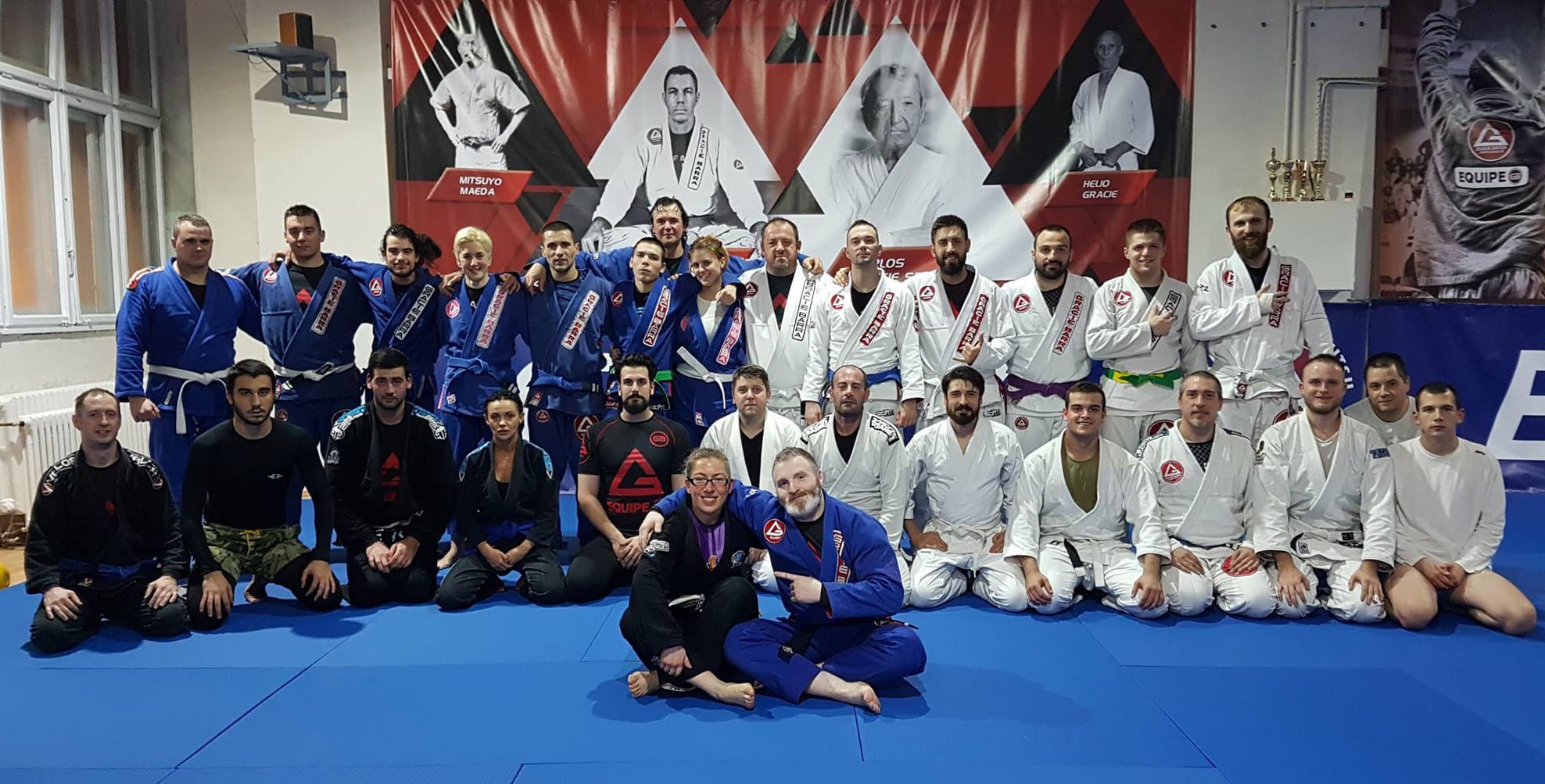
Introduction for Sabine
Hi Everyone! Some of you already know me from camps, training and seminars but for those that don’t – just wanted to take a moment to introduce and tell you a little bit about myself.
The Beginning
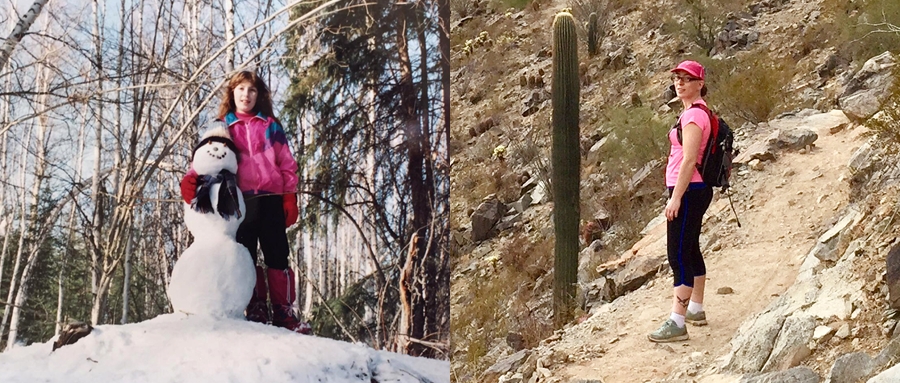 I was born in Belgium, but grew up in USA – first Alaska then Arizona. I think I’ve always had a bit of an adventurous streak. I can remember, from a very early age, reading with awe and admiration the stories of other travelers, and imagining what it would be like to go explore unfamiliar places myself.
I was born in Belgium, but grew up in USA – first Alaska then Arizona. I think I’ve always had a bit of an adventurous streak. I can remember, from a very early age, reading with awe and admiration the stories of other travelers, and imagining what it would be like to go explore unfamiliar places myself.
In 2015, I decided I wanted to get to know Belgian culture and my Belgian extended family firsthand. So, I quit my job, ended my apartment lease, sold most of my things, gave my car to my parents and moved to Belgium on a one way ticket!
It sounds so simple and fearless when stated like that, but the truth was – this was a HUGE first step for me! It wasn’t without planning though – I spent almost the entire previous year saving up funds for the upcoming trip. Having family there was immensely helpful and reassuring as well. I’d been to Belgium a couple of times before on family vacation trips, so it wasn’t a completely unknown destination.
Still, this was more than just a short vacation. There were many moments of extreme doubt when I questioned every aspect of the decision to move. It’s difficult to leave the security and comfort of a familiar and stable routine in favor of the unknown. But, it’s also very exciting. And, a part of me felt that I just had to go. Even if it ended disastrously, I knew without a doubt that the regret I’d feel for not having had the courage to pursue this dream would have haunted me for the rest of my life.
I look back on it now as one of the best decisions ever made.
BJJ Begins!
For the previous 10 years or so, I’d been a somewhat athletic person, trying a variety of sports from yoga to indoor rock climbing to jogging to power lifting, all of which I enjoyed to some extent.
I first heard about jiu-jitsu from a friend who was practicing the sport, and talked about it constantly. It piqued my curiosity enough to look up a gym in my city and try an intro class – I was instantly hooked!
Shortly thereafter, I booked my first Globetrotter Camp (Leuven 2017) which through pure amazing luck was located just an hour away by train from my home! I had some second thoughts about the wisdom of attending a multi-day training camp without knowing anyone, being a somewhat shy and introverted person, and still being so new to BJJ. But, I ended up having the BEST time!
I really can’t say enough good things about my experience at the Globetrotter Camp. The training, organization, and venue were wonderful, but what made the biggest impression on me was the people involved. From the moment I arrived, participants and organizers were friendly, welcoming, and excited to train regardless of age, gender, rank, gym affiliation, language or nationality. It made me realize that BJJ was much more than a casual sport – it was a passion that connected people from all paths of life, an entire community!
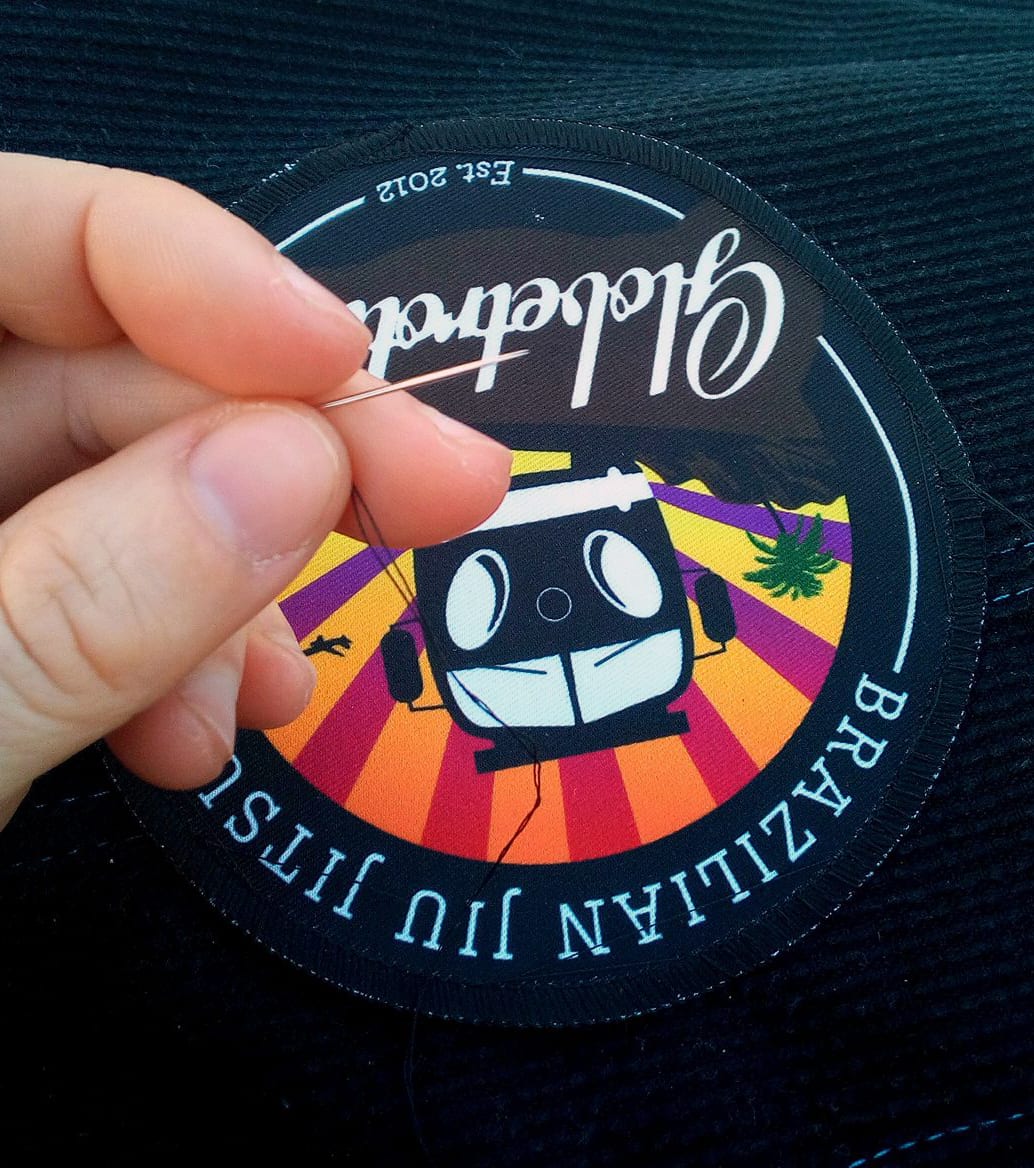 In regards to traveling, BJJ is one of the big unifying factors of my trips. With every new location, everything might change – my home space, the neighborhood, the people around me, the food, the language, the currency, the climate, the culture etc. but despite all this – the experience of training BJJ remains very much the same. Every new destination only feels foreign until I step on the mats then, with a fist bump and a smile, it suddenly feels like home again.
In regards to traveling, BJJ is one of the big unifying factors of my trips. With every new location, everything might change – my home space, the neighborhood, the people around me, the food, the language, the currency, the climate, the culture etc. but despite all this – the experience of training BJJ remains very much the same. Every new destination only feels foreign until I step on the mats then, with a fist bump and a smile, it suddenly feels like home again.
A New Adventure
While living in Belgium, I had the opportunity to visit many of the neighboring countries in Europe for short trips, sometimes solo and sometime with friends. These countries included France, Netherlands, Germany, Portugal, Italy, Hungary, Slovakia, the United Kingdom, Malta, Cyprus, and Ireland – all of which further increased my love of traveling and desire to experience different cultures.
Towards the end of 2018, I took the very big step of leaving behind a fixed location in favor of slowly traveling the world for the upcoming year, relocating every couple weeks/months.
The Plan
I’ll be returning to USA to visit family December/January (as I do every winter), then plan to begin exploring the Asian countries early 2019. My past travels have been largely restricted to Europe, so I expect this to be quite different than what I’ve experienced before. I’m still in the process of researching logistics, but will probably start with Bali then country-hop from there, returning to Europe for the big BJJ Globetrotters Germany Summer Camp in July/August!
My criteria for choosing a location is loosely as follows (not in priority order): good public transportation system, has stable fast wifi, reasonably cheap, reasonably safe, has at least one place to train BJJ, and has decent weather/climate (I hate the cold). Of course, not every destination will meet all of these points, but these are my general guidelines.
As I’m budget traveling, great deals on flights and accommodations might mean choosing some unexpected locations, which I think is a great opportunity to visit a place I possibly wouldn’t have otherwise considered. Of course, I’ll be training in every city, with the goal of visiting 200 BJJ gyms around the globe! I’m still very much in the process of learning the ropes of traveling and living this way, so will undoubtedly learn a lot in the upcoming year. Besides BJJ, my interests include art/graphics, nature, beautiful spaces, animals, and desserts. Therefore, you can expect future posts to touch on some/all of these of these topics to some extent.
So… cheers to the adventure, new experiences, and to the ongoing BJJ journey! Hope to see you on the mats :)

